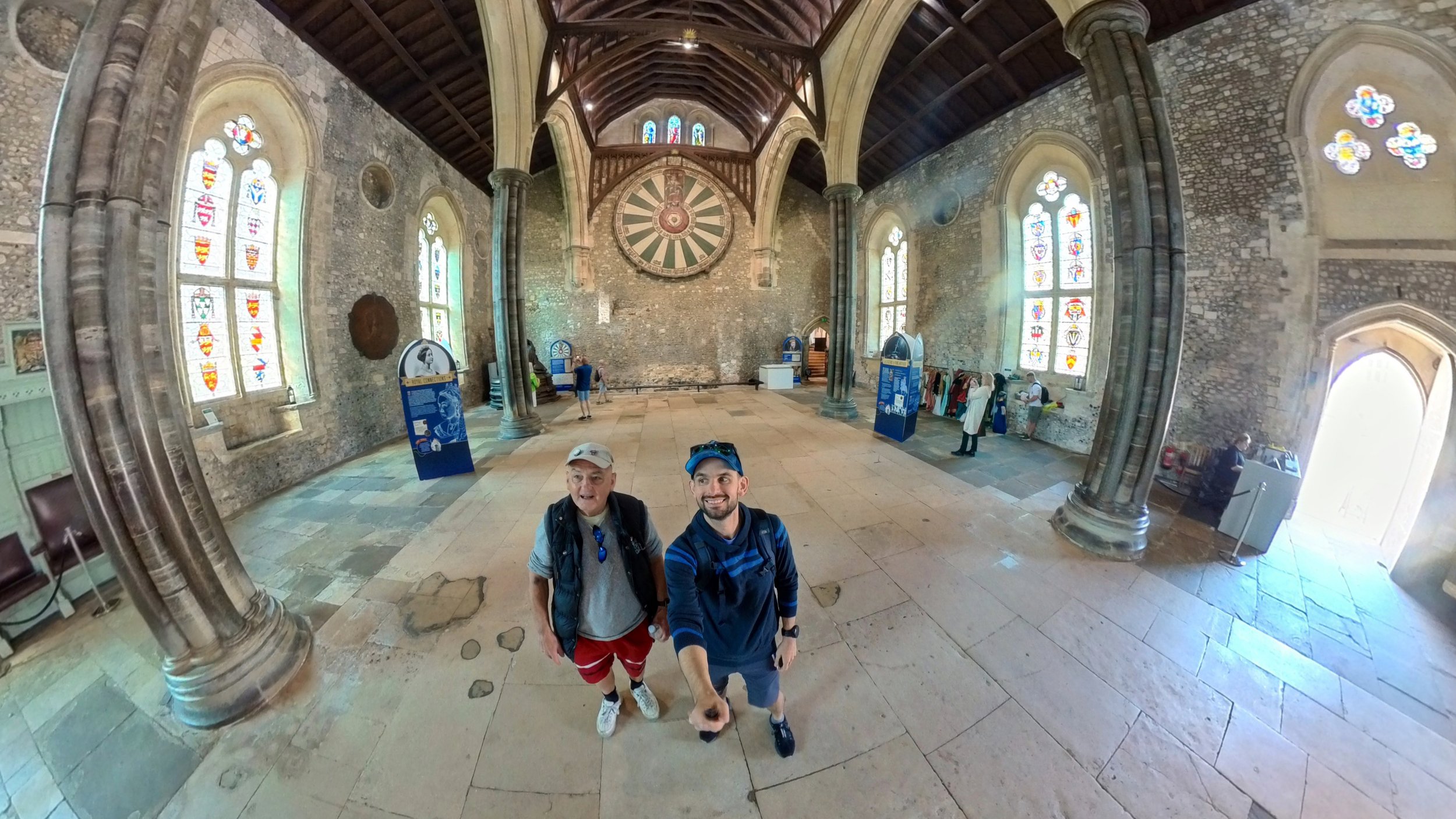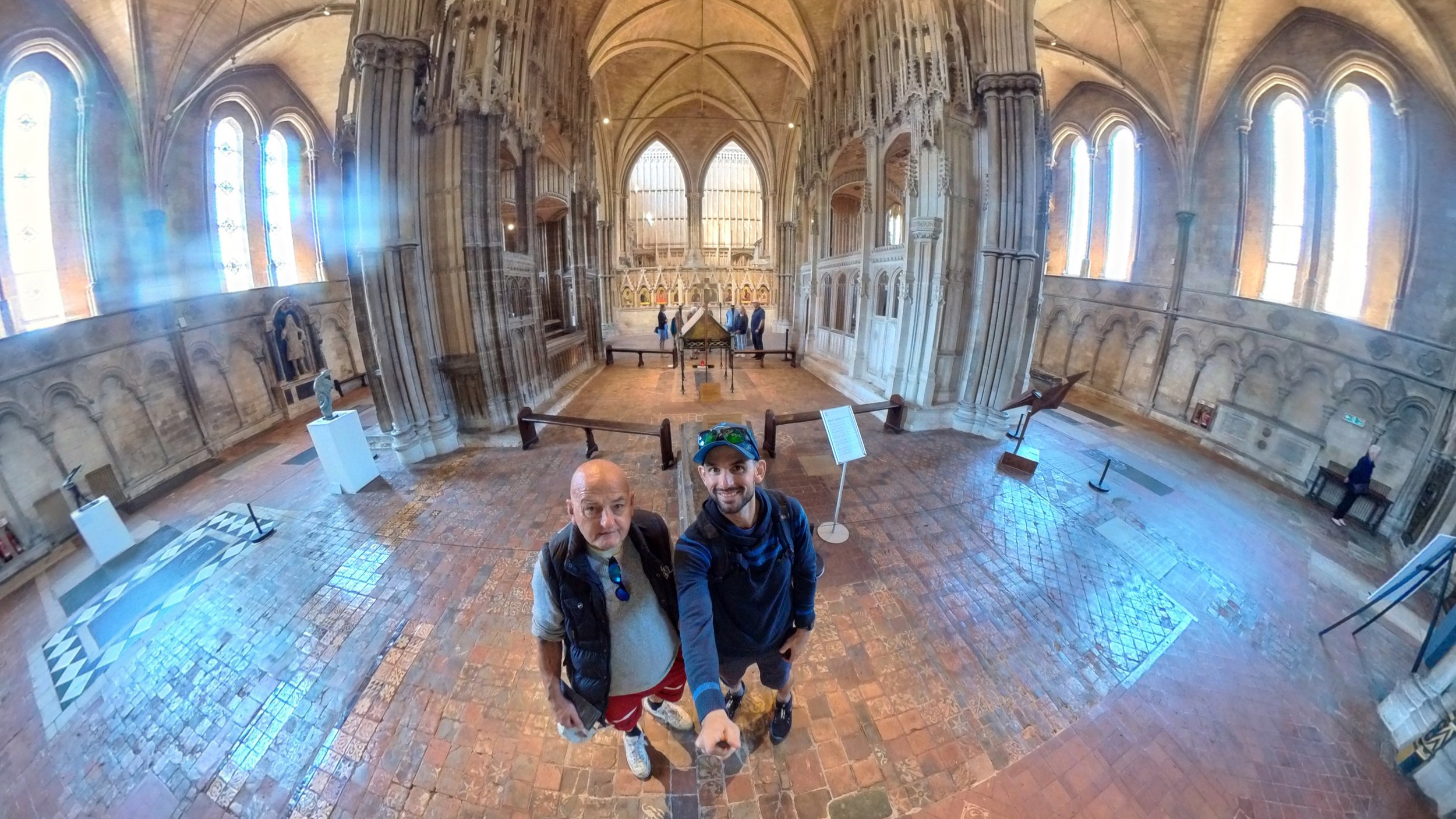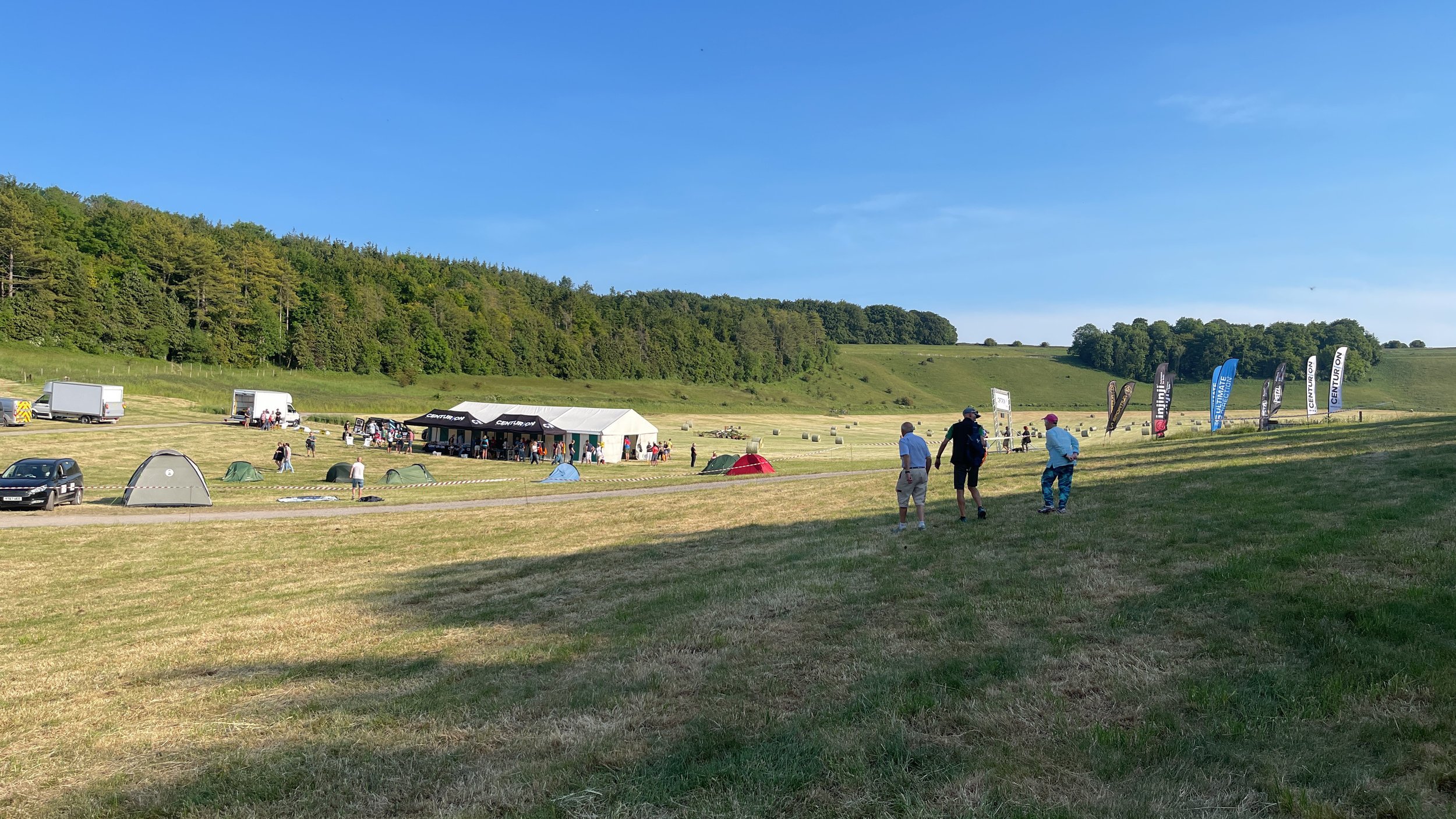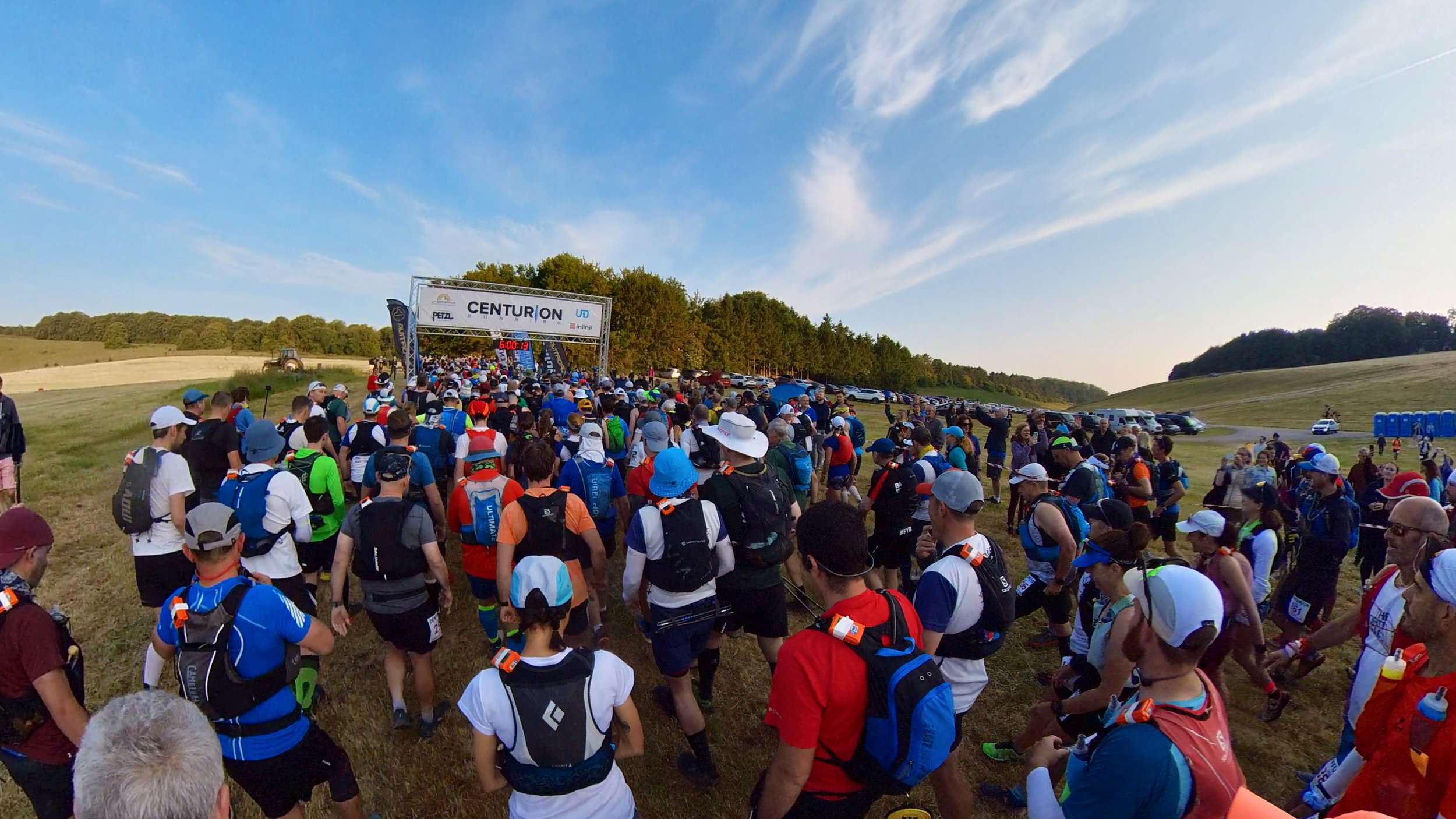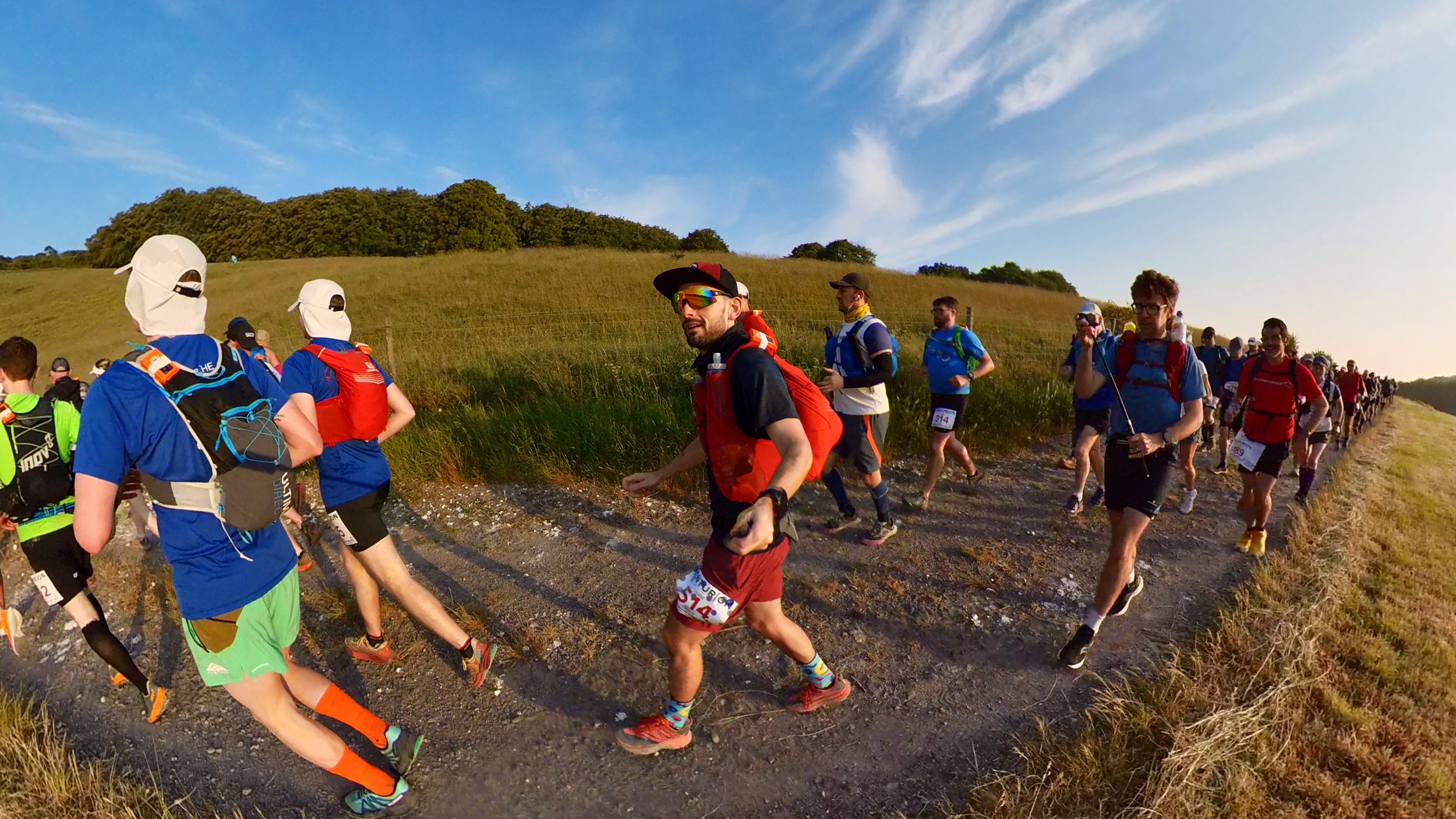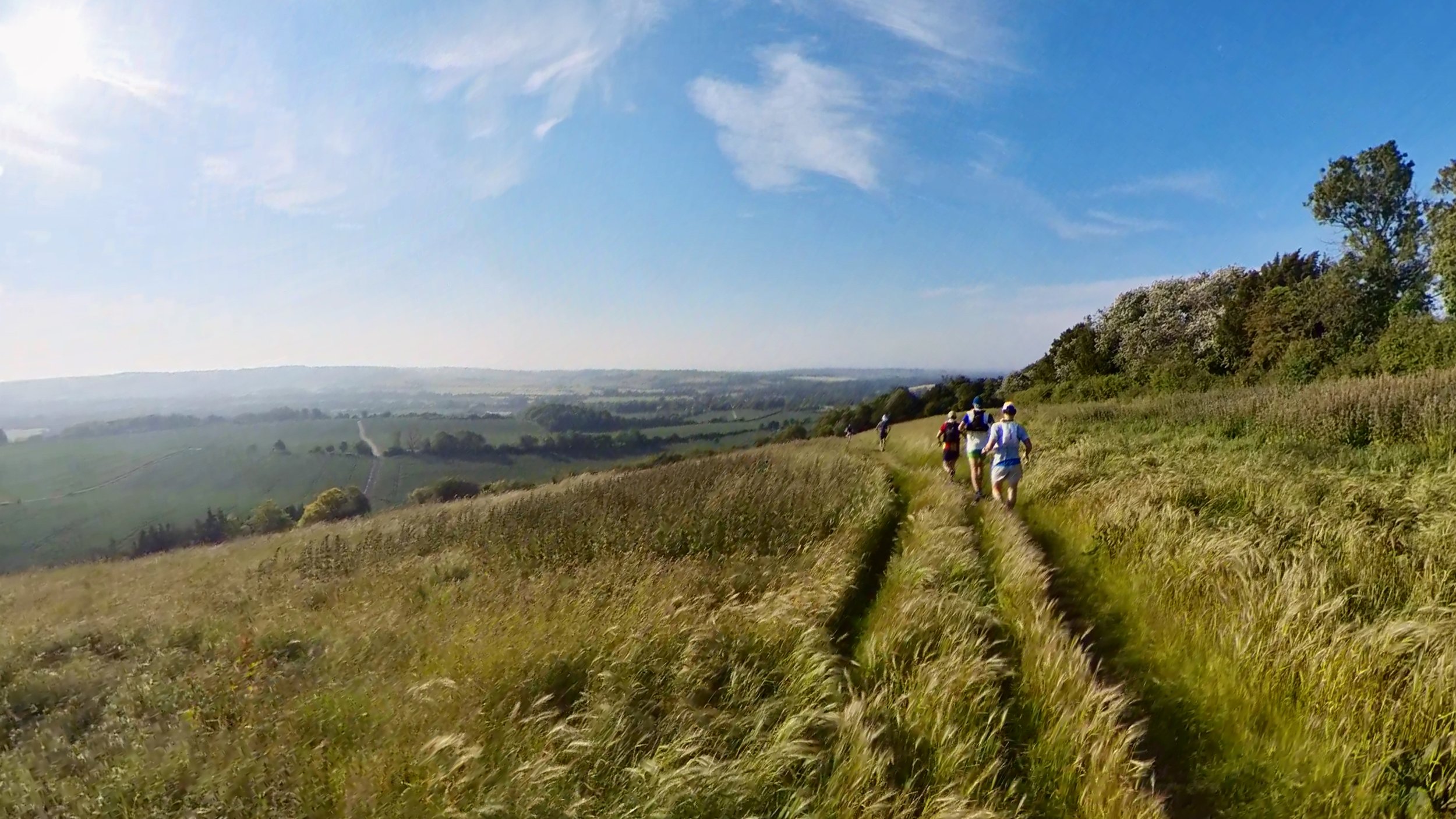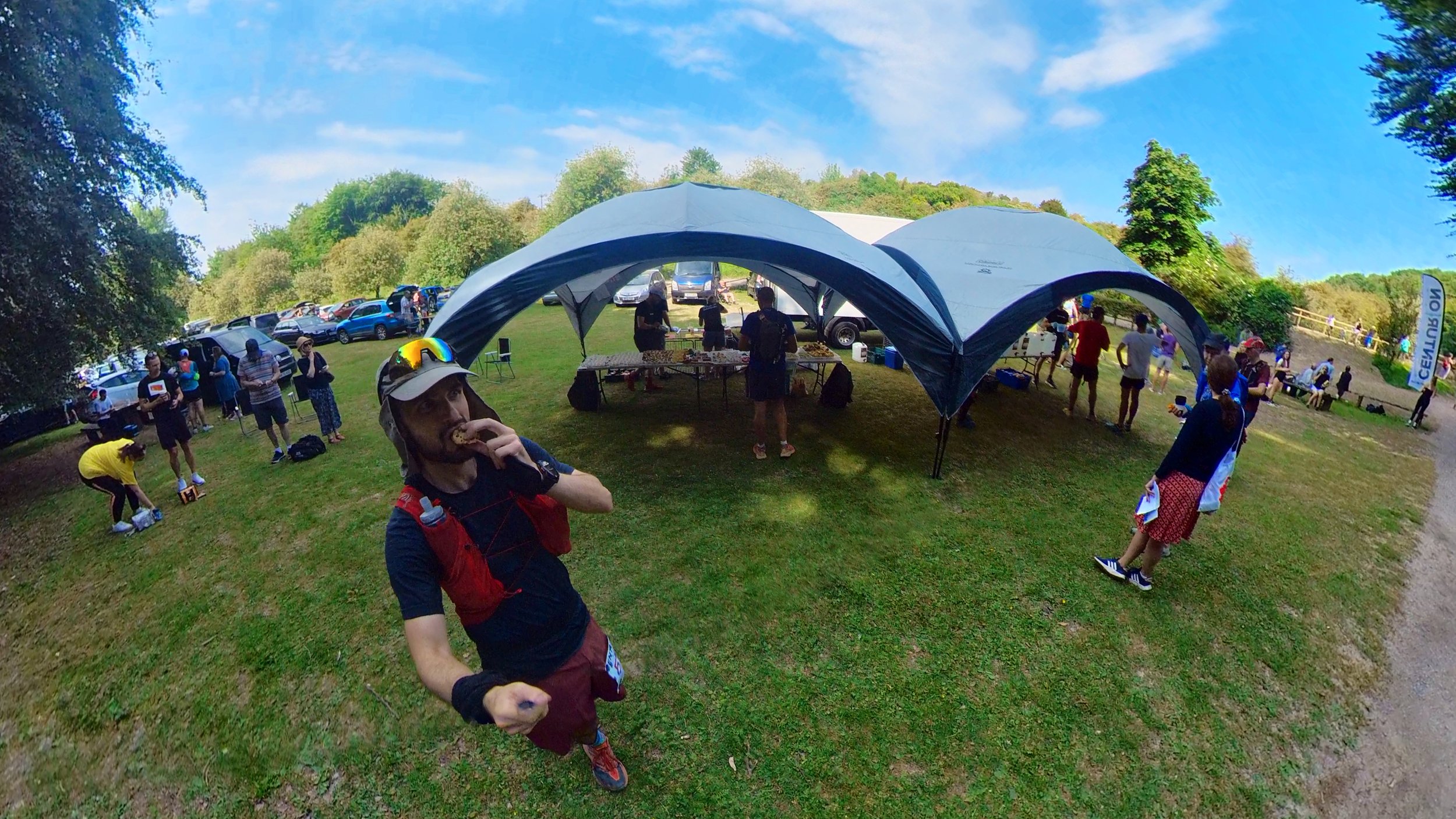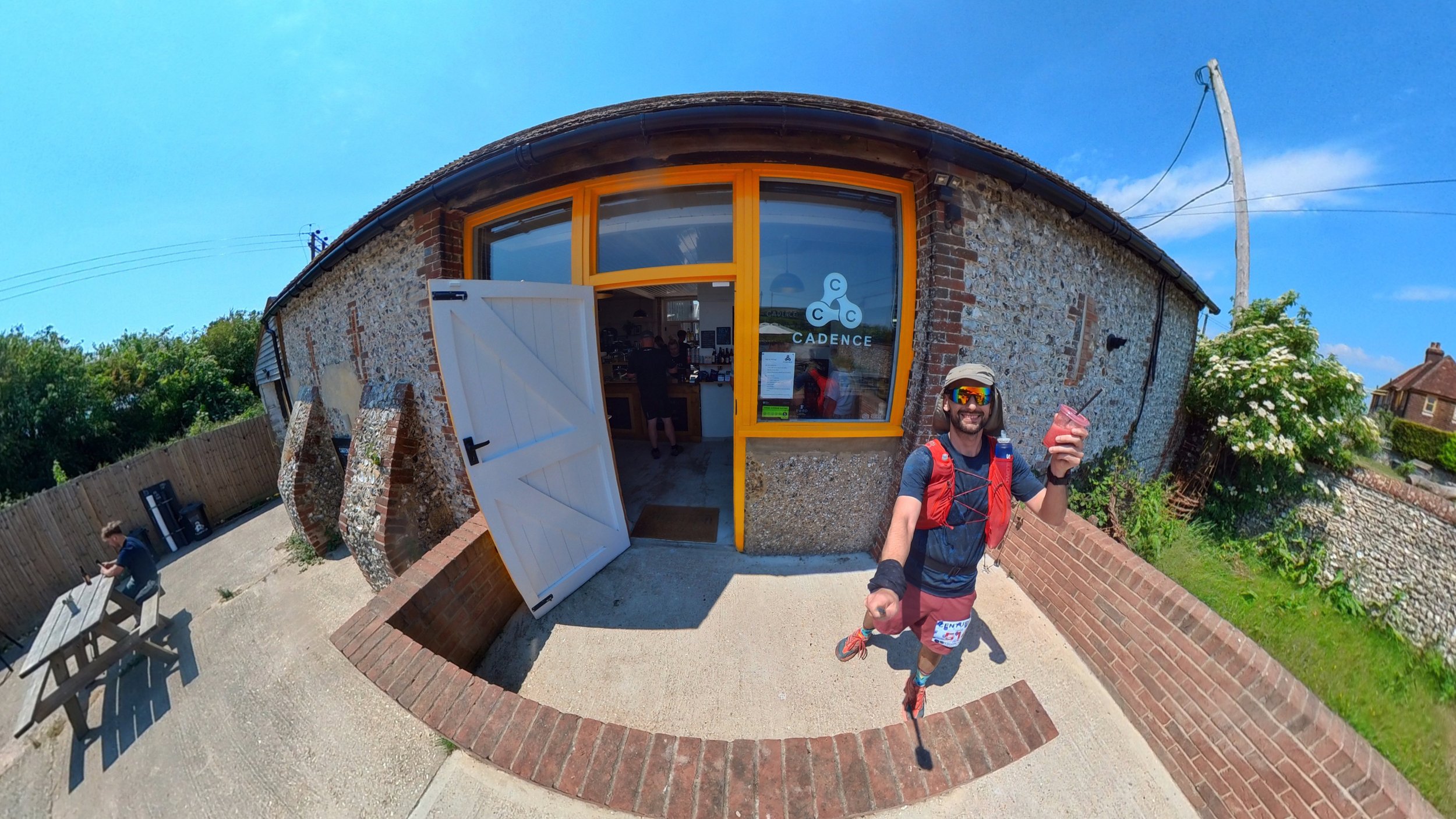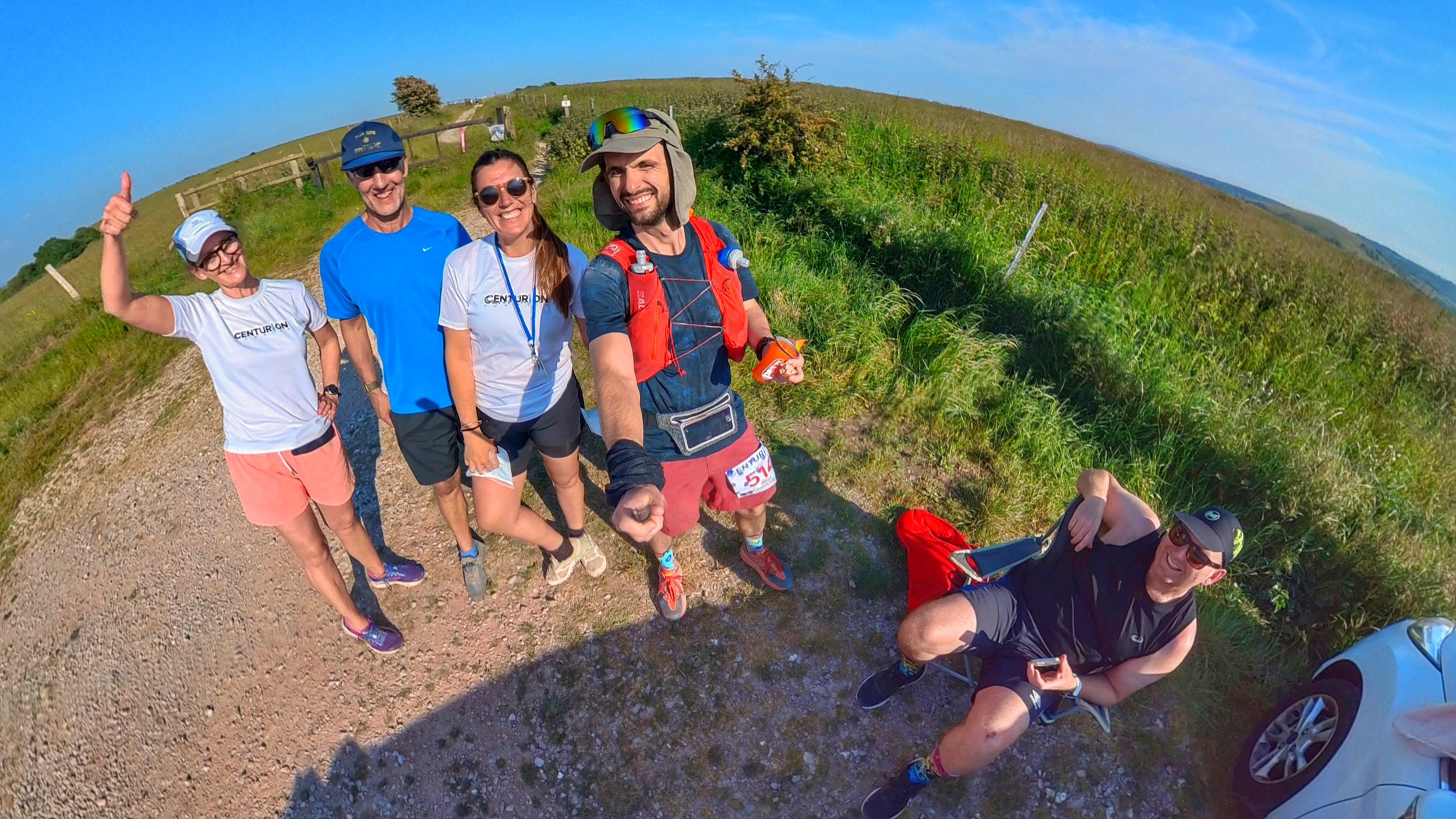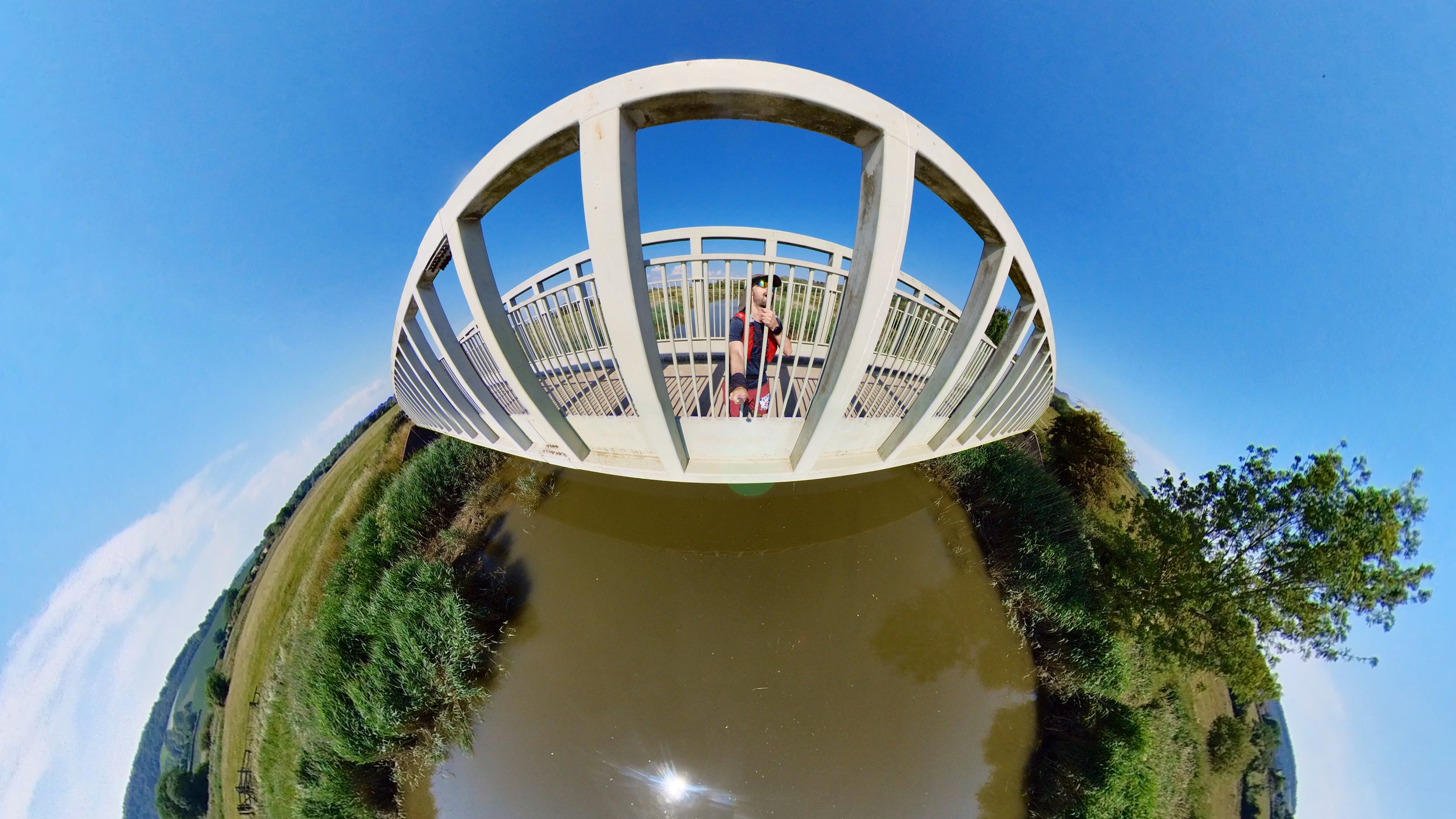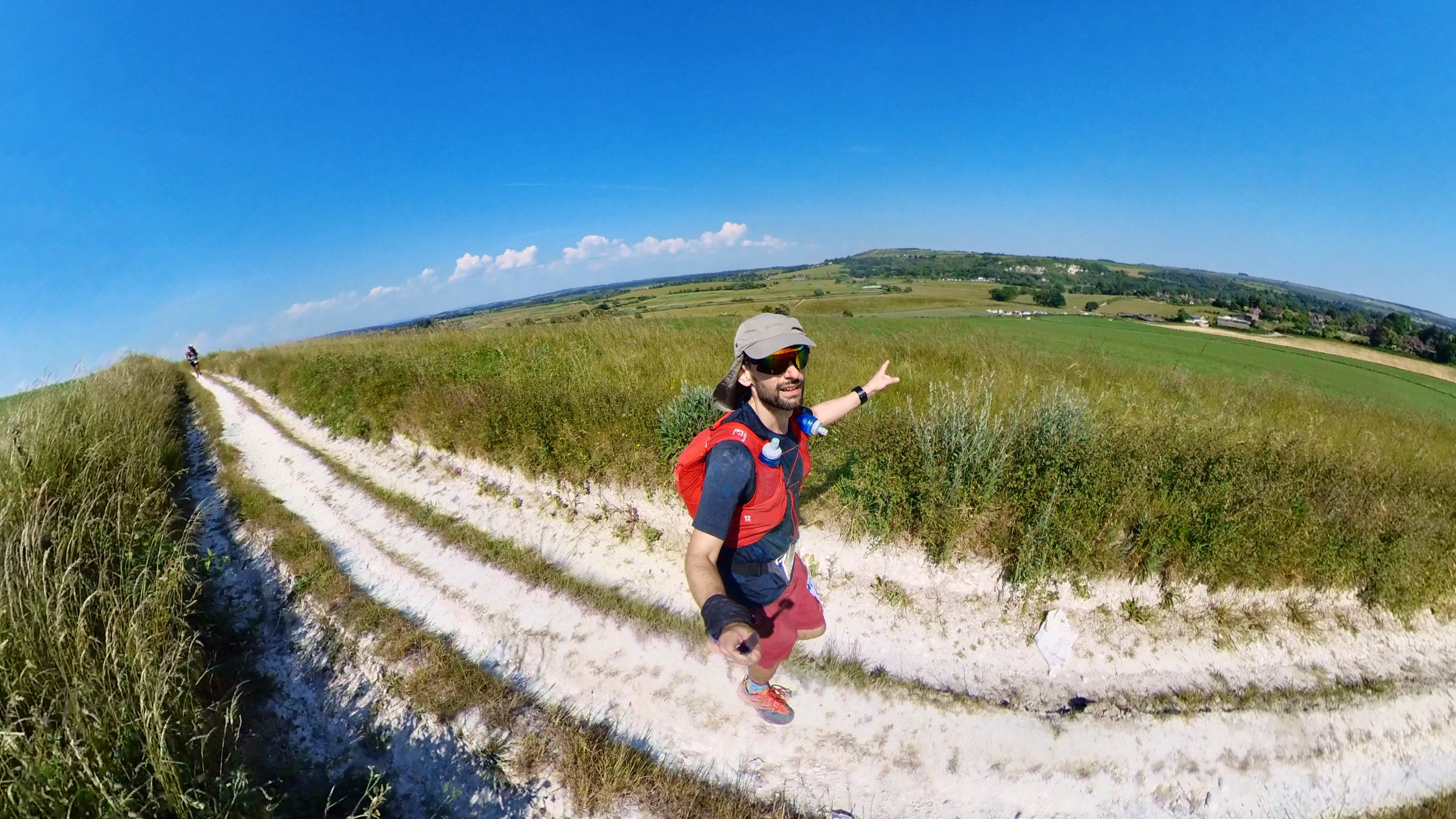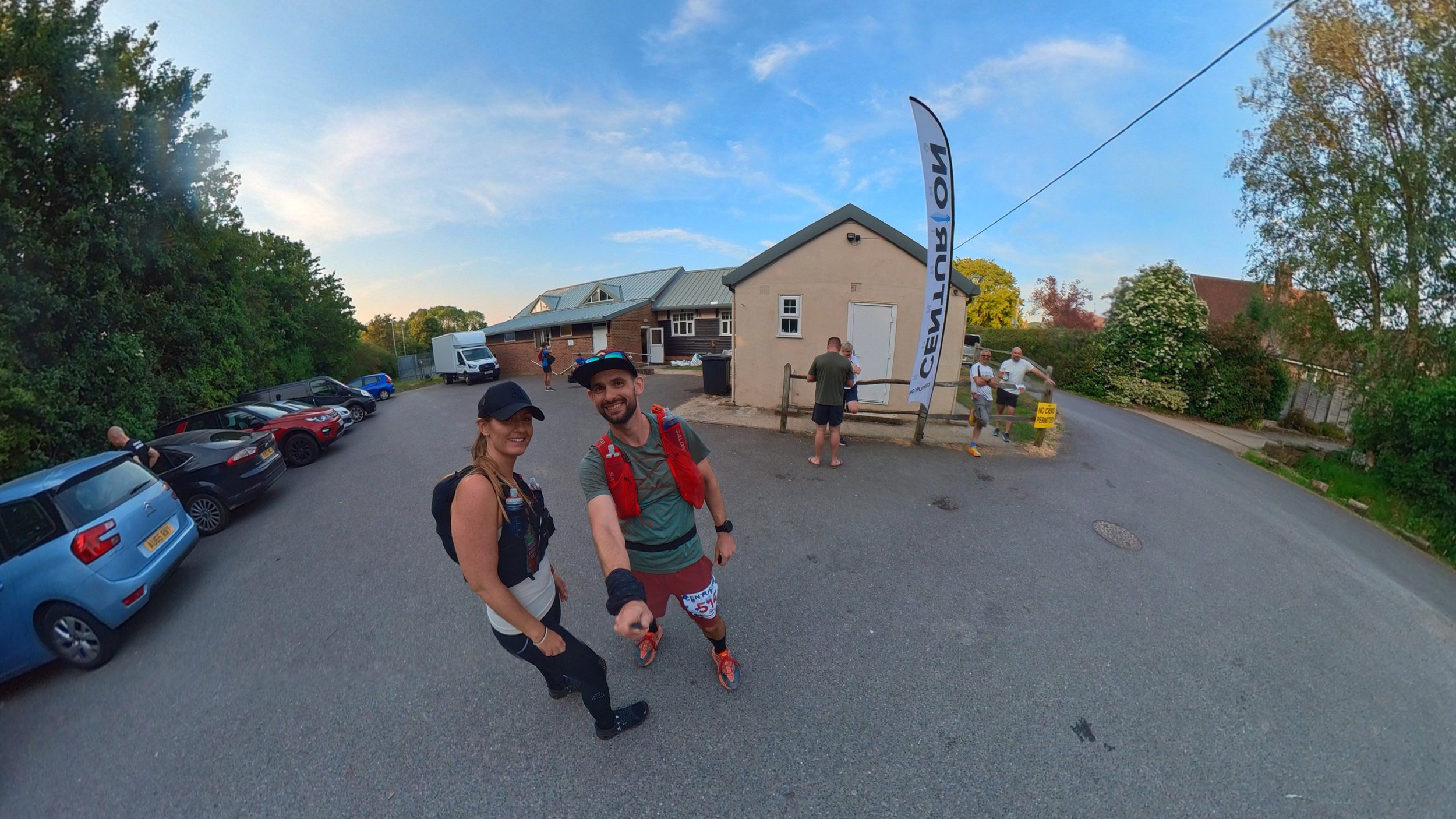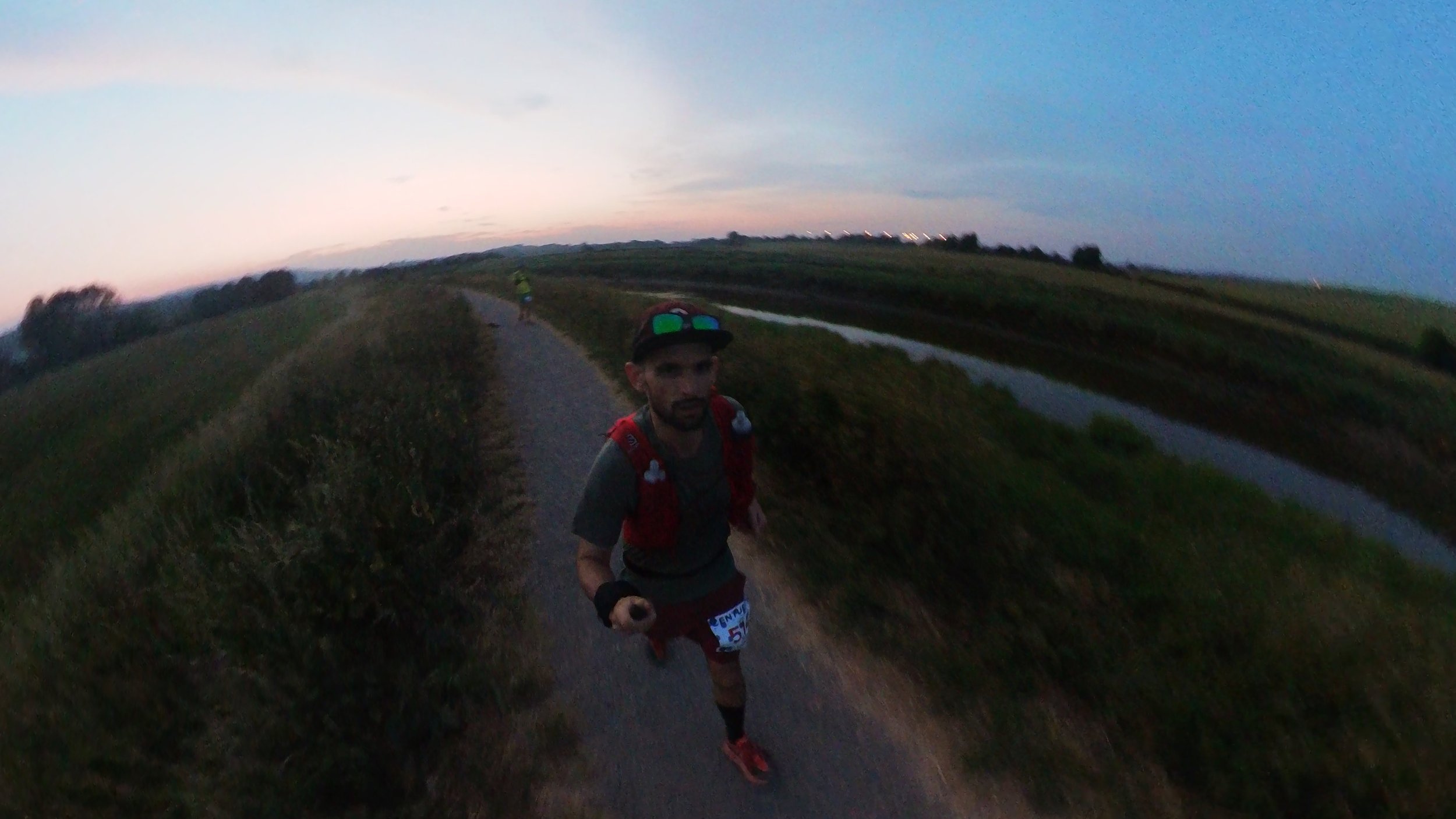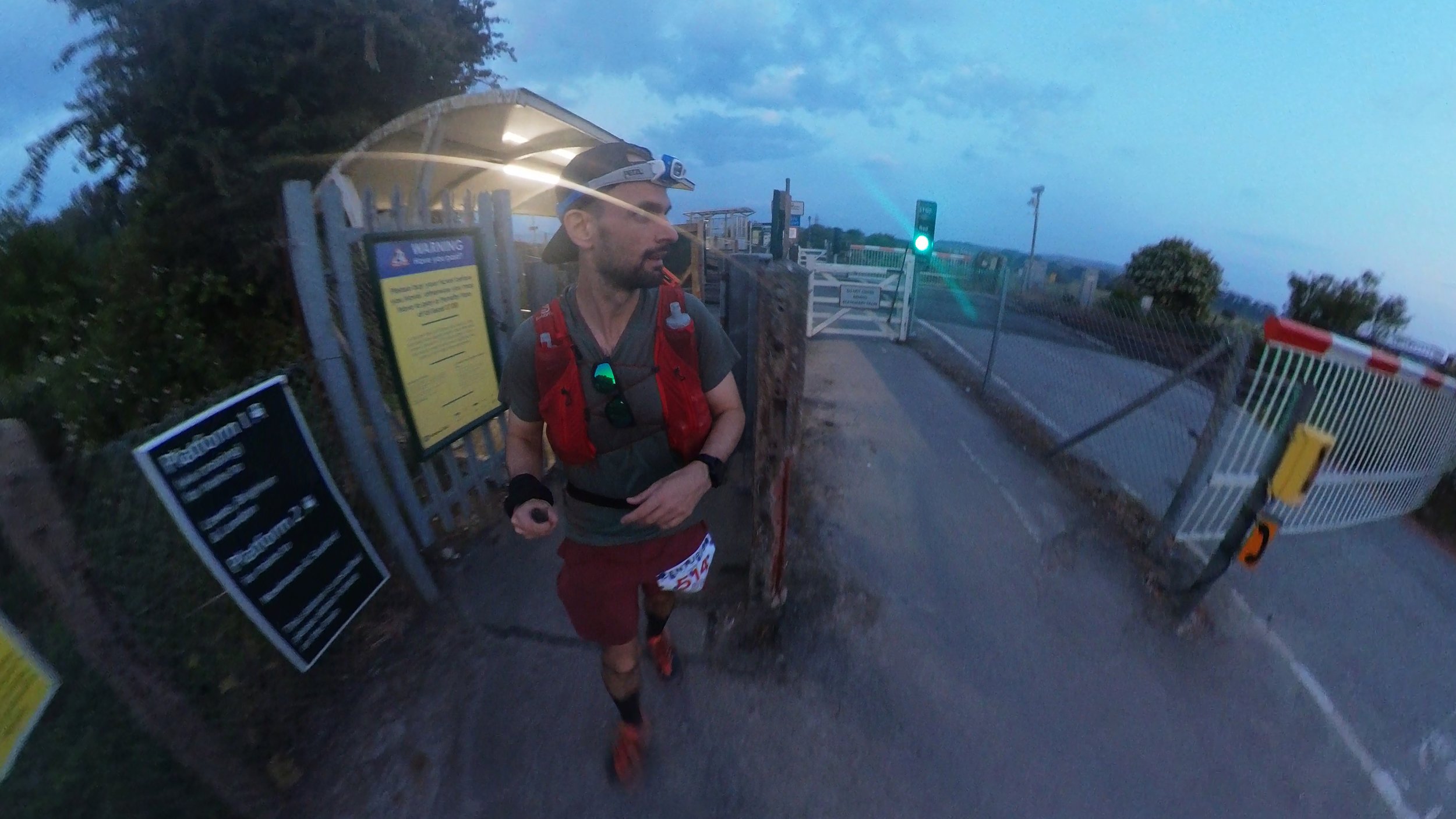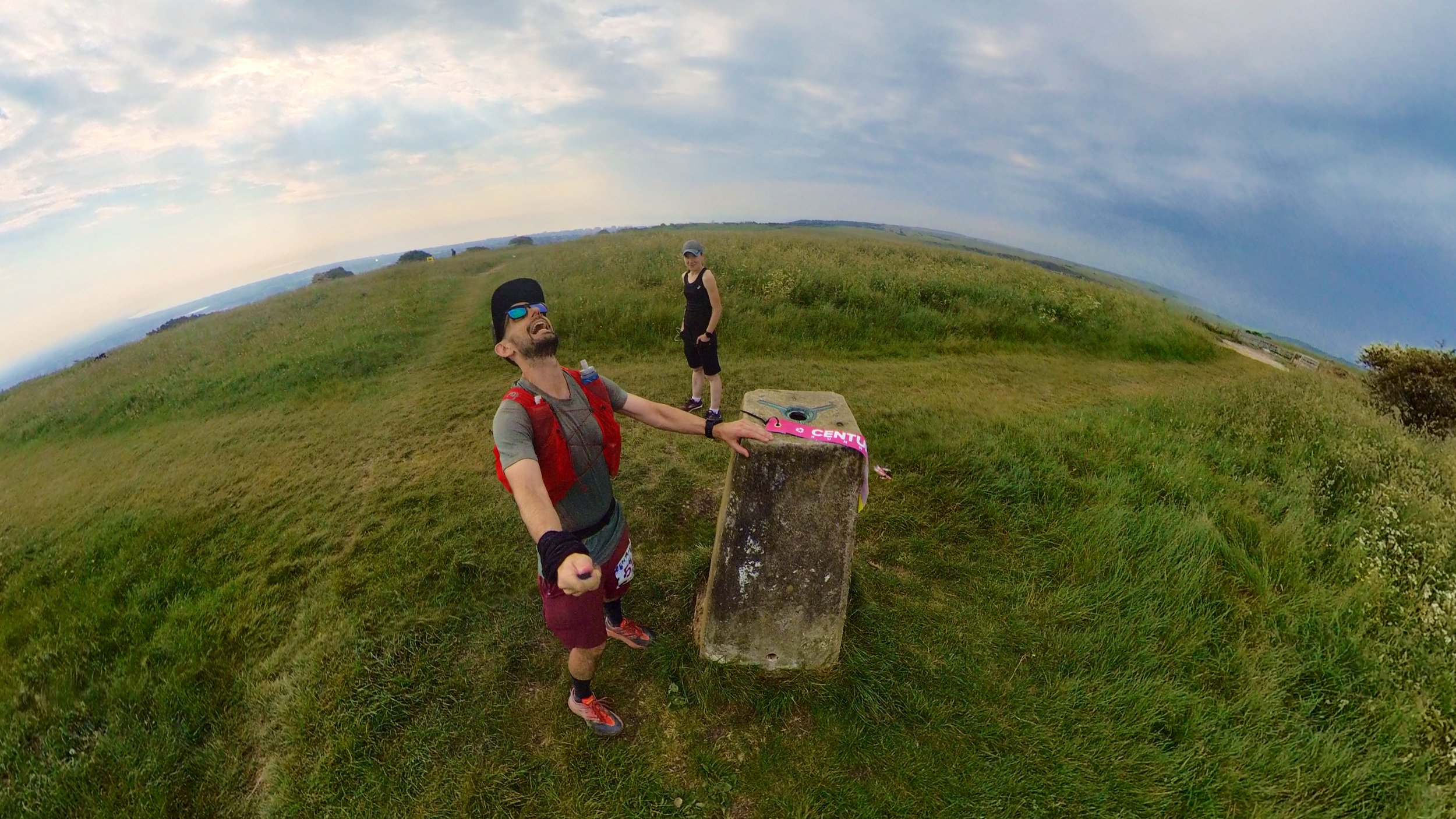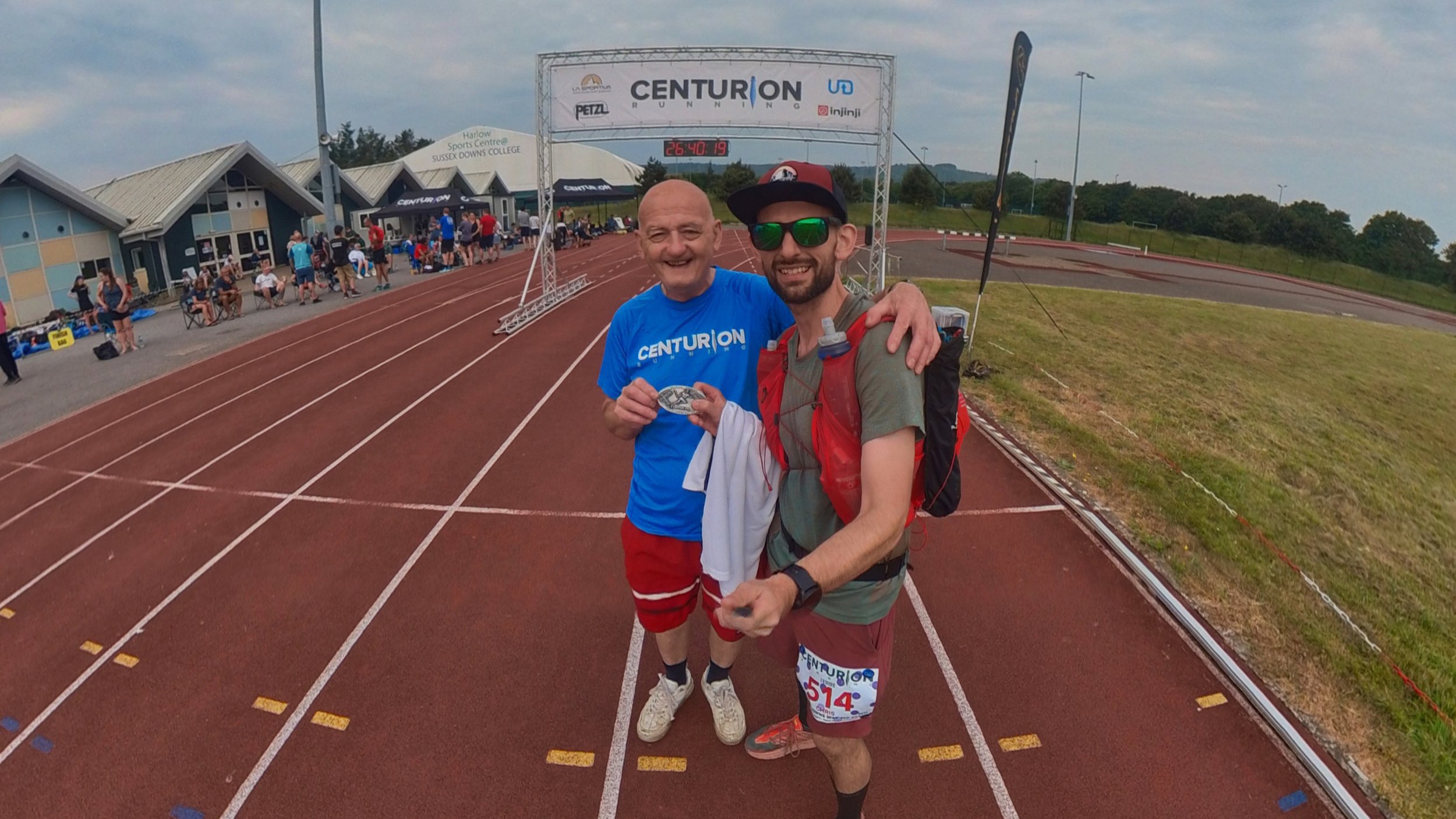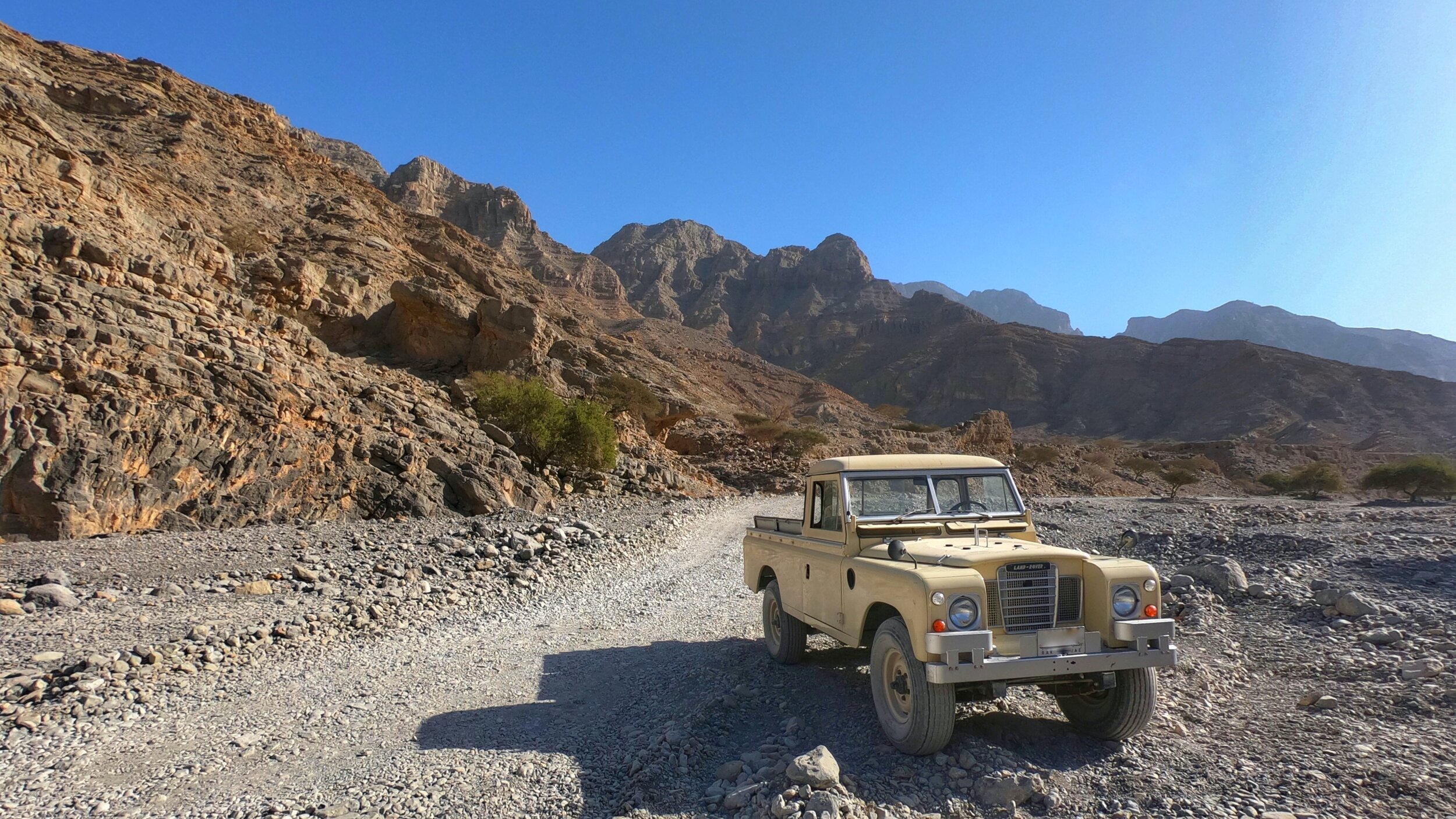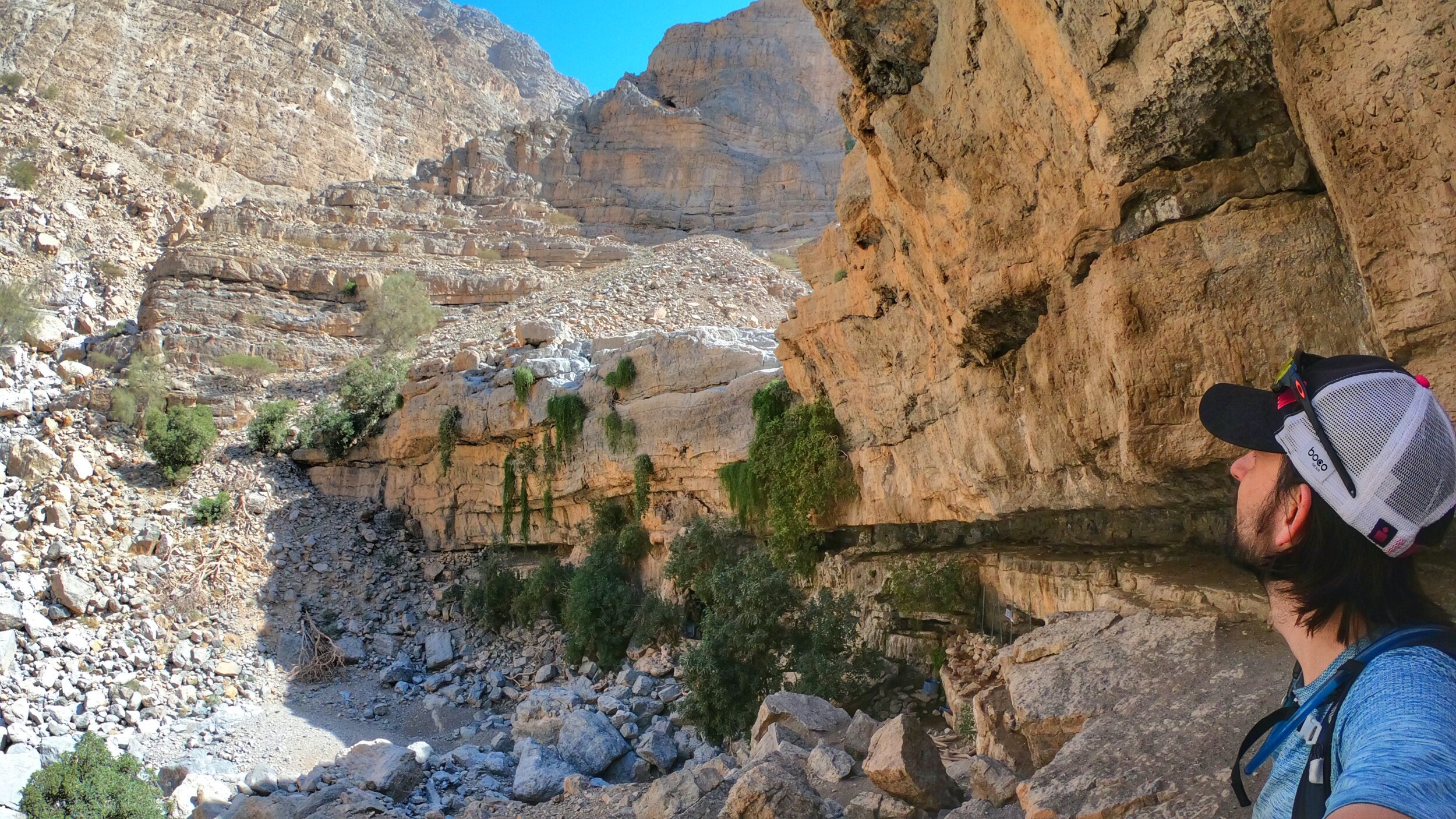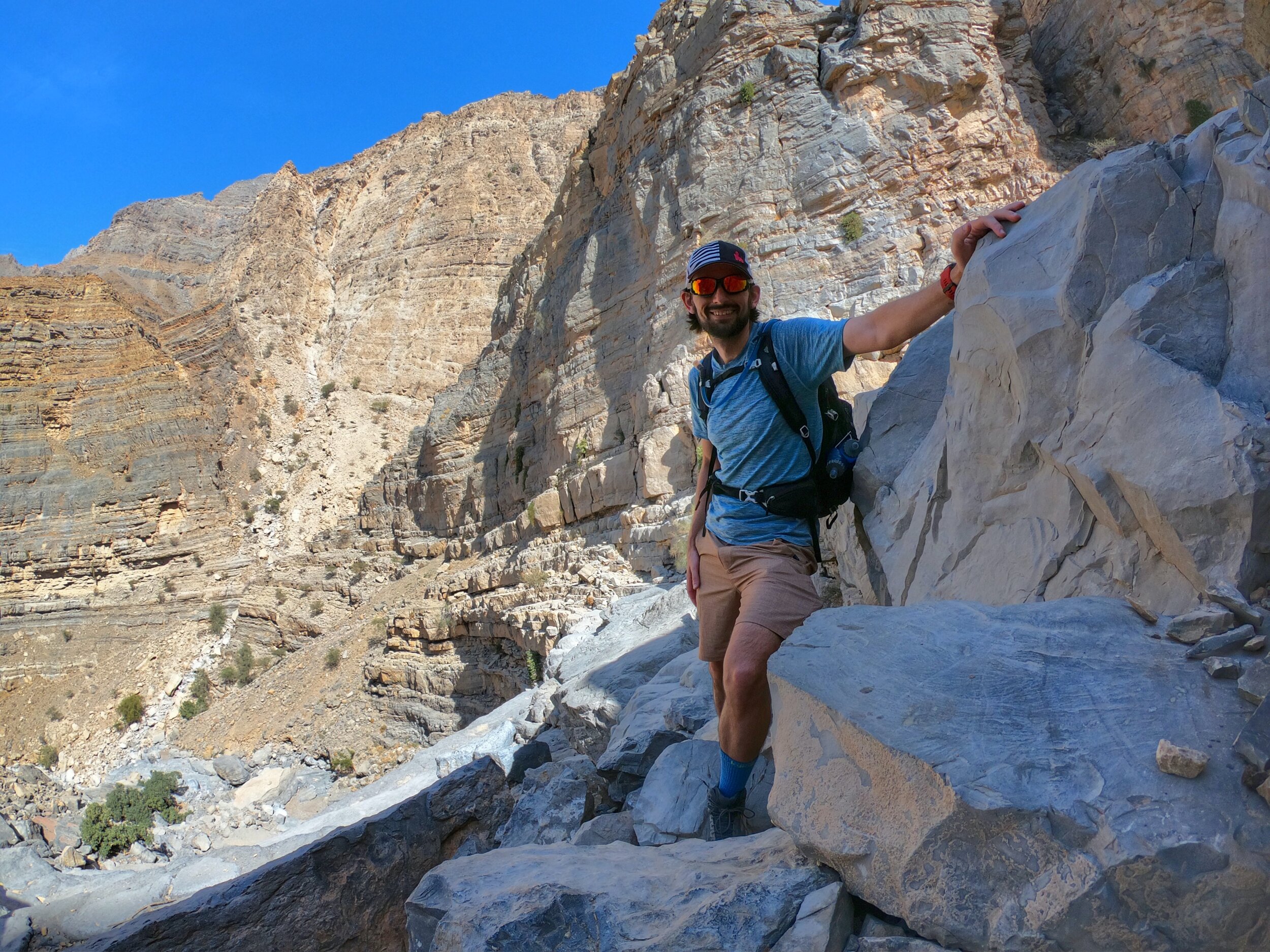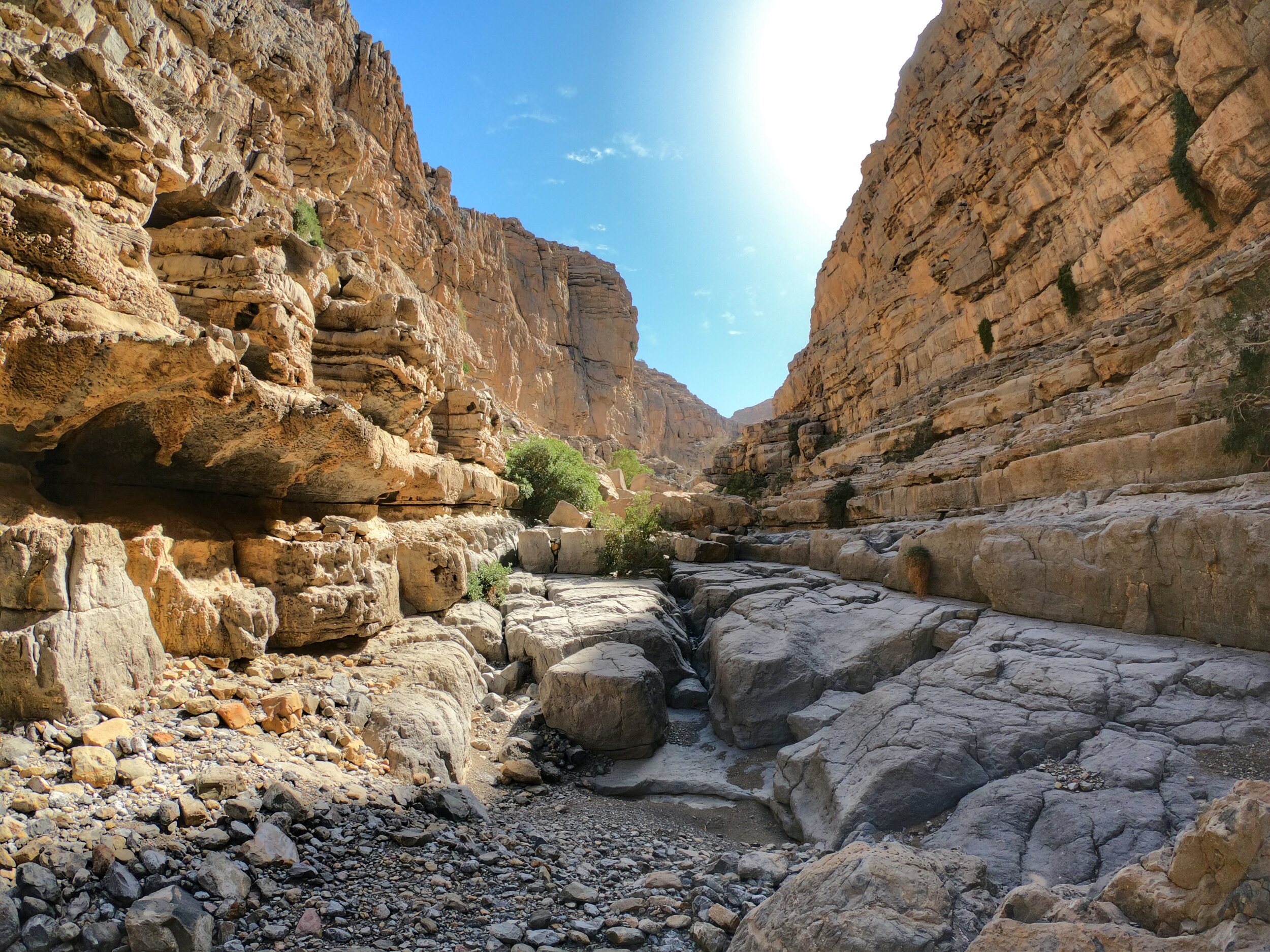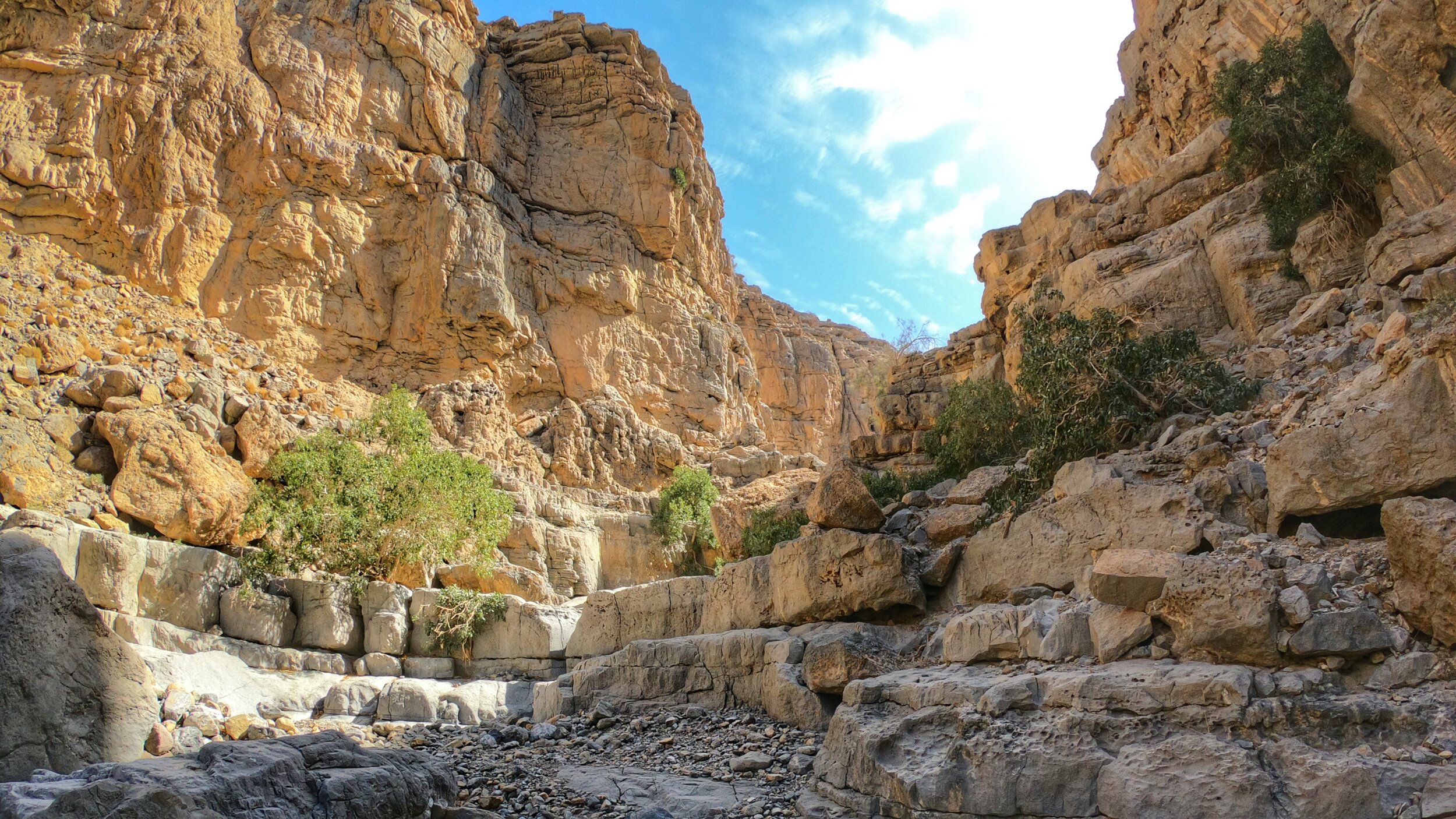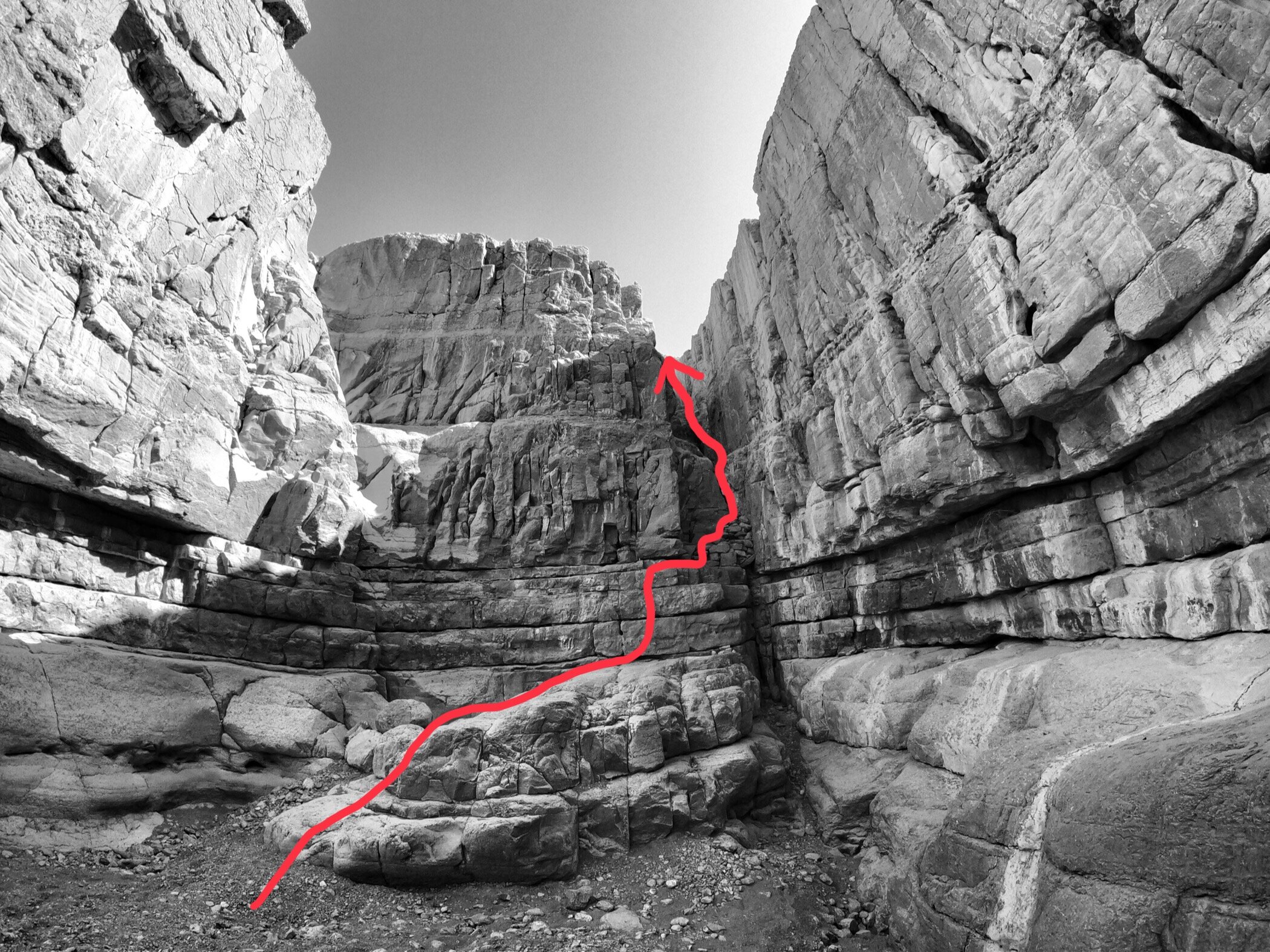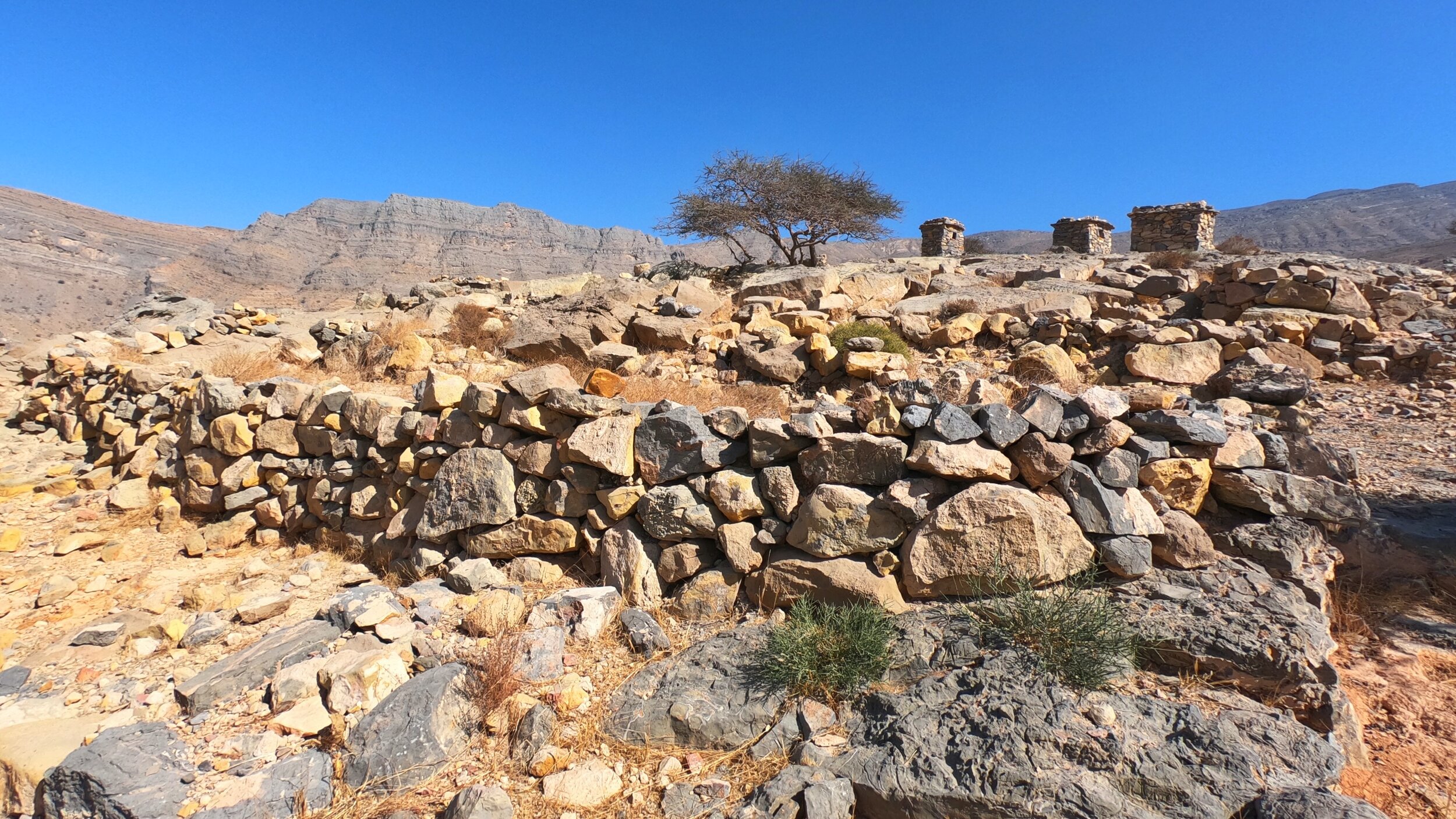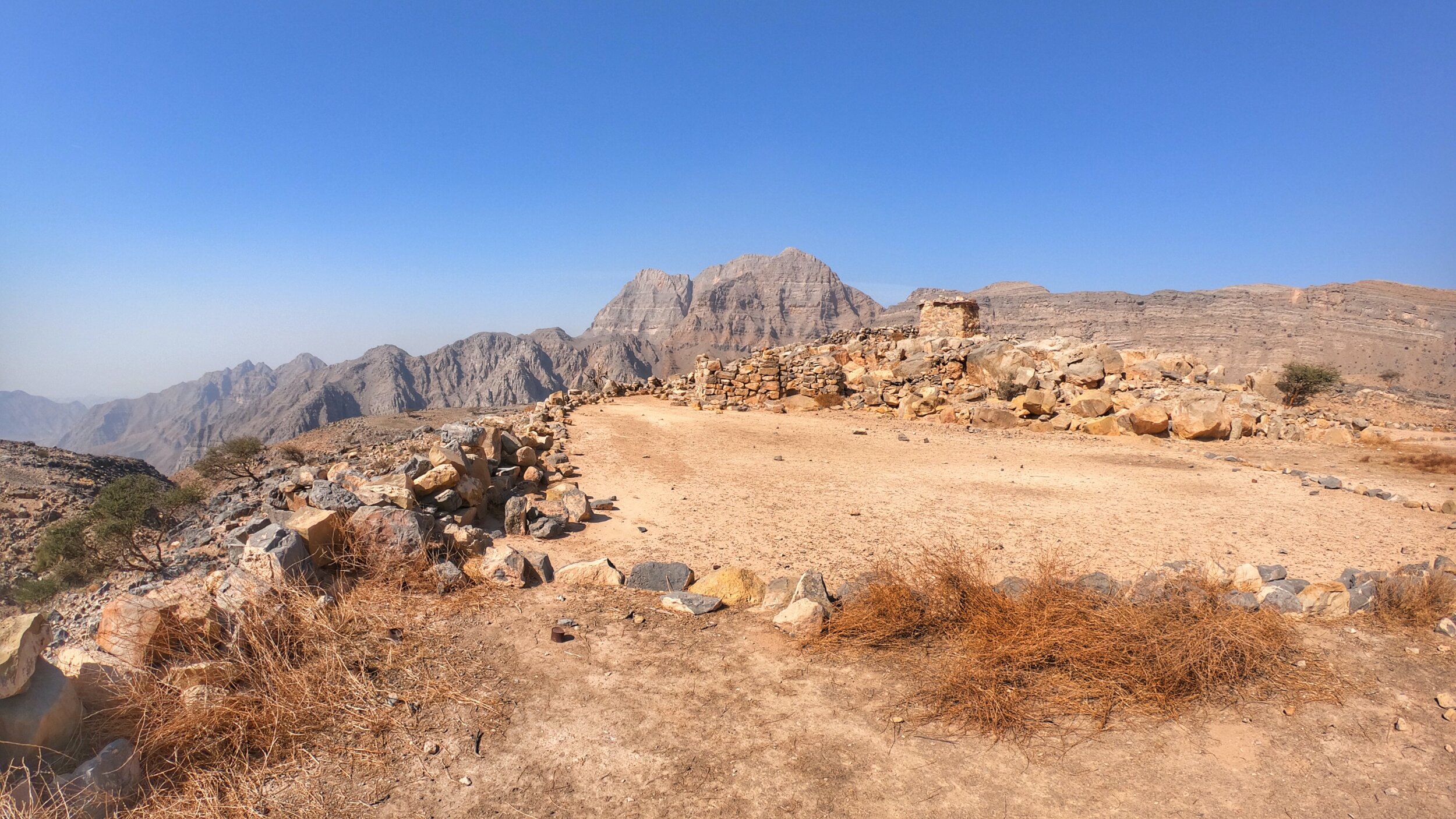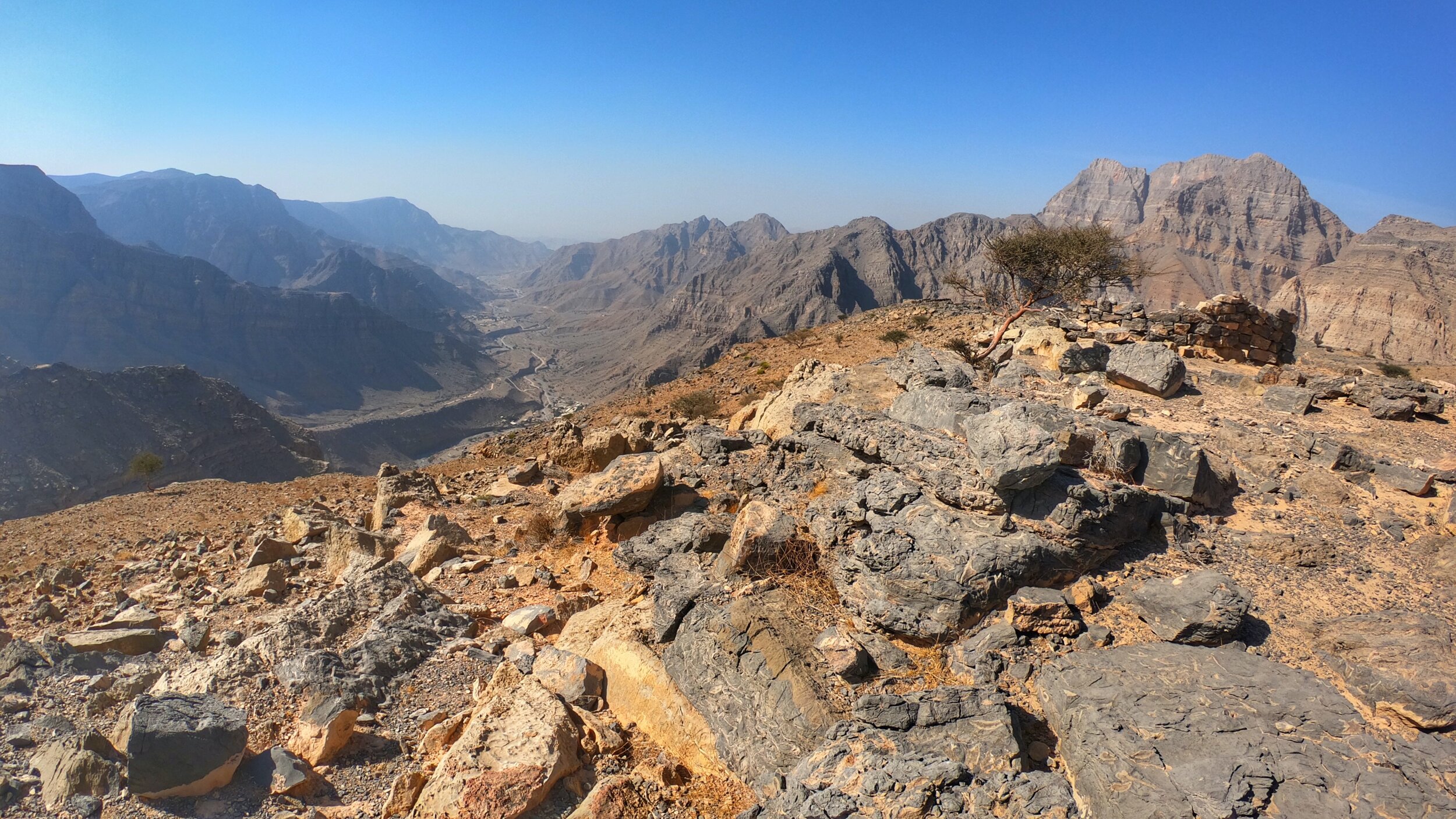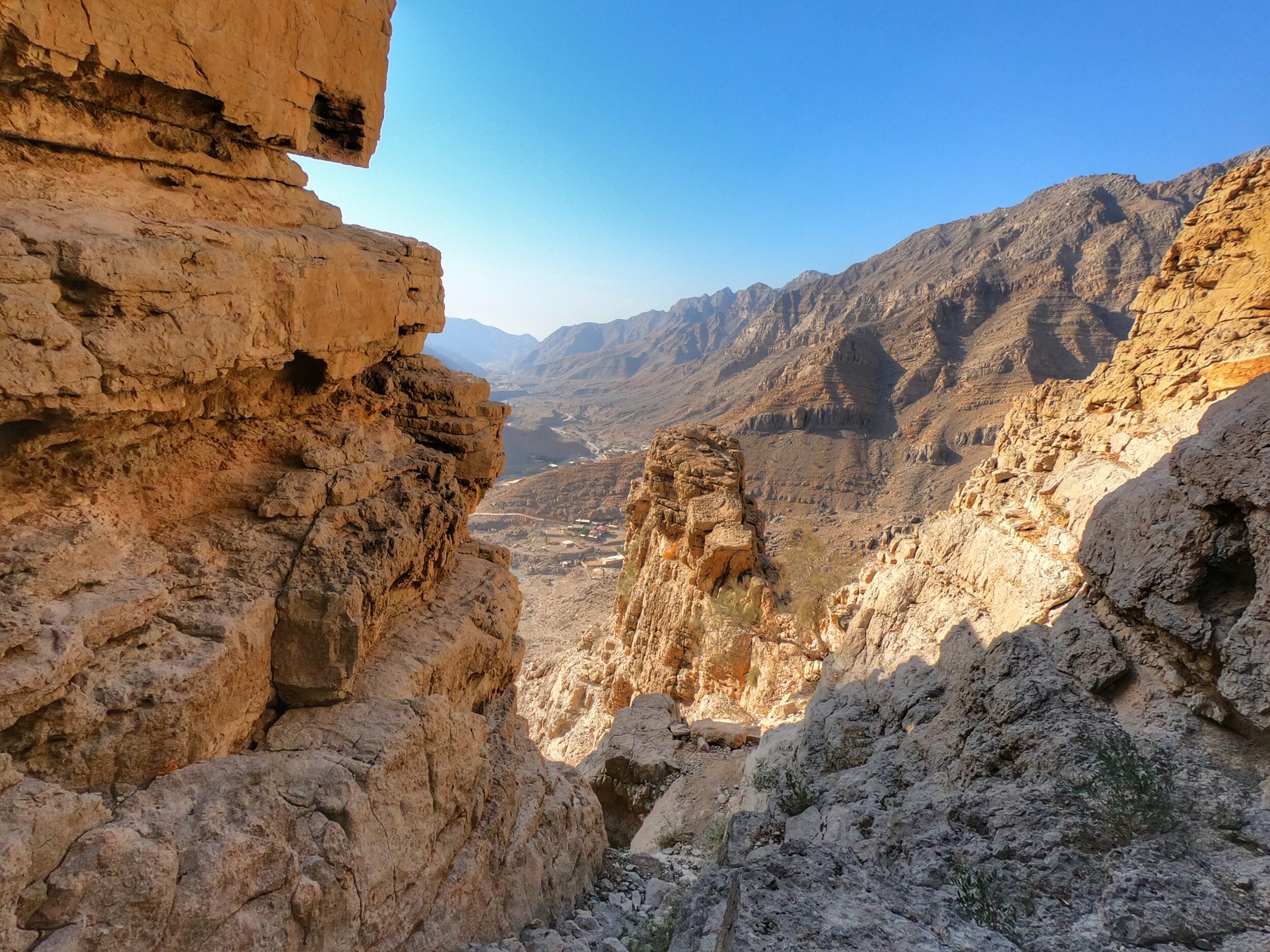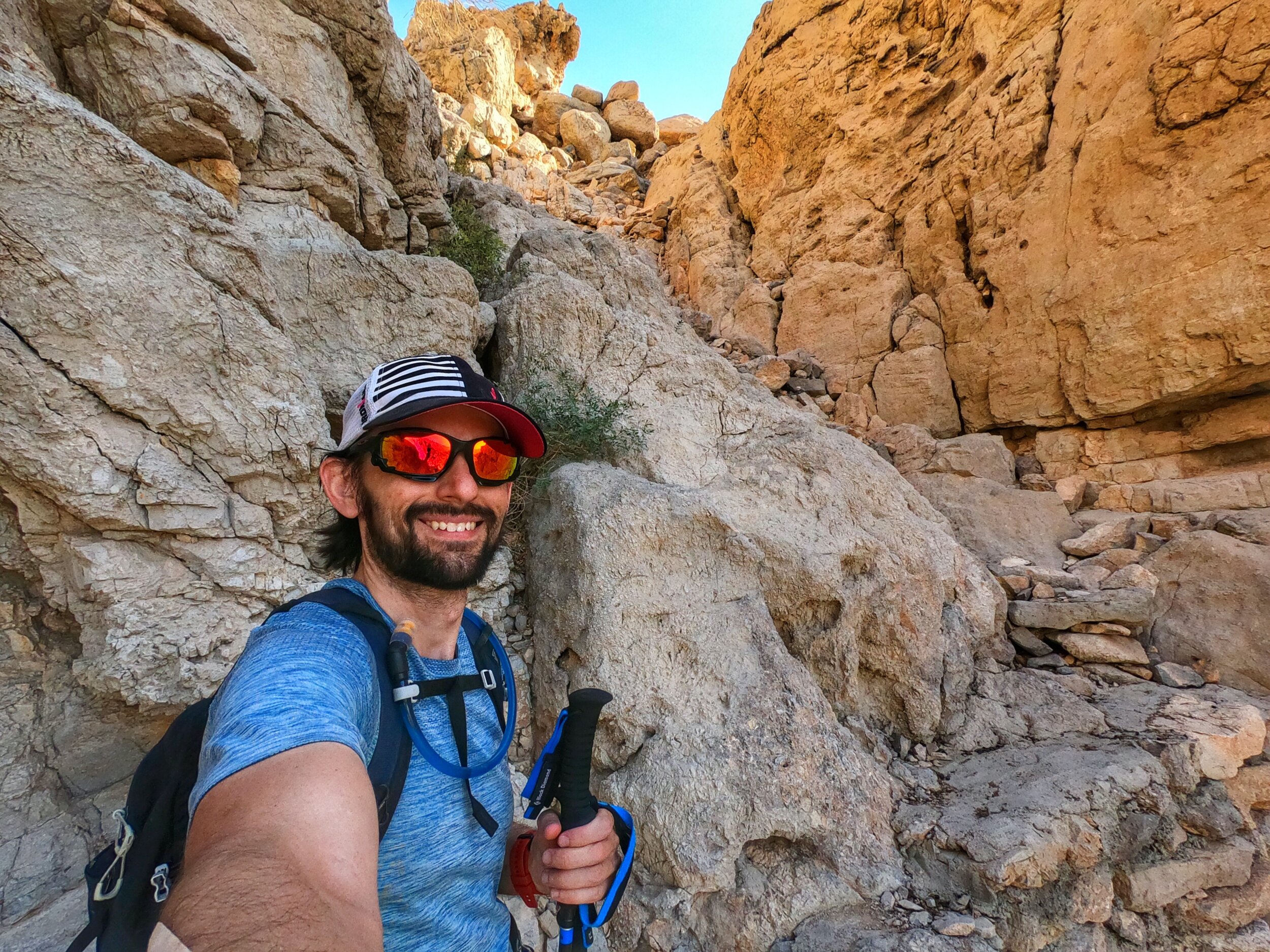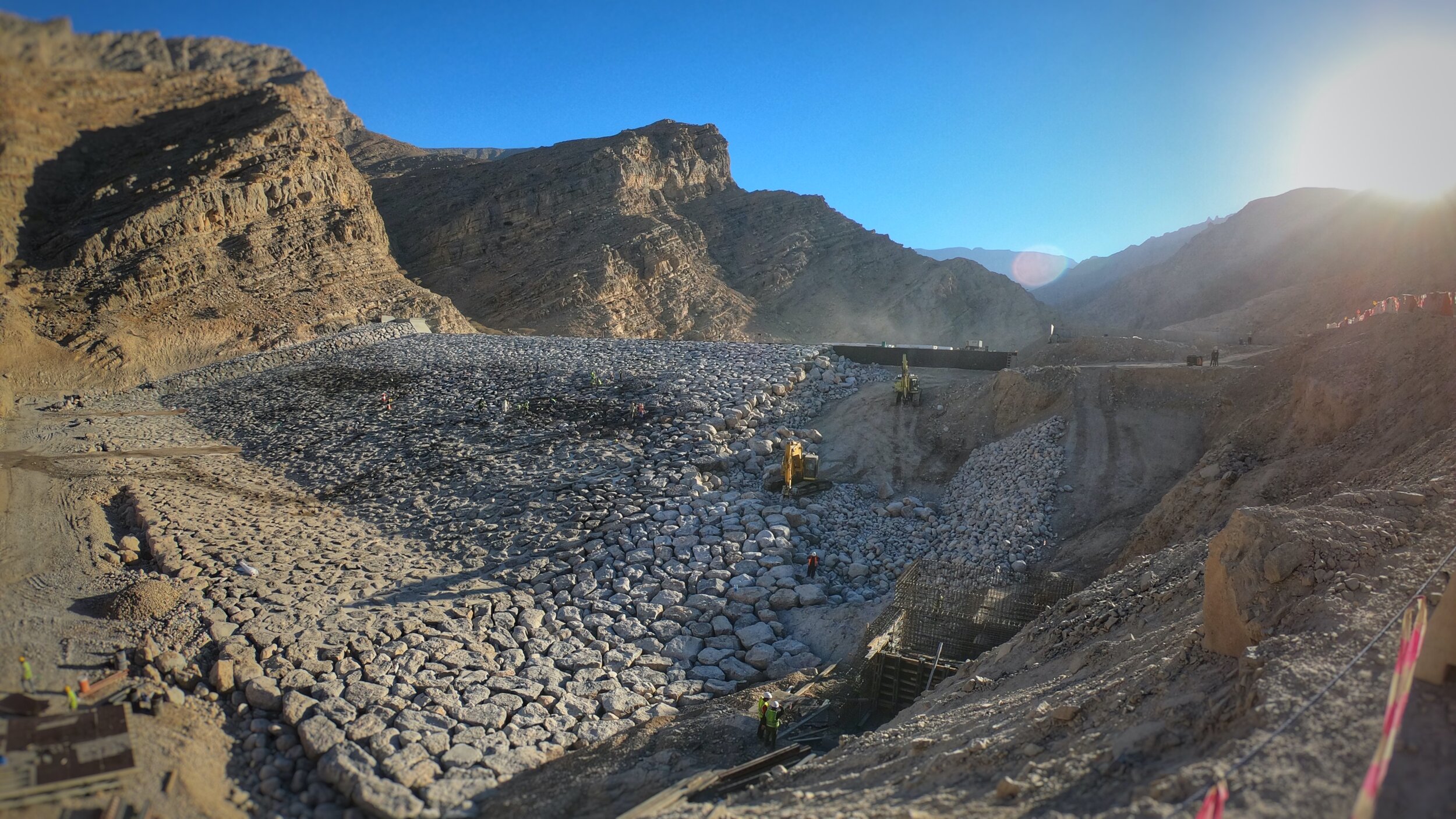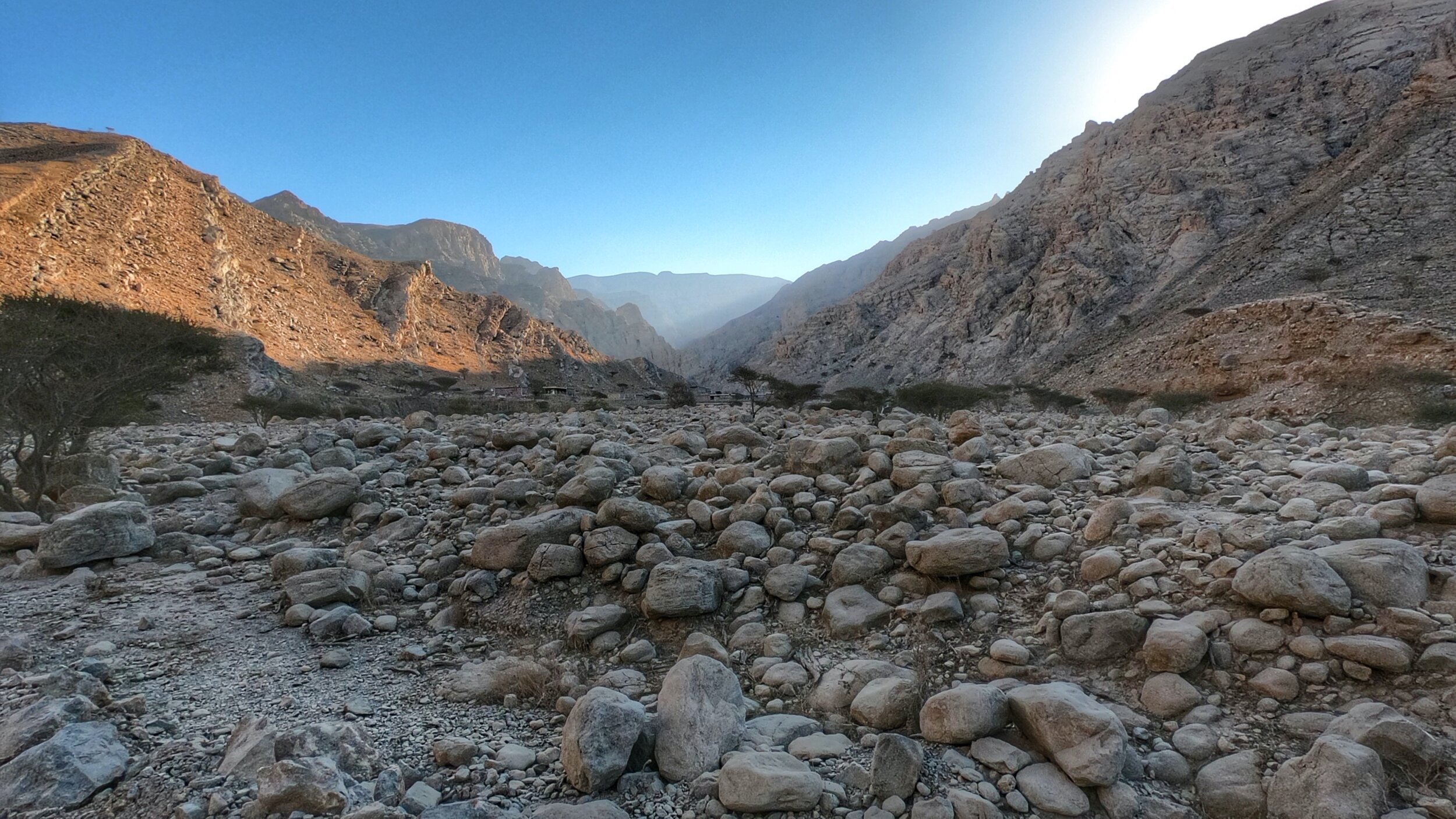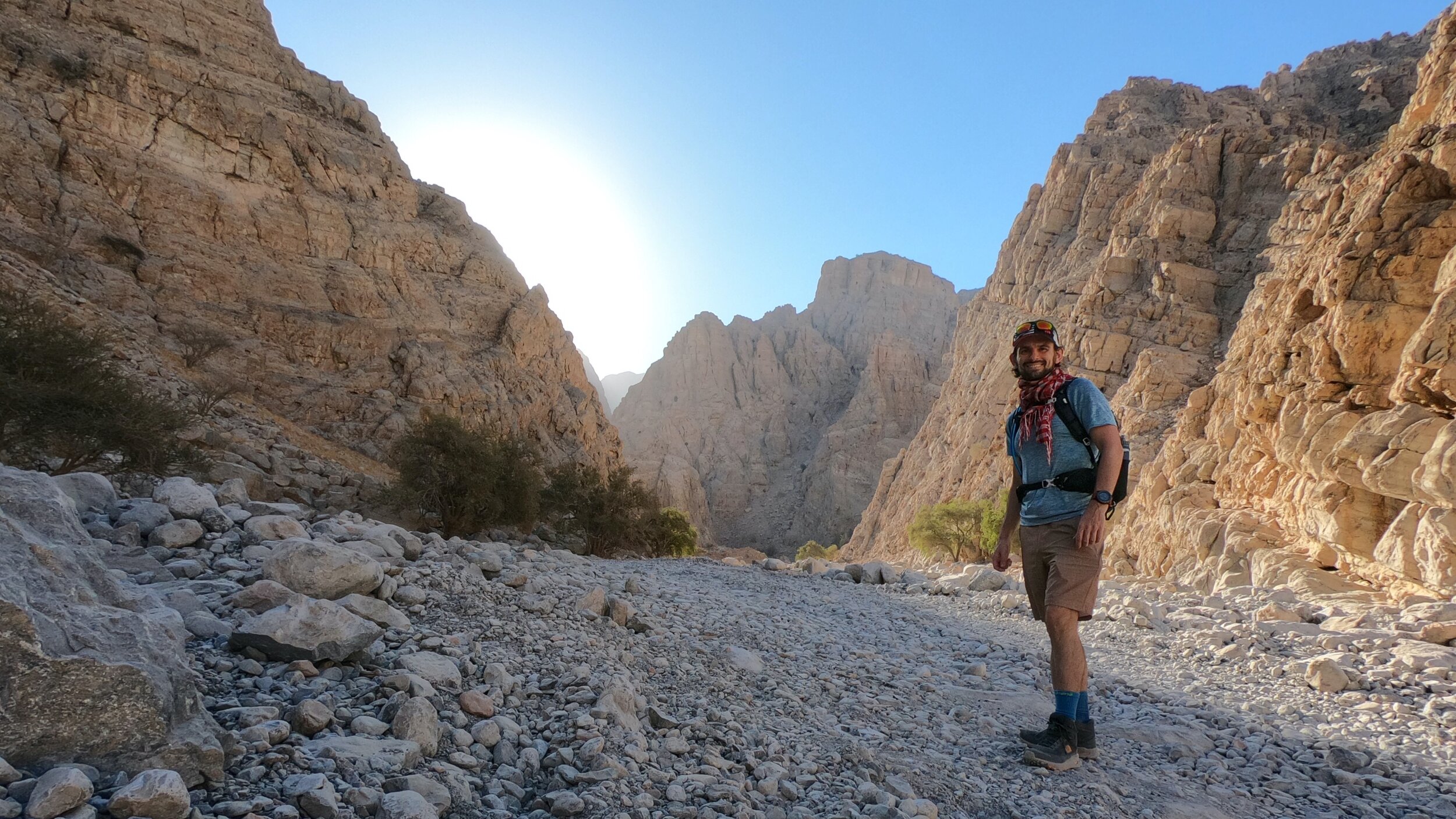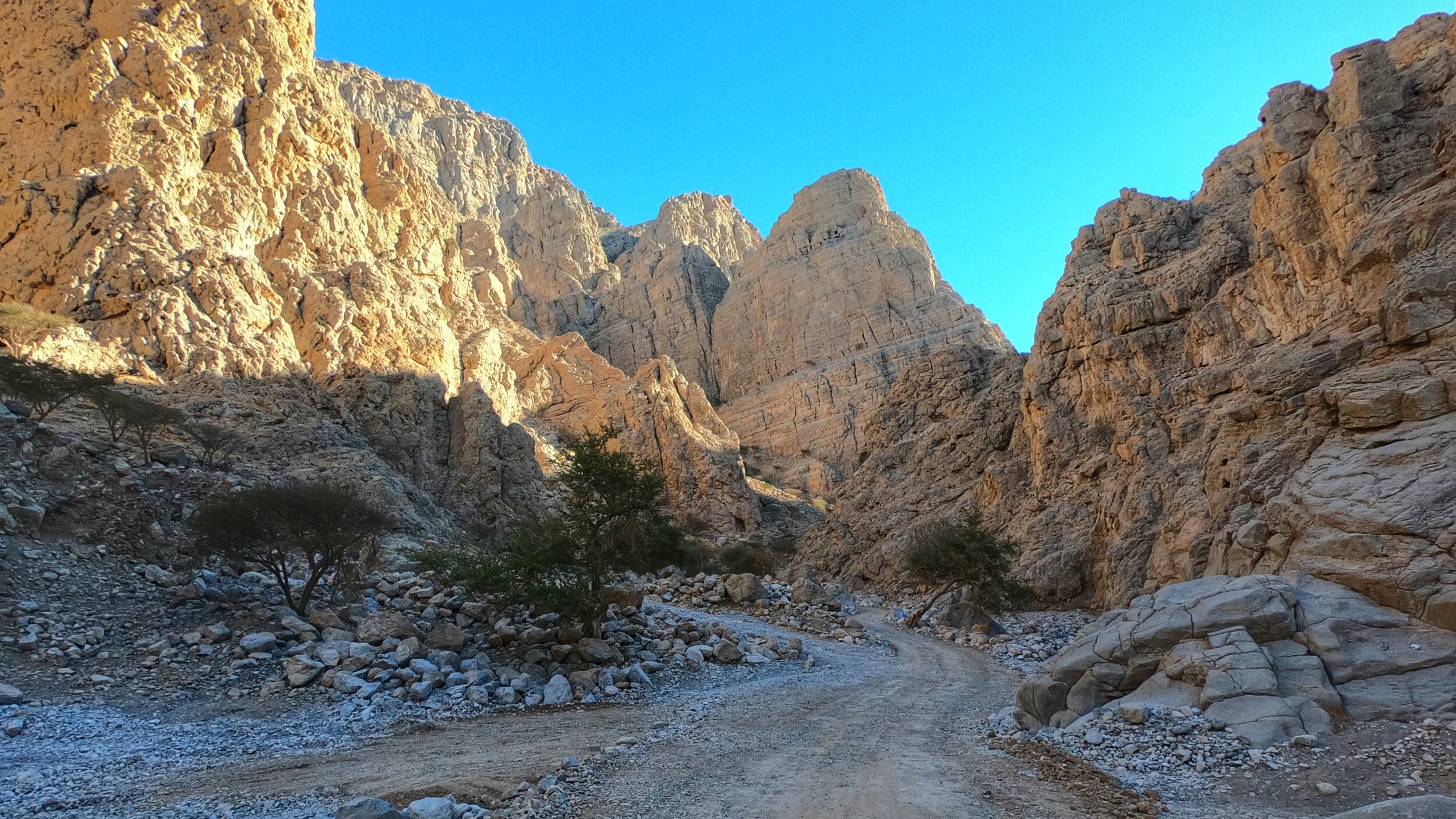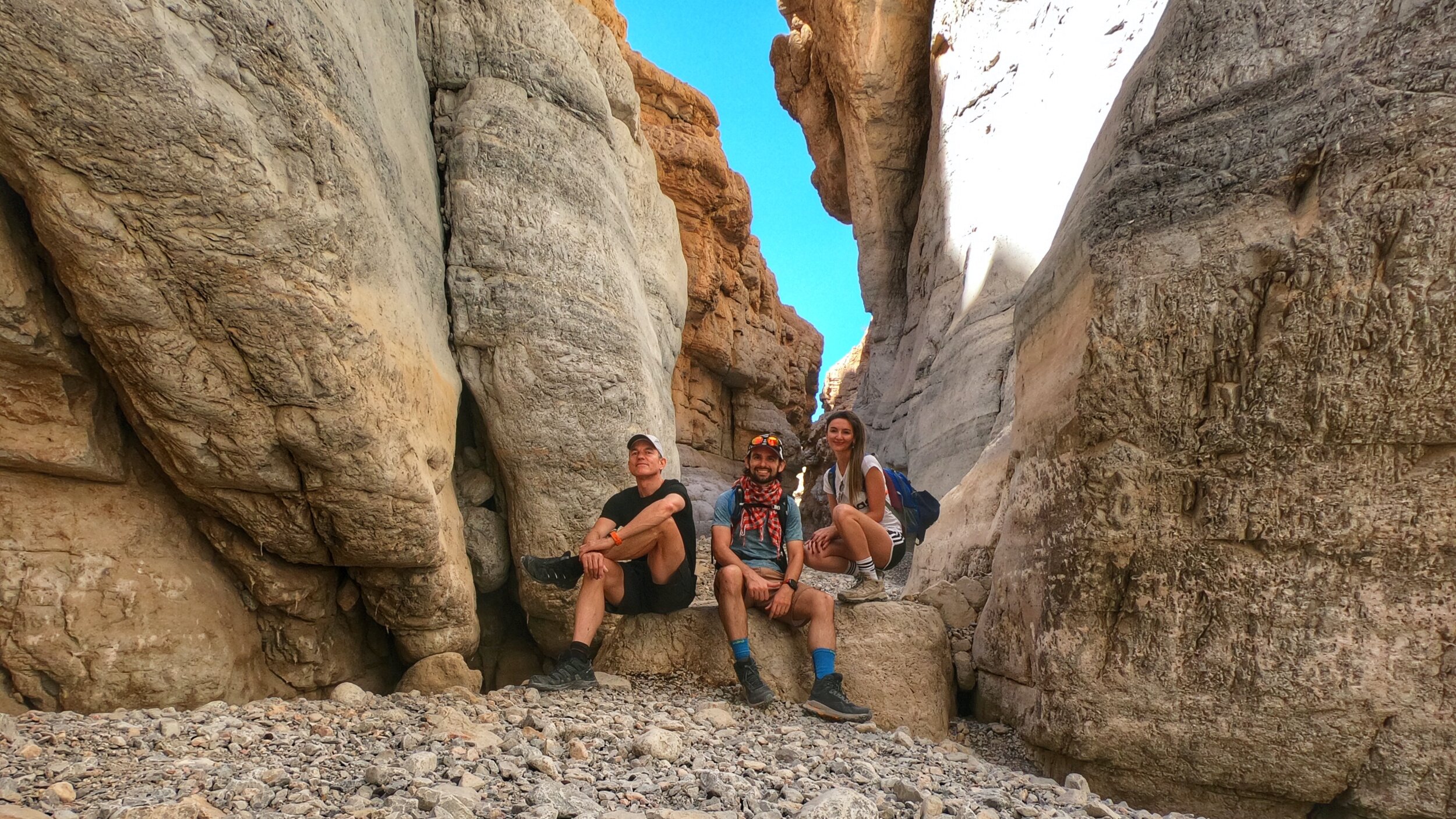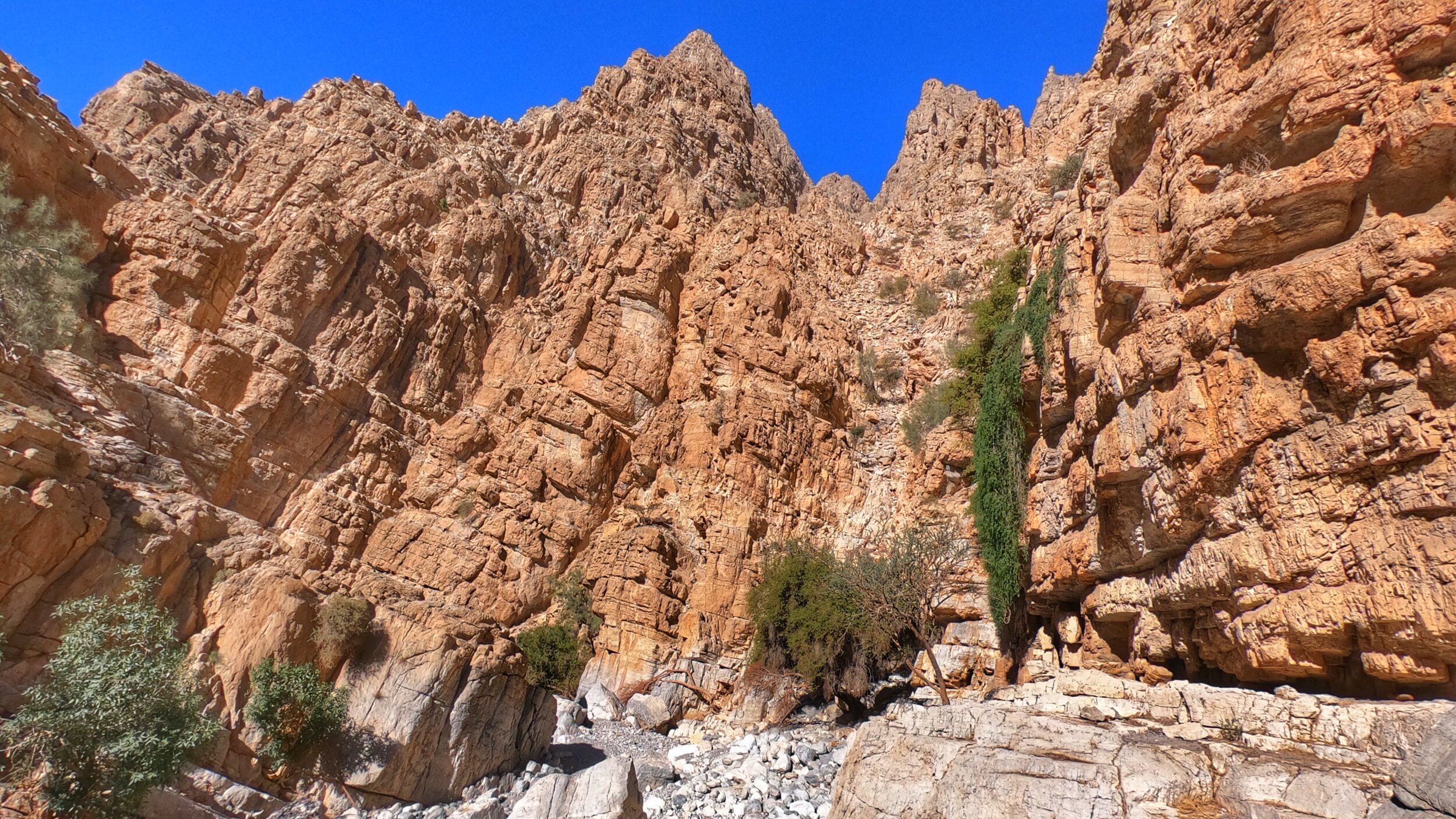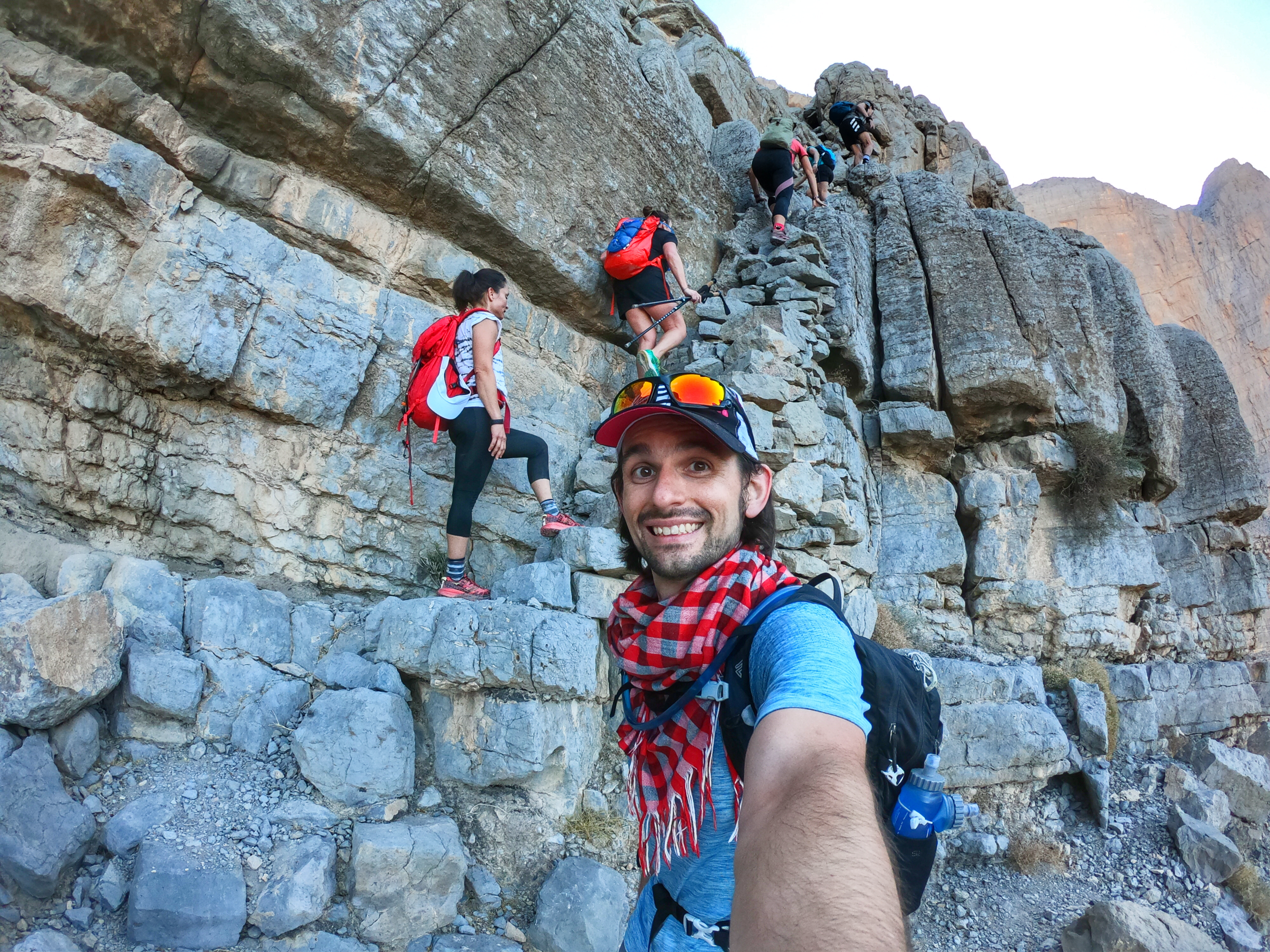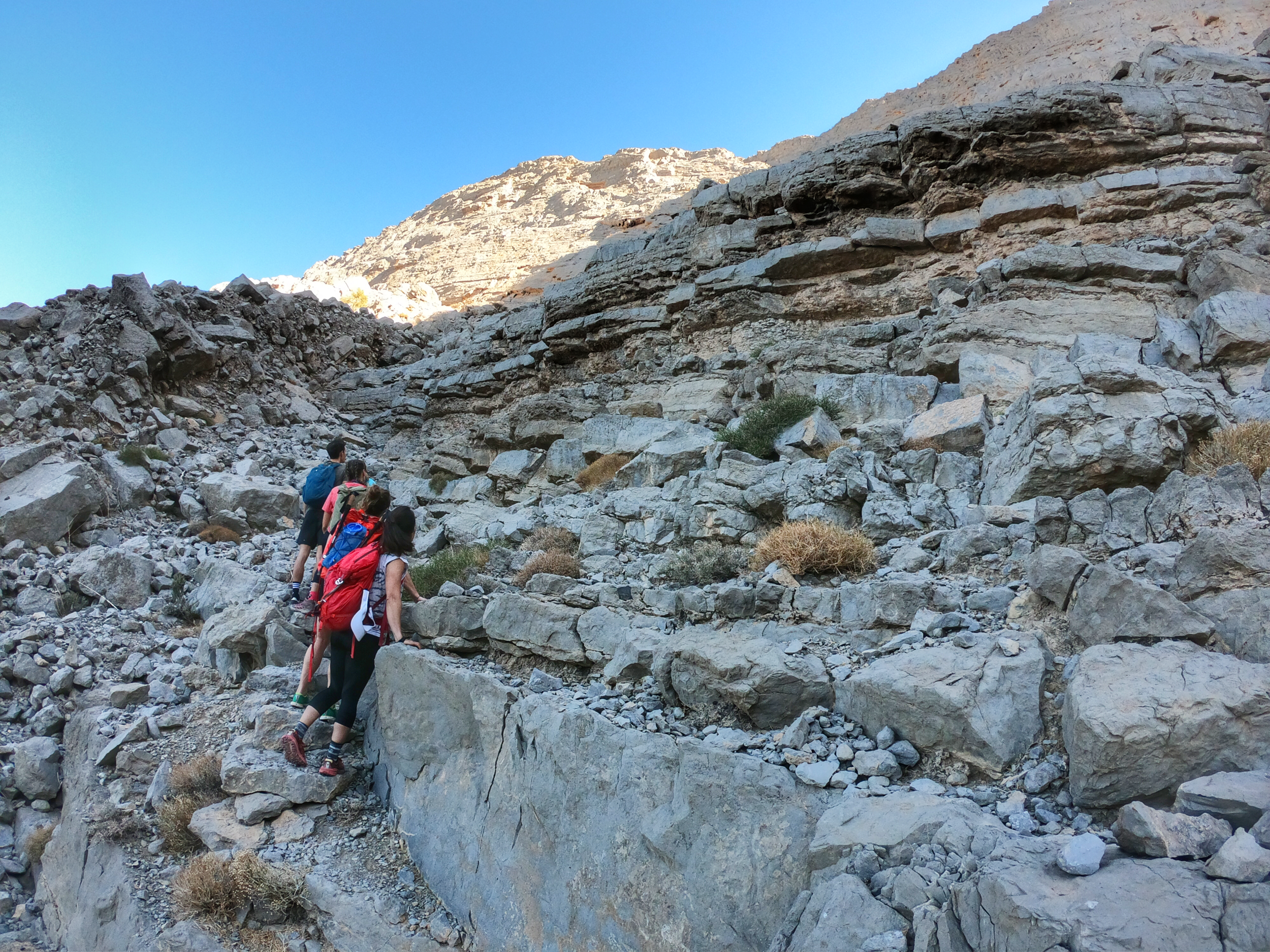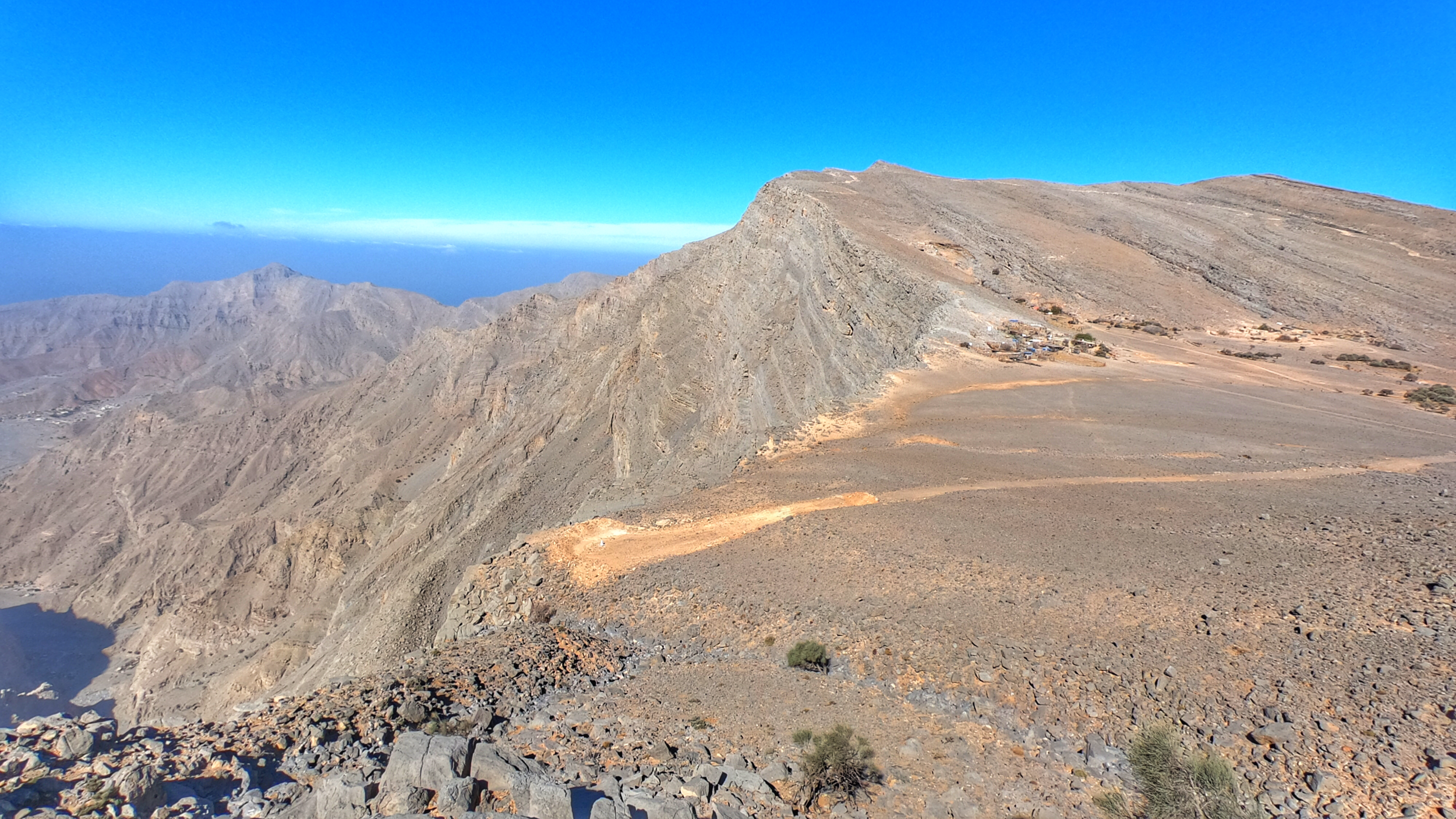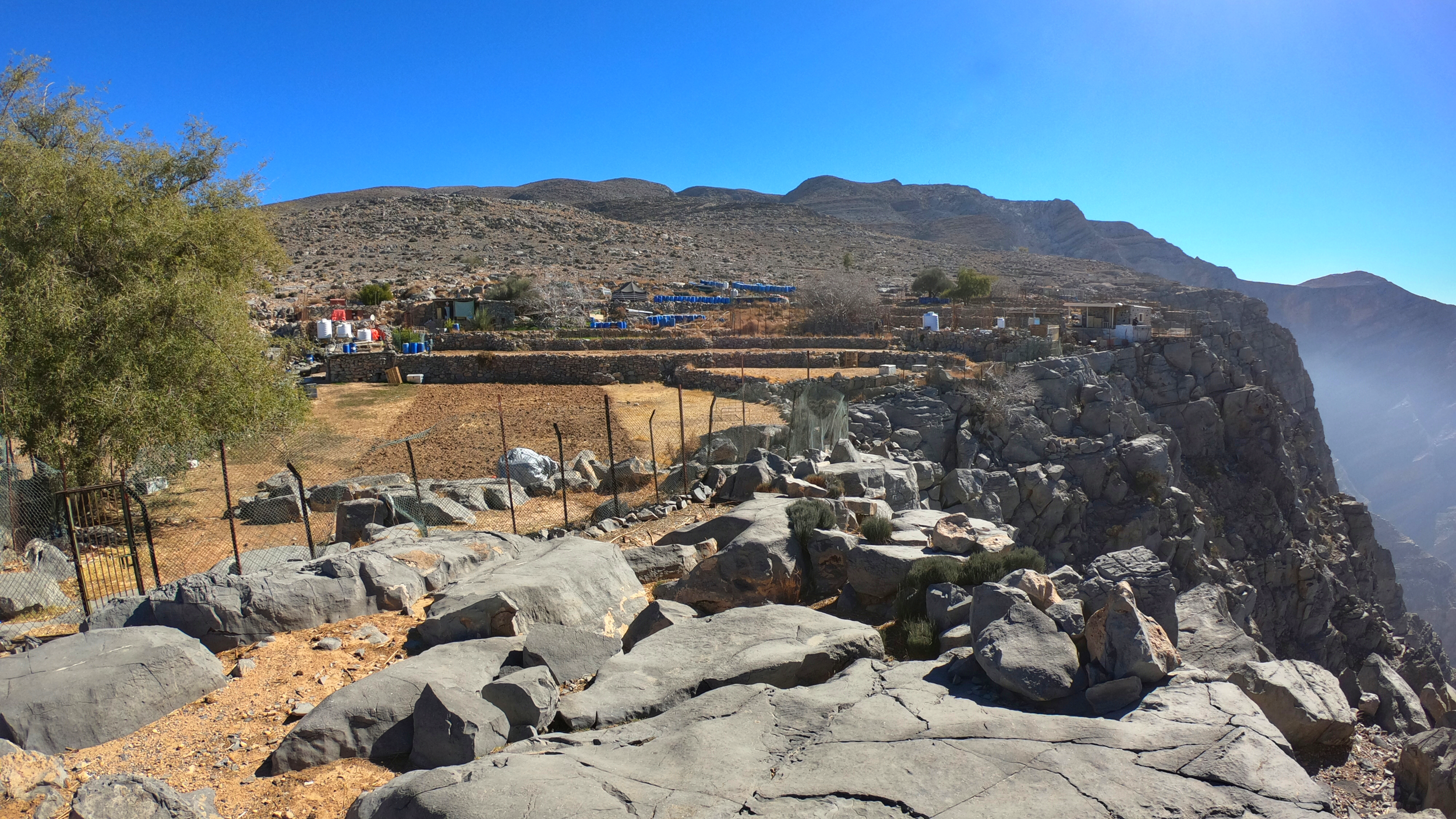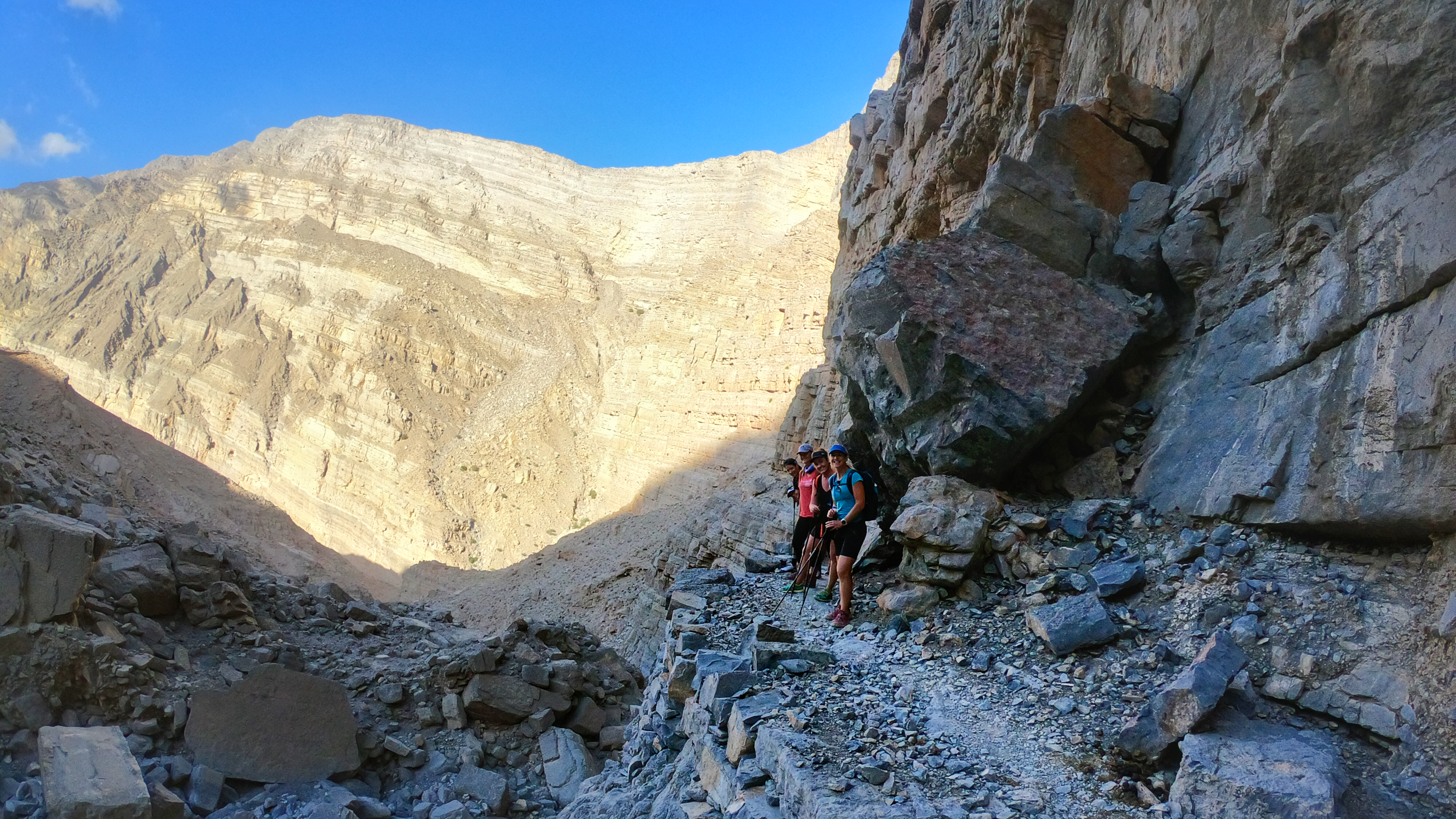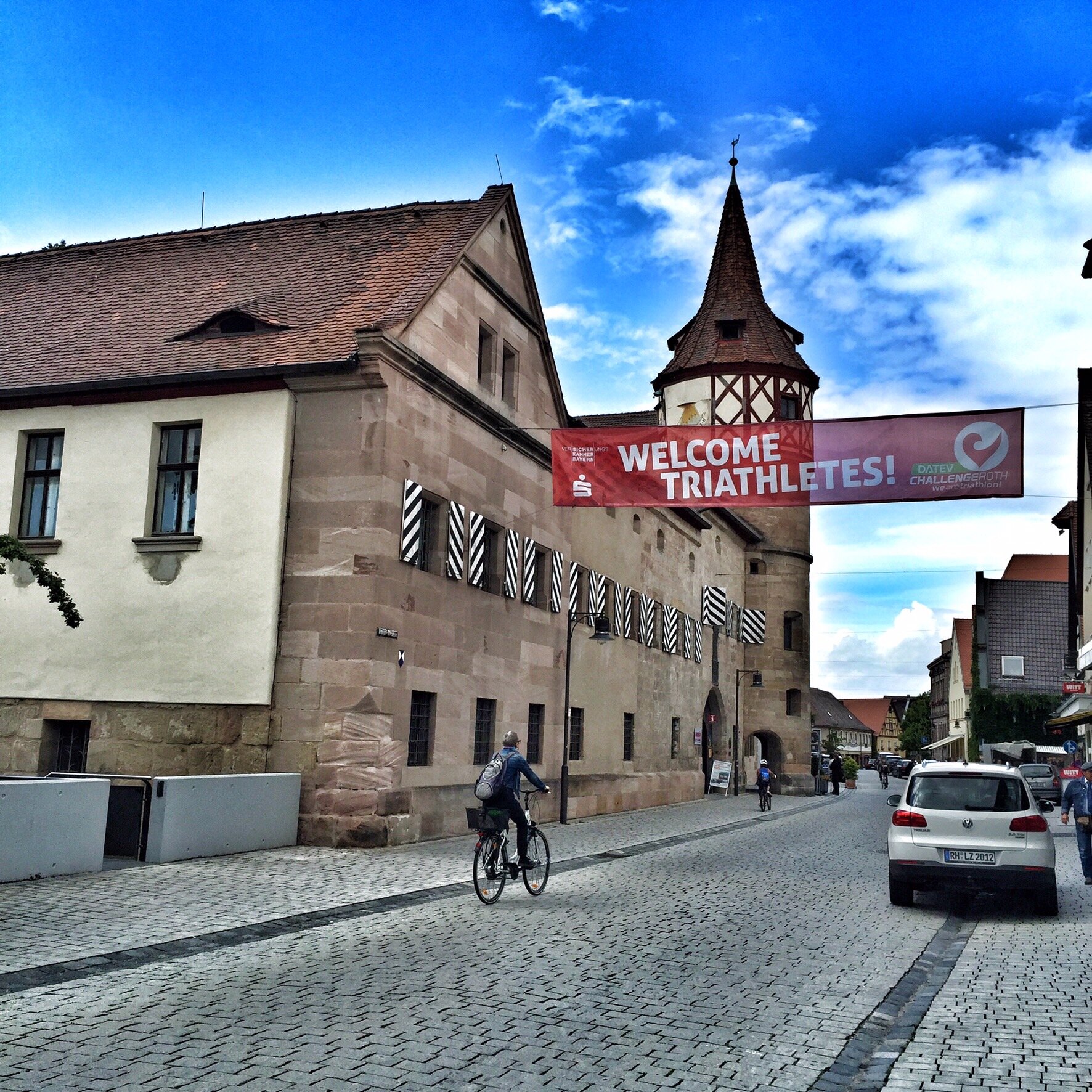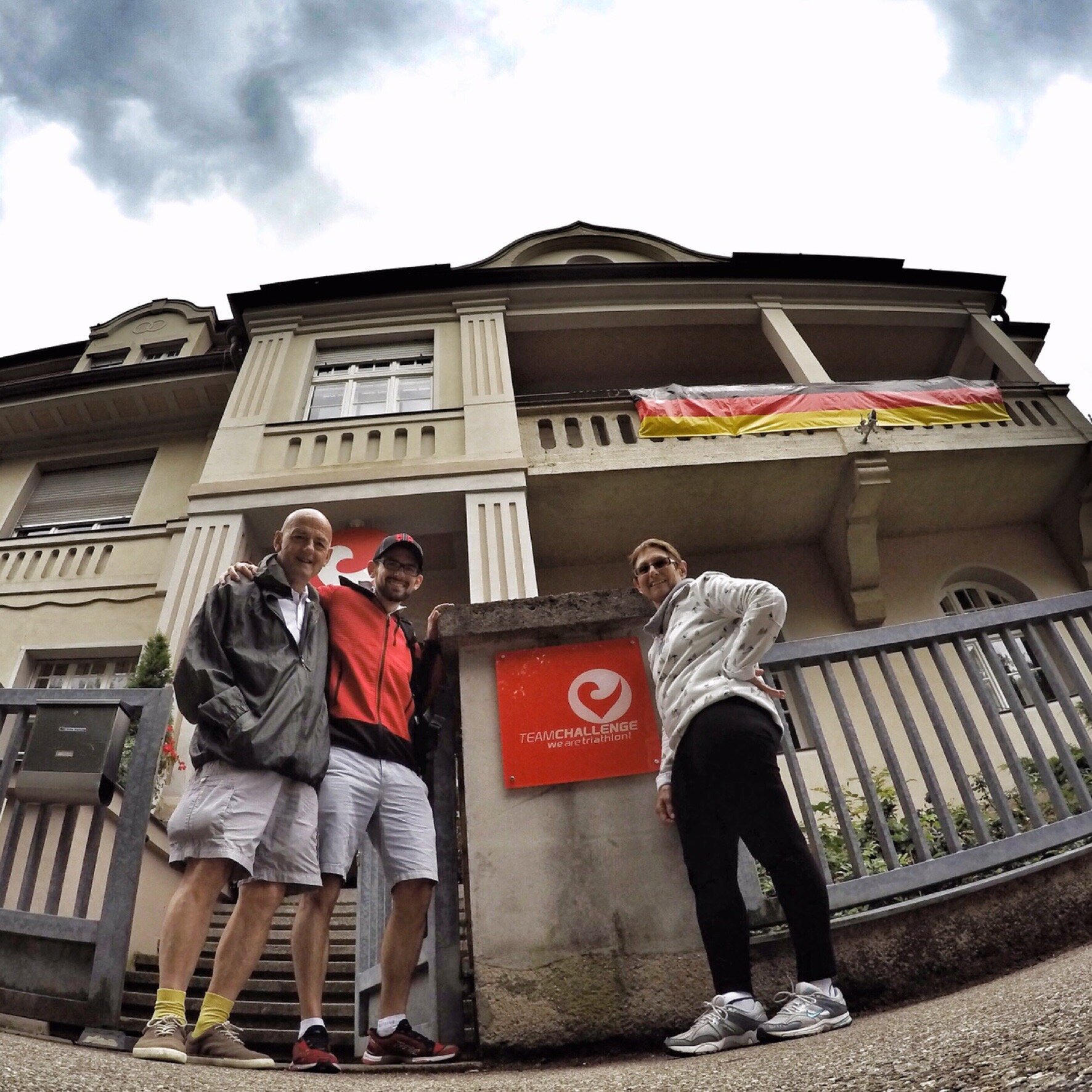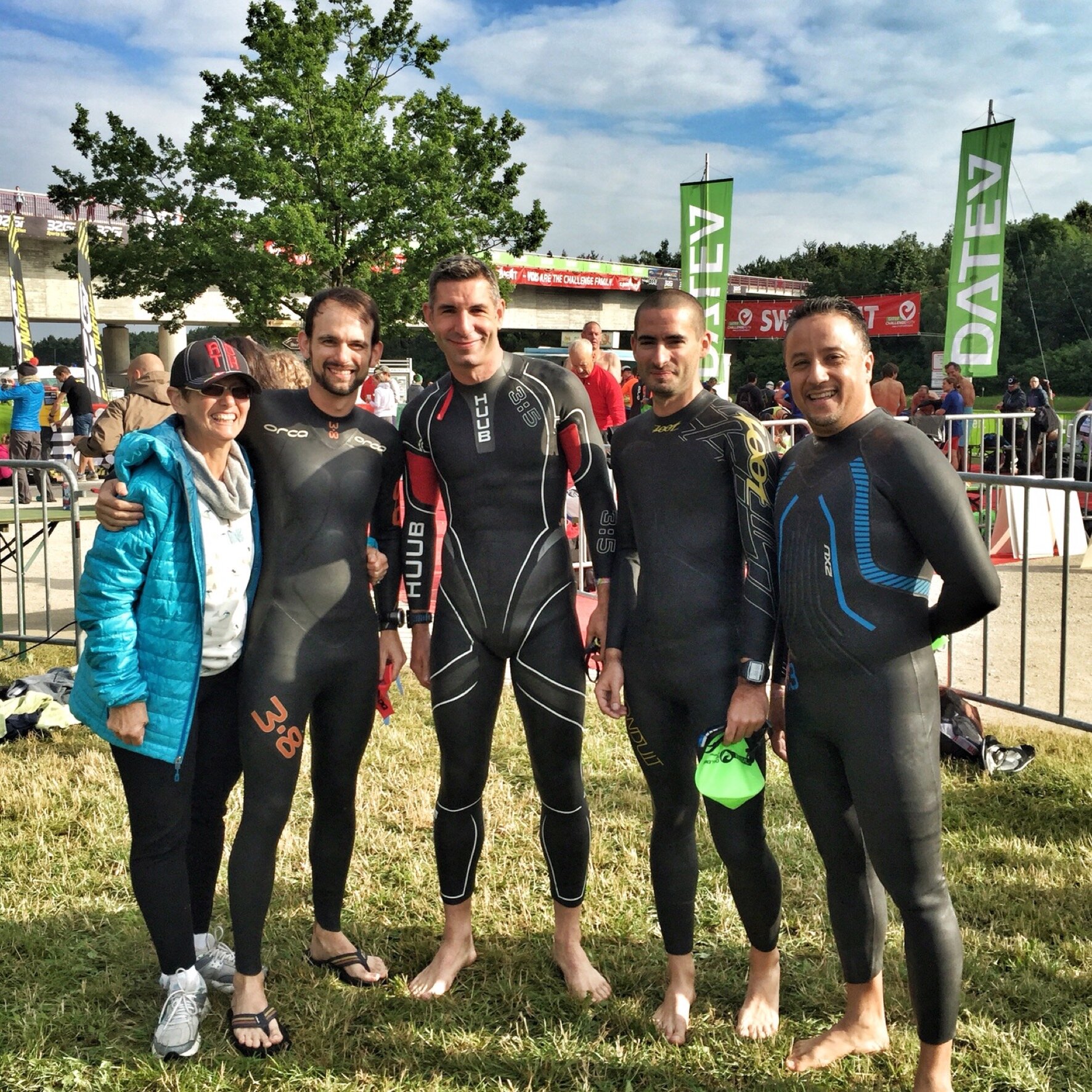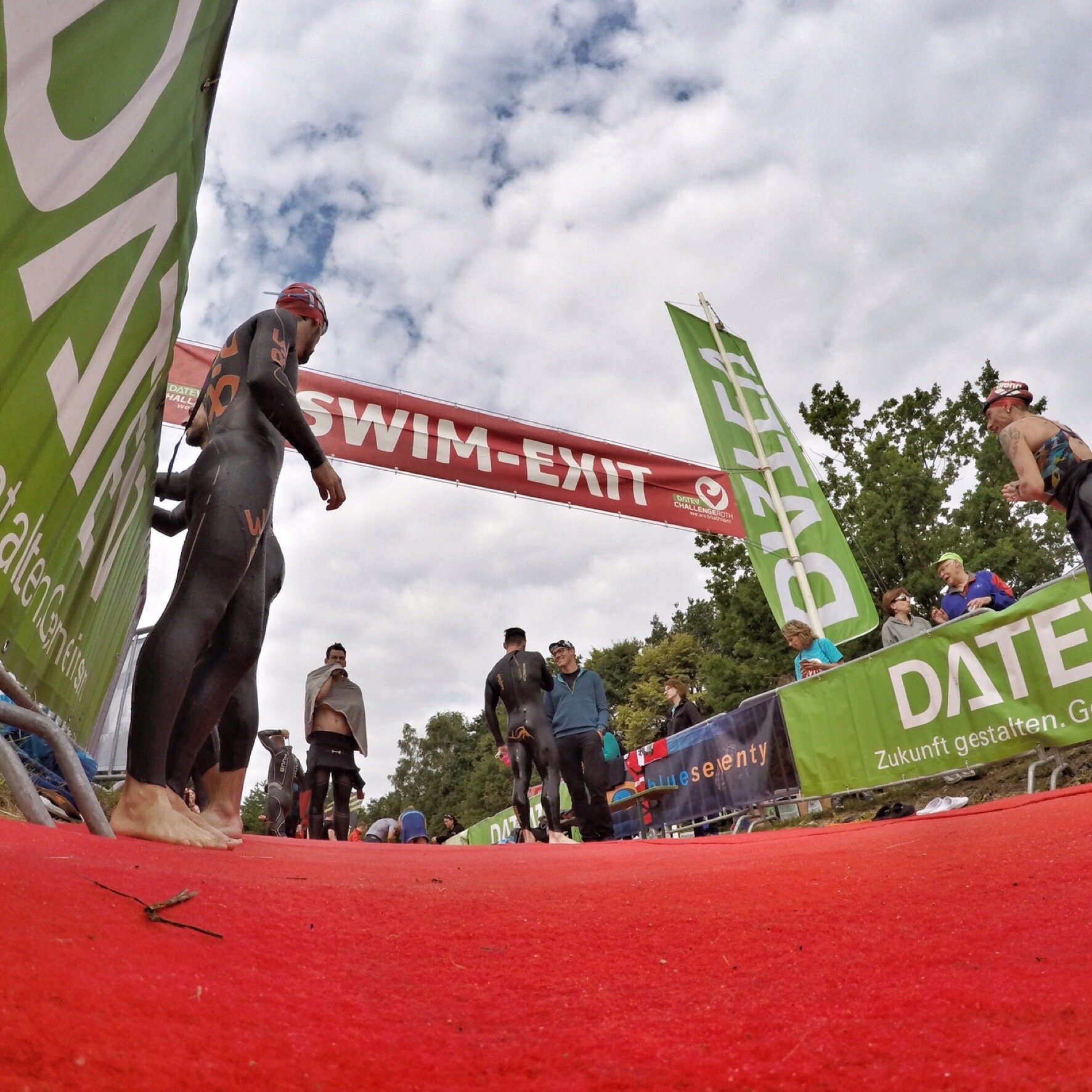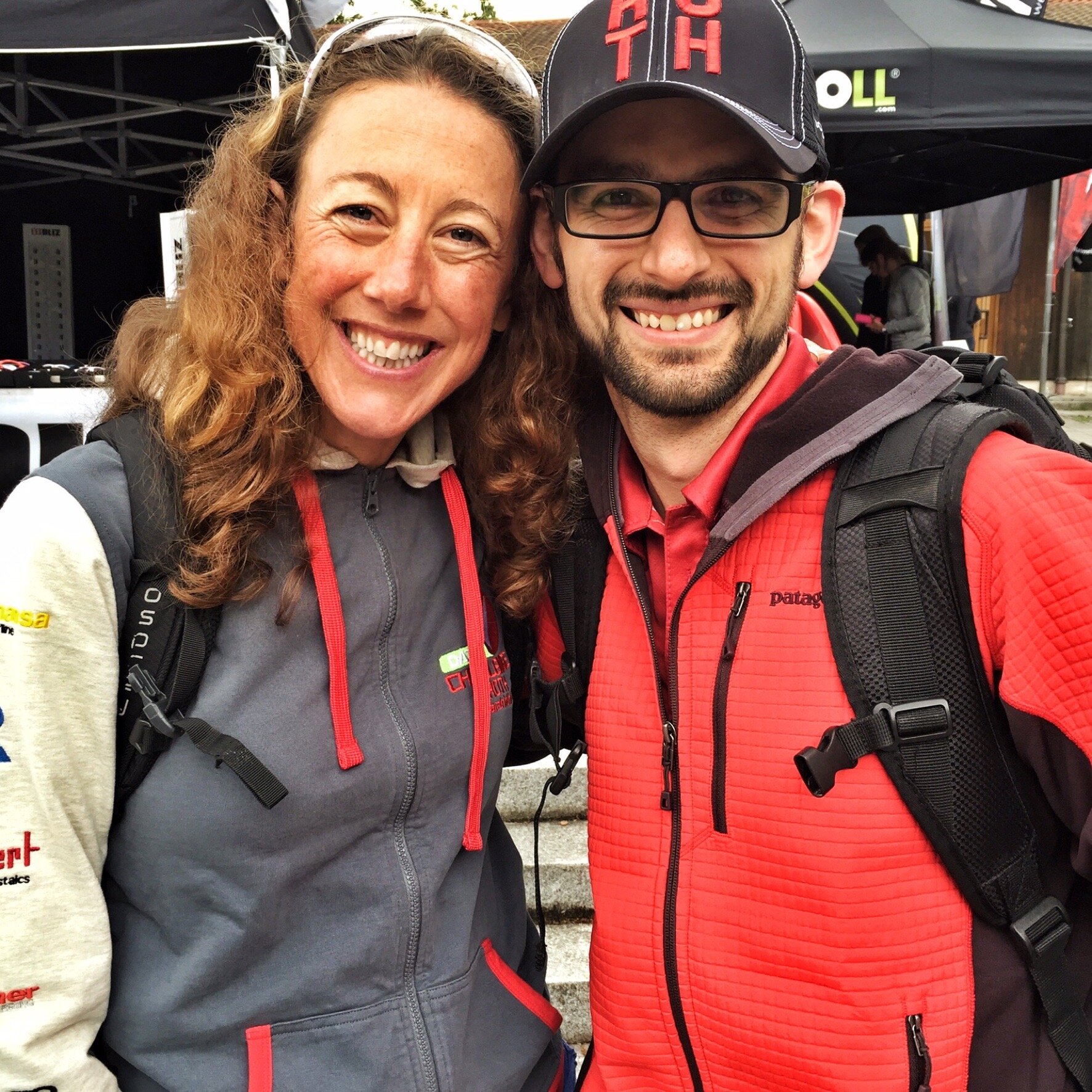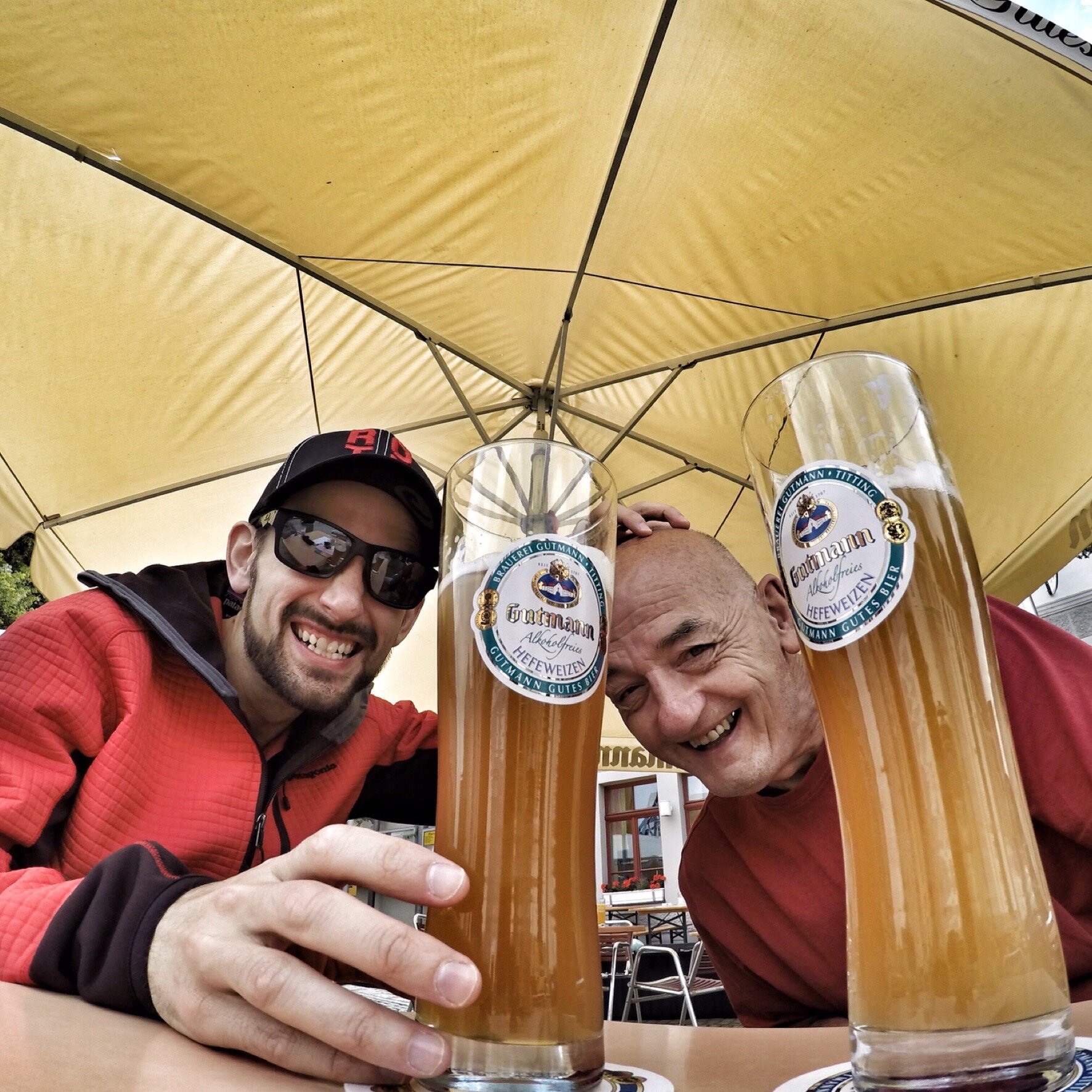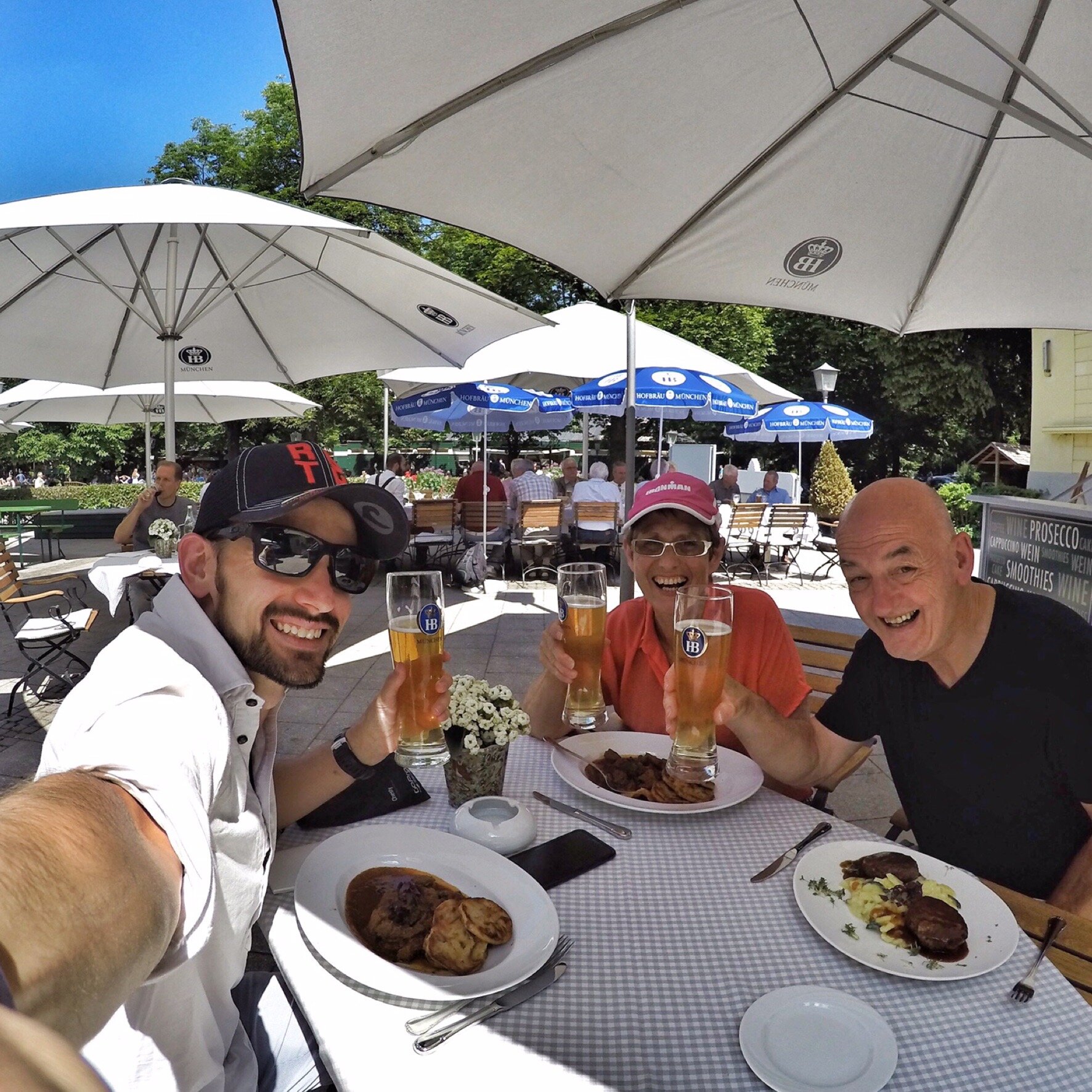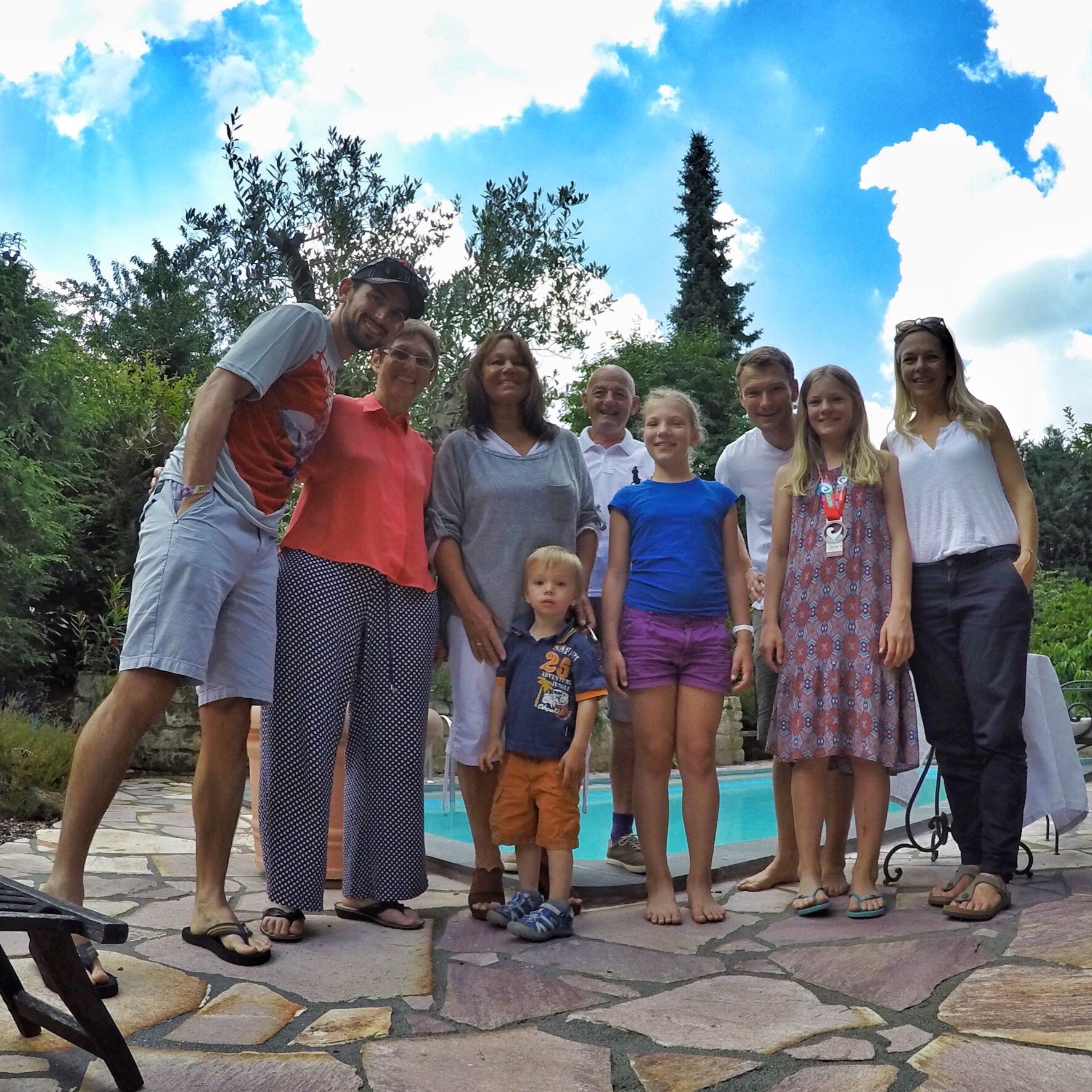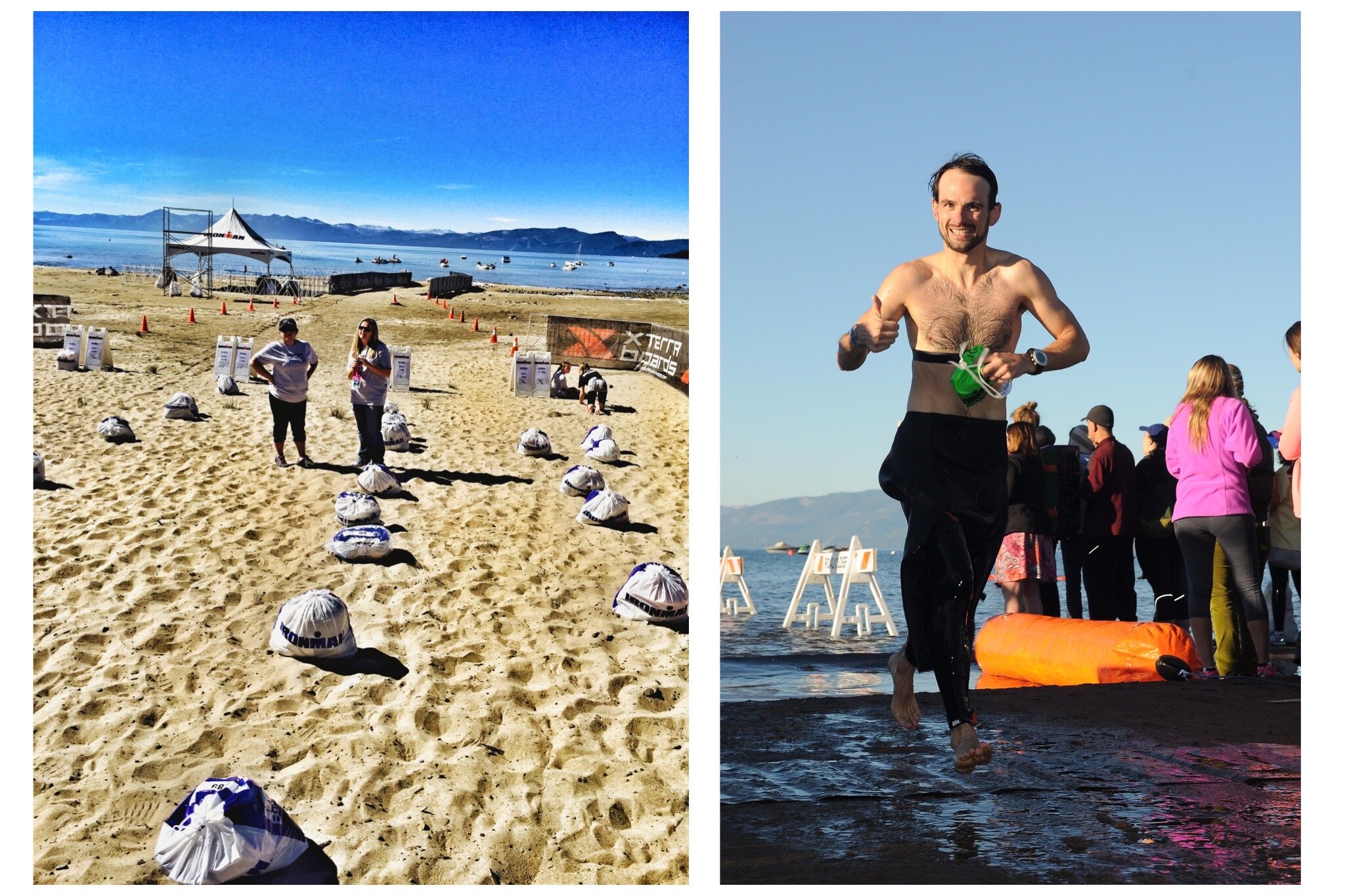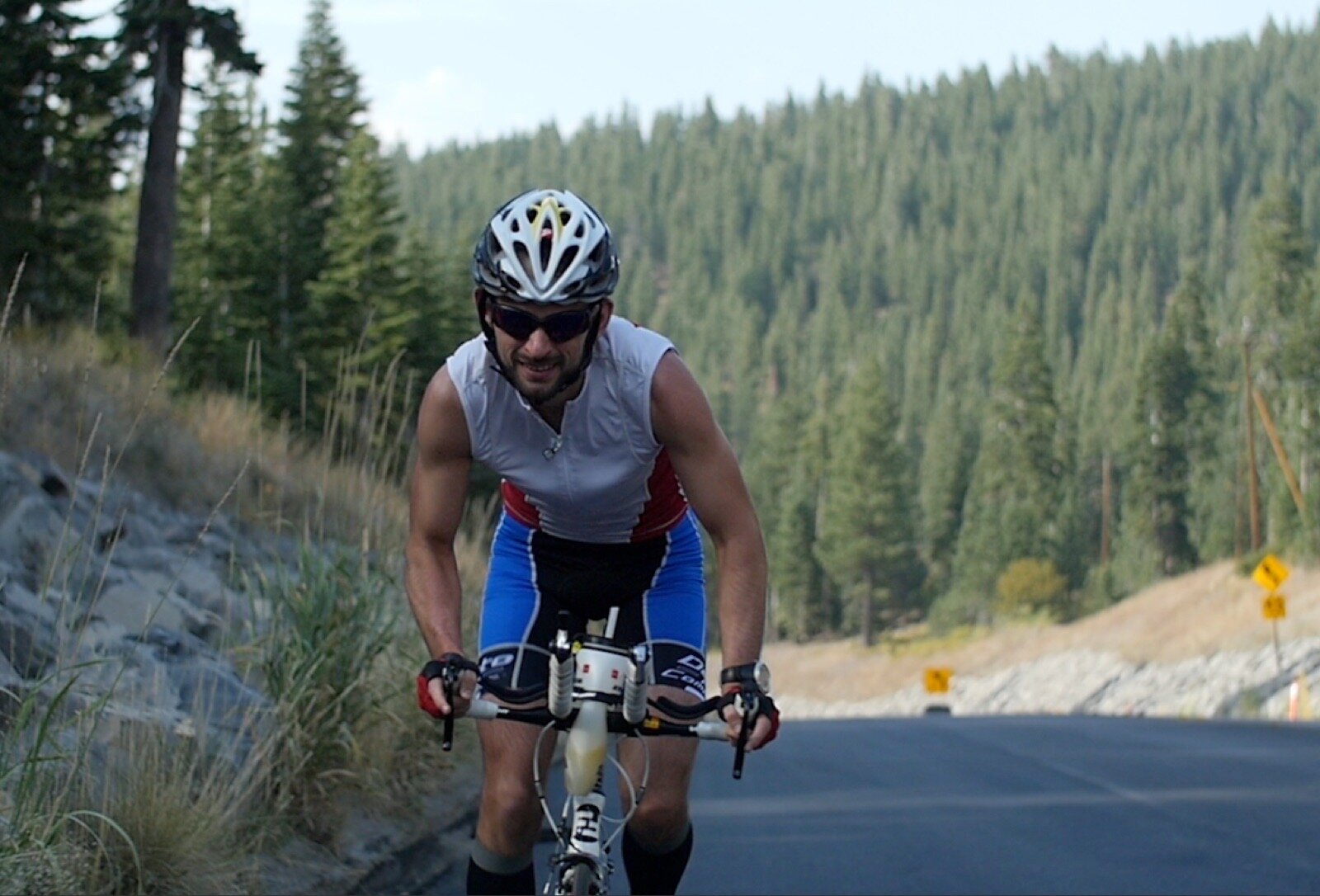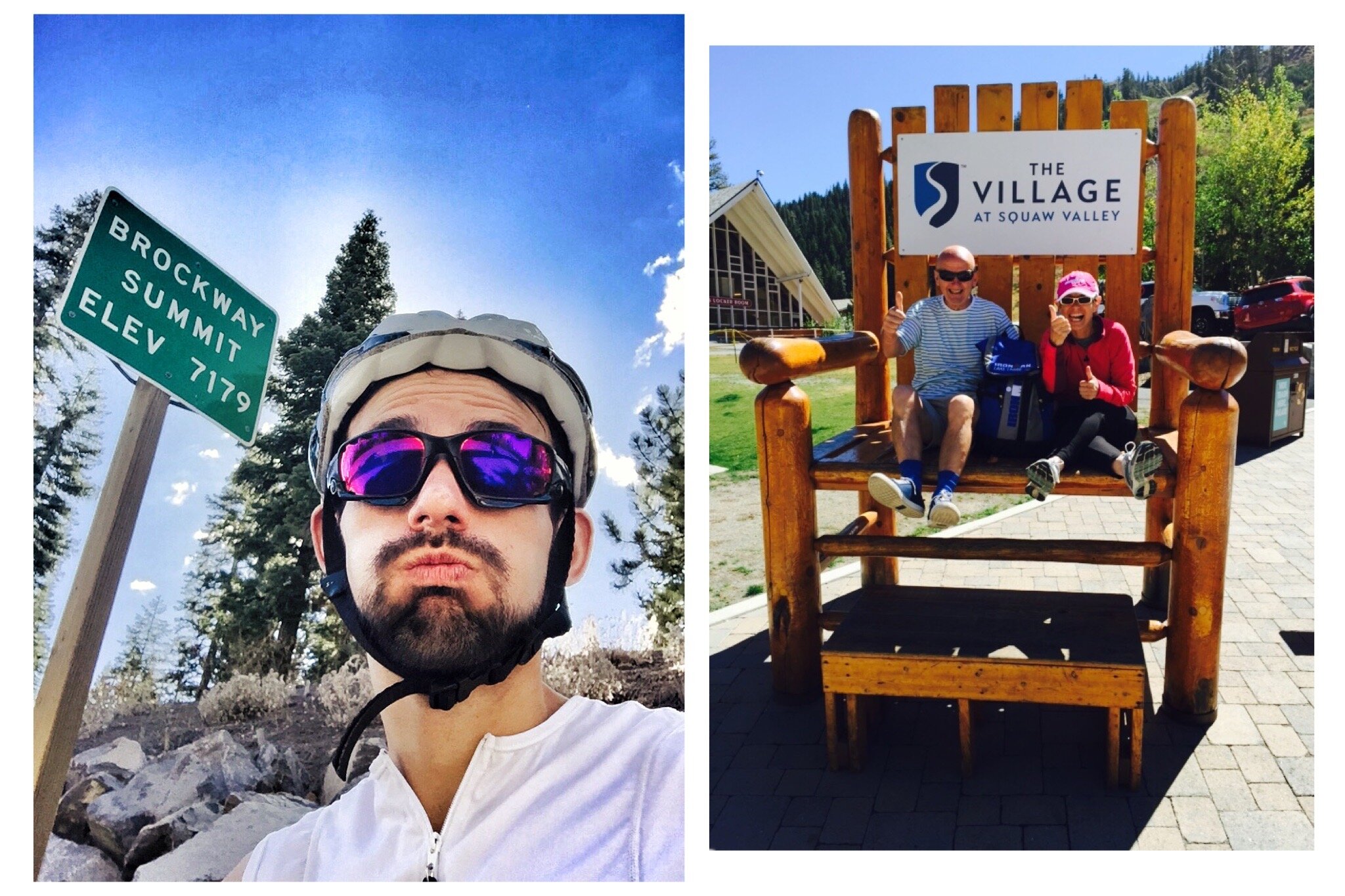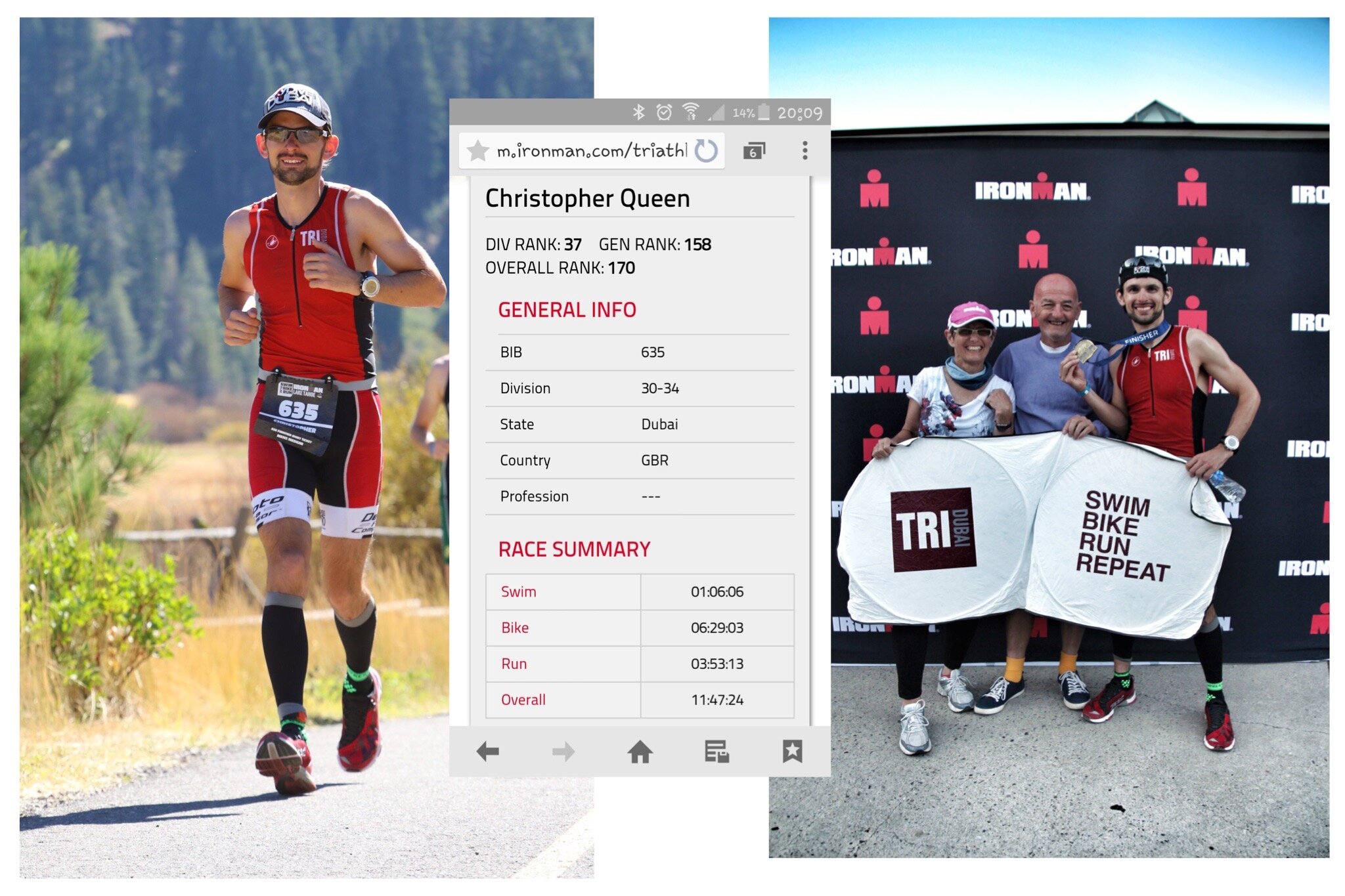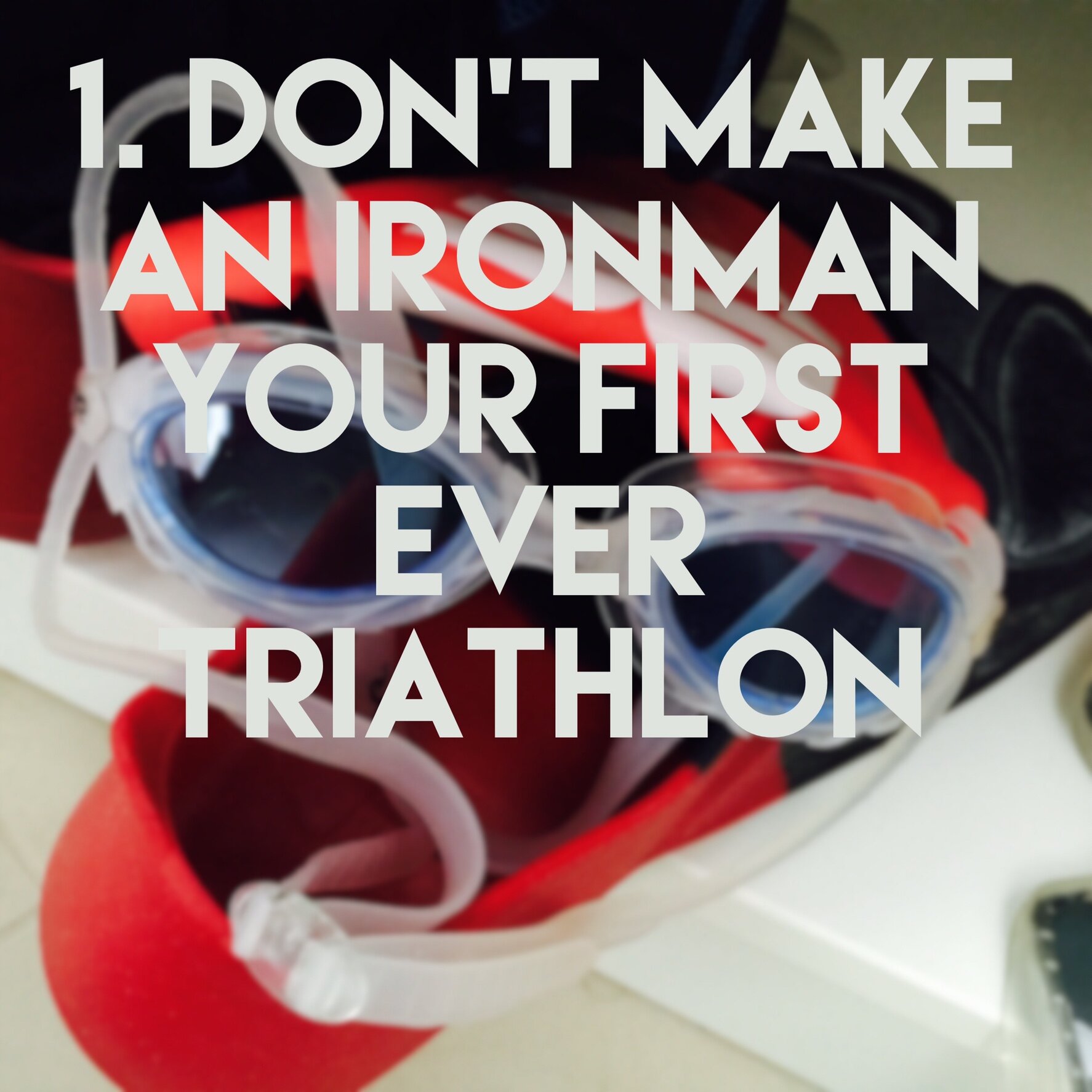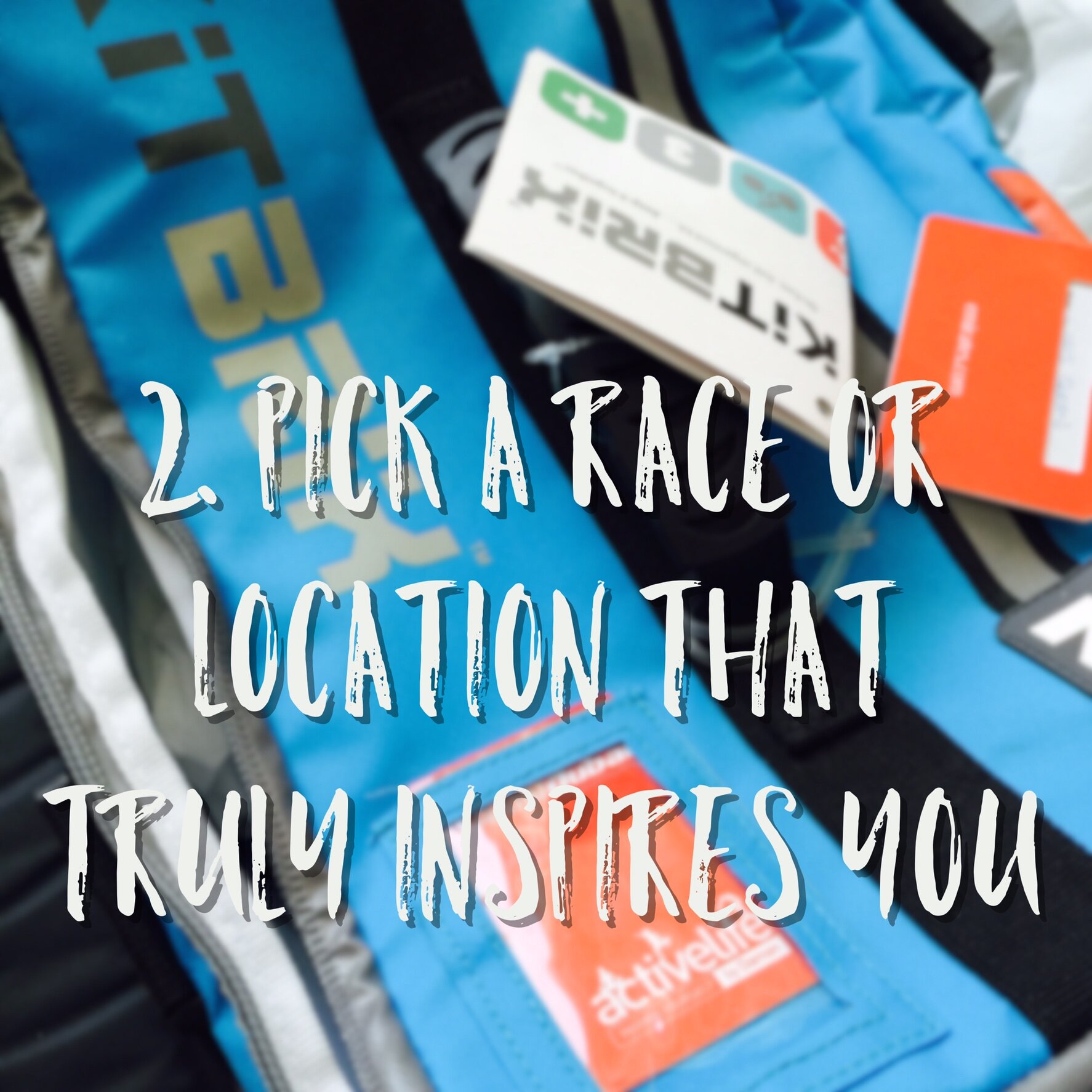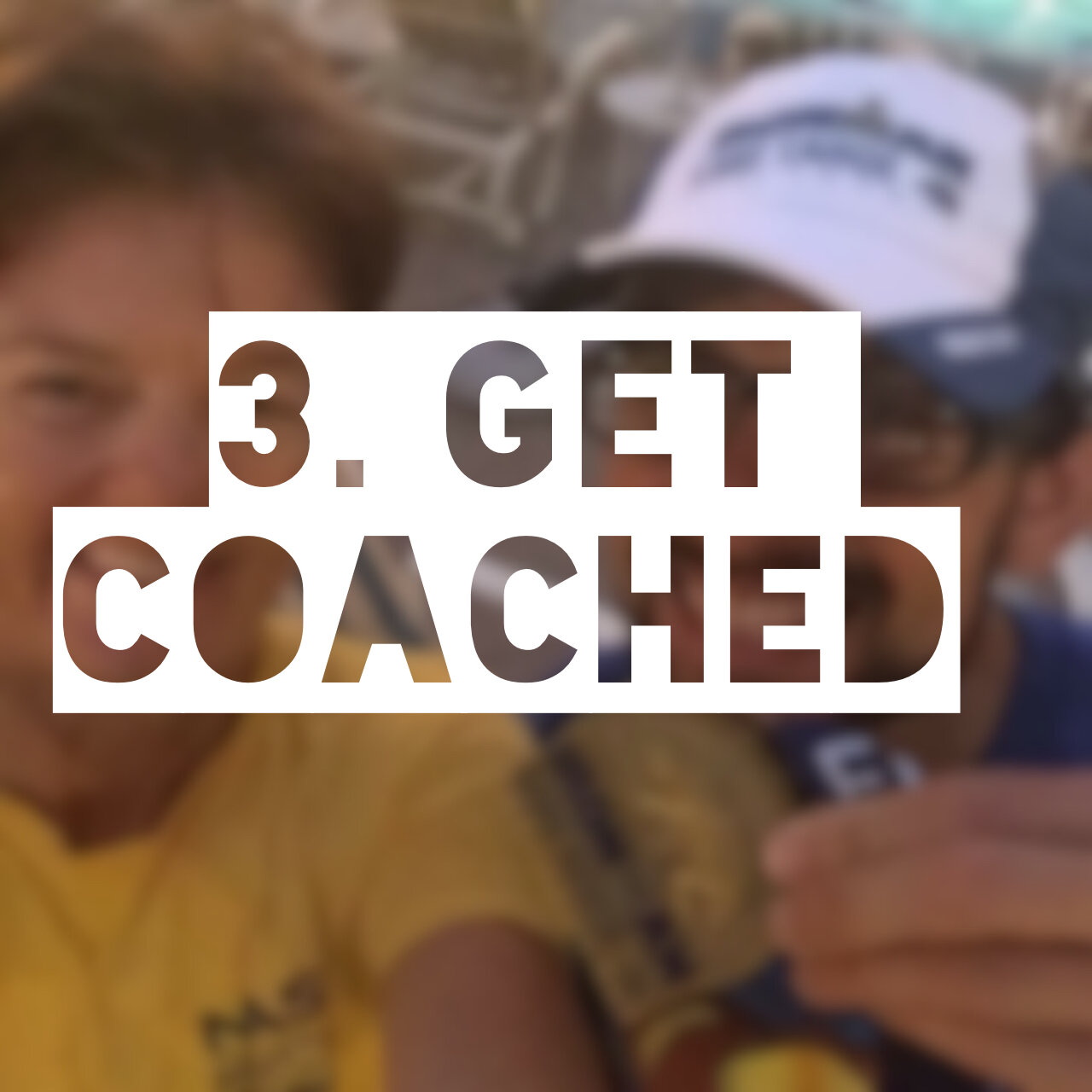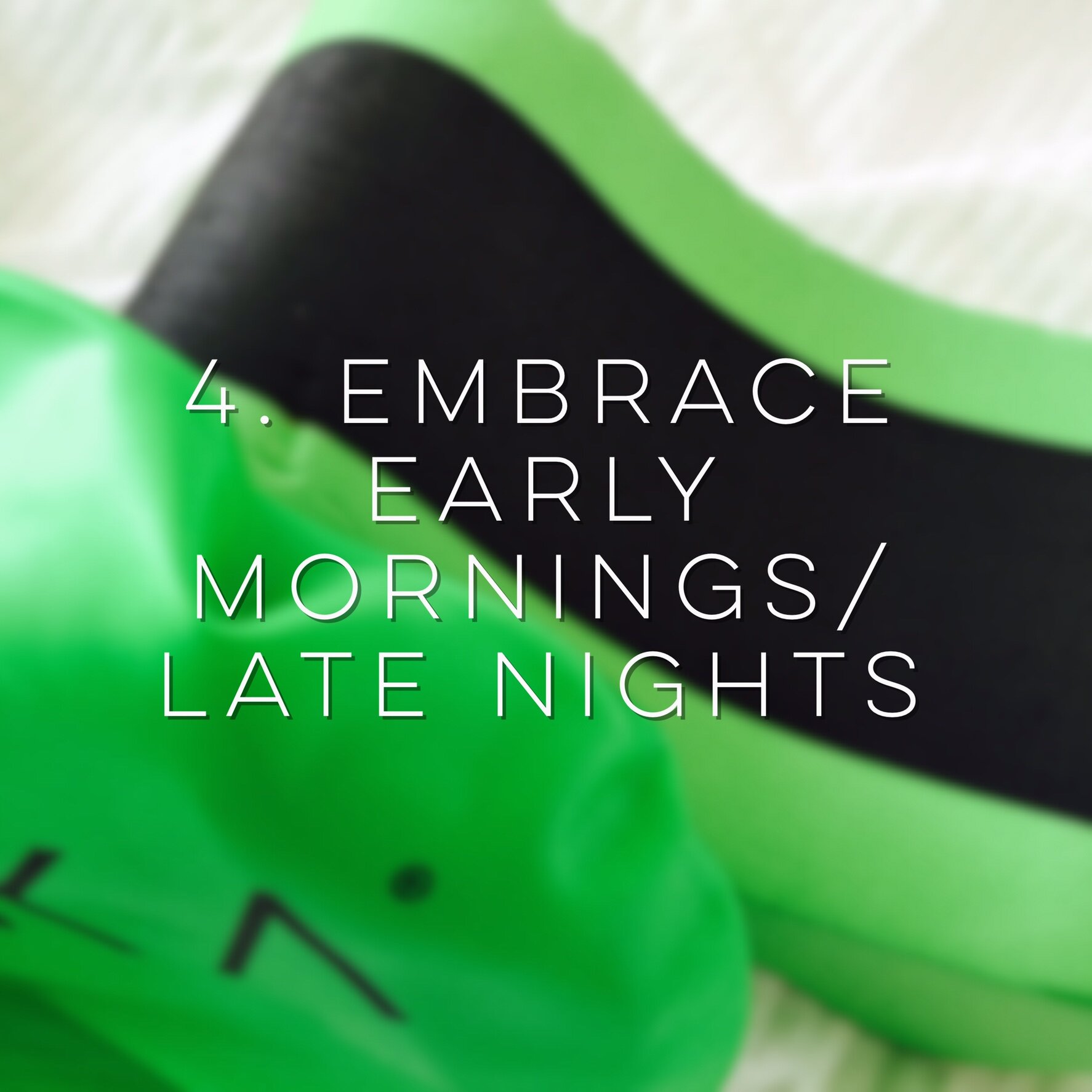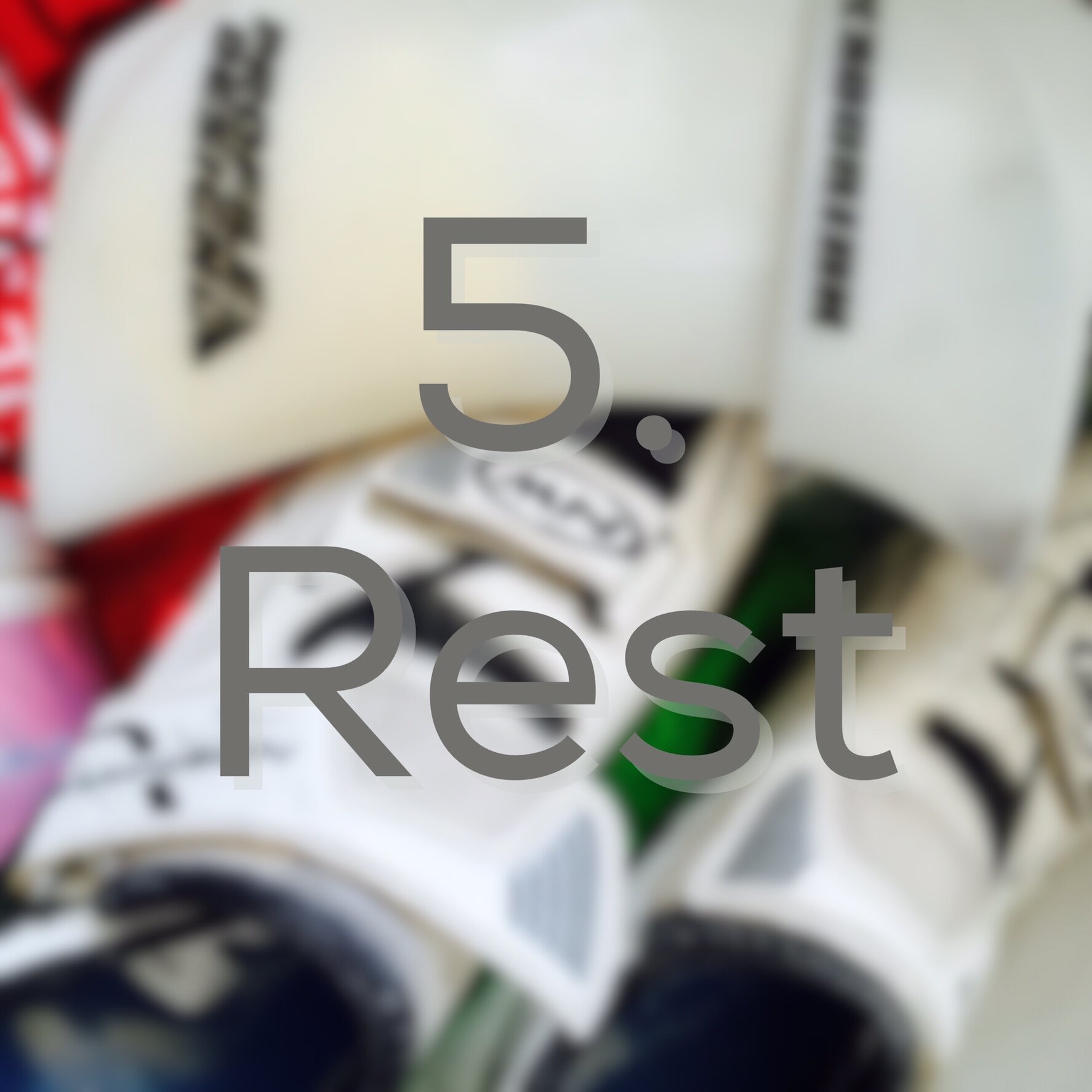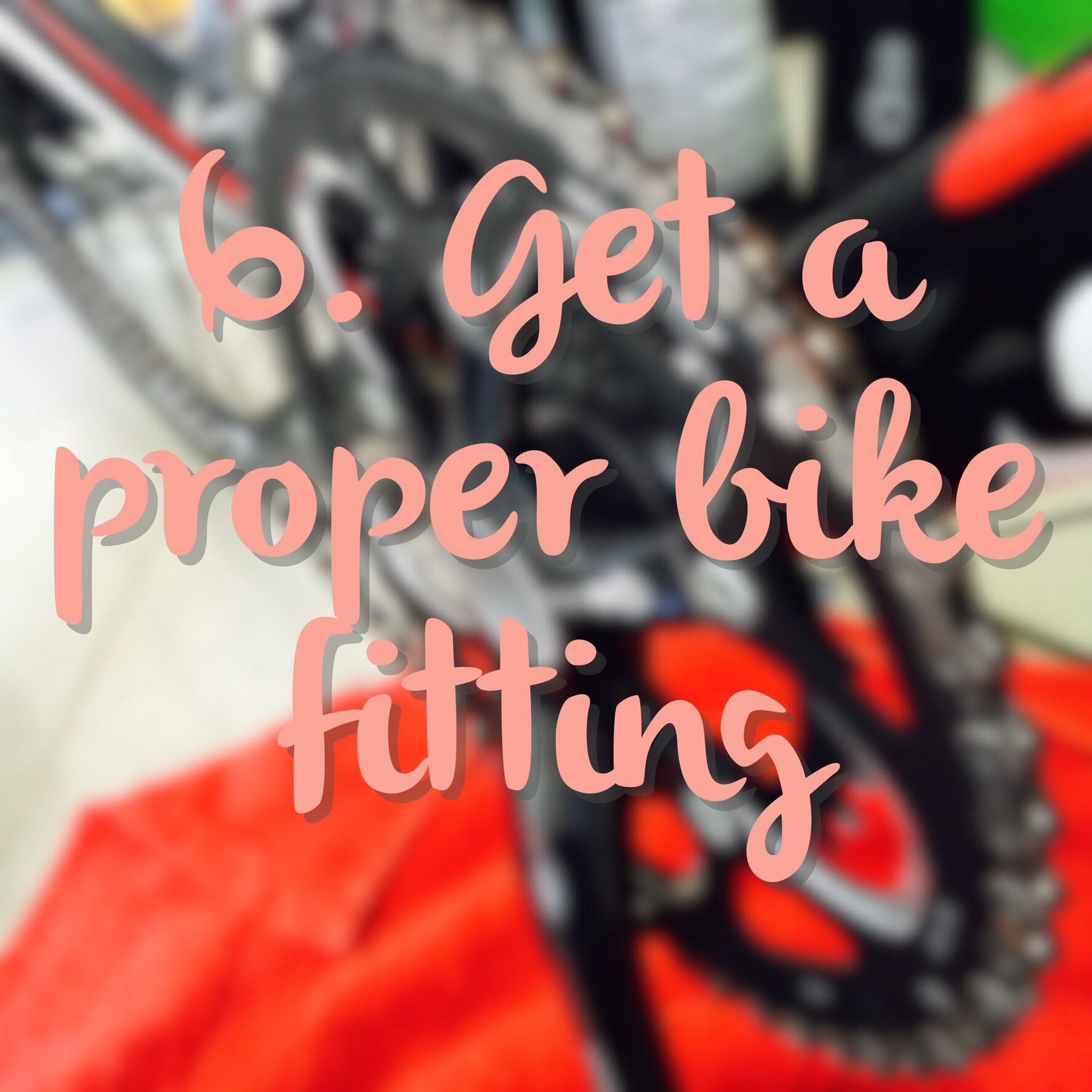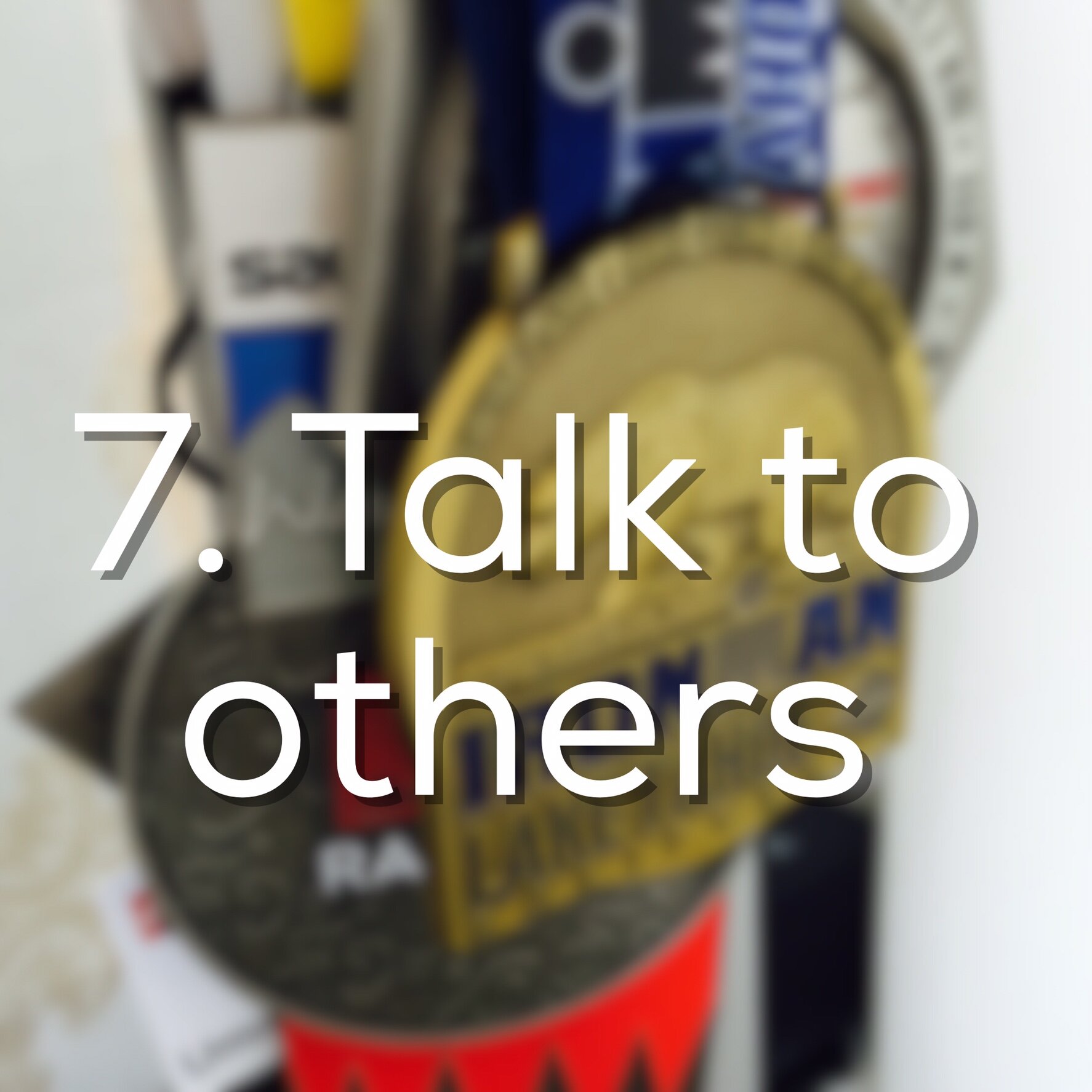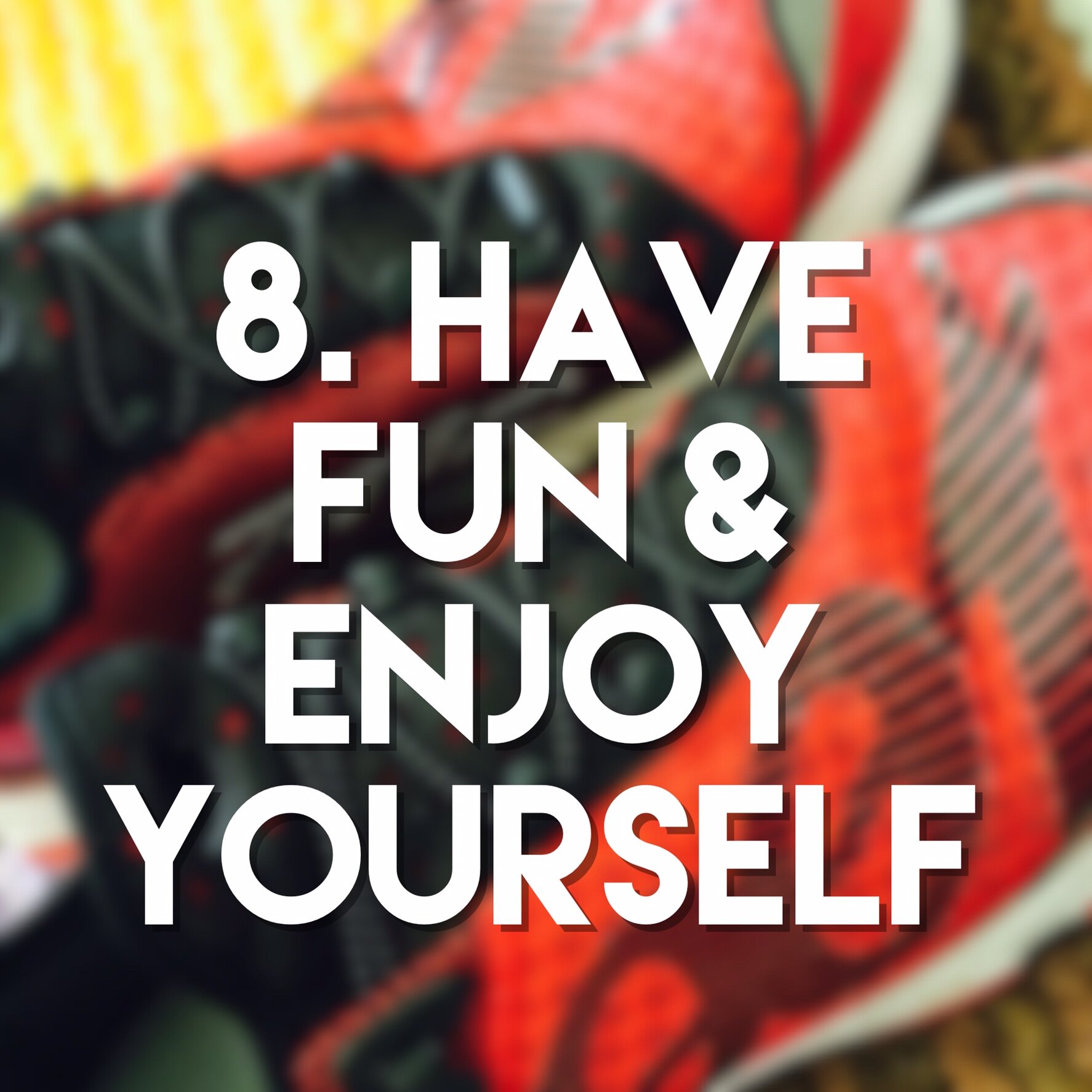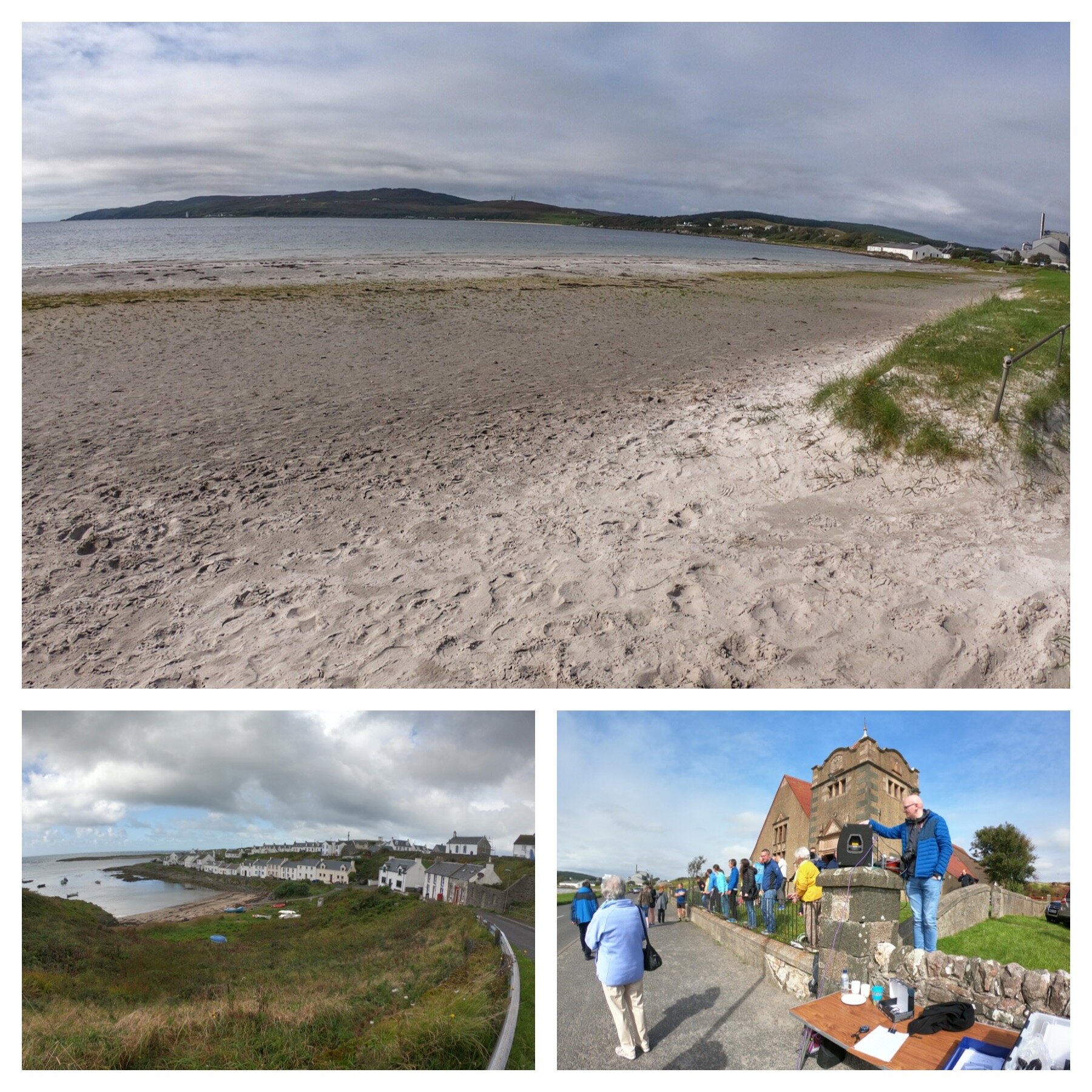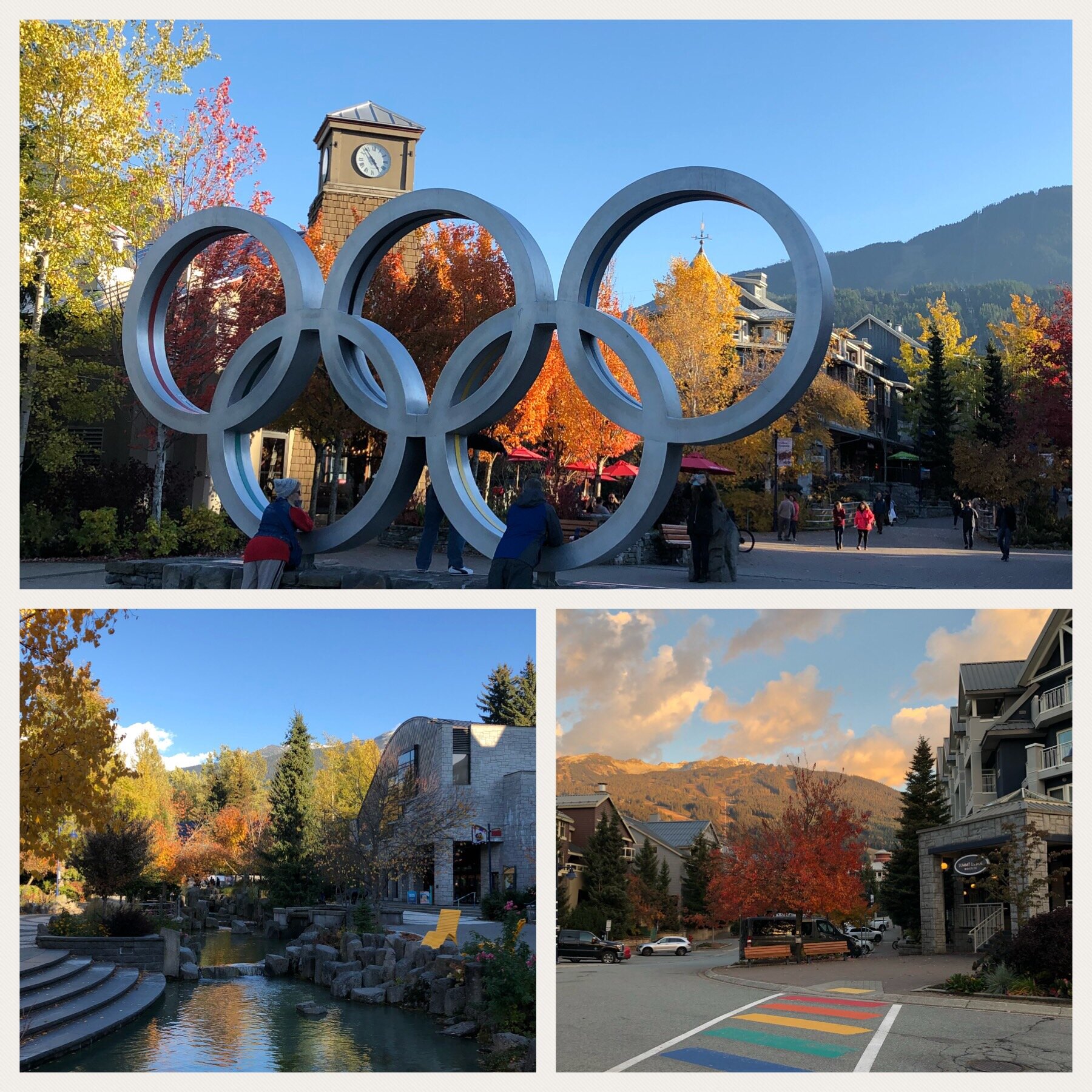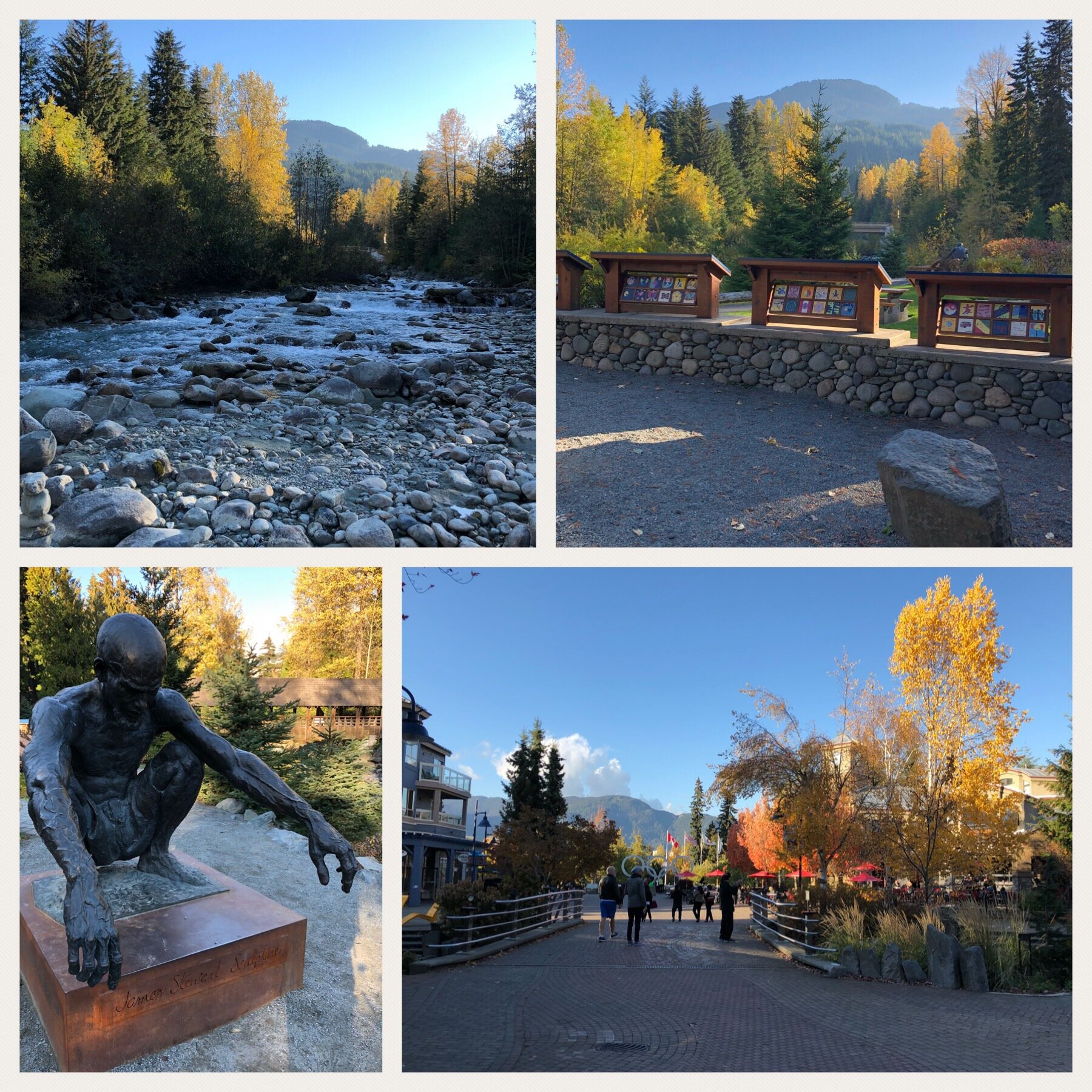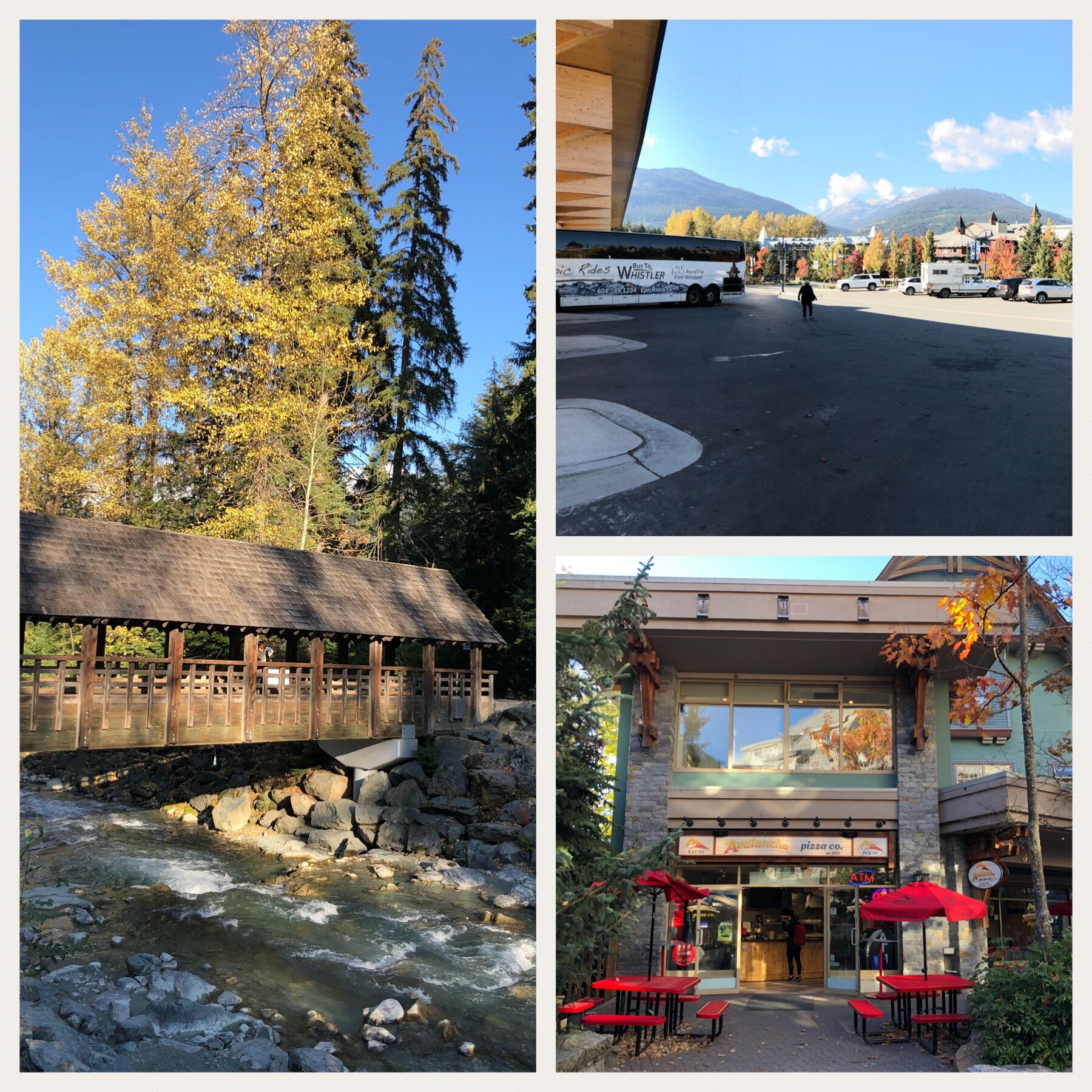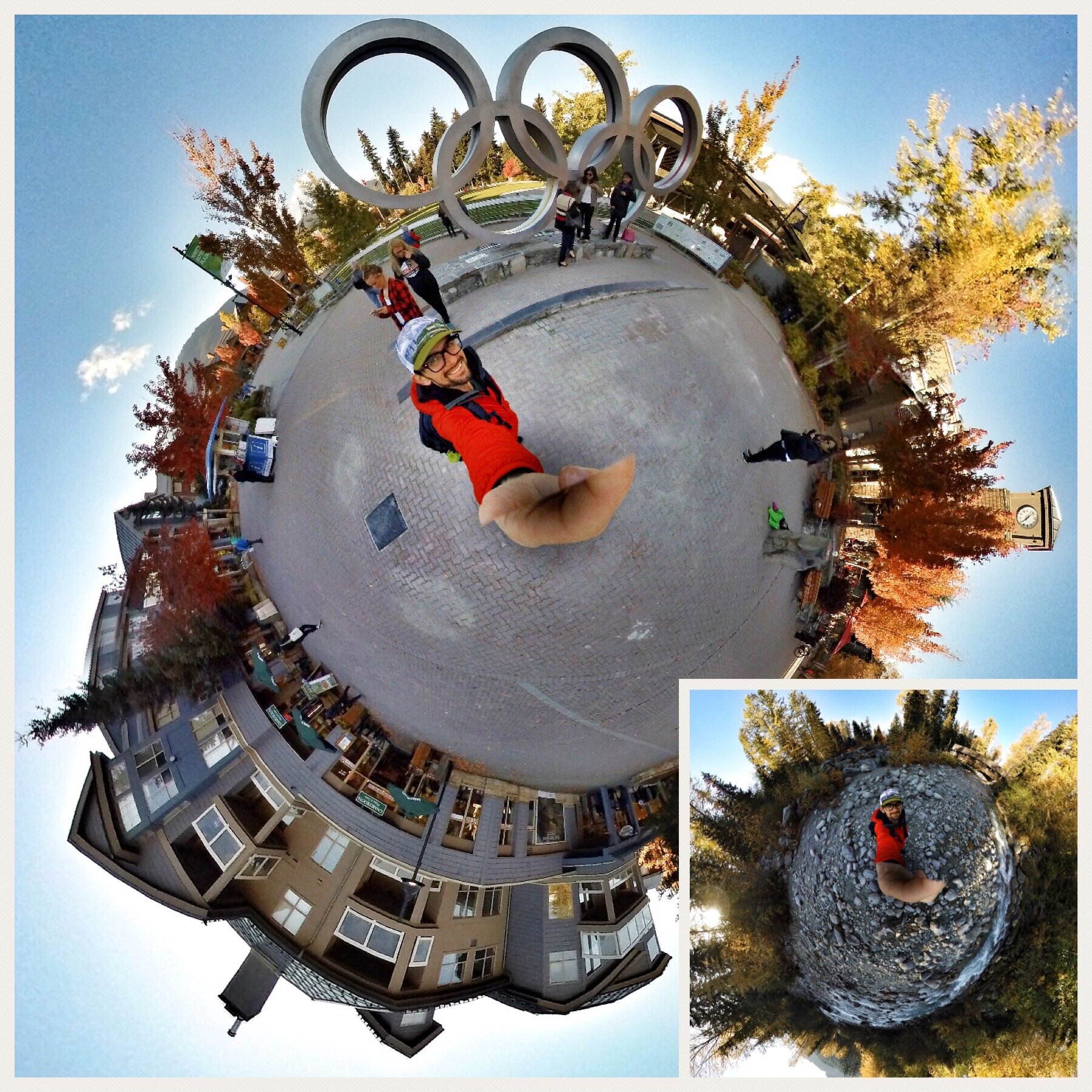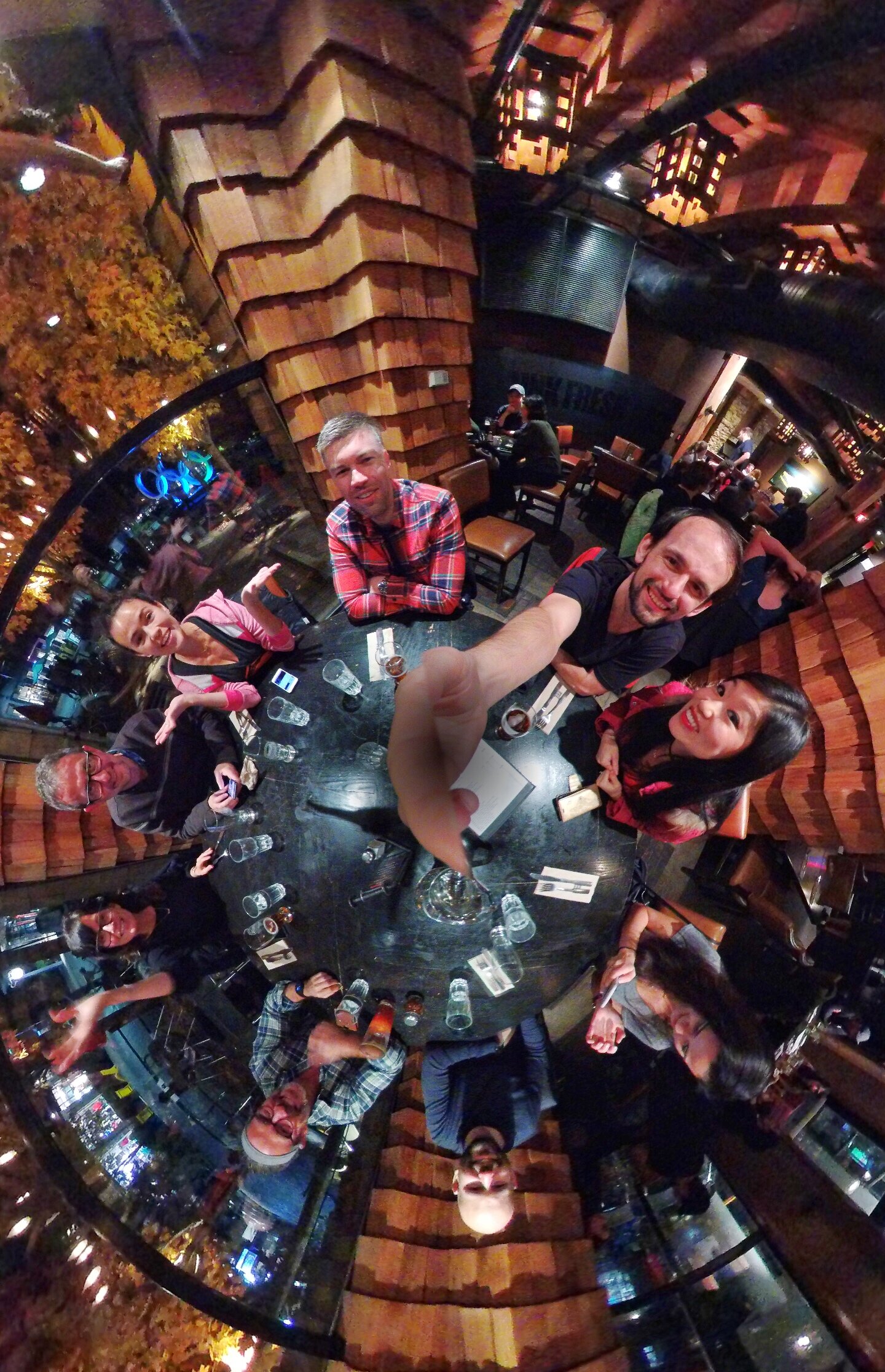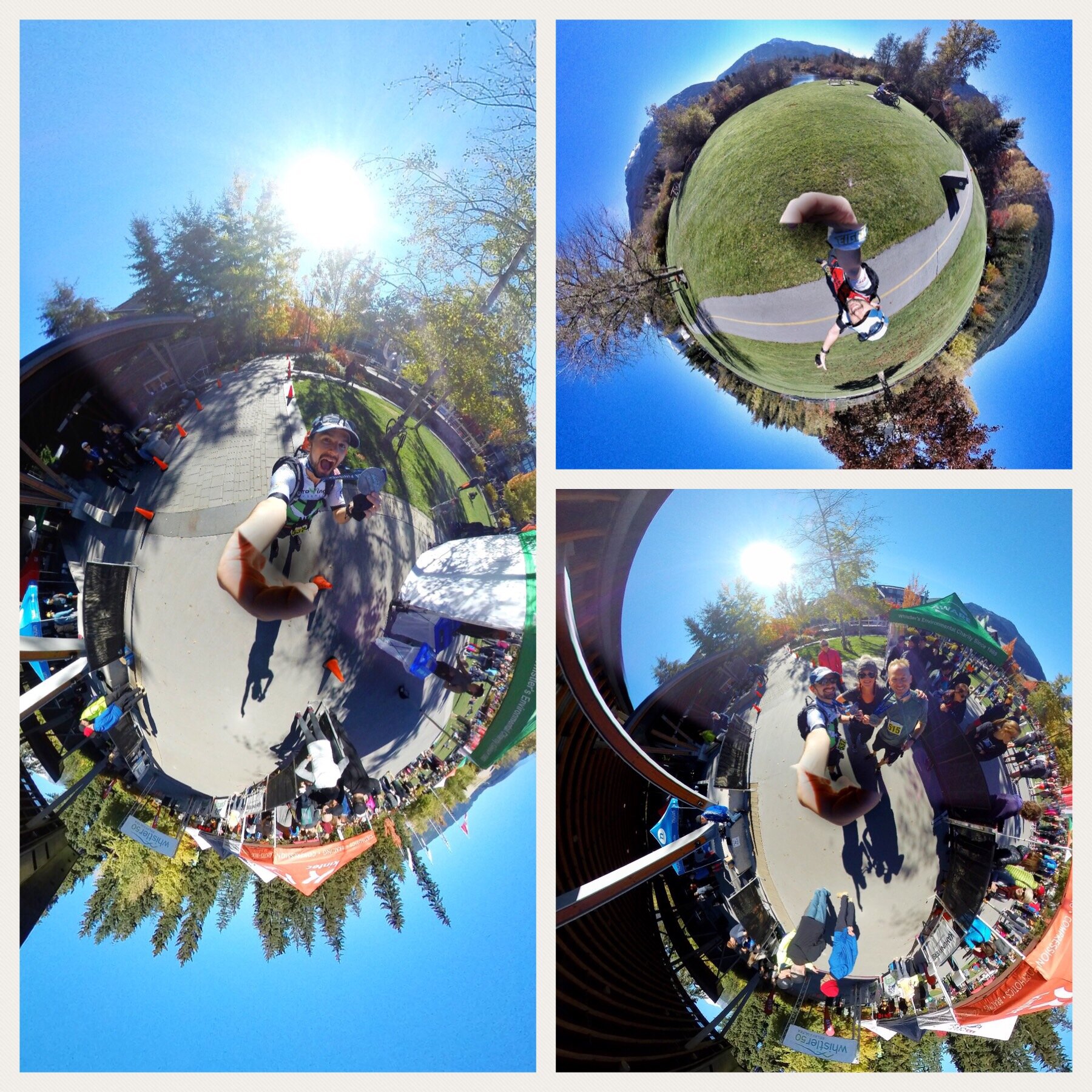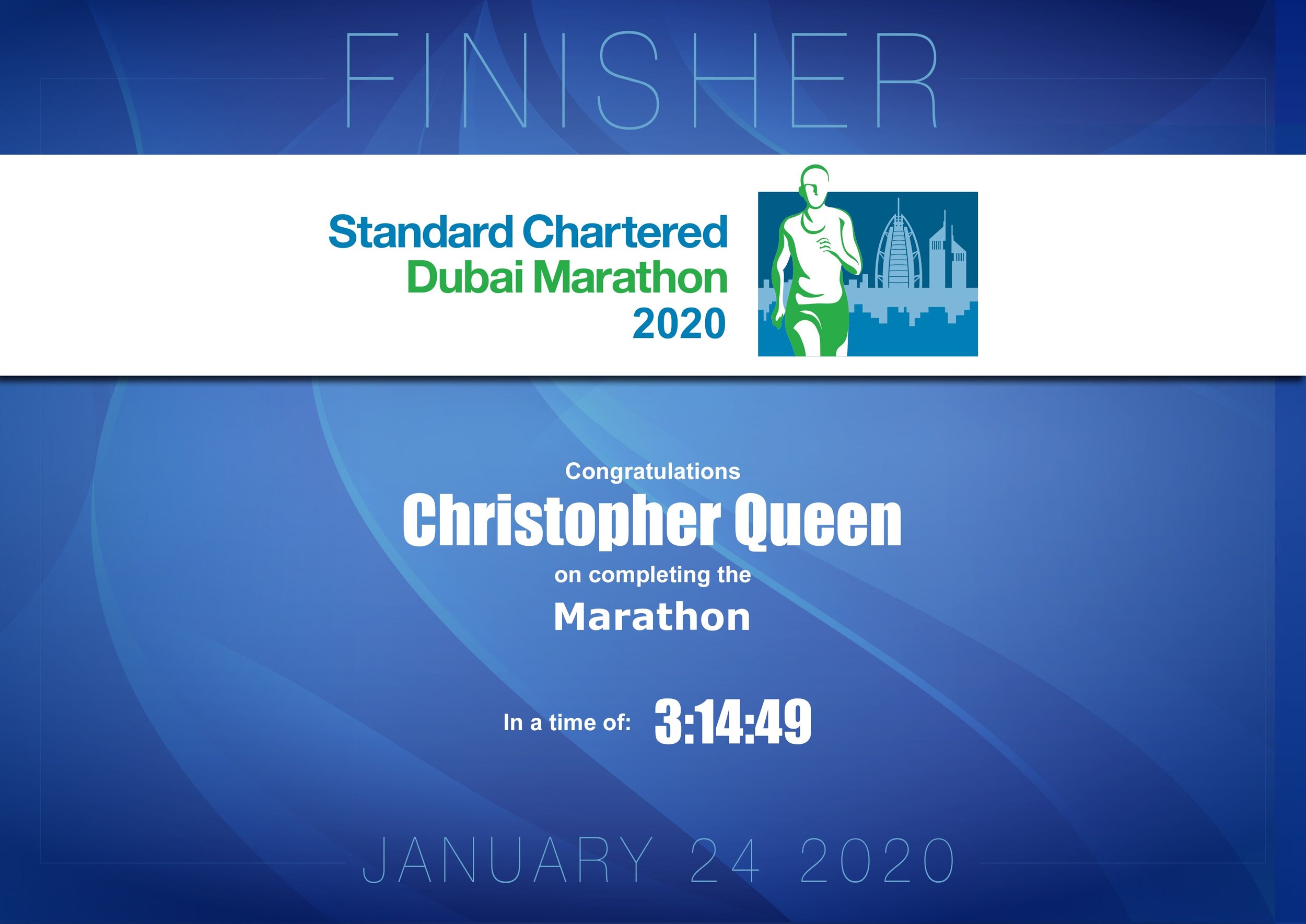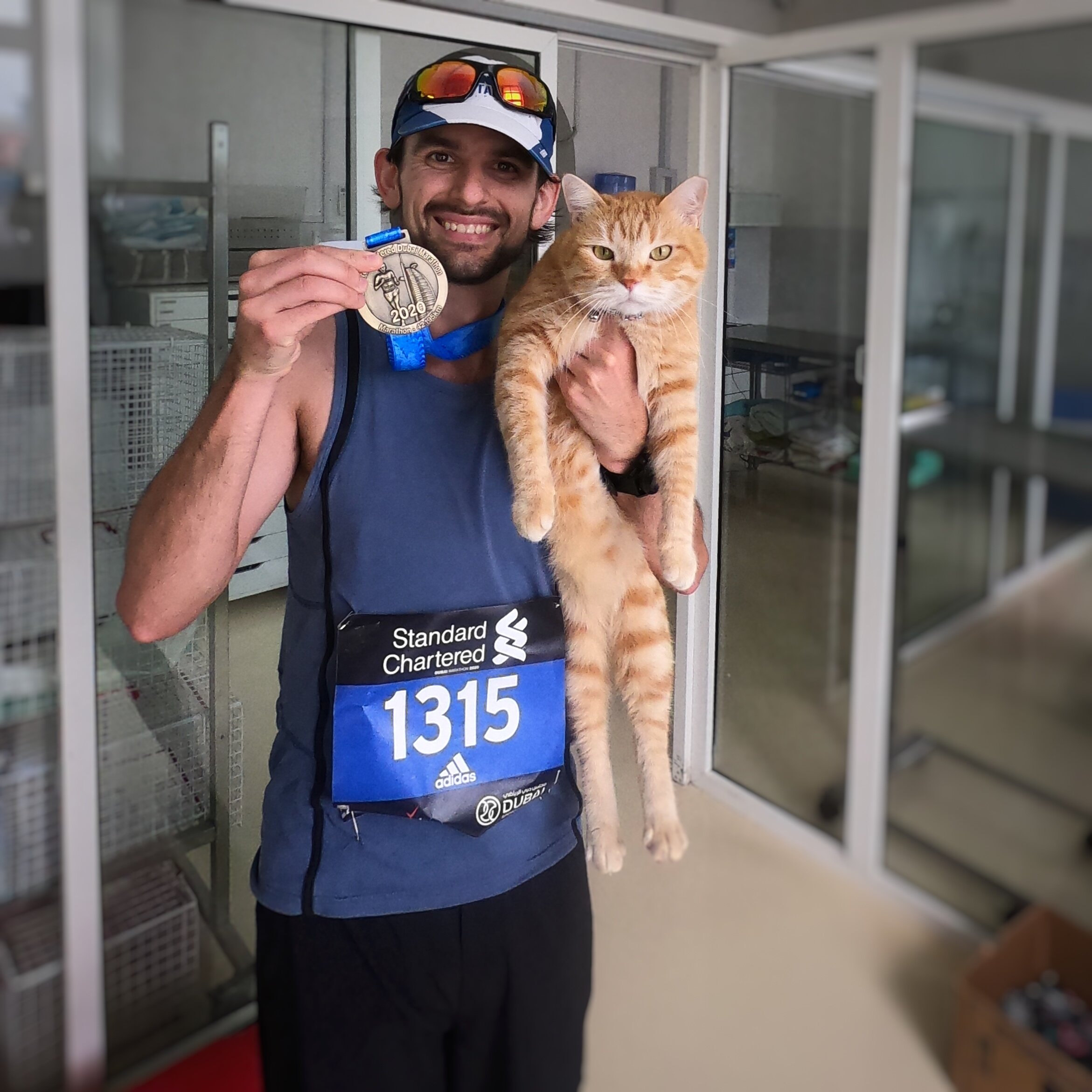Centurion South Downs Way 100
Another 100-miler! The Centurion Running South Downs Way 100 took place over the weekend of the 10th June 2023 and it was a scorcher. A rollercoaster of a race, with epic ups and downs, both mentally and literally given the number of hills to scale and descend. An epic race and one of my most hard-earned buckles to date.
Back At It - 100 Miles
After running the North Downs Way 100 back in 2019 I have to say that I wasn’t really of a mind to return to the 100 mile distance. I would love to say that the NDW100 was fun, fun, fun all the way but a little gander at the video I made of the experience would prove that to be a crock of BS. It was very tough and my finish time of just over 26 hours served to prove that point. 100 miles, I concluded, was rather an insane distance to attempt to run in one go and figured that I’d probably be ‘one and done.’
Well, the funny thing about time and the human brain is that, on the one hand, we are prone to forget all the little details of an experience and event and tend to look back on things with rose-tinted specs, and secondly, endurance events and challenges of any ilk have a natty way of just nestling right into the little cracks in your brain where they sit and ferment and give rise to ideas. “Hmm….. what if I did the South Downs Way 100? It would be nice to ‘complete the set,’ wouldn’t it? It’s meant to be more runnable so it’ll probably be a lot faster and more fun, right?” The second one starts asking questions like these fate is already set.
It still wasn’t certain I was going to do the South Downs Way until the very last minute, for a couple of reasons. First of all, I had relatively recently run the Two Oceans Marathon in Cape Town, putting in a really solid sub-5 hour performance that I was still buzzing off, and so was on a bit of a recovery drive from that, and secondly, I had needed to submit my passport for renewal. If, I told myself, my new passport came back quickly - a far-fetched idea, or so I thought at the time - then I would take it as a sign and enter the race, especially as Sarah, my coach, had advised me that being a Centurion-coached athlete I was essentially guaranteed a spot. I did not expect the UK passport office to knock it out of the park in quite the spectacular way they did and so when my passport came back to me in less than 3 weeks - kudos the UK, not something we get to say very often - it was official: me and the South Downs Way 100 were about to get acquainted!
I went into this 100 miler feeling a lot more confident than I did back in 2019, when the furthest I had run at that point was 85km. Since then I have done the North Downs Way 100, completed the Comrades Marathon, circumnavigated the UTMB route, had a crack at the Cape Wrath Ultra and done the Two Oceans Marathon. Basically, I have done a lot of running over the past few years and so felt that I had a long distance event in my legs and the mental fortitude to be able to get the job done. Besides, the South Downs Way is “much more runnable and faster” than the North Downs Way and so I figured I had this. I knew I was fit enough and so it was more going to come down to whether I was mentally gritty enough on the day.
Planning & Kit
The North Downs Way was a whole new experience and so going into the South Downs Way 100 I did at least have some inkling of what to expect from a 100 mile race, including what worked for me and what didn’t. Having a crew - in 2019 my parents ended up fulfilling this role pretty much by accident - does make a difference, as they can ensure that you have the various bits and bobs that you need at various points along the route, in addition to being on hand to go and fetch some item, whether it be equipment or nutrition, that might make sense on the day. Mum was unfortunately unable to join this year on account of a pre-booked commitment but dad was up for it, as was my sister, Amanda, who also said she’d be down to do some pacing, having commented that it seemed like it would be “fun” when I mentioned having seen other runners with their pacers at the NDW100. She was also going to bring down my two nieces for the weekend so we had the makings of a fun family weekend, one where Uncle Chris does a crazy thing by running from Winchester to Eastbourne in a ‘wunna.’
Documents were prepared, detailing the various crew points and what kit etc they would have with them, whilst I planned out my race by banking on an average pace of about 8km per hour, working out the time I expected to be at each key location. This included a nutrition plan, essentially telling me how much carbohydrate, salt and fluids I should aim to consume per hour, and was printed and laminated so that I could carry it and refer to it throughout the race. This did actually make a difference especially during those parts of the race when my brain just wasn’t operating optimally.
Nutrition has always been my stumbling block and specifically ensuring that I consume enough energy to sustain a consistent effort. Sarah and I also concluded that in previous races, such as the 82km ultra in Al Ula, where I hit the wall at about 60km, I hadn’t consumed enough salt. As such, salt tablets were purchased and electrolyte top-up incorporated into my overall plan. As in previous events, the foundation of my nutrition plan was to fuel mainly using Tailwind - the aid stations were supplying it but I intended to top that supply up - and Hi5 gels, which worked for me at both the Comrades and Two Oceans marathons. As such, what seemed like a metric ton of both Tailwind and gels were ordered online and delivered back home in the UK, from where I’d pick them up before heading to Winchester for the race.
Last year, when I headed to Scotland for the Cape Wrath Ultra, the UK experienced unseasonably wet conditions. This year it transpired that the weather was going to try something completely different as a heatwave was instead predicted. “Hmm….this could play to my strengths,” I thought, although I also know how punishing lengthy periods of time out in hot, sunny weather can be and so was quietly hoping for there to, preferably, be some degree of cloud cover on the day, especially as the South Downs Way route was not known for being very ‘under cover.’ In typical UK fashion, the forecast seemed to flip-flop between “very hot” to “mild” over the days leading up to race weekend, with thunderstorms even predicted at some point during the race. In the end what we got was a classic “scorcher,” which played the key role in how many runners’ race panned out.
Two bits of additional kit that I purchased very last minute, and was incredibly glad to have done so, were a pair of SunGod Ultras, a rather 80’s looking wall of UV-blocking eyewear that did a great job of covering and protecting much of the upper half of my face during the day, and a desert cap, the one with the flappy sides and bit at the back that covers your neck. I was fortunate enough to be able to get both literally the day before the race and am convinced that they played a significant part in me avoiding full-blown sun-stroke.
Winchester - Ye Olde England
Dad and I headed down to Winchester a couple of days before the race as I wanted to avoid any undue last minute rushing and be able to relax a little beforehand, in addition to getting to explore Winchester a little. I booked a stunning little AirBNB in Twyford, a charming village on the outskirts of Winchester, arriving Thursday evening. On Friday we headed into Winchester itself and spent the best part of the day in tourist mode, starting with a hearty breakfast at the Ivy, for a touch of class, before exploring the main sites of the city, from The Great Hall to Winchester Cathedral and the statue of King Alfred the Great. Given how important carb-loading is before a big endurance race plenty of time was carved out for the essential task of eating well, and dad and I left the city feeling culturally and gastronomically sated.
A short drive from our AirBNB was Matterley Bowl, the site of the start line and where we were to register, picking up my race number (514), complete with some additional lilac spots, which I was informed denoted me as a Centurion runner - no pressure there then! There was a demonstration of just how hot and dry conditions were as we drove down the farm track towards the bowl, chalky dust instantly kicked up into the air by the cars in front, rendering the air almost foggy. It did make me chuckle when I saw one car heading out with it’s roof down and it’s occupants looking very much dusted and somewhat like they’d just spent a rather debauched weekend in Vegas partaking in a little too much naughty salt!
I was also given my GPS tracker for the race, which was taped onto my race pack, before dad and I headed back to wait for Amanda and the kids to arrive, and finalise things for the next morning. As far as settings for a race start went, Matterley Bowl was stunning: a truly English countryside vista if ever there was one, with freshly cut rolled bales of hay, a couple of tractors in view and all closed in by a sweeping bank of rich green grassland.
RACE DAY
Needless to say, it’s impossible to get anything approaching a “decent night’s sleep” immediately before a big race so when the alarm went off at 4am I was already awake. Having set out all of my gear the night before, all I really needed to do was shower, 3B and BodyGlide myself up, tape my feet up - in hindsight, I should have taped up more of my feet but it actually takes way longer to do than you think and so I just ran out of time - and then EAT! Amanda kindly drove me down to the start and we arrived literally 5 minutes before the start horn went off, so cut it a little close. However, the upside was that it curtailed any last minute nerves and the stress that ensues from hearing the kind of chat that you hear before something like an exam: “how was your training?” “Oh, I didn’t really train!” Before they then go and smash it out of the park. It’s weird how we do that as humans, isn’t it?!
Once again, I opted to take along a camera, this time actually packing both my GoPro and my trusty Insta360 OneX2, which has proven to be the perfect camera for running events like this as it not only fits perfectly into my race pack side pocket, but captures literally everything meaning I can just pick and choose the shots after the event. I have also mastered the skill of deploying the camera on the run, packing it back without having to break stride. Getting to look back on my NDW100 experience courtesy of the footage I filmed was not only a fun momento of the event, and allowed others to ‘come along for the ride’ but also served a more useful role of being great race-review material. It is inevitable with a loooooong race such as a 100 miler that little details, and sometimes whole sections, of the experience just get forgotten or misremembered. Having a camera on hand means that there is a record of the ups and downs, which makes dissecting the race and learning lessons from it so much easier. Plus, it also records for posterity some of the comic parts, such as me ‘seeing’ an ostrich in a field, only to realise moments later that it was, in fact, “just a path.”
The going was great for the first couple of hours and I was actually about 45 minutes ahead of schedule as I reached the first aid station. I wasn’t even feeling like I was pushing it too hard and so this buoyed me as I considered the prospect of posting an even faster time than the 22 hours I had predicted… But, the hot conditions that had settled over Southern England had different ideas.
My first concern was that despite being mindful to keep fluids going in and taking salt tabs every hour, which coincided with drinking about 500mls of fluid, I didn’t need a piss until about the 25km mark (QECP) and even then it was pretty concentrated, which didn’t feel right! How was I not better hydrated?! My salt intake was pretty high and I didn’t feel like I could drink any more fluids without risking a huge fluid filled stomach and vomiting! I called Sarah (my coach) at this point to discuss the situation and she said I would need to adjust the salt intake according to the conditions and how I was feeling, so more if any dizziness, tingly skin, headaches etc. My big concern was renal failure - I definitely did NOT want to risk that! If I’d have really thought things through though I’d have realised that the issue wasn’t so much fluids but more HEAT. I needed to actively cool myself down, something that I must have actually known at a sub-conscious level as I’d messaged my crew to ask them to try and pick up some ice. The eventual race winner, who had a blinder of a race, enacted a very effective active cooling strategy, stuffing his race sleeves with ice at crew stops and dunking his head in water at every possible opportunity.
The climbs and descents very quickly revealed themselves to be pretty steep as well! Most were on good paths but some were very uneven, hard and challenging on the legs, especially the quads and knees. Hmm… those poles were starting to look more desirable, although I’d opted to leave them with my crew, so would not be getting access to them until the halfway point.
It got progressively hotter as the day wore on and despite doing what I could to cool myself at the aid stations and keeping fluid and salt and energy going in I soon baked! One of the issues was the fact that the South Downs Way does not really have any cover and so we were exposed to the full glare of the sun, coupled with the fact that it is chalky terrain, meaning the sun reflected off the ground and back up at us, much like it does on water. So, cooked from both angles: great for a rotisserie chicken but not so much for a ultra-runner!
There was a cafe just before the Cocking aid station at the 35 mile (56km) mark, which felt as though it coincided with the peak of the mid afternoon heat and was a very welcome respite. I took advantage of having my ApplePay on me as I ordered a slushie and ice lolly! Bliss! Also, just to get some shade. As much as it was tempting to spend more time in that refreshingly cool refuge, I knew that I needed to haul ass and get moving. That’s the thing with long ultras: there will be plenty of points where the thought, “hmm…I could just take it easy here and walk, or even stop for a bit” becomes like a siren call in your head. Resisting the temptation to given in to these thoughts is one of the biggest challenges when it comes to ultra-running.
As I left the Houghton Farm aid station (45 miles/ 72km) I opted to pop in the old ear buds and fire up some tunes, with The Mysterines setting an upbeat mood as I headed towards the Arun River crossing. I was feeling pretty pumped I must say and confess that I was definitely engaging in some furious air drumming as I ran along, needless to say looking like a proper head case to anyone running behind me at that point. This mood was short-lived though.
As I was scaling the next big hill (now, forever christened Chunder Hill) my stomach just decided out of seemingly nowhere to invert and there was nothing I could do but ride the vomit comet, feeling my fuel gauge go from “something” down to “absolutely nothing.” Crap! Not a good development, especially as I knew from previous experience how hard it is to claw it back and keep going after bringing everything up like that. Wow! This race, or more to the point, the conditions, really were kicking my butt!
I mostly walked the next 15km or so (might have been less?! Brain wasn’t really working), as it coincided with the hottest part of the day and I felt like I had NOTHING in the tank at all - I was back feeling like I did at 60km in Al Ula in Saudi Arabia. Like a wisp of a man mustering everything I had just to resist the temptation to curl up on the grass and just stop! I found myself looking at sheep sitting under a big tree with some intense envy! I really began to doubt myself at this point and couldn’t have said whether I was going to be able to finish or not. That’s how utterly shite I was feeling. By the time I was approaching the actual halfway point I was moving on pure fumes and had Amanda joined me at Kithurst Hill (the official halfway point) then she’d have been less my pacer and more my chaperoning carer just trying to coax me to the Washington aid station. When spectators congratulated me on a “great effort,” it was as much as I could do to just wispily mutter “thanks.” There was another cafe (same branding as the one before, at Cocking - some kind of Cycle Club) on the route and so after filling up with water I ordered another slushie, which I sipped on for the next few kilometres. Anything to just keep the fluids, electrolytes and energy trickling in.
On the way to Washington - by now I was about 2 hours behind schedule, so my race plan had been completely torn up and now it was about gritting this out - there was a small crew point at Kithurst where a very very nice lady took my empty slushie cup and then another lady sprayed my face with cold water and popped some ice on my neck. Clearly seeing how f****d I looked she kindly guided me to her and her team’s car, encouraged me to sit down, gave me some Coco Cola, Gaviscon tablets, mini cheddars (for the salt) and then a bit of sausage roll, “for the salt and fats.” I nibbled away at that before I started to feel a bit more human and got underway again. What heroes! I reckon thanks to that team and their kindness I made it down to the Washington aid station without collapsing and it set me on the path to recovery for the next part of the race. She also gave me a couple more Gaviscon tablets in case I needed them later, which I did the following morning, when I started to get that all too familiar feeling of nausea encroaching. Thankfully after chowing them down I was able to avoid another chunder episode.
The Kithurst Hill Heroes
I made it to Washington aid station feeling utterly spent! I was fully of the mind that I was probably beaten and that I’d be calling it a day at this point. “Well” I thought. “It was a long shot and I hadn’t really trained specifically for it - even though I had really; I was definitely race fit - and 100 miles is an insane distance to try and run, and……” So many reasons and justifications I was giving myself to just make it all stop. “If I stop now then at least I can spend the next day with my nieces and it’ll save Amanda having to pace. But then again, won’t she be disappointed that she’s come all this way to pace me and so if I stop now it’ll have been a waste of time for her.” What an absolute bunch of mind-fuckery at play! As Sarah correctly said though, all it meant was that my stretch goal was no longer in play, so the objective was now simply to finish and to do so before the 30-hour cutoff. That’s the nature of these endurance events: you make plans and then adapt as the situation, conditions etc change. It’s a great metaphor for life in general: sometimes shit just gets in the way of best-laid plans. What was I going to do? Get pissed off at the weather?! 😆 Of course not - that’s just the way shit panned out: the race coincided with one of the hottest days of the entire year so far. What to do?!
So, as it turned out, an hour (and a bit) of rest, a couple of bottles of Lucozade Sport and a small bowl of pasta was what I sorely needed! I also tended to my quite sizeable heel blisters, draining them much to the disgust of Amanda, before applying a dressing to each and taping over them, which whilst it did not dissipate the discomfort did at least cushion them a bit. Blister care is something that I learnt from the Cape Wrath Ultra and thanks to that race I had a decent blister kit on hand.
A change of T-shirt and socks helped dissipate my overall feeling of ickiness and I also swapped out my hat for my normal cap, retiring the desert hat, in addition to donning my more normal pair of sunnies for the final couple of hours of sun. The Ultras had served me very well today! A good purchase indeed! I had initially intended to change out my shoes, swapping the Hoka Speedgoats for my trusty Salomons but as soon as I put them on I knew it was going to be a mistake as they seemed to press right in the spot near the heels that the big blisters had been. Best stick with the Hokas! Amanda did a great job charging my various devices, although the batteries on everything were holding up pretty well - hurrah for modern battery technology.
I opted to take my poles with me for the second part of the race, although had a total mind failure when it came to recalling how to attach the quiver, with the assistance of one of the volunteers and then a couple of other runners forthcoming, which was a tad embarrassing. The irony is that I didn’t actually end up using them at all, as I think I was mindful of what Sarah had said about the danger with poles is that it takes up your hands and so you’re less inclined to eat and drink as much.
I definitely felt well enough come the end of the hour to press on and agreed with Amanda that she’d pace me until the next crew point, which was about 20km away, and then I’d make a decision about whether to continue or not. I think, however, we both felt a bit intimidated by the distance as Amanda had not run anywhere close to that kind of distance before, the hill climbs were certainly meaty to say the least and the concern was that far from pacing me she would end up holding me back. This became apparent as we started up the very first hill and Amanda started dropping back already. The decision was therefore made collectively that it would be best if she headed back to Washington and got dad to circle back for her, whilst I pressed on and met them at the Devil’s Dyke crew point. This turned out to be a good call as I actually felt quite good and picked up the pace significantly once the climb levelled off and it opened up. As such I found myself sailing past runners and their pacers who had earlier passed me when I was in husk mode, something I don’t think would have been possible if we were limited to a pace Amanda could sustain. She is fit and active but endurance races like this, especially trail races, are very unique beasts and so it was a tall ask in the first place to expect her to step in with no actual trail experience. If she’s keen to have another go in the future then it would be a pleasure to have her along and I’d try and ensure we got some proper training in together beforehand.
The going did get tougher after the next aid station, and I also found myself eventually having to engage the head torch, something I’d been putting off until the very last minute both to conserve battery power and also because acknowledging that it is now nighttime represents quite a big shift in mental space during a race like this. The next couple of hours served up some big, relentless climbs and traverses across some wide, open fields as the route headed towards Devils Dyke. Mercifully, Centurion’s expert route marking once again made navigating simple enough, although some of the wide open sections did see the markers spaced quite a distance apart. At one point I saw a flashing red light off in the distance and concluded that it must be some kind of beacon on a gate. Weirdly though it took a lot longer to get to it than I had expected, the reason revealing itself to be that it was actually the back of a runner’s head-lamp! Lol! I told her how I’d mistakenly thought she was a static beacon and had felt myself going slowly crazy as I tried to get to it! Ah, what ultras will do to the mind!
As I reached Devil’s Dyke there were a group of people standing by the road, which made me think they were just waiting to pace runners and so I nearly continued on down toward the aid station. I’m glad I actually took a beat though and asked if that was in fact the crew spot as it transpired that crew had to park up along the road there whilst the actual aid station was the next stop WAY WAY DOWN the hill, which would have made returning to meet dad, Amanda and the girls a slog that I would NOT have been prepared to make. I called them and found them just down the road. Unfortunately they hadn’t managed to pick up any more of the Lucozade Sport drink that I feel had done such wonders in restoring me at Washington, so that was a bit of a disappointment as I’d actually been really looking forward to chugging down a couple of bottles. One item I’d asked them to get earlier in the day and that was duly made available at Washington was some cooling muscle spray. Aah, bliss! I remember how nice it felt to have my legs sprayed during the Comrades marathon and considering I did NOT dare take any pain killers on account of the whole “hydrated/ not” concern I took the bottle with me and sprayed my legs and shoulders several times more over the next several hours.
I did eat some rice pudding at this crew point, although by now my nutrition “plan” had gone well out the window. I actually don’t seem to be able to tolerate Tailwind and/ or gels for any more than about 60km as I then just find myself getting really sick of them, and as it turns out, actually sick. As such, my intended plan of either 500mls of topped up Tailwind or 500mls of the aid station Tailwind and two gels per hour did NOT last. Amanda had given me some Dextra energy tabs, which were quite good as I was able to just suck on them, but they weren’t going to sustain me. As such, I did my best to sip at the fluids I had then nibble on some real food at the aid stations, including getting on board with the hot, sugary tea. Once I’d said “yes” to the tea I knew it was definitely the “night-time” portion of the race for reals. This was also going to be the last point at which I saw my crew until the end, although Amanda ultimately decided to head back to Norfolk that night so I didn’t get to run across the line with my nieces, which was a shame.
Housedean Farm was the main aid station of the overnight portion of the race, sitting at the 77 miles (123km) mark. They’d set it up in a large farm building, so it was well sheltered, and I joined the circle of weary runners taking time to drink some sugary tea and enjoy the “treat” of cheesy beans that the volunteers had knocked up for us. Still, feeling my eyelids being super heavy I made a tactical decision to find a space further inside the shed, propped my feet up, set my alarm for 15 mins, covered my eyes and tried for a power nap. I’m used to this tactic from night shifts and I know that even if one doesn’t properly ‘sleep’ just the very act of resting one’s brain for a short period can be incredibly rejuvenating. You have to be disciplined though.
As I was leaving this aid station it felt chilly (probably because I’d stopped for a period of time) and so I donned my race sleeves and wore my buff as a neck cover. However, these lasted about 15mins before I went back to just a T-shirt. It turns out it was still a pretty warm night. Much of the next few hours are not especially clear it has to be said, as I just put my head down and soldiered on, knowing that dawn was going to be breaking before too long. I do recall getting to a bridge and then a railway station (Southease), over which we had to cross by a bridge, before arriving at the YHA aid station. There was then another steep climb. At some point I was convinced I saw an ostrich in a field (I could also see the White Horse - a famous landmark, not another hallucination - on a distant hillside) but then realised it wasn’t in fact an ostrich but just a path junction at a specific angle - delusions had set in.
The sunrise was phenomenal, with incredible views out across the downs to the sea and so much birdsong! It was beautiful and getting to experience the countryside and the crystal clear views across rolling countryside to the north and the English Channel to the south made putting myself through the last 24 hours worth it. It was exciting to get to the penultimate aid station at Alfriston (92 miles/ 147km) and then the Jevington (96 miles/ 154km) one had the bonus of fresh strawberries - yum! That was a wonderful little pick me up as I headed out for the final stretch up to the trigger point and then - hurrah - the final, narrow, steep, overgrown descent into Eastbourne and the final few kilometres through town, past the hospital and what then felt like a much longer run than I recall from the video to the sports ground. Yes! I’d done it! Another 100 miler in the bag and dad was on hand to cheer me in as I hit the track and found a final sprint in my legs.
What an epic odyssey this 100 miler had turned out to be. Not the race that I had planned, despite it looking like it was going to go better than expected early on, and it just proves that it is important to be adaptable and ready to adjust to prevailing conditions, constantly assessing and recalibrating as live data (both internal and external) comes in. A metaphor for life in general really.
With another Centurion Running 100 mile belt buckle in my possession I snapped a few finish-line photos, including with Race Director and Centurion owner, James Elson, who I am sure every runner feels like both hugging and throttling in equal measure during an epic event like this. The work that goes into planning, organizing and then successfully staging a race like this is staggering and I know the volunteers and race staff, including James, put in significantly longer hours than any of us runners do, so I am incredibly grateful to them. They really do stage some of the very best races in the UK.
Finish Time = 26 hours, 39 minutes, 15 seconds
108th overall (out of 192 finishers & 339 starters)
91st male (out of 156 males to finish)
A huge thank you to…
Centurion Running - for putting on such well organised and superbly staged races.
Sarah Cameron - Centurion Running coach extraordinaire. Without Sarah’s expert advice & coaching, and unwavering faith in my ability to get races like this done, I may well have been among those who DNF’d this one.
Mum & Dad - my chief crew members & cheerleaders.
Amanda, Laila & Amelia - thanks for turning out for the day & lending support.
The Kithurst Hill Heroes - I have no idea what their names are but they may well have saved my race through their assistance & care. Races like this rely so much on the kindness of strangers, so thank you once again.
Post Race
From Eastbourne, dad and I headed back to Brighton and our AirBNB for the next two days. A delightfully welcome bath - I did nod off at one point, which was a bit dangerous - and a couple of hours of sleep later I felt human enough to head out with dad to stroll the Brighton beachfront, taking in the weirdness of the pier, before finding a superb Indian restaurant for a truly delicious dinner. After essentially sustaining myself on mostly gels, Tailwind, Coca Cola and sugary tea for the last 30 hours, getting some proper food on board was wonderful! Back to the house and I conked out, sleeping soundly until the next morning, my legs actually feeling quite good all things considered.
Looking back on the race, once again, I think nutrition wasn’t my strong suit - I seem to struggle with gels and Tailwind (anything too sweet really) beyond about 50-60km as my stomach starts to reject them, and think that in hindsight I should have used the 1000mg salt tabs dissolved in water for electrolyte replacement rather than popping the capsules and drinking plain water. I also wish I’d realised the vital importance of actively cooling myself early on and really pushed harder for my crew to get ice, which I could have stuffed down the race sleeves I had with me and/ or wrapped it in a buff to carry. Cooling it seems was definitely the key to having a great race on a day like that and I do wonder what kind of race I might have had were I to have had in place an effective cooling strategy(?)
I ended up carrying WAY TOO MUCH stuff with me in my pack, including a lot of nutrition that I just did NOT use, such as most of the Tailwind individual serving packets I had and two sachets of baby food that I transported from Devil’s Dyke to the finish like some mental Tesco delivery man who’d lost his van. One item that my crew did get for me and that I opted to carry from Washington onwards was a can of cooling muscle spray, which I applied to my legs and shoulders at each stop, and that really did help keep my legs moving well and without any real discomfort. I chose not to take any painkillers - I just didn’t feel comfortable given my hydration status - and so the spray really helped. I’d definitely include this in any future drop bags for big races.
As far as crewing goes, it really is nice having a dedicated group of friends or family on hand to be a familiar face at various points and ensure you have what you need. There is also a real art to doing it really well, as you essentially become the running equivalent of a film-director. As for pacing, although the experiment with having a pacer on this race failed early on, I am not sure I’d necessarily do that well with one. I am a bit of a lone wolf during events like this and tend to get lost in my own head. I think if I were to have a pacer with me then they’d probably need to be comfortable with me not saying a whole lot for lengthy stretches of the race. Having said this, maybe I’d surprise myself and become a chatty motor-mouth?! Maybe I’ll get to test this out at the next one. God! Look at that….. I said NEXT ONE. There’s no helping me!
Jebel Jais Flight & Sky Tour
What better way to spend a Saturday in May in the UAE than by heading up to the highest mountain in the country, Jebel Jais, and spend hours playing on ziplines, zooming about the place and pretending to be an elite Commando and Proximity Base Wingsuit pilot all in one incredible experience.
Toroverde have created something pretty special up there & I was fortunate enough to get to experience both the Jebel Jais Flight (120kph over 2km of straightdown anyone? Yes please!) and the Jebel Jais Sky Tour (an exhilarating exploration of the mountain by one of the best transport systems there is: zipline!).
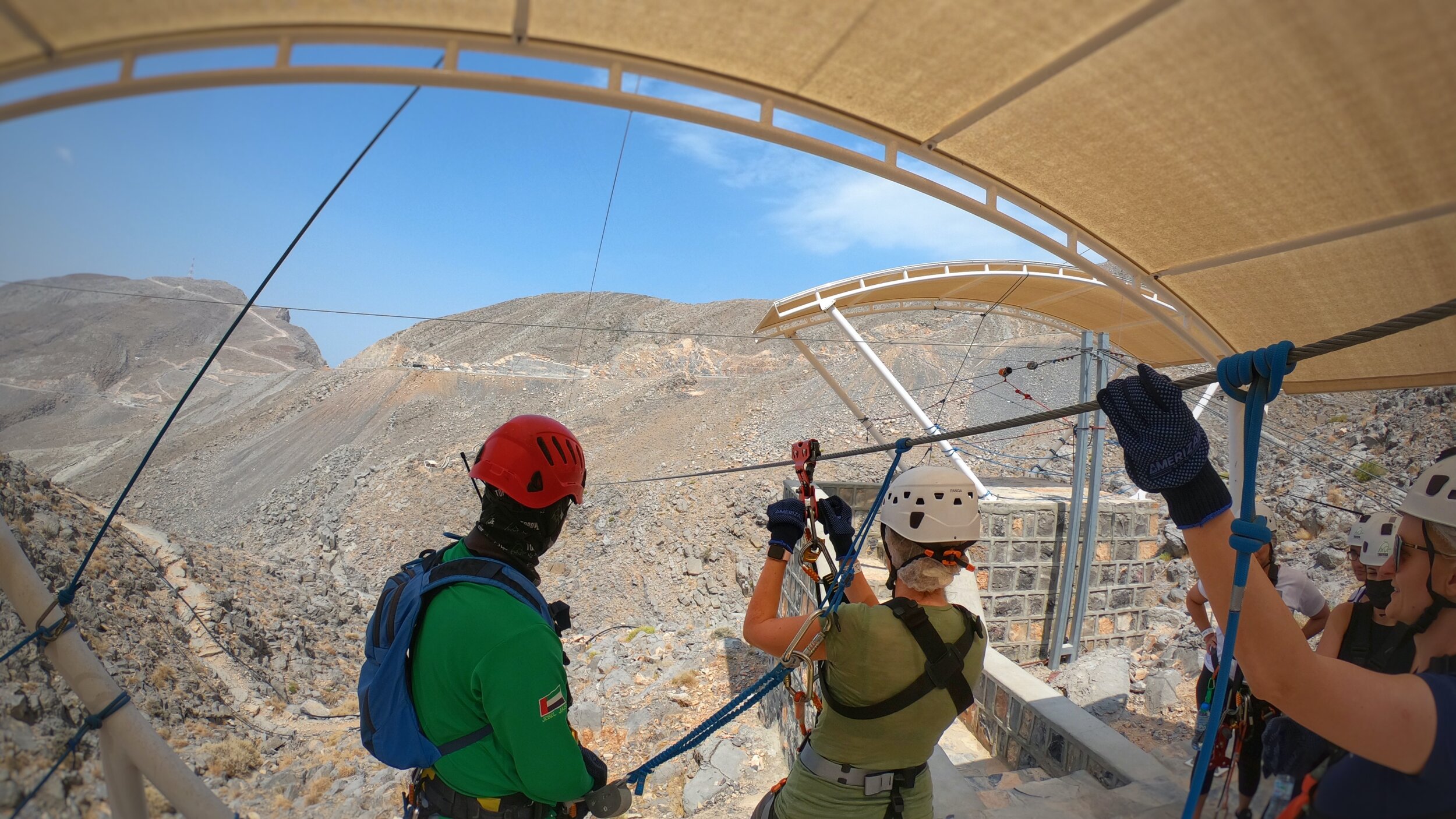




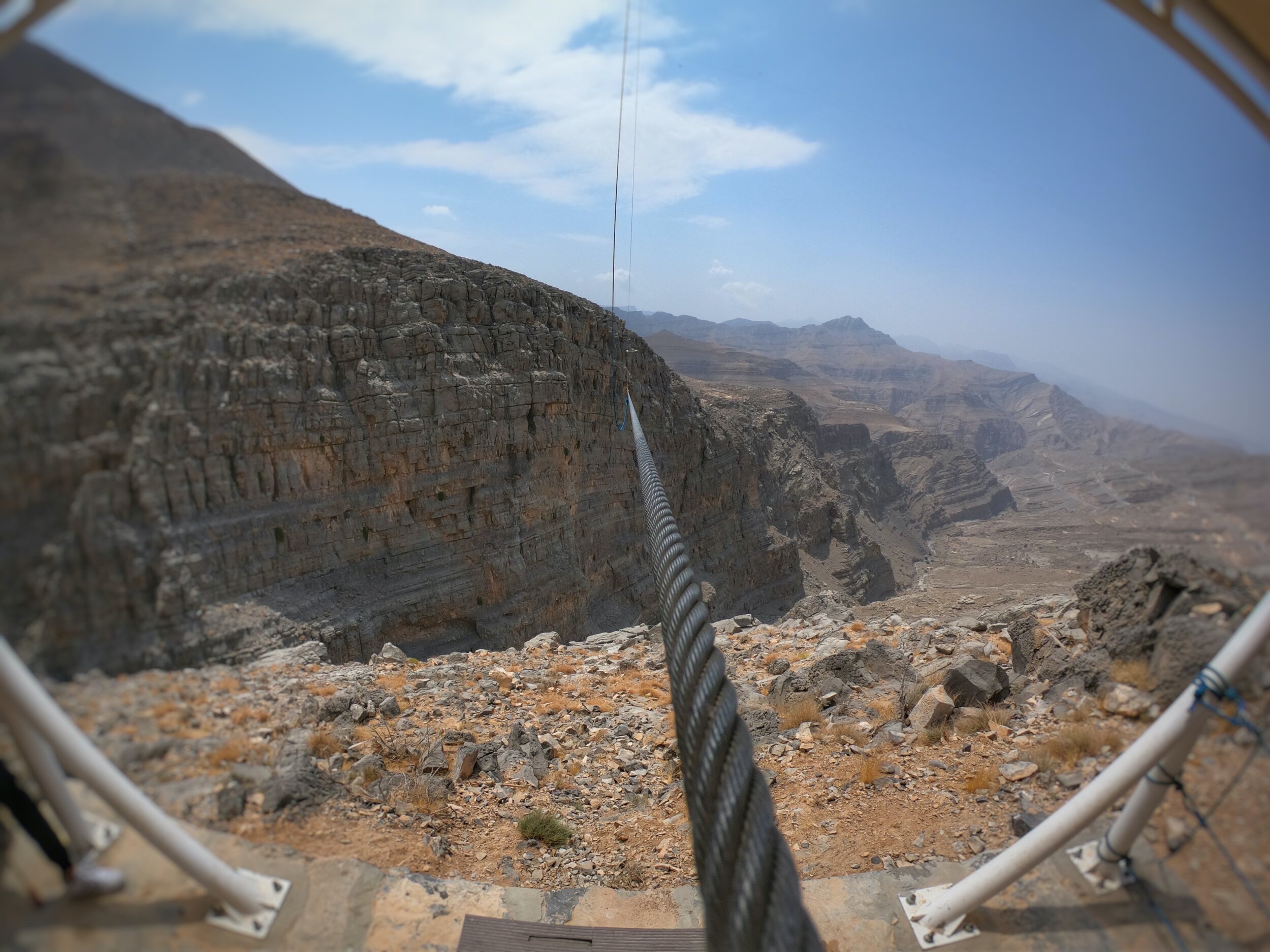


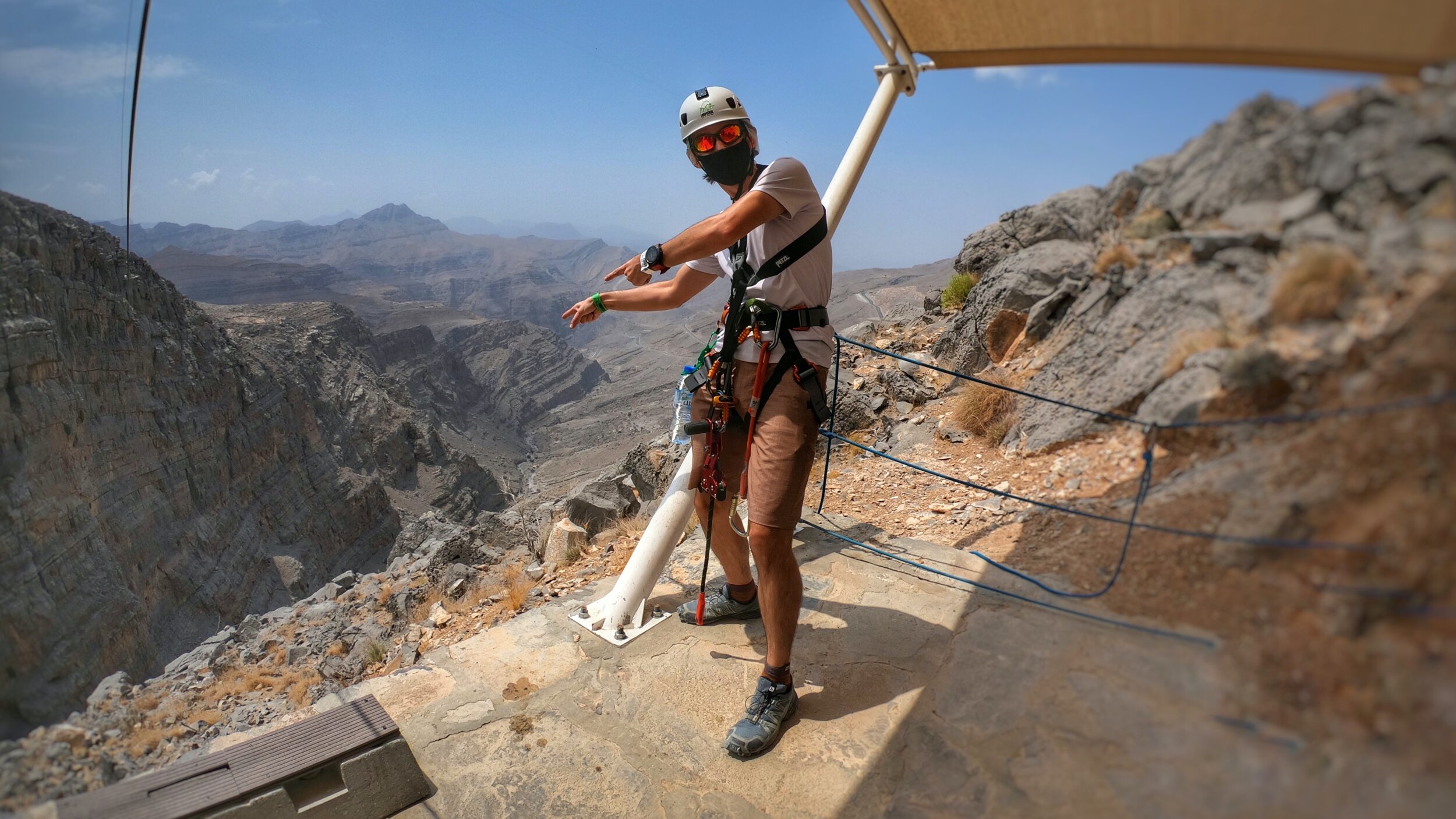
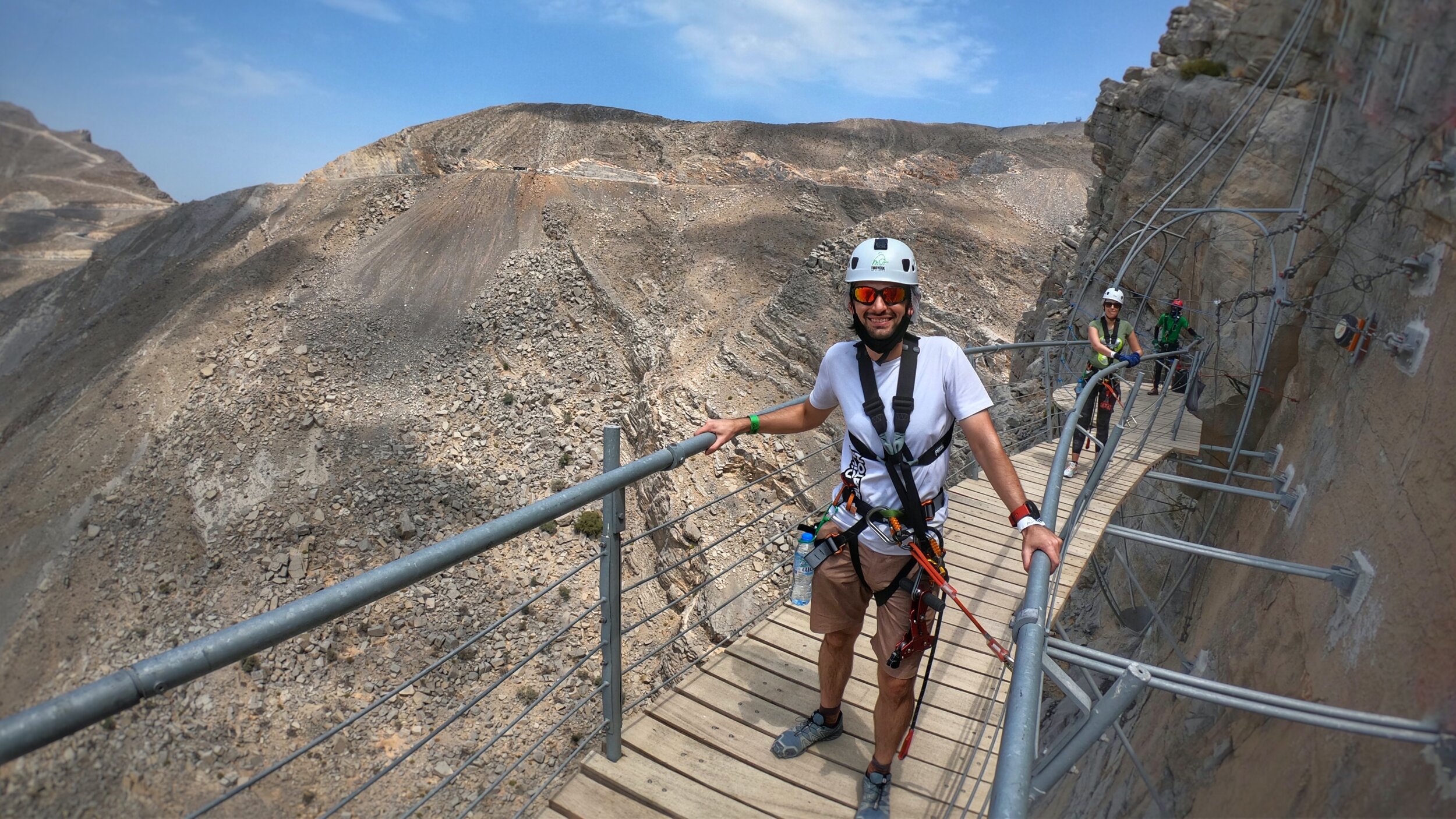

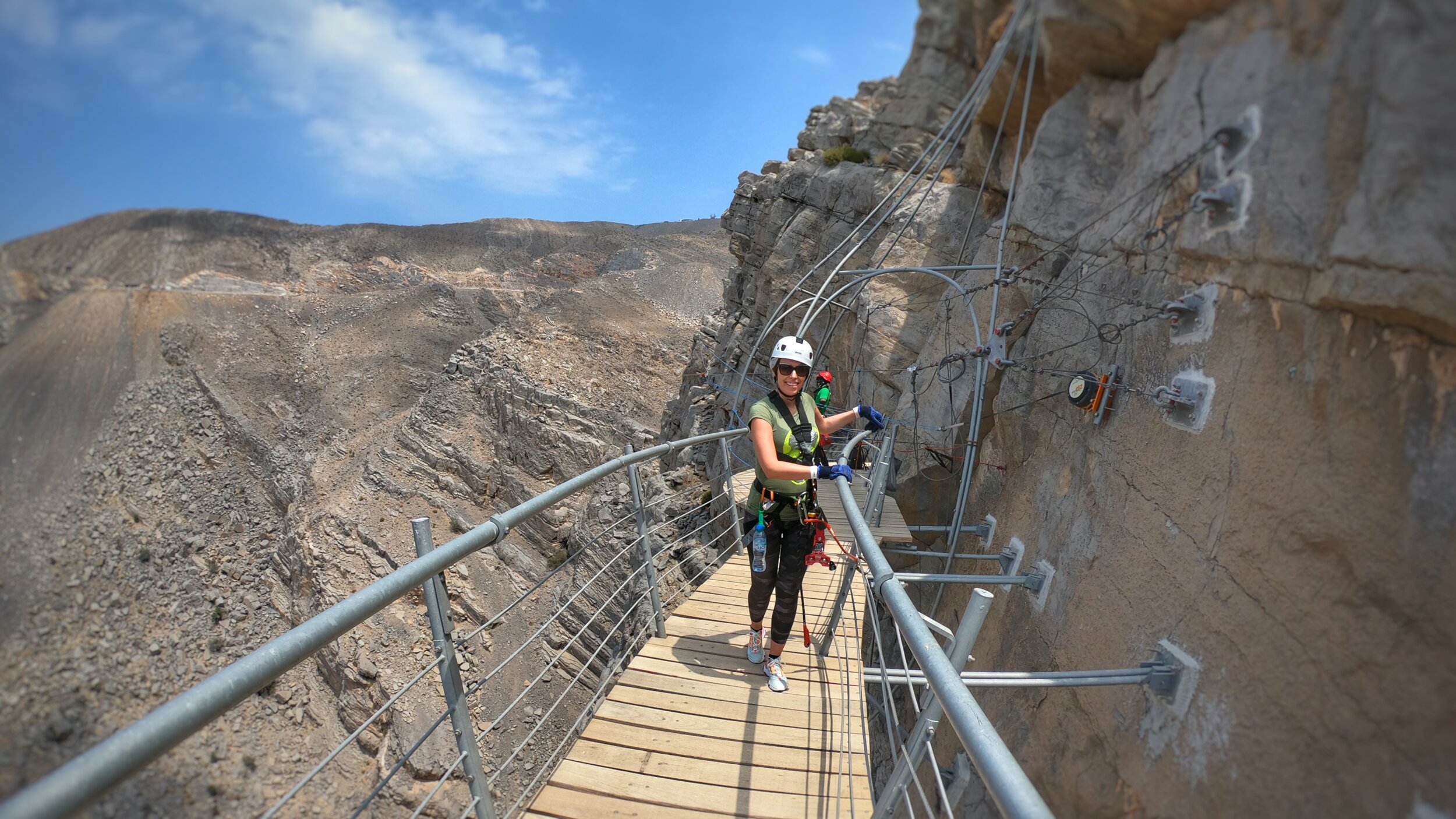
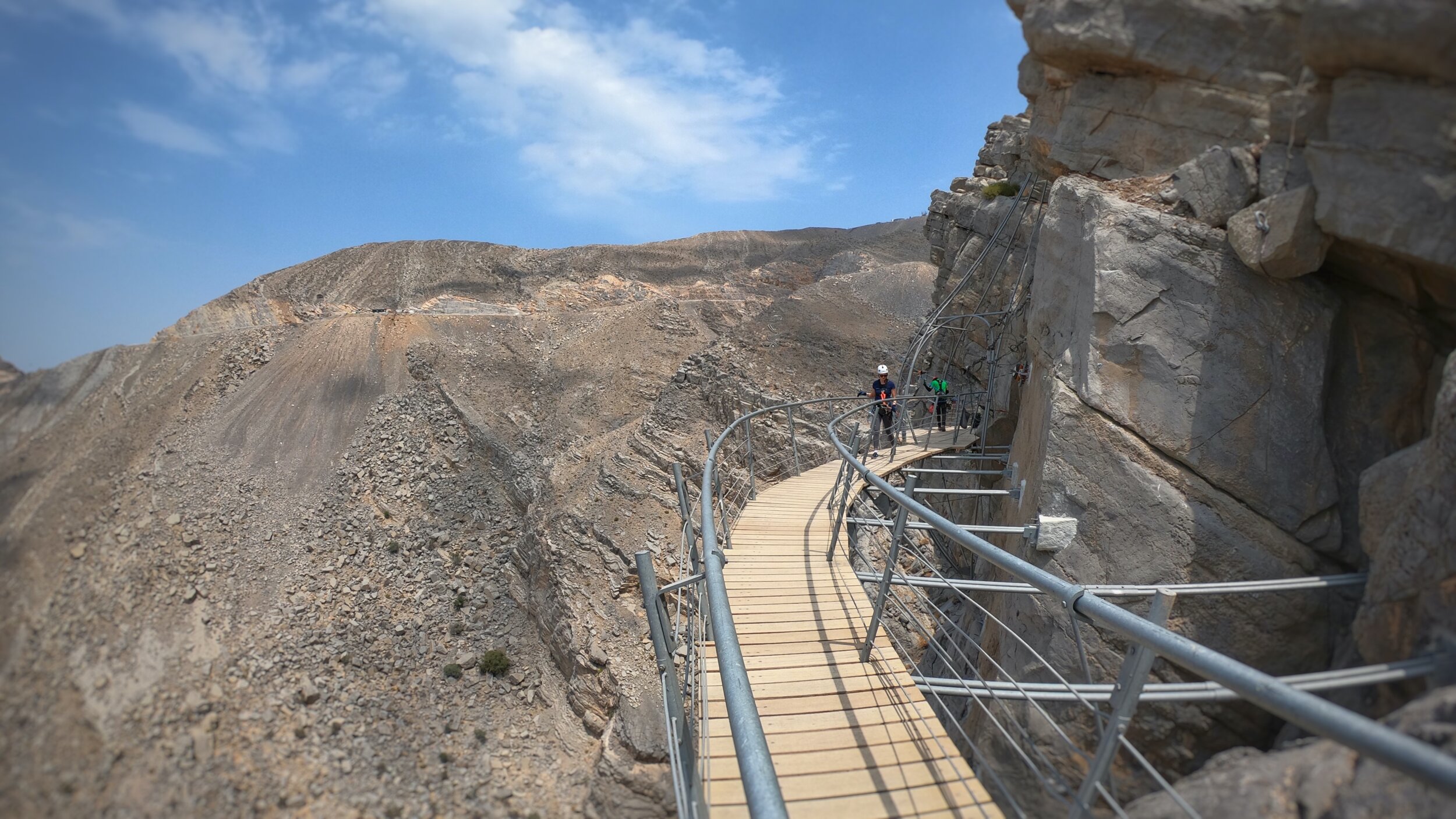
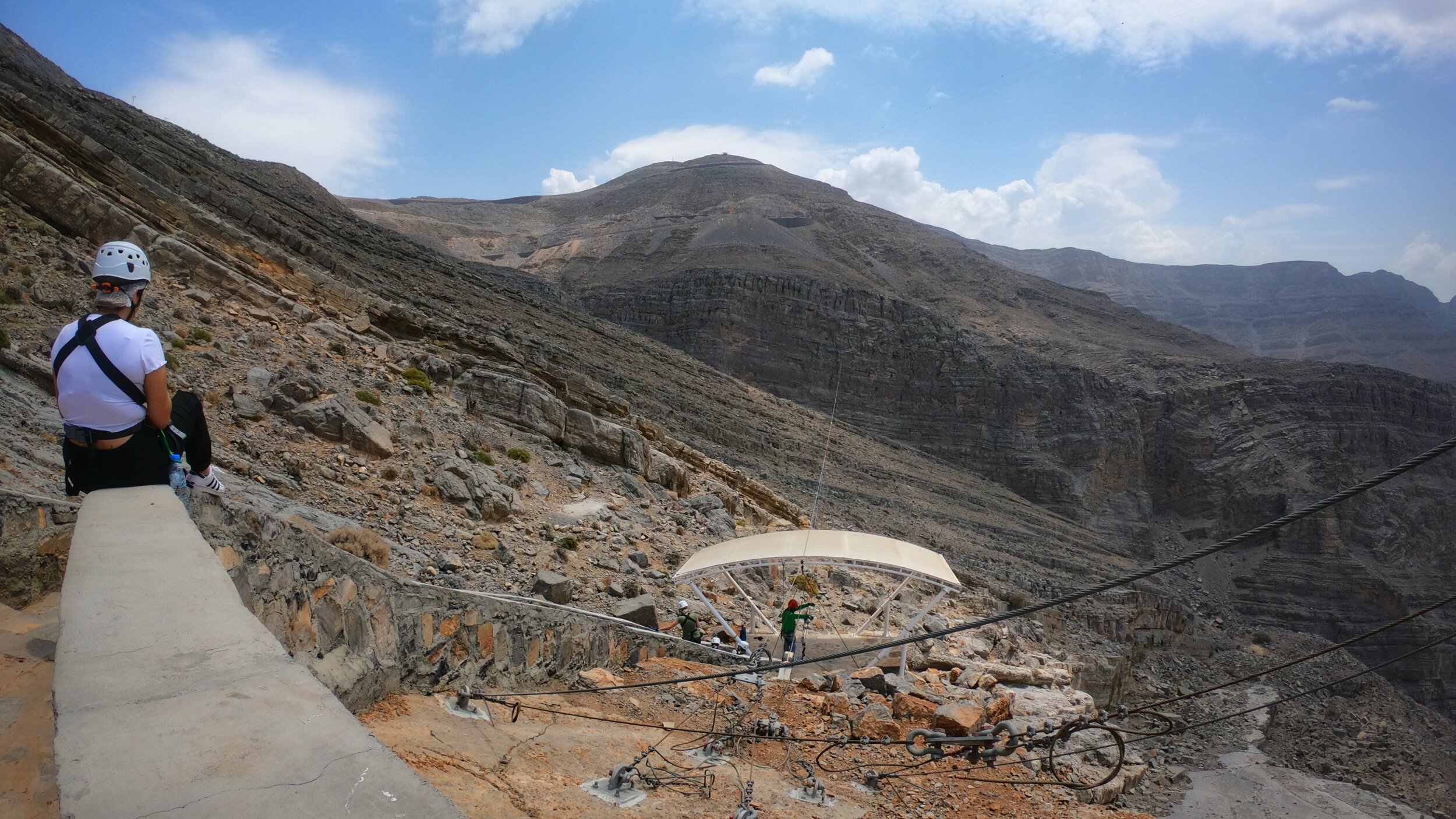
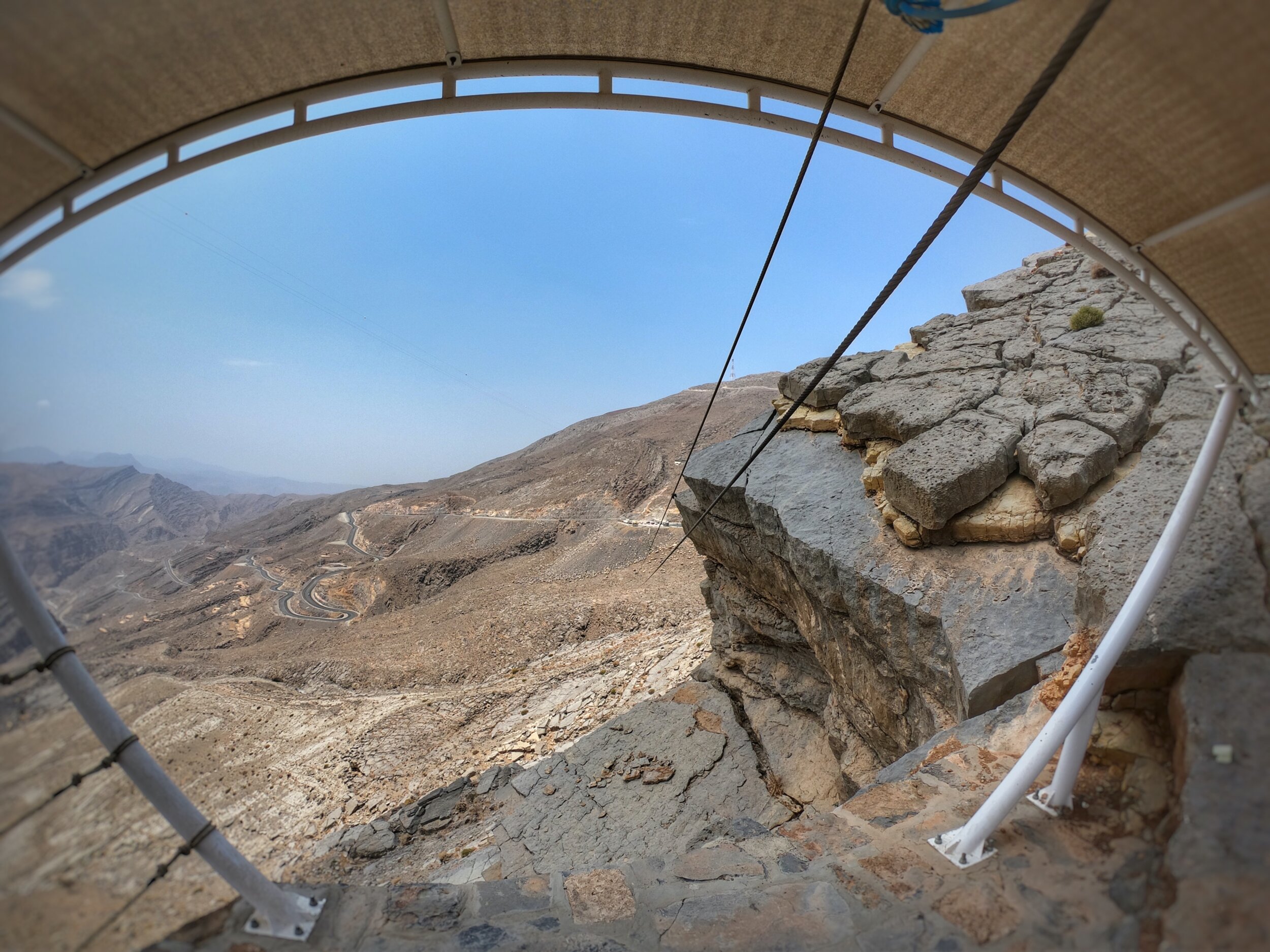
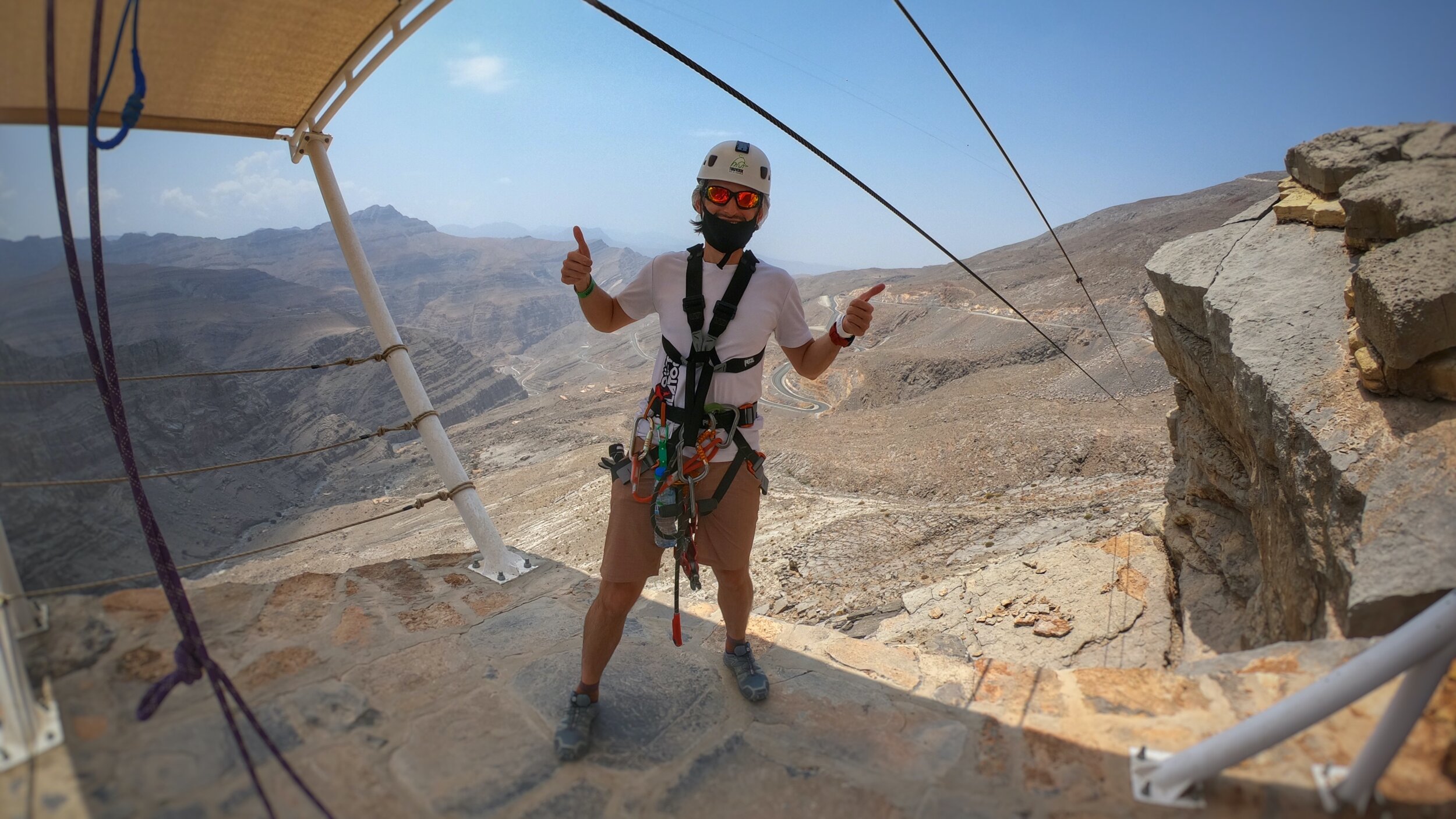


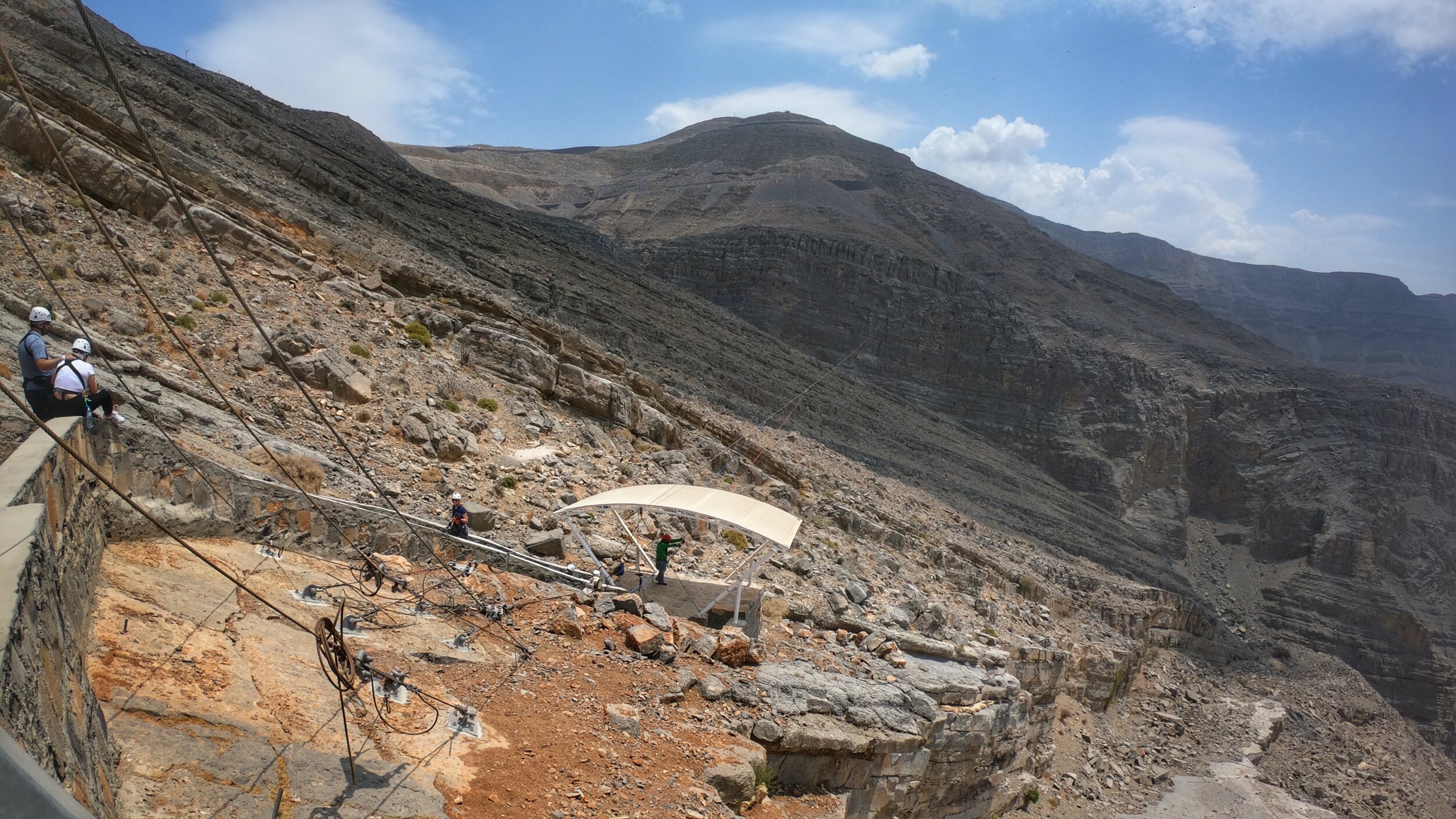
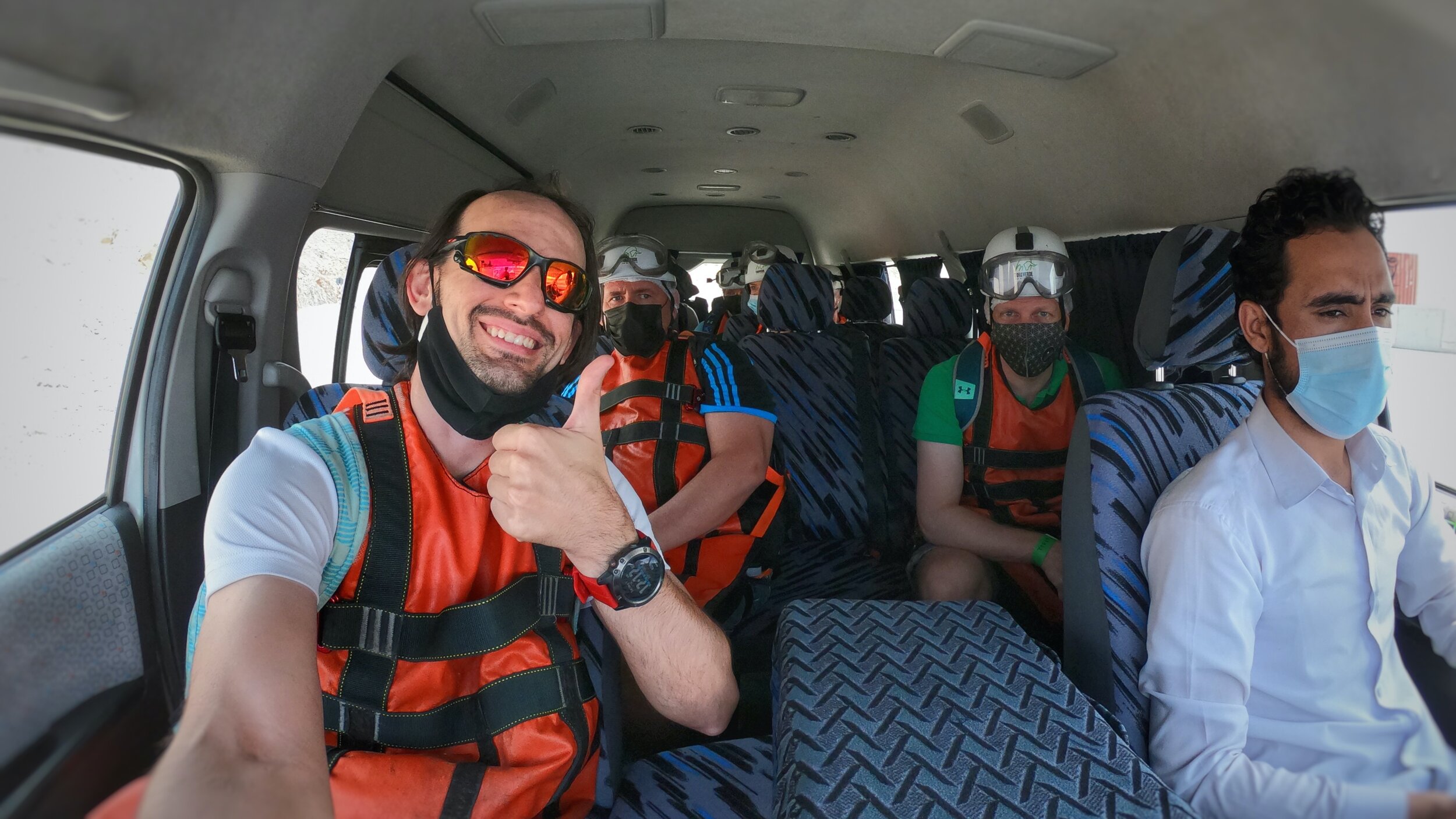
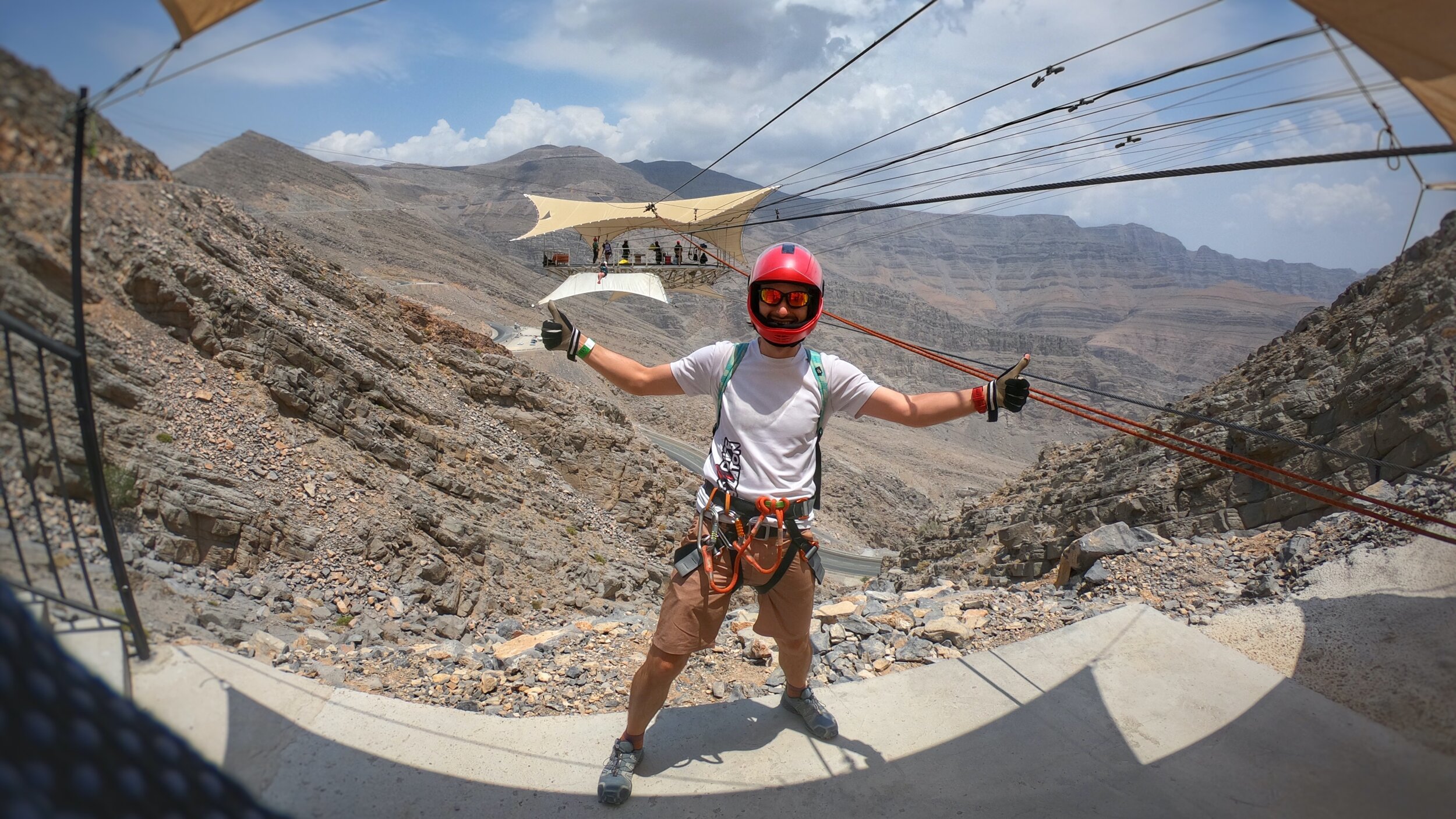


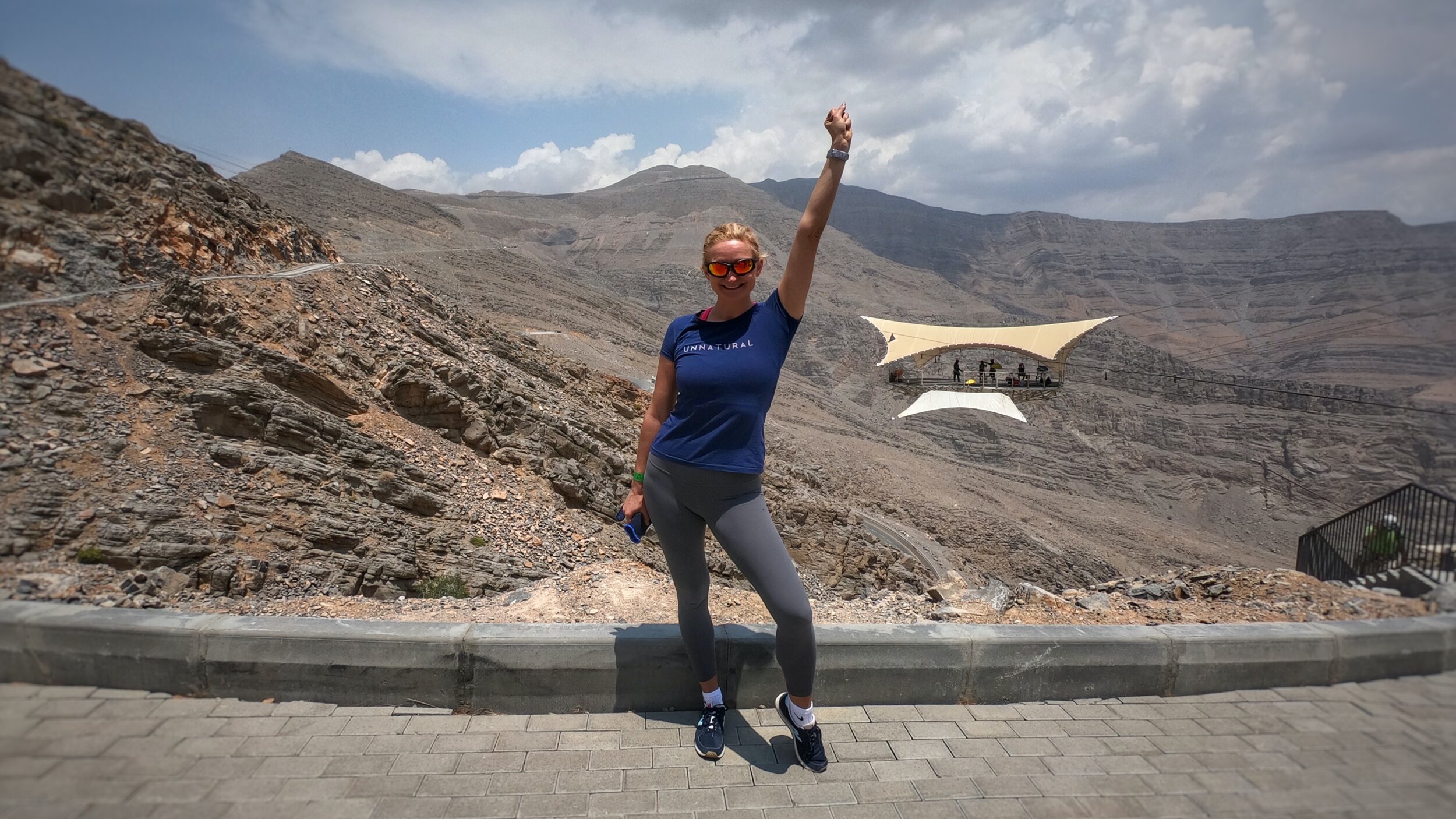
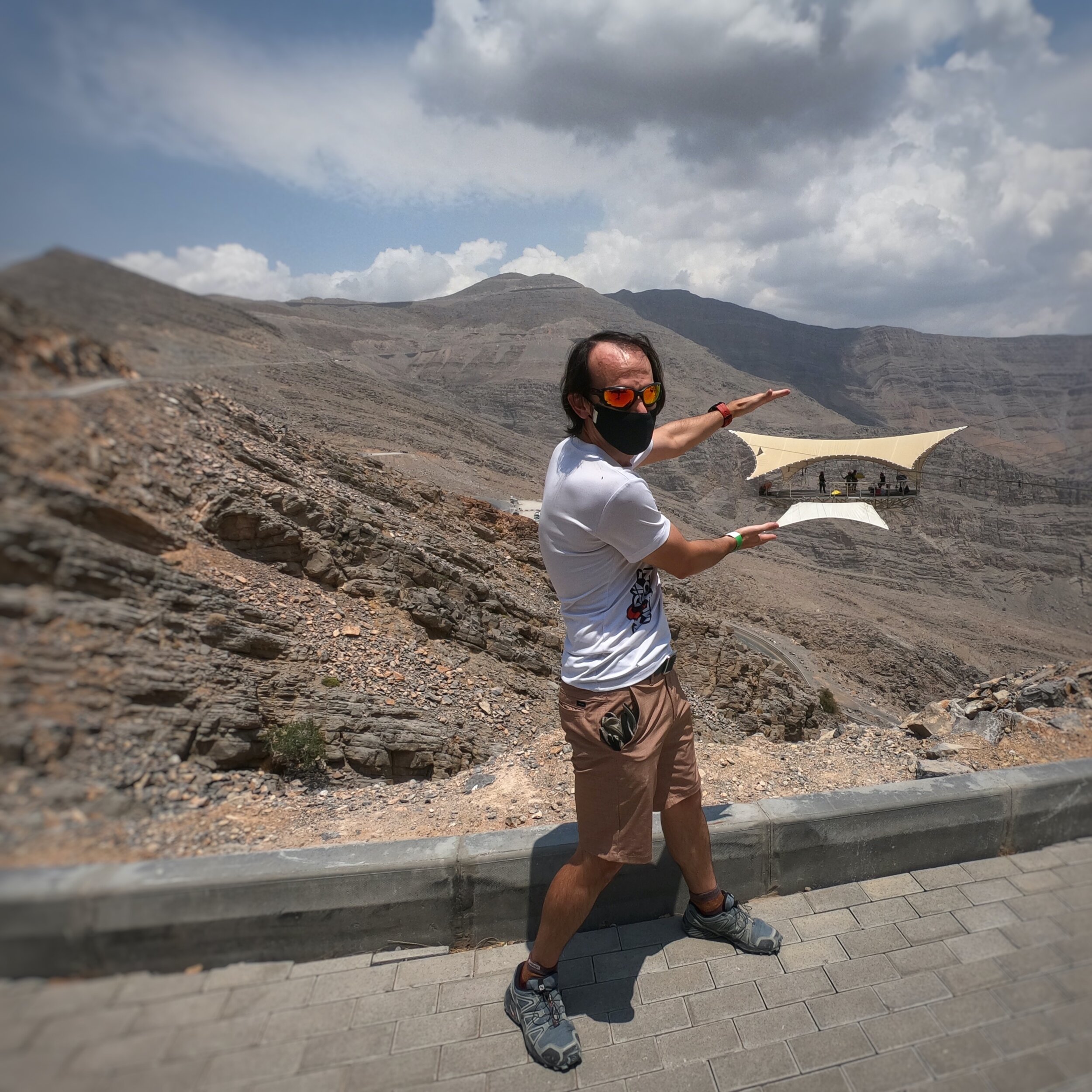
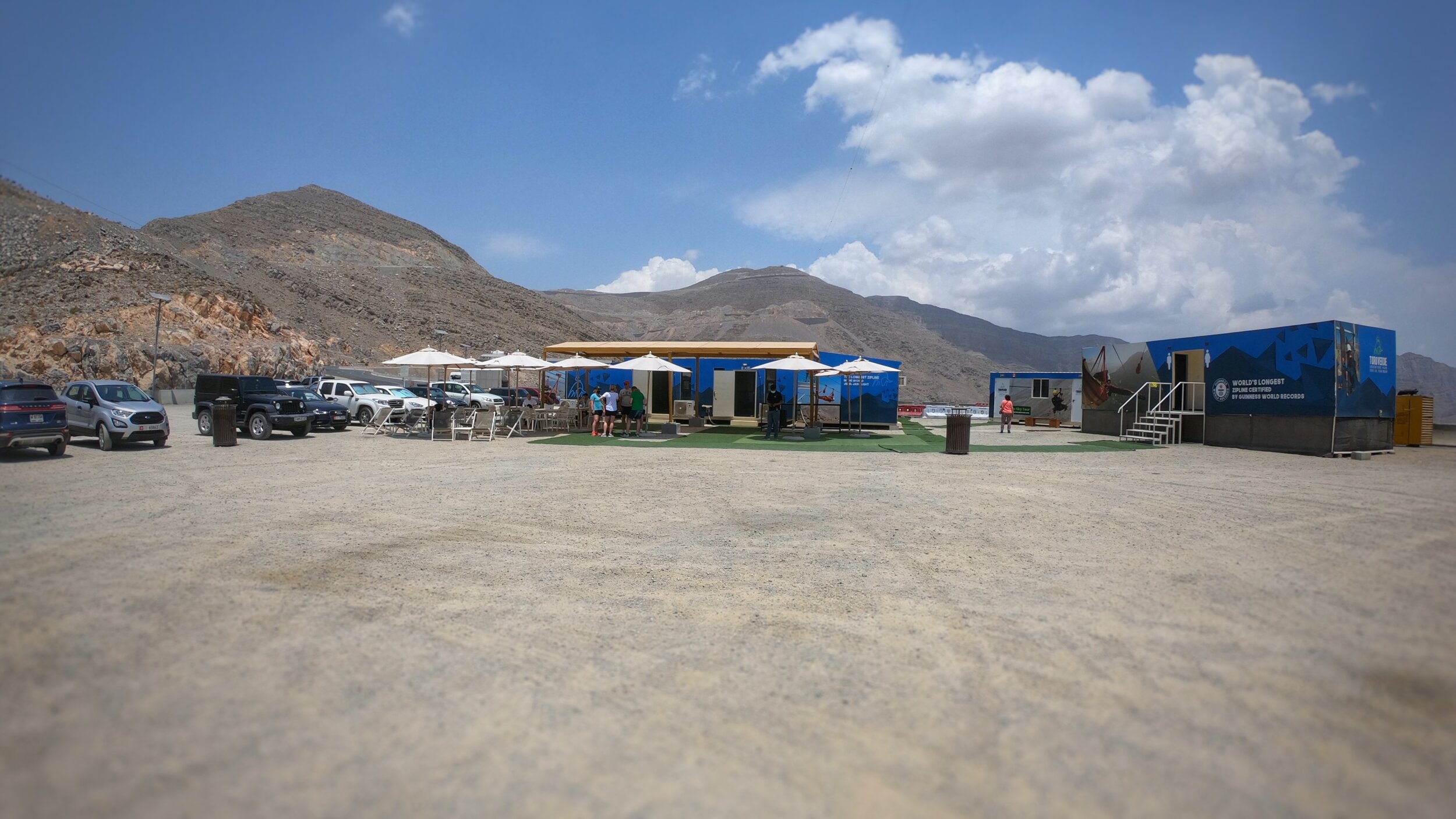

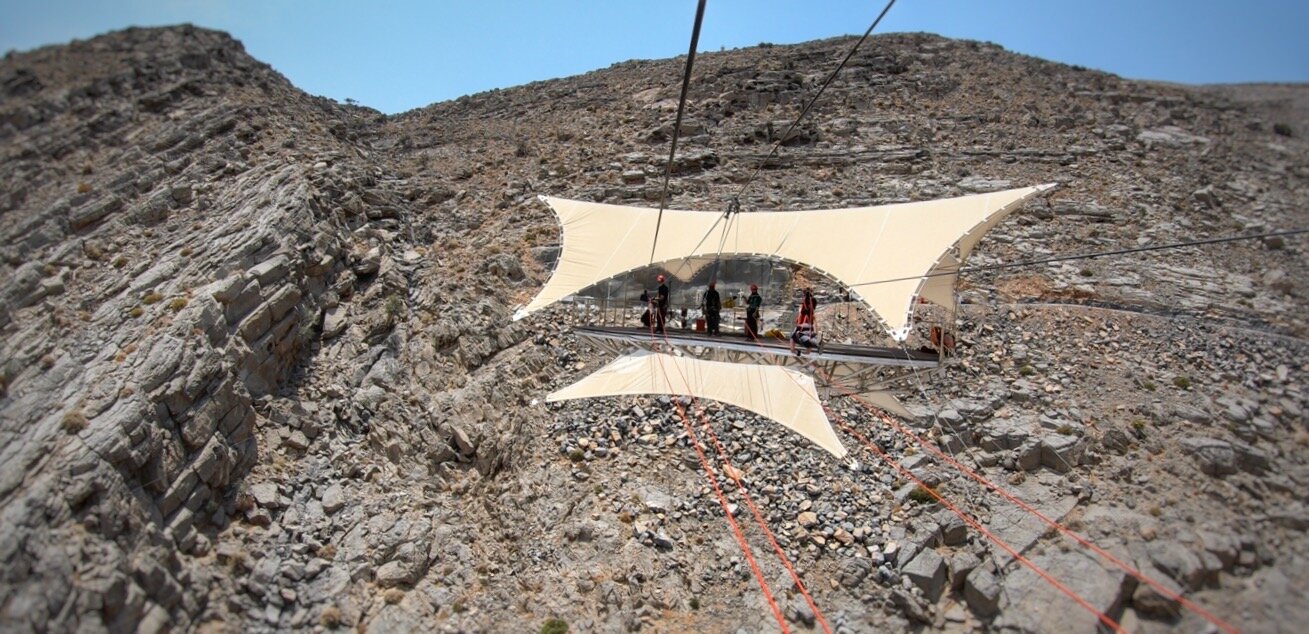
Eiger101 - an epic mountain race
2018 was the year that I was fortunate enough to get to line up at the start of this incredibly iconic alpine race. Here is a collection of the various blog posts I wrote in the run-up to the race in addition to the full race report itself. Ain’t reminiscing fun?!
Leopard Canyon (Ras al Khaimah)
Leopard Canyon, apparently so named as it was the site of the last ever recorded live example of the wild Arabian Leopard, is situated up in the mountains of Ras al Khaimah, en route to Jebel Jais. I had heard positive reviews of it's natural splendour and having really loved some of the hikes in this part of the Hajar range decided to look into a visit.
I am naturally cautious whilst still enjoying some adventure. What this essentially means is that I am not one to simply set out blindly and 'explore' in the pioneering sense. There will be no new trails attributed to my name as I am certainly not looking to put myself in any unknown harm's way by venturing off into uncharted territory. As such, I spent some time researching this hike, reading blog accounts and reviewing the route on Wikiloc, as well as downloading the GPS file onto my own Garmin, which I intended to then follow. As a result of this research I knew that it was not a really easy going hike and there were one or two more technical sections to contend with. However, what I did not appreciate via this 'armchair research' was just how tricky some of the sections would prove to be in the real life, wild setting, where there were actual repercussions in the event that things went awry. I now appreciate fully a couple of very important considerations in relation to this specific hike:
1. Do NOT attempt this solo.
Whilst I have trail run and hiked perfectly safely in a solo capacity before, and routinely put in place safety measures such as confirming my plans with a friend, checking in with them as I set out, giving them a check-in-by time and then confirming my safe return, in addition to researching the route and as much information as I can, plus taking all of the essential kit, this hike felt unsafe at one point in particular. Whether having someone else present would have in any way reduced the actual risk level is up for debate but what having a co-hiker does is provide a degree of reassurance that were something to go bad, someone would then be able to react and either provide help or call for assistance. The section in question was one where a climb was involved - in hindsight it was not an especially high or tricky climb but the fact is that a fall at that point could have been quite nasty, with a drop of at least 6-7 feet down between a narrow rock gap. A fall of that nature, whilst unlikely to be fatal, would probably result in a quite serious injury and certainly impede one's ability to get back down the mountain unaided. I'll discuss this particular section in more detail below.
2. Ensure that you complete this during daylight.
I did manage to complete this route in daylight and was mighty glad I did as there were parts of the second half (technically the descent) where there was absolutely no clearly marked trail and what simply looked at first glance to be impossibly steep slopes and drop-offs. How on Earth anyone would manage to descend safely in the dark is kind of beyond me. This hike took longer than perhaps I was initially expecting as the distance is misleadingly short. However, throw in the technical nature of the terrain and the fact that there is no real trail to speak of and the time required to safely navigate it increases. I set out at about 9.30am - I would have preferred an earlier start but was delayed by heavy fog in Dubai that impeded safe driving - and got back to my car by 5.30pm, and this was baring in mind that I did not stop for lengthy periods of time during the hike itself.
Finding the Hike
Driving along Wadi Bih towards Jebel Jais, the road curves round to the left at the southern end of RAK Lakes. At this point there is a small tea truck parked up on the right, just beyond a huge sign for Challenging Adventure, with arrows pointing towards it. This is the turnoff towards the start of the hike and so I turned right, following the dirt road past the aforementioned adventure centre and towards the village of Sal. I chose to park up a little before the start point provided on Wikiloc on account of not driving a 4WD and preferring a bit more walking compared to getting stuck and so found a suitable 'layby' to start from. There are a number of signs as you drive down the wadi stating something to the effect of 'Residents Only,' but were these to be religiously adhered to then the first part of this hike would be about 5km longer each way. I figured that as long as I didn't encroach on anyone's access and kept a low profile then as one inconspicuous hiker I should be ok to bend the rules a little.
As I set out from my car, heading towards Sal and then into Wadi Ghail, the temperature was already up in spite of it still being mid February and thus winter. With sufficient water, electrolytes, food and other relevant kit in my possession, and having slapped on sun screen, I figured that it probably wouldn't get much warmer than it was, a judgement that proved to be accurate. Flat going for the first 5km, the road took me past the scattered farms of Sal, between vertical, crumbling banks of layered rock, eroded over the years by successive floods during the infrequent rains, and ultimately uphill past what I have always assumed is some sort of remote military border station (small, square towers that look to have, maybe, radar attached) and past two farms that mark the entrance into Wadi al Nimr.
Wadi al Nimr to Hanging Gardens
Whilst there is no really clearly marked out trail at any point on this hike route, there were some sections where it was possible to make out boot marks in the dirt, and even some very short sections in which an actual trail could be seen worn into the terrain. As such, I was relying both on the GPS route I had downloaded onto my Garmin and the fact that the wadi itself swept up and round to the right, leading towards the Hanging Gardens. Picking my way up and through this wadi was a gentle introduction to some relatively simple bouldering and route picking, with the Hanging Gardens eventually coming into view.
There are, in fact, no actual 'gardens' to speak of, rather two large steps in the valley, which if water was flowing, would make for two impressive waterfalls. Naturally sheltered from the sun and with a smattering of vegetation clinging to the sheer rock faces and a series of low ceilinged ledges, this felt like a lovely place to take a few minutes in order to recharge the biological batteries, snap a few pics and watch the occasional goat as they sought out some water from one of several plastic drums clearly placed here by their owners.
From the first 'garden' the route heads up the left hand side, into a scree slope that threads up to a rock ledge. Walking along this ledge ultimately brings you onto the top of the second 'garden,' with a bit of scrambling required to reach the very top of the entire section. The views down the valley from here are spectacular and it felt like an immense privilege to have them all to myself.
Leopard Canyon
This part of the hike marks the start of the actual canyon itself and as the trail weaved ever deeper inside and the cliffs on either side seemed to tower ever higher, the sense of entering a hallowed place was palpable. The acoustics in this part of the mountains was almost eerie, with every footstep and crunch of the fine pebbles underfoot amplified by the canyon's narrow channel. At one point all I could hear was the recurring coo of a dove, which when amplified in such a remote, isolated spot took on an almost spooky quality.
This was by far my favourite part of the entire hike, just as with Wadi Naqab, as the shapes, colours, sounds and entire atmosphere in the canyon was just magical. Traversing this section of the hike did involve a little climbing, although nothing ever higher than about 2 metres and all with very secure, reliable hand and foot holds. At no point in this earlier part of the canyon did I feel out of my depth - that was to come!
The end of the canyon section of the hike is marked by a large immovable wall of solid rock with a narrow channel cutting up and through to the right hand side. I had been expecting a section that required a "bit of climbing" and had even seen a photo of it but what I hadn't really truly appreciated until faced with it for real was that the climb was more vertical than I had been expecting, relied in large part on a bunch of piled up rocks that did not look in any way stable or reliable and, were things to go wrong, such as losing grip or a foothold, the fall to the ground was not short and happened to involve landing in a narrow split between rock faces, assuming that one managed to miraculously avoid hitting any of the rock surfaces on the way down. This was the point at which the challenges and skill level required from this hike truly hit home. As I recced the route from the point at which the stone pile was found it dawned on me that this might be too much risk for me to comfortably handle, especially on my own. As mentioned before, I do consider myself to be adventurous but not reckless, and this was starting to feel like the latter. My main concerns were what would happen if one of the footholds or grips gave way unexpectedly once I'd already committed to them, in addition to concerns about something that could potentially sting or bite hiding in one of the hand-holds. As I peaked up the rocky channel I saw a goat en route down the very one that I was contemplating ascending. Good job I checked first as that would have been just my luck: committed to a dangerous climb only to have a bloody goat knock me off! Thankfully Mrs Goat saw me and decided that she'd prefer to be some other place.
Whilst the route was now clear my head still wasn't and I could feel my nerves start to set in. As I tentatively tested the stability of the rock steps in a bid to satisfy myself that the risk was sufficiently manageable to allow me to press on, matters were not helped by one of them wobbling. At this stage I did actually down-climb a bit, pausing to really consider my options: turn back and re-trace my steps, even though I knew that the descent was going to be way trickier, especially on the scree slope, or commit to this climb and complete the circular route. After settling my nerves back down and telling myself that it would be a shorter trip to complete the circle (not ultimately the case it turned out) I climbed back up to the same spot, positioned my hands and feet, testing the stability several times before whispering a silent prayer and stepping up, thus committing to the move. There was now no turning back - I was either going to get up this section or fall, with the latter not even bearing further thought. Before I knew it I was up in one piece, the scariest part of the channel climb complete. Phew! The rest of the climb was simple as there was no more exposed vertical ascent to content with, and within a couple of minutes I emerged onto the stone platform at the top, shaking a little if truth be told. I am still not certain if I made the right decision as the thought of the repercussions of a mistake or accident at that stage still make me shudder.
Abandoned Village & Summit
If I had assumed that the rest of the hike was now going to be plain sailing I was mistaken. As I followed the GPS trail up and along the top of the canyon slope, carefully traversing slippery and steep scree, the route suddenly seemed to skip up higher, meaning that I had to backtrack a little before doing some more climbing to try and get myself back on the trail. In the process of doing this I must have contacted a particularly sharp rock as I noticed blood dripping down my arm. Investigating the source I discovered an almost surgical slice in my right outer upper forearm, something I hadn't even felt being inflicted. So this was why one packed a first aid kit! For the first time ever I had to break out the kit, cleaned myself up and then applied some zinc tape as a temporary bandage. Thankfully it wasn't especially deep and so I was able to press on, although I was starting to lose some of the zeal I had felt for this hike earlier on in the day and was very much feeling tuned in to how remote this part of the mountain really was.
It therefore did not help my feeling of ease when all of a sudden there was a movement on the slope, and out from the grass slithered a snake! Holy s*@%! Just what I needed! An encounter with a bloody snake! As I paused, so too did my serpent friend, both of us simply watching what the other was doing and, I daresay, both intending to go in the opposite direction to the other. After a spot of research back home I think what I had come across was a Wadi Racer, a mountain dwelling snake that feeds on rodents and insects and is not really venemous, although I did not know that at the actual time. All I was thinking was, "uh uh, here and now is NOT the time to be dabbling with snakes!" I carefully peeled off left whilst Mr Slither headed right and thankfully that was the one and only snake I saw the entire day, although I was very much vigilant and keeping a keen eye out for them.
Eventually I crested the summit and saw the abandoned village on top, although some of the houses did look as though they were in good repair and being lived in. Having said that I didn't see a single other person at any point during the walk through this section so maybe it truly is abandoned...
The Descent
At the other side of the abandoned village I was eventually able to see down the steep wadi to the farms at Wadi Ghail, and essentially the finish point. This was a huge relief as I was finding it tough to really wholeheartedly trust the GPS route I had and was quite keen to get back down to civilisation in one piece. The route down was incredibly steep and my trekking poles definitely came into their own for this section. Once again there were points at which the route I was following seemed to skip over to another line and I found myself having to carefully lower down a rock wall to get back on track. The very idea of having to navigate this part of the hike in the dark was incredibly sobering and I think that were that to be up for consideration - thankfully it wasn't in my case - then overnighting at the abandoned village and waiting until sunrise before descending would be the option with less chance of injury being sustained.
Just when I thought that I'd come down the steepest section of the day, another impossible looking incline would loom into view and I'd find myself looking at the GPS trail, scratching my head wondering whether it really wanted me to go down there only to realise that yes, it really did. One particularly narrow and steep channel had me chuckling at the apparent insanity of the way down. When I did eventually make it down onto more level, secured footing I once again counted my lucky stars and looked back up the mountain that I had just picked my way down. What a route! What a day!
Emerging from the wadi at the small road linking the two farms at Wadi Ghail, I retraced my steps back past the goats, who were all now busily tucking into their evening feed, and continued through Sal, bathed in the beautiful amber tones of the soft, dusk sunlight. With the wind now starting to pick up and whistling up the wadi, I walked on like a man on a mission, arriving back at my car approximately eight hours after I first left it, feeling tired, a little shaken but ultimately feeling blessed that I had come through in one piece, all whilst getting to go home with incredible memories, photos and video of a very special corner of the UAE.
KIT CARRIED:
First aid kit
3L water (in a camel-bak)
1L of Tailwind solution
Food - nuts, Jelly Babies, bagel
Phone
Cameras (GoPro & Insta360 One)
Long-sleeved base-layer
Waterproof jacket
Snood
Head torch (plus spare batteries)
Charging bank
Foldable carbon trekking poles
MOVING TIME = approx 7 hours
DISTANCE = 27 km
ELEVATION GAIN = 779m
Wadi Naqab & The Red Wall
Wadi Naqab, an area of the mountains to the east of Ras al Khaimah, is an area of outstanding natural beauty that a friend of mine had recommended visiting, especially since I'd started exploring more of the wonderful hikes that there are to be found in the United Arab Emirates. Located approximately 130km (1.5 hours drive) from Dubai, this seasonal watercourse channels down from the heights of the Hajar range, with rainwater pouring through a series of narrow, twisting gorges, via a plethora of plunge pools (dry most of the year), into the gradually widening wadi. The power and abrupt nature of the waters, when they do make an appearance, can be immense and I know several people, all with extensive experience of the mountains and wadis, who have been caught by surprise and had their cars claimed by flash flooding through this wadi. It is NOT an area to play in during wet and stormy weather as it's character can move from sublime paradise to hellish cruelty in an instant.
Thankfully the day I chose to visit there wasn't a single rain cloud in the sky - another classic UAE day of blue skies and pleasant (winter) temperatures. Essentially a perfect day to explore another of the country's beautiful wadis. With the fog hanging low over Dubai, the drive up north was a little slow in parts and as I turned off the main motorway and picked my way carefully through the hazy streets of small villages, the sun was not yet visible but still illuminating the scene. Then, just like that, I drove out of the fog and the mountains were there stretched out in front of me.
Given that I do not drive a 4WD (yet) I have to be a little more cautious when it comes to where and how far down unpaved roads I can venture. Keen to avoid too much additional walking either end of the hike I continued down towards the wadi until I reached a sign that very clearly stated that beyond that point it was just meant to be dam construction traffic. Taking that as my cue to park up, I found a suitably flat section of wadi to pull over onto & started preparing to head out, donning my boots and filling the Camel-Bak whilst waving to the drivers of the procession of construction trucks that were ferrying back and forth between the huge dam being built and wherever it was they were collecting their materials.
The dam currently under construction and apparently costing some $44 million to build was an impressive site, especially given it's size at over 250m in width and, apparently, 20m high. It will be interesting to return and see it full once it's finished and the waters arrive. Moving further along the wadi, which cuts into the Yanas mountain, the sounds eventually transitioned from the clanging of construction to the chirping of birds, buzzing of insects and the ever-present bleating of the ubiquitous goats that frequent every part of the mountains here. What I love about many of the wadis here is that the deeper you delve into them the more incredibly beautiful the landscapes become, with Wadi Naqab being no exception. The steep sided, multi-layered yellows, browns and reds of the moonscape rocks here point towards the fact that they were, once, part of a prehistoric seabed, a fact that I always find utterly humbling and that drives home how fleeting our time as humans has been on this planet.
The good thing, generally, about wadis is that there aren't usually too many points at which to get lost - you either walk in one way or you walk out the same way. However, at one point the wadi does indeed split in Wadi Naqab, with the right hand heading vaguely south through the mountains whilst the left fork heading on towards the Red Wall, an impressively sheer cliff face that gets it's name from the reddish colour that it adopts in certain light. So far, up until this point I had been the only person out in this part of the wadi, that I was aware of, although there was a car parked up a little along the right hand trail. A little way towards the Red Wall I was aware of a 4WD approaching from behind, which stopped to check on directions and offer me a lift. I confirmed that, as far as I was aware, based on the map data I had, we were all indeed on the right path to the Red Wall and politely turned down the lift, preferring instead to continue walking. I soon met up with the same car and ended up spending the rest of the day with Andre, from South Africa, and Rosa, from Italy, as we continued into the real hiking of the day, leaving the car under the watchful eyes of the goats.
After some initial bouldering and picking our way through the wadi, which was definitely becoming wilder in it's appearance, the trail tracked to the left and we began climbing, finding ourselves walking along exposed ledges with the wadi floor laid out below us. At no point did the trail feel unsafe, being easily wide enough and well trodden to satisfy even the most cautious hiker that they were in no real danger. Before too long we had a choice to make: climb up the slope of collapsed boulders to the right of the Red Wall and see where that path took us or continue round to the left, via a short, narrow ledge that had a metal rope anchored into the rocks to serve as a via-ferrata-style hand-rail, delving deeper into what was now becoming more of a canyon. We opted for this latter option, walking past a large UAE flag pinned to the cliff wall and entering what a sign told us was Wadi Koob.
There were, as before, photo opportunities abound, from the black rope scaling the smooth slopes of the dry waterfall, to the low ceilinged ledge along which we crawled in order to continue our exploration but that also appeared to be a particularly popular latrine for the goats. The canyon got narrower and narrower, whilst the sides became steeper and taller, the acoustics becoming more echoing and surreal. Before long, however, we arrived at a pool of water that whilst on initial inspection looked filthy, was actually very clear once the surface layer of dust and algae was disturbed. Any further progress would have required some ropes and a head for heights that none of us had that day and so we retraced our steps back to the car and the end of what had been yet another amazing hike and discovery of the natural wonder of this part of the UAE.
DISTANCE = 23km
TIME = approx 5 hours
Stairway to Heaven, Ras al Khaimah (UAE)
The Stairway to Heaven, or ‘The Stairway,’ is a somewhat infamous trail that scales a sheer cliff by means of a series of man-made stone staircases, which are, in fact, closer to ladders than any set of stairs that one might be familiar with in their own home. An old Shihuh trail, connecting the coast of Ras al Khaimah, 2 hours north of Dubai, with the villages and farms nestled on the high mountain plateau of Jebel Jais and Jebel al Harim and (literally) crossing the border into Oman, the stairways themselves make up a relatively short but extremely memorable section of what is a 21km loop.
I’ve wanted to take on this famed hike in the UAE ever since I heard mention of it years ago and whenever it looked as though I might be able to convince someone who had done it before to guide me, Summer would swing back round again and the idea of taking on a challenging, exposed mountain hike in the extreme heat and humidity of the UAE ‘hot season’ would scrub any such plans. The idea of tackling it on my own didn’t even register as a) I didn’t, until relatively recently, even know where it was, and b) knew, from speaking with people, that it was not to be underestimated, claiming lives as it has over the years and requiring mountain rescue to have to pluck some people off the cliff to safety after getting lost or otherwise in trouble.
So, it was with a sense of nervous excitement that I jumped at the chance to join my friend, Rachael, who has walked the Stairway route a number of times, and a few fellow outdoors enthusiasts, in finally seeing what all the fuss was about. And so it was that we made our way up to Wadi Ghailah dam, where I hopped into one of the group’s 4WDs for the 2.5km off-road drive down Wadi Litbah to the small collection of goat farms that marked the start of the trail. Setting out at 7.30am, our goal was to traverse the 21km loop in about 9 hours, arriving back before dark and so rendering our head-torches - part of the highly recommended essential kit to take along - redundant, although knowing full well that anything can happen and so there was always a chance that we might have to descend in the dark. Having, the week before, hiked most of the descent trail I knew full well just how steep, technical and precariously loose sections of it were even in full light and so the very idea of trying to walk down in the dark, even with torches, was a sobering one.
As we set out up the initial steady climb towards the ‘fork in the road’ that signalled the start of the actual stairway section, a local farmer was also setting off up the trail, driving a train of several donkeys, loaded up with various items, including building supplies. Given how narrow the trail is, with little to no opportunity to pass easily given how steep the drop-offs are, we had little choice but to set our pace to that of our hooved and amazingly fleet-footed equid companions. Anyone looking on might have assumed that we were part of a well-supplied expeditionary force, heading on up to scale some impossibly high peak Everest style. There were some moments of early jollity as the universality of a good ‘fart joke,’ supplied by a loud eruption from one of the aforementioned animals, had all chuckling, including the farmer himself. Eventually we arrived at the part of the narrow wadi where the donkeys forked right, heading up to the small farmsteads that dotted the slopes all the way to the top, and we went left, up, up and away towards the start of the actual stairways.
From any other vantage point, the scree slope that marked the first section of the climb, looked an impossible undertaking, appearing dangerously loose and at an incline that appeared not just lung-busting but unscaleable without ropes. The reality, however, was that whilst steep it was easily trekkable and before too long we found ourselves rising high above the wadi below and closer to the top of the imposingly high clifftops that curved round to encase the wadi below and that marked the border between the UAE and Oman. One of the key trail markers on this route is a tree that sits at the top of this scree slope and as we reached this, pausing to take in the impressive vista below, game faces were adopted as this was the point at which the steepness factor and exposure was to step up several notches. The Stairway to Heaven was next!
My main recollections of the climb proper were the following:
I tried to avoid looking down that much as whilst I am comfortable chucking myself out of aircraft with a parachute strapped to my back, when it comes to heights with no ‘safety system’ in place, such as scaling a sheer cliff by means of some very old stone ladders, I am as prone as any to a touch of vertigo. Upwards and onwards was my mantra.
There were indeed some sections that were dizzyingly exposed, principally the second stone staircase that curved out and round a corner, with absolutely nothing but a long drop below, but overall, the trail was surprisingly less narrow and terrifying than I had initially expected or feared. That is NOT to downplay how high and exposed this route is because it is. It is serious and we were incredibly fortunate to have a day that was both clear, sunny and still, with just the occasional gentle breeze. I would not have wanted to be up on those exposed sections of cliff with a wind blowing and especially gusts.
Sticking to the rock like a clingy limpet. One of the wonderful features of the rocks that make up the cliffs in that part of the UAE is just how textured they are, which made for wonderful friction and a plethora of very secure hand and footholds; exactly what one wants when traversing and climbing exposed areas of cliffside. I might have recorded some more footage of the more exposed sections of the trail had it not been for the fact that I was attached very, very firmly by way of all four of my limbs to the rock - had I been able to grow a prehensile tail and employ that as a fifth point of attachment I would have done! Not falling was my second mantra of the day.
Before very long we arrived at the final short incline and after a number of little switchbacks we all emerged onto the plateau at the top of the Stairway to Heaven, marked by the presence of a farm and were greeted by a friendly, food-obsessed black nanny goat who had clearly cottoned on, over the years, that with some degree of regularity humans would emerge from yonder, invariably electing to pause for a time at this spot and in doing so could be coerced into sharing some of their grub! Our initial attempts to repel such appeals were soon short-lived as once I pointed out that she was almost certainly pregnant, our collective attitude towards her lobbying for our lunch softened and she got her way.
The Stairway route traverses the border between the UAE and the Sultante of Oman and one way that it is evident that we had crossed into the neighbouring country, other than our cell phone provider now being Omani, was the presence of the red and white electricity pylons that are unmistakenly of Oman. Hikers ‘popping aross the border’ are tolerated by the authorities so long as they don’t wander too far into the country and so we stuck close to the cliff edge as we set out for part two of the hike, taking us up and along the mountain top towards the Woh village and the start of the descent. This section of the trail involved a surprising amount of climbing as one would be forgiven for thinking that once at the top of the Stairway that was, well, the top. Not so. We trekked onwards and upwards, arriving at the lookout point towards the summit of Jebel al Harim and the golf-ball-esque radar station that sits atop, before starting our descent to the village.
From the Woh village, which is essentially a collection of small terraced farms perched atop the rocky plateau opposite the summit of Jebel Jais, one has an unobstructed view all the way down to the Wadi Ghailah dam and through to the Arabian Gulf beyond. On a really clear day it is even possible to make out Iran in the far distance. The descent from here starts with a steep set of stone steps that soon merge into a long, winding and rocky trail that snakes down into the canyon, along it’s sheer walls and ultimately back to the fork before exiting along the same trail that initially brought us in.
Our overall time for the 21km loop was a little over 8.5 hours, so thankfully no need to break out our head-torches, and that was with at least an hour of combined stops along the way. A fantastic route and one that I am incredibly pleased to have finally completed, although I now very much wish to return and explore it some more.
Woh Village Hike
Jebel Jais - Hiking
Wadi Running
Wild Swimming in Oman
Wild Swimming at its very Best
The very first time I’d had the pleasure of dipping my toes, closely followed by the rest of me, into a wadi pool was during an off-road group camping trip as a recent arrival to the UAE. Whilst I couldn’t for the life of me tell you exactly where those wadis were now - I was concentrating so hard on following the 4WD ahead of me that my sense of actual location was lost - I do remember the unique thrill of experiencing refreshingly cool, clean water in the stark barren moonscape of the crumbly mountains that run up the north-eastern edge of the Gulf Peninsula.
Whilst I have continued to do my fair share of outdoor swimming in the Middle East, it has pretty much consisted exclusively of sea swims since that initial wadi experience. It was with excitement then that I headed over to Oman during a week off work - the last one before the border was closed due to Covid - in order to spend some time exploring and playing in the Hajar mountains and wadis of the Sultanate.
My base for the few days of wadi exploring was a wonderful white-washed villa just outside the small town of Tiwi and idyllically situated on the edge of a wide pebble beach, with the expanse of the Gulf of Oman stretching off towards Iran in the distance and the setting for one of the most exquisite full-moon risings I have ever had the pleasure to witness. The moon rose from the inky black waters and climbed higher and higher, illuminating the gently rippling surface of the sea and silhouetting the scattered small fishing boats that acted to mark out the boundary between sky and sea. Beautiful.
Bimmah Sinkhole
After arriving mid afternoon at my B&B I quickly decided that there was still enough of the day left to warrant a quick trip back up the coast to check out Bimmah Sinkhole, which a colleague of mine had visited the month before and spoken highly of. Set back a very short distance from the main Sur highway and ensconced within the bounds of the Hawiyyat Najm park, a relatively small oasis of organised recreation juxtaposed with the wild, dishevelled coastline on which it sits, the sinkhole is approached by means of a short walk past manicured lawns, with the first sight being a wide, circular wall that arcs round to a narrow metal staircase leading down into the depths of the sinkhole itself.
Locals used to believe that the sinkhole resulted from a meteor strike, with the Arabic name Hawiyyat Najm translating as ‘the deep well of the (falling) star,’ although it is in fact a result of erosion by seawater of the relatively soft rock below the surface and eventual collapse of the original ‘roof’ creating the sinkhole that exists today. The waters of the Omani Gulf are no more than 600m away and it is these saline waters that feed into the sinkhole and into which I waded for the first of my wild swims of the trip.
With the sun starting its slow dip towards the horizon, casting large shadows onto the surface of the water in the sinkhole, which at about 70 metres by 50 metres is an impressive site, especially whilst descending the long narrow staircase to reach the rocky platform at the bottom, I tentatively slid down the slippery rocks into the cool still waters and sculled my way out to the very centre for a full panoramic view. The benefit of visiting mid week and towards the end of the day was that there were significantly fewer people present that there might have typically been, with, at most, three others also enjoying the waters.
In addition to being a unique swimming experience and visual treat, it was the quality of the sound that made a dip in Bimmah Sinkhole so memorable, from the cathedral-esque cavernous spacing of the centre, with the blue of an eternal sky immediately above to the reverberating echos and amplified sounds of splashes, laughter and one’s own quiet breath in the low ceilinged cave tucked off to the left like an aquatic chapel of tranquility.
Wadi Ash Shab
I’d have stayed up and enjoyed the incredible full moonscape longer had it not been for the fact that I wanted to get an early start to the next day in order to check out Wadi Ash Shab before the crowds arrived, which they were sure to. With a run and a decent brekkie under my belt I struck out for the very short stroll down to the small jetty from where launches, crewed by local Omanis, including my AirBNB host, Habib, ferry trekkers over to the far side of the lagoon and the start of the trail into the wadi itself. The fare? Just 1 Omani riyal for a return trip - easy! The trail started relatively wide, with small farm plots either side of the flat wadi floor, flanked by steep cliffs, growing a host of different crops including fruits such as bananas. About a kilometre and a half into the wadi, the first of the truly spectacular pools started and the trail climbed up the sides of the cliffs, carving a path, at times, literally through the rock, providing a heady but incredible view down into pools that whilst incredibly tempting to leap into, did not permit swimming.
The trail continued up and along the smooth rocky trail, polished over millennia by the actions of water flowing down the valley, eventually crossing over a stream, winding past more small plots organised in terraces that appear to be layered one on top of the other, before taking a sharp left turn into a part of the wadi that could have been lifted straight from the pages of a story about a long-lost civilisation. The light at the time was perfect, with the sun illuminating in golden hues a vista of sandy yellows, aqua marines and rich, tropical greens. This was the part of the wadi that truly represented what it was I, and all of the visitors to this part of Oman, had come for: Mother Nature’s waterpark.
It wasn’t initially clear where the climbing and trekking was meant to cease and the wading and swimming started as I found myself skirting along the steadily climbing and increasingly precarious cliffs, with the water below. Eventually my gut instinct convinced me that the path I was on was not correct and so I backtracked to the start of the watery channel and decided that I might as well press on through the water itself. Having changed into a pair of dive boots - I’d heard that having something on your feet was advisable for sections of the wadi, especially the narrow pebble-filled channel that linked two pools at some point along the course and over which one had to walk. It did also make climbing the often very slippery rocks that much easier thanks to the additional friction the boots’ rubber soles provided.
With my shoes, clothes and valuables all firmly ensconced within the dry bag I’d trekked in with, the latter being further protected inside an additional, smaller dry bag - yes, I can be a bit of a pessimist and prefer to plan for the worst - I started wading into the water, gradually sinking deeper and deeper until I was able to start swimming along. The scene was wondrous! The water so clean and clear that it was almost completely translucent and refreshingly cool, not cold. I truly felt as though I was an intrepid explorer striking out into uncharted, potentially dangerous yet intriguing territory and I couldn’t help but swim along with a grin from ear to ear. It was shortly after I set off that I got a foreboding sense that my dry bag wasn’t as buoyant as I had expected. I’d used the same bag on a previous swim adventure when I found myself drifting down river in Berne, Switzerland two years before, and yet this time the bag seemed to be sitting lower in the water than usual. Time to investigate.
On a corner, as the first long, winding wadi pool came to an end and fed into the aforementioned pebble-floored channel, I climbed out onto dry land and opened up the bag. It turned out that my ‘dry’ bag was, unfortunately, anything but, the insides now being very much that of a soggy bag. My shoes, towel and clothes were all sopping wet although thanks to my ‘prepare for the worst’ approach to the valuable and electronic items, they were all safely still bone-dry. Phew! My original plan had been to just swim and explore the wadi with my belongings in tow the entire time but this spanner in the works meant plans had to change. Certainly not intending to turn back and abandon my explorations I threw caution to the wind and stashed my bag as safely out of sight as I could behind a rock, praying that this wasn’t prime thieving territory and that the rest of the day trippers out were honest types who would politely ignore that which wasn’t theirs. That trust, thankfully, was well placed as no matter how well I tried to hide it, the bag was bright red and not really that well hidden yet remained undisturbed until I returned to it a couple of hours later. It might have actually been a blessing as liberated from the bulk of a bag I was able to climb, scamper and swim through the wadi with so much more freedom than I’d have been afforded otherwise. Sometimes shit happens and it ends up being for the best.
I would describe Wadi Ash Shab as being divided, broadly speaking, into three, maybe four, distinct sections. The first is the section of water that had brought me to the rocky landing where I left my bag and that sees the wadi transition from wide oasis to narrow, steep walled water-filled channel. Then comes the section that whilst still submerged is only under a few inches of water and is characterised by a narrow, flat yet stony path that weaves through a small patch of reeds and assorted foliage, obscuring what sits beyond. The wadi then opens up again into a number of interconnected swimmable pools, with sections deep enough to safely jump into from the rocks, before terminating at a split in the rock face. For those not confident in their swimming abilities this is probably the place to call it a day. I feel comfortable in water however and wanted to check out the jewel in Wadi Ash Shab’s crown.
Pushing onwards and between the low-slung, incredibly narrow split in the rock that at times was barely the width of my head, the scene opened up to reveal the inside of a cave, illuminated by natural light from gaps in the roof and a waterfall cascading down into a plunge pool, from a narrow rocky channel that disappeared up into the eaves. This was soooooo much cooler than I’d expected it to be! There is nothing that humans can build that will ever surpass the splendid, pure, raw beauty of natural landscapes such as these. Mother Nature, geology and time are the ultimate architects and contractors all rolled into one and I was inside one of their bespoke mini-cathedrals.
Roughly 10 by about 12 metres with a floor that is a lot deeper than I am tall, this part of the wadi was just pure joy to explore and take in. Whilst the centrepiece is most certainly the waterfall, there is a narrow, navigable channel carved out from the rock that takes explorers directly behind the falls, starting from a gap so narrow that you’d be forgiven for missing it - I almost did were it not for an excited Dutch tourist gesturing me towards it like a ten year old who had just discovered the world’s greatest hideout and wanted, or needed, to tell someone, anyone, about it - and, after a short, dark traverse opens back into the main cavern, emerging from the opposite side of the falls.
Someone had anchored a rope into the rock with the end of it hanging invitingly down the left hand side of the waterfall. Not needing much encouragement I hauled myself up the rope and the slippery rocky channel and paused at the top not entirely certain of where to go from there other than back down into the water. A trio of French visitors then did the same except instead of stopping at the top of the rope they pressed on further up the rocky chute down which the water was tumbling and out of sight. With the validation that it wasn’t an insanely daft idea I swum straight back over to the rope and followed in their footsteps. The reward was to emerge into the open, by means of a small hole in the rock, into an entirely different section of the wadi, this one elevated from the pool itself and home to yet another deep pool of water. This pool was framed by steep sandy rocky cliffs and fringed with plants gently swaying in the gentlest of breezes that sent tiny ripples across the surface of the water, adding to those produced by dragonflies sporadically skipping across the pool. I did wonder what other gems there might be to discover further up and along the wadi but thoughts of further exploration were quelled by the fact that I still wanted to try and get to Wadi Tiwi before the end of the day and as such it was probably about time to retrace my steps and leave what was, at the time, one of my new favourite places on the planet.
It turned out to be a good time to call it a day as the crowds were most certainly beginning to arrive en-mass. As I exited the water-filled cave, returning to the open air swimming of the main wadi, I found myself wading counter to a steady stream of tourists and by the time I returned to my starting point at the mouth of the wadi the scene had transformed into one resembling a beach on a weekend, with sunbathers galore. I’d definitely made a good decision by heading into the wadi nice and early.
Wadi Tiwi
The best thing about getting an early start to the day is that there’s time to pack in more than you would ordinarily get around to doing. With one wadi visit ticked off I found myself with the enviable option of getting in another, one that hadn’t even been on my radar originally. Wadi Tiwi sits at the end and upper reaches of a large wadi that starts in the town of Tiwi and travels for about ten kilometres inland, climbing through villages and traversing increasingly steep and remote track until the road comes to a halt. Having read warnings online about needing a 4WD to make the drive and recognising the fact that my hire car was in actual fact a ‘pretend 4WD’ I asked Habib whether he knew of anyone I could pay to take me up to the wadi. He clearly had much greater faith in both my car and my driving abilities than I did as he dismissed the warnings and reassured me that I would be absolutely fine to drive myself. Well, I figured, if he thinks so then how bad can the drive really be? And so I set out to discover for myself.
The answer was ‘bad.’ My car was A-ok for the first 4km, as the wadi started to ascend through the first village, only having to contend with the incredibly narrow road and blind corners. Things, however, got interesting as I came to the final corner and short stretch of tarmac exiting the village, where I had to pause to let a few cars down. As I moved to pull off up the hill, cognisant of the fact I now had a short queue of traffic behind me, I felt my wheels spin and the smell of burning rubber fill my car. “Uh oh!” I thought. “That ain’t good!” Long story short I was not going to get myself up that hill and had already decided that they best thing to do was turn around (somehow) and head back down again. The guys in the car behind me, however, thought differently. They were confident that the car could get up and so one of them hopped in and somehow screeched the thing up the hill, narrowly missing a brick wall in the process, before handing back control to a slightly shaken me. It was more politeness than anything that saw me cautiously continue to follow the road further on up the wadi as I didn’t want them to see me turn the car around and undo their work. If that was a taste of what lay ahead further up the wadi then I knew full well that the online reports were correct: this was 4WD territory. And so having spotted a bit of a lay-by at the top of the next alarmingly steep section of hill, I swung the car in and looked at the option of pressing on ahead by foot.
There was, however, no need to walk - a good thing too as it was a loooong, steep climb - as there was a regular stream of young local villagers zipping up and down the road in battered 4WD’s, ferrying tourists. After negotiating a price with one guy who was en route back down with a Dutch couple and waiting for him to return, I was once again on my way and quickly realised how sensible it had been to abandon the self-drive option. The road just got progressively more extreme: narrow, rocky and steep. My hire car was NEVER going to get up to the final village, Mibam. Never ever. The views, however, were breathtaking. At one point we emerged from the lush foliage of a small village, climbing up over a pass that afforded vertiginous views up and down the wadi - incredible! Eventually we pulled up in front of a small house and I was gestured to follow my guide, a young guy by the name of Mohammed, as we trekked down the hill, through various small farm plots of fruit trees and date palms, terraced with criss-crossing water channels providing irrigation.
After about ten minutes of descent we emerged onto a flat area of rock, fringed on both sides by lush green vegetation. This was the start of the wadi itself and it quickly became apparent that this place was indeed incredible. The first sight of the water was a series of brilliant azure pools, fed by a cascading waterfall, the top of which we were standing upon. Mohammed lead the way down the steep sides of the sandstone towards the water and indicated that this was a great place to leave my stuff in order to then press on to explore the wadi. I confess that I was a tad apprehensive about the idea of leaving my belongings again, especially given that there were a lot more people around, and spent what was clearly an obviously long amount of time securing the clip on my bag as best I could - not to prevent someone going into it but that would have made it obvious if someone had, a fact that I hoped would simply serve to discourage anyone from being tempted. In hindsight I was being unnecessarily untrusting as my bag was left completely undisturbed the entire time Mohammed and I were exploring the lower reaches of the wadi. It would appear that there are indeed some parts of the world where basic principles of decency still widely exist.
Any apprehension I might have been feeling about leaving my belongings unattended evaporated as we eventually hit the water itself and I found myself utterly enchanted by this fantasyland vision of paradise. If Wadi Ash Shab felt like a slice of natural wonder, this place was straight up idyllic. I felt like I was in the film Avatar except with aspects of one of those exotic shampoo commercials thrown in for good measure. Each successive stretch of water became more and more picturesque and exotic, with a plethora of dragonflies of differing colours the likes of which I don’t think I have ever seen anywhere else. The water was, as in Wadi Ash Shab, clean, refreshingly cool and clear, and calm, with just the gentlest of flow as the water inched its way down the wadi towards the sea. Each successive body of water that we traversed seemed to have it’s own distinct character, with some flowing beneath giant overhangs of rock, whilst others ran smoothly through narrow curves in the cliffs, before arriving at the piece de la resistance and a scene worthy of poetry. Just imagine the most tropical jungle pool you can. That’s what I was now looking at and then swimming in. At least 25 metres by 30 metres and flanked on two sides by vertiginous cliffs down which creepers and vines cascaded, stroking the surface of the water and adding the exotic drip, drip, drip of water drops tinkling into the pool below, I could have happily remained in this exact spot for the rest of the day. Mesmerised by yet more dazzlingly large and metallic-hued dragonflies of myriad colours, basking on sun-kissed rocks and skipping over the water’s surface, the waters continued their journey sea-ward, dribbling over one edge of the pool on a quest to find the next of what I am sure was many more equally stunning pools lower down the wadi.
It was, however, at this point that Mohammed gestured me back and as he took the more direct, drier, rock-based route back to the start, I retraced my paddling steps back through the wadi waters, finally scaling the huge boulder at the start, aided by a long rope fed down to me by Mohammed. A truly mesmeric experience and a genuine oasis of peaceful tranquility, I was so incredibly pleased that I had followed my own sense of curiosity and persisted in making it to this place. It was worth the effort and some.
A successful two days of wadi exploring and three memorable wild swims to look back on fondly.
Challenge Roth - A Must Do Race
"Solar Hill is like a religious experience!" With claims like that how could any self-respecting triathlete not want to race Challenge Roth at least once?! I had long been aware of the legend of Roth, Germany, the home of Challenge and one of the longest running races on the calendar, for a number of years, being the stage for multiple incredible records in it's history and considered by many to be their favorite race ever.
I had attempted to secure a coveted spot for 2015's race but missed out by seconds - the slots sell out in moments so one has to be ready and waiting online as soon as the site goes live, much like trying to get tickets for a major rock festival! Having learned my lesson and hearing even more tales of how memorable the race was I was determined to have another go, fresh as I was off the back of my inaugural Ironman in Lake Tahoe and clearly having forgotten the punishing training regime and discomfort of the actual race, such is the nature of both time passed and memories of the endorphin high above and beyond the pain. I had, like many before me and I am sure many after, claimed rather unconvincingly that "one would probably be enough" as far as iron distance races went. No-one believed me and, rather predictably, it wasn't long before the lure of the long course whispered to me again, the focus being on getting, first, into Roth and then, second, fit for Roth.
Having learned my lesson the year before I was ready and waiting, credit card details primed and finger on the mouse as the entries for Roth went live. As Sod's Law would have it I actually secured two places this time around and had to forfeit one as that was all I needed. I was in. Cue the requisite training, working again with Trace Rogers and her new GroWings team, as we worked on building the fitness that I had honed over the previous two years. I will be the first to admit that my preparation for Roth was nowhere near as intense as for Tahoe, in part on account of work demands and schedules and also, quite honestly, because I felt significantly less pressure for this race. In my mind Roth was to be enjoyed above and beyond any other goal. It was also, logic dictated, meant to be a less physically demanding race compared to the high altitude course at Tahoe. Add to that the fact that I had established a pretty decent base level of endurance fitness, which all meant that I suffered less guilt if the odd session was missed or curtailed. That's not to say I didn’t train: I certainly did. Hard and enthusiastically. Just not as hard as in previous years.
Fast forward several months and I was one of several Dubai-triathletes who jetted out, leaving behind the intense heat of summer for the kinder climes of Europe and specifically Bavaria. My parents were, once again, eager to join me in this iron adventure, being my staunch supporters in Tahoe and providing even more justification to tack on a decent holiday afterwards. Our first few days were spent in Nuremberg itself, starting our stay, quite by chance on account of some channel hopping in our apartment, by watching a BBC documentary “How To Become A German,” which was actually filmed in the city and provided some entertaining facts by which to start our experience. For example, we now had an official pork and beer consumption figure to aim for to truly feel German! Nuremberg was a beautiful city to explore, full of history, some of it dark but important to acknowledge, but more importantly now full of wonderful people, incredible culture, stunning architecture and food and drink options that satisfied our appetites very well. I even found the time to enjoy some of the city’s training infrastructure, joining an early morning swim session at one of the very modern, clean and popular indoor pools and running around the huge park close to our accommodation, which was part training run, part historical tour.
A couple of days before the actual race, we moved closer to Roth itself, although getting from the city to the race would not have been an issue or even taken very long, choosing to stay with a wonderful lady, Hanne, in her family’s fairytale cottage just outside the classically beautiful town of Schwabach. It was there that we had the good fortune to meet a Munich first-time iron triathlete, Dirk, and his family, all of whom reinforced the main memory of the trip, that being how incredibly friendly, fun, interesting and caring the Bavarian people are. Hanne and her husband, for example, made sure that all of us were fed the most exquisite meal of spaghetti bolognese the night before the race - our very own ‘pasta party’ - and were waiting by the door at midnight after the race, full breakdown of each of our races and a congratulatory beer in hand! As far as hosts went, they were truly champions of the art.
First Impressions
The first thing that becomes evident when entering the town of Roth, and Hipoltstein, where the swim takes place, is how into the event everyone truly is. Its as if the entire area comes out to welcome triathletes and their families, with signs everywhere and references to the race set against the backdrop of Disney-esque castles, postcard streets and rolling countryside that could have come straight out of the Hobbit. The race village, expo and stadium, where the fireworks and finish were to be found, was a short walk from the centre of town and one was immediately reminded of the importance and pedigree of the race on the approach, with a series of displays showing details of past races, their winners and amazing photos. We arrived relatively early to register and even then the place was packed and buzzing with excited activity. Registration was straightforward and I left the marquee officially branded a ‘Participant’ and with a nice new backpack for my dad to accompany his Ironman Lake Tahoe one. The obligatory stop at the official Challenge store - surprisingly small it must be said, although this is based on a comparison to Ironman events, where it seems everything imaginable is available for purchase as a branded product - where a new set of caps were procured and some last minute shopping for essential items, including spare CO2 canisters, a race must.
I chose to join the Saturday morning practice swim such that I could check my bike in afterwards, and joined a crowd of similarly neoprene-clad “loons” (my mum’s observation) in testing out the fresh but thankfully not utterly freezing waters of the Main-Donau Canal, the famous stage for Challenge Roth’s swim, with it’s straightforward single loop, out and back course that promised a fast swim time and unprecedented levels of spectator support as onlookers cheered from the banks in clear view. The water itself, whilst refreshing, was certainly not clear and I was advised to do my best not to swallow any of it, especially given that several people suffered GI issues and one person I know had developed an ear infection following the swim last year. The fact that the weather in the week leading up to the race had actually been unseasonably cool lessened the risk in 2016 as I guess the bacteria levels in the canal were probably expected to be lower this year.
A few relaxed lengths and the obligatory spot of in-water photography later I was satisfied that the swim would not be too daunting an experience and so joined mum and dad for some "kaffee und kuchen” by the banks, watching others enjoy the water, before filling the time between the swim and check-in with sightseeing down the road, exploring the charming little town of Hipoltstein and scaling it’s castle for impressive views out over the surrounding area.
Bike check-in is always an exciting part of any race, especially the big, key events, as it is truly the moment at which it all gets real and the nervous trepidation starts to ramp up. What was hours before an empty green space with multiple pallets lined up in rows was rapidly transforming into a collective dream-park, each pristinely cleaned, tuned and individualised bike representing that person’s arrival on this very special stage. Bike racked and a couple of physical walk-throughs of my planned journey from the swim through transition and to my bike later I collected my parents, dropping off my run bag with the Challenge team and then navigated the crowds off the site and headed back to Roth in time for the race briefing.
The weather during our first week in Germany was, it would be accurate to say, changeable, lurching from cloudy and chilly to brilliant moments of bright sunshine and an equally impressive jump in the temperature. From initially worrying that race day might be “dull, cloudy and cold,” which would “suck” I soon started to change my tune, hoping that the day would, after all, remain somewhat cool given how fierce the sun seemed to be when it did make an appearance. That’s still the one element of everyone’s race that we can’t influence: the conditions. They simply are what they will be on the day and it is our job to suck it up and adapt/ cope as best we are able. One of the main bits of advice I took from the rather hot, stuffy and, frankly, protracted race briefing was to wear some arm warmers on the bike, as it was predicted to be pretty nippy the following morning. I am glad I took that advice and promptly added a pair to my kit collection as they did actually make a good deal of difference to my ultimate experience of the bike leg.
With the briefing complete and bike checked-in all that was left was to head on home, get some decent food on board, try and get some sleep - who actually ever sleeps properly the night before a big race?! - and remind myself that I was as prepared for the day as I could hope to be and that I should probably set two alarms, just in case.
RACE DAY
One of the many differences between Ironman and Challenge, in my limited experience at least, is the fact that Challenge provide really professional race number tattoos for athletes whereas Ironman usually just involves getting your race number scrawled on in permanent marker. Getting to feel even moderately professional as an athlete is really fun and can help get you in the right head space pre-race, with even the application of the numbers providing a moment of quiet, concentrated reflection on what is to come. I like that. Alarms pre-empted, as much breakfast as my nervous stomach could manage - and what a spread! Hanne had once again surpassed herself - and mum and dad roused from their own beds - the price of being an iron athlete supporter and reliant on the same athlete to drive. Given that this was my first year racing, it was not simple for non-driving supporters to get back to Roth from Hipoltstein after the swim and I frankly didn’t fancy trekking back over there to collect the car after the race, we opted to park up in Roth, where mum and dad remained for the entire day and I availed myself of the athlete shuttle bus to get to the swim. Seeing the huge tailback on the approach to the swim start whilst the bus sailed past everyone I told myself that I had made the correct decision even though it did mean my parents missing out on one of the highlights of the Challenge Roth experience.
The atmosphere on site was electric and it was a pleasant, clear, slightly cool morning as I finalised my bike preparation, taping on my main drinks reservoir as I had seen others do - they clearly knew something I didn’t! Track pump borrowed, my tyres received their final check before I dropped my bike transition bag in place and paced the route from the swim exit, through the bag area, into the changing tent and out to my bike. Satisfied I knew the route well enough to ensure a smooth transition from the water, I made the obligatory pilgrimage to the Chapel of the Nervous Triathlete to make my donation, along with all of the other pilgrims, before finding a quiet-enough corner of the bike park in which to sit and wind down before I needed to properly wind up. I was joined at this point by fellow GroWings athlete, and first time iron-distance triathlete, Alex, who had chosen what was effectively his home race with which to pop his long-distance cherry. I offered a little, hopefully, helpful reassurance but knew from personal experience that at that stage the preparation was complete and the best thing to allow was quiet contemplation. The time was fast approaching and so the wetsuit was half-donned, shoes relinquished to the day bag, with this being dropped off with the Challenge team and representing the final ritual stage before the race itself. Now all that was left was to wait my turn and race my race.
Swim
I made my way towards the holding area for the swim and given that I was in one of the later waves to set off, found a spot from where I could view the swim start and watch the athletes before me. There I met fellow Dubai athletes Lynette, Vicky and (whilst technically now resident back in Germany, he is still considered a Tri-Dubai’er, especially as he was sporting the team colours) Florian, all of us quickly agreeing that our choice of ‘prime viewing’ location came with one drawback, that being the fact it was directly behind the portable loos! Sucking in lungfuls of other peoples’ anxiety was perhaps not the most advantageous - and certainly not fragrant - preparation one could make. Still, the view was good and the stinky wafts infrequent enough to see us remain and watch the pros, including the unstoppable Jan Frodeno, and Kenny head off, with all of us involuntarily jumping as the cannon went off. That was it; the race had officially kicked off and before long the age groupers were off and out, wave after wave kicking off to rapturous applause and the beautiful sight of hot air balloons rising from the misty of the fields on the opposite bank.
I had been expecting to spot my bosses during the week, both of them returning to Roth for what was their third (?) start, but had thus far alluded them. I did, however, spot Monique as she walked to the swim start, each giving the other a good luck hug and discovering that Malcolm was in one of the much later waves to go. My wave eventually came around but not before I had the chance to witness Frodeno sail past on his homeward leg, moving through the water like a graceful otter and minutes ahead of the rest of the field. With a start like that his chances of breaking the course record were on good footing. Go Jan!
And then it was my turn. The Challenge team did a sterling job right from the word go with rousing the crowd and getting the athletes primed, and we entered the water to the sounds of some epic rock anthem before swimming the short distance to the start rope. I was pleasantly surprised to find that I actually had some personal space in the water in spite of being in the second row from the front and as the gun finally sounded I was able to immediately stretch out and get some good strokes in. Whilst always aware of other athletes around me and only having to stop swimming at one point on account of an absence of spotting from one enthusiastic racer who cut across me, I really enjoyed the swim, finding the water refreshing rather than freezing and appreciating the distance markers on the bank. As I traversed the turnaround buoy I was pleasantly surprised at how civilised the swim was so far, quietly congratulating Challenge for opting for a wave start as opposed to mass. The waters got a little busier on the return leg, as sections of it did feel narrower and I found myself catching up with and passing earlier waves, always a bit of a confidence boost in any race. The crowds started to build once again as we neared the finish, although there was the slightly frustrating experience of having to swim straight past the exit and continue for what, it must be said, felt like a lot further than was expected, before making the final turn and powering on towards transition. Once again, the Challenge team were on hand to make life a little easier, as teams of volunteers were stood, waist deep in the water assisting athletes to their feet and sending them off up the ramp into transition. Stage one complete.
T1
You know those memes that fly around Facebook where they have the four pictures and captions such as “What my friends think I do… What I think I do…” etc? Well in my mind whenever I exit the water in a triathlon I imagine myself to be this pumped, super focused all-star athlete powering up the runway before expertly grabbing my bag and seamlessly hitting transition, all in one superbly fluid motion of grace. What I actually become is the equivalent of Bambi having a hypoglycaemic episode, legs absolutely not listening to the instructions being sent to them and my efforts to stay on the correct channel to pick up my bag failing miserably. So, an unintended hop to the left, recovery, return to the correct channel, spot my bag, fumble for it and somehow pick it up before beginning the rapid scan of the transition tent for a space where I could make the shift from amphibious creature to terrestrial one. That is how I would describe my Challenge Roth T1 experience.
Once inside the changing tent, a huge open plan affair, it became apparent that it was true what people say about Germany, this race and nudity - it matters not. What would be utterly banned in Dubai simply isn’t an issue in Bavaria, as naked butts and full frontals, both male and female, flapped around merrily without a second thought to who was able to see. The volunteers must have literally seen it all that morning - I certainly did! Still, everyone had just one thing on their mind and that was to get out to their bikes as quickly as possible.
I am not famed for my rapid transitions - just ask my exasperated coach - and Roth was no exception. Whilst Frodeno made it out in seconds, I took about ten minutes ensuring I was as dry as possible, before changing into cycle - and, by default, run - gear, ensuring to grease up generously and slap on the sunscreen, as although the sun was yet to put in a meaningful appearance, my experience up to that point of it’s power during the trip was that it would come out with teeth. Arm warmers on - with some serious assistance from the nearest volunteer - and I was about ready to grab my bike and make like a real cyclist for what I hoped would be a maximum of about 5.5 hours….. How little I knew of what was in store at this stage!
Bike
I was feeling good from the outset, quickly accelerating off from the start and overtaking several other athletes before the first sharp left hand turn towards Roth and off out onto the cycle route. My bike had been serviced and cleaned (although I was not impressed that it had been packed away sopping wet! Cue rust…. not cool) prior to being packed up, and there had been no issues that I was aware of from a mechanical point of view. Anyway, I had spares and enough CO2 to keep me going in the worst case. It wasn’t long, unfortunately, before that case descended. And descend in spectacular style it did.
A flat less than 10km out?! Seriously?! The first I knew of it was that I felt that foreboding sense of acute deceleration and looked back to see the back tyre blown. A small expletive was uttered before I hopped off and quickly set to replacing it - after all, what else was there to do?! Of either of the tyres to get a flat in the rear is the worst as it is just a bit more of a pain in the arse to take the wheel off, disengage the gears and chain and generally get it all fixed up, but it had to be done. Anyway, cue looks of pity from fellow racers as they zoomed past and I put into practice that which I had not had to contend with in any previous race. Thank God for those YouTube viewings!
Before too long I had a new tube in place, after ensuring that there was nothing sharp or loose hiding in my tyre, and set to inflating it using one of the many CO2 canisters that I was carrying. Whilst the pressure wasn’t quite as good as I would have liked, I was back in charge of a functional bike and so back on the road and into the race. I knew there were bike stations at a few of the aid stations so was confident I could always just top up the air if necessary when I reached the next one. At least, I thought, I had gotten my one bit of bad luck out of the way.
Cue second bit of bad luck for the day, and the one that I honestly thought meant the end of my race and history repeating itself in so far as “year one = warm-up; year two = complete the race.” As we started the first of the real climbs of the day I shifted gears and suddenly heard my chain pop off. Looking down I saw that the chain had been dumped over the main ring, forcing me to stop for the second time in the race so far and less than twenty clicks out of transition! I replaced the chain but then noticed the bigger issue…… the rear derailleur was engaging the spokes of my back wheel meaning that it could not rotate properly! Shit! Not seeing any good reason for why this might be the case and recognising it for what it clearly was - a race-ending mechanical issue - I uttered my second expletive of the day, this more heartfelt than the first - and desperately wracked my brain for possible options. That's when the first of the day’s superhero spectators came to the rescue. Seeing I was in strife, a guy came out of nowhere asking what the issue was. I explained in pigeon German to which he gestured for me to follow him a little further up the hill. There he and his friend diagnosed the issue - the derailleur was overextending on the highest gear, meaning that it dumped the chain and hit the rear wheel - and so the solution was to simply NOT move to my highest gear. This had never been an issue before and this was the second point at which I questioned the value of getting my bike serviced so close to an actual race - had the gears been adjusted thus leading to this issue? No time to really dwell on the question as I was back on and with a little push to get me started, accompanied by enthusiastic shouts of “Danke! Vielen Dank!!” from me, I was off again. Surely that had to be it for the day! Any more issues and I was surely going to be looking at a disappointing end.
As I exited the first aid section I spotted a spectator with a track pump and so stopped, asking to use it quickly to get my rear tyre up to a correct pressure. It was almost a laugh out loud moment then when I felt the by now familiar sensation of my rear tyre rapidly deflating a short distance from the station and at the bottom of a nice downhill section that set everyone up perfectly for a lovely flat straight. Cue third, louder expletive, this time uttered in German, and a fourth as I reached inside my bike pouch to find no spare tube! WTF?! I could have sworn I had at least two! I had to have another one!!! But I didn’t. I was without a spare but very much with a flat. Shit indeed. Hmm… wait for the bike tech, not knowing where it was, or start walking towards the next aid station, hoping to be met en route by the techs? No question really. And so walk is what I did. The only silver lining to this event was that it meant I was able to witness the full glory of Jan Frodeno sailing past like a rocket on the bike, an experience that whilst awe-inspiring did drive home just how far I still had to go myself, especially as it was Jan’s second loop and just the start of my first!
A couple of clicks down the road, and by now easily able to tell spectators in German that I had a flat, for the second time, and no spares - “Ich habe einen platten! Es ist das zweite und ich habe keine mehr Schläuche!” - the bike support quad roared up, enquired what the issue was and then disappointingly said they didn’t have the right wheel, before tearing off again. All I could do then was keep walking. The next team to catch me were the athlete minibuses. “Was I out?” was the question. “Not if I can help it,” was my quick answer. I must admit that I had to consider the option of throwing in the towel when they told me that it could be up to four hours before I either got to the bike station or was met by one of the teams(?!). Something told me that it was still worth continuing and so I simply quipped that it was a nice day for a walk and if anything a great way to see some of the countryside before continuing my stroll.
My faith was relatively quickly repaid as I entered yet another village and was greeted by a concerned spectator who told me he was a fellow triathlete and had a spare! Hooray! Feeling like Lewis Hamilton in the pits, him and his family set to getting my bike roadworthy again and I was, once again, back on the road! Legends, absolute legends! You tell me where else in the world and at what other race one would find that kind of spectator support, and in the arse end of nowhere to boot?! Acutely mindful of the time deficit I had suffered so far I felt compelled to put my head down and really put in some serious effort, overtaking a number of others in the process, which went some way to making me feel a little better about the trajectory on which my day seemed to have been placed. I realised that given the considerable delay my target goals for the race were going to have to shift and evolve. No longer was I a contender for a sub-11 hour finish and so having made peace with that fact I resolved to aim for a 12 hour finish, or thereabouts. The temptation to overpush it on the rest of the bike leg was one I had to actively suppress, especially given that my heart rate monitor had failed to work from the moment I switched it on and, not training or racing with a power meter, all I had left was to race paying attention to perceived effort.
Spotting a small bike station at the top of the next hill, I stopped to request a spare, paranoid as I was now that my rear tyre and I did not have the same level of commitment to this race and so wishing to hedge my bets by having a spare on me. Although, lets be honest: one flat is just unfortunate, two annoying and extremely unlikely. Three? Well, that would have surely been unheard of and a sign, if it had happened, that something was fundamentally wrong with my wheel?! So, I started back out feeling a little safer but still paranoid given what had gone down so far.
The bike leg of Challenge Roth sees athletes complete two loops, before a short final section takes them back into Roth and onto the run. The loop is, it would surely be agreed by all, breathtakingly beautiful as we got to cycle through some of the most classically attractive European countryside there is. Rolling green hills, fields of varying crops, dense deciduous forest, cute villages and towns with architecture and a sense of history of another era, all underpinned by some of the best, most smoothly and well-maintained roads I have ever cycled on. The support from locals, who were to be found at even the most out-of-the-way locations in addition to being out in force in the main villages and dedicated ‘hot spots’, was electric and it was impossible not to feel the surge in motivation, effort and energy that arrived with being met by the wall of loud, enthusiastic support that greeted us at regular intervals. One such example of the unique and enthusiastic support on this race was the old guy who was dressed in full clown outfit and who stood on the side of the road in a part of the course that was extremely rural. Not only did I see him on my first loop but he was still there on the second, continuing to wave and applaud as we all trundled by.
The first of the really meaty climbs was also such a spot and the fact that so many people were on hand to cheer us all up the gradient made it so much easier to bear. Talking of climbs, the legendary Solar Hill was everything that I had heard it was: spine tingling and I was simply unable to suppress the childish grin that spread automatically across my face as I powered my bike up the steep climb, with hoardes of supporters screaming support, waving flags and rattling clangers all the way to the top. Incredible! Once up Solar Hill you know that you’re close to the end of the loop, and so I knew that I was a little under 50% of the way through the bike leg. So far so good as far as inflated tyres as well! Although this was not for long as I got to, no word of a lie, virtually the SAME point that I happened to puncture the second time. I’m pretty certain I both laughed, cried a little and definitely painted the air blue at what was now officially my third flat of the day. The novelty and “fun” factor of having a flatty during a race had most certainly worn off by this stage and all I could think was “No! I have come too damned far to quit now! I WILL finish this race!” But, I thought, it is ok because I had the presence of mind to pick up a spare tube on the first loop. How clever I am! So, tube was removed and, thankfully, I first checked that the new CO2 canisters that I had previously purchased actually fitted my adaptor - why oh why I had not thought to do the same back when I purchased them at the Expo and before I had started the race is beyond me but hey ho - and would you believe it, they did NOT fit! Aaaaaarrrrgghhh!!!! So back to walking it was, this time nearly as far as the little station where I had picked up the spare in the first place, with the last few metres assisted by some filler foam that one of the guys from the station had cycled down the road to meet me with. Convinced, and super paranoid, by now that there was clearly an issue with my back wheel I felt little confidence as I headed back out on the road and simply spent the next 75km praying to the bike Gods to be kind to me. All I now wanted was to get to the run because as long as I had at least 4-4.5 hours (the extra was mentally allowed on account of the fact that I was expecting to be broken by the time I reached it) then I could still make the 15 hour cut off and beat this thing! I did still find some pleasure in the stunning scenery, exhilarating downhills and the, by now lessened but no less heartening, support on the course. What gave me real pleasure, however, was finally seeing the turn off towards Roth at which point I did punch the air, and then the piece de resistance: T2!
T2
The sight of the banners stretched across the road and that signaled the entrance to transition and the end of my seven and a half hours out on the bike course came like a beautiful vision and I actually found myself thanking the universe as I rounded the corner, un-clipped my pedals and shakily dismounted. I had made it! Handing my bike off to the volunteer I vaguely recall telling them, in all seriousness, that they could keep it as I tottered round to the changing tent now acutely aware of some serious chafing and the good sense in putting spare 3B cream into my transition bag - seriously, that stuff is a lifesaver! Again, the volunteers were so incredible and before I knew what was happening I had been generously covered in sunscreen and was off out onto the run course, with the sun now very much in attendance.
Run
I’d love to say that I enjoyed the entire run but that would be a massive lie as the first 10km at the least were pretty wretched, and Monique will testify to how much that showed on my face when we passed each other at the 4km marker - my 4km I hasten to add; she was significantly further along by that stage. The run was a fairly simple course, heading out of Roth and out onto the path running alongside the Main-Donau Canal, the same one we had swum in further upstream, with the vast majority of the running literally being a straight line up and down said path. I was grateful for the presence of aid stations about every 3km and soon settled into my plan of 'run 3km at 10km pace followed by a 1.5min walk through the station.' It is safe to say that my pace between the stations early on was certainly not my usual 10km pace and the walks may have been a little longer than 90 seconds, but the cold water sponges, water and coke were all absolutely welcome, with the sponges especially helpful as I refreshed them at pretty much every station due to it actually being really quite a hot day by then. I did, however, soon remember the hidden dangers of over hydrating and thinking that I could cool myself by drinking, when in actual fact this was only going to hinder my run. I was glad that I had the presence of mind to do so as my tactics changed and I started to find my legs. Hitting the 11km mark in the first hour made me realise that I could aim for a four hour marathon and salvage something good from the race. This represented a turning point for me.
Without a working HRM I just had to trust in my pacing and rate of perceived effort to guide my running. This worked pretty well and my second 11km felt significantly smoother, so much so that I even felt able to share a little joke with one beer drinking spectator that a beer right at that moment would have been awesome! So there they were: my running legs! They were back with me and with them a new sense of confidence. As I passed the 26km mark, heading down the second leg of the canal, I actually felt amazing and quickened the pace a little, enjoying the thrill of sailing past runner after runner, only stopping very briefly at every other aid station and primarily doing so to simply swap out the cold water sponges that had fast become essential to my comfort. The final section through the woods and looping back over the canal before switching back on ourselves was tough, with a long, steady uphill to contend with and tired legs whispering to walk “just a little.” Seeing other runners getting a massage at the 30km mark only made this whispering louder and so it was just a matter of gritting my teeth and pounding on, all the while thinking of the end game and that line.
As I hit the 32km mark I made a decision that I was absolutely going to run in under 4 hours and so planned to quicken the pace over the penultimate 5km, increasing it to shy of a sprint for the final 5km. Amazingly I did just that, although must confess that I came so incredibly close to a walk at the 38km mark that it was almost a different story. Stubbornness, however, won out and as I re-entered the town, running down into the historic centre and the scenes that I recognised from the previous year’s You Tube footage I knew that I had barely 2km to go. "Head down, eyes straight, keep a good form and breathe.” I was going to do it if I kept up this pace. Run, run, run. The park was close. Run, run, run. And then the carpet appeared and the track narrowed, spectators lining the edges. Thankfully I had some time in the bank as I was unable to pass a few runners who had slowed to greet family members, although thankfully they did eventually step aside and I was able to crank up the pace into the main stadium but only after passing my father who, as with my Ironman in Tahoe, I barely recognised in my race-weary state as he shouted out and I caught a fleeting glimpse over my shoulder. Now was not the time to stop!
The stadium was an experience and a half and in hindsight I wish I had given my parents my 360-degree camera to hand to me before I entered it as recording those final few steps in full immersive glory would have been amazing. As I turned the final corner I heard the announcer mention my name and the welcome into the Challenge Family before there it was: the finish line! I had never been so happy to see a finish line than at that very moment and I hope the pictures do that sense justice. I felt I had beaten the odds and clawed back the race for myself when it looked as though it was doomed to be a disappointment. Why do we do this to ourselves? What is it that compels us to put ourselves through this kind of arduous trial in the name of leisure? I honestly don’t know. What I do know is that on the day, when its all on the line, we are capable of digging into parts of ourselves that we didn’t even realise were there and are able to scoop up just that little bit more grit, determination, will to make it to the end and with our heads held high. That was what Challenge Roth was for me. It was supposed to be a bit more of a leisurely race after the challenges of racing in Lake Tahoe, and I was fully expecting to come in with a significantly faster time as befitted the terrain and course. What I got instead was what was printed on the race number: a challenge, and I feel, weirdly, that I am now the better for it.
One thing that my Lake Tahoe experience and Roth had in common was the fact that I felt utterly unable to eat much at all after the race, forcing down a couple of yogurts and a welcome glass of Erdinger alcohol-free Weissbier, which tasted like liquid heaven! The post-race amenities, services and food were pretty impressive and I just wish that I felt more able to take advantage of them. There were multiple massage tables, showers for athletes and a very eclectic and generous spread of food on offer for hungry athletes to tuck into, with everything from pasta to baguettes and beyond. I did not linger too long in this area however as my parents were outside waiting for me. Having zero real idea of where geographically the run-in actually was and not wishing to get lost in the crowds looking for them I headed to our previously agreed meeting spot at the entrance to the site. As the light started to fade it soon dawned on me that perhaps mum and dad had not recalled the plan and so I set out to search for them, thankfully bumping straight into mum and avoiding a frustrating search of the entire site. As such, the delay and the failing light did mean that post-race photos were not going to work and so we headed off to collect my bike before trekking through a long, very very dark and winding road that snaked through woods to find our car, seeing the final fireworks light up the sky as we reached it. A fitting end to a very very long day, both for me and my folks, who had been in Roth itself since 4am and can now confirm that nothing really starts happening in the town until about lunchtime.
Our hosts confirmed their utter awesomeness by being on hand to greet both me, my family, and the other family, who we met up with again in Munich the following week. Enjoying a well earned beer and recounting the events of the day with friends and family was the perfect way to round out an amazing Challenge Roth experience, and it was so heartening to know that everyone in this part of the world truly does get behind and excited about the triathlon, with our hosts even producing a detailed printout of both Dirk's and my race statistics! Dirk was racing his first ever triathlon and had a great day, secretly revealing that he would almost certainly be back again in the near future. Once is truly never enough when it comes to long distance racing!
Final Thoughts
There are so many reasons why Challenge Roth is consistently voted as the best triathlon by athletes and to list them all would be an entire article in itself. For me the main attractions and experiences were:
* The enthusiasm of athletes who have raced it before - I am yet to meet a single triathlete who has raced Roth and not loved it. No other triathlon really sees people get that effusive as with Roth, with most recounting the genuine goosebumps that result during the ascent of Solar Hill. The description of this part of the bike course as being akin to a “religious experience” was what spurred me into action in applying for the race and I can confirm that it is every bit as magical as reported. No other race, as far as I am aware, has such a fervour of enthusiasm and support as Challenge Roth and this alone makes it a must-do event for anyone intending to race at iron distance.
* The stadium finish - no finish line that I have ever crossed has yet matched the overwhelming feeling of scale and celebration that Challenge Roth engenders. To experience tiers of wild cheering and enthusiastic applause from all sides in the final meters of a race is a feeling that is almost indescribable. As mentioned before I absolutely wish I had been able to record the experience in 360-degrees so that I could go some way to sharing it with others - it made the thirteen hours of grueling activity all worthwhile.
* Roth and the surrounding area - in fact the entirety of Bavaria makes entering Challenge Roth a must-do as it is stunningly beautiful. Historical, charming, picture postcard, timeless, cultured, rolling - some of the words to describe this unique part of the world. We were fortunate enough to stay on in Bavaria for a further week of rest and recuperation after the race and loved every second of it. In fact, I would gladly move over to Munich in a heartbeat if given the chance such was the charm of the city!
* The people - I was blown away by how genuinely hospitable, friendly, helpful and enthusiastic everyone we met in Bavaria was. If it were not for the genuine warmth, concern and enthusiasm of public supporters on the bike course my race would have ended painfully early on - I would argue that there is not a single other race in the world where you will experience that level of crowd support over every stage. It completely reaffirms your faith in humanity and helped spur me on to do what might have previously seemed unthinkable. We made genuine friends for life in the process and I feel a special sense of affection now for Germany and in particular Bavaria.
Special thanks to everyone who supported me pre, during and post race, especially my coach, Trace Rogers, my parents/ chief cheerleaders, and the entire Dubai and wider triathlon community, of which I am proud to be a part of.
RACE DETAILS:
TOTAL TIME = 12’55”51
SWIM = 1’11”39
T1 = 9”00
BIKE = 7’41”28
T2 = 3”57
RUN = 3’48”40
Ironman Lake Tahoe
(originally posted in 2015)
What a difference a year can make. Following the last minute disappointment of the start-line cancellation of our race due to smoke there was some sense of trepidation going into this year’s return trip to Tahoe. Would we face the same issues? Possibly, considering the fact that wildfires at this time of year are not uncommon in Northern California and there was one blaze in particular that was burning very close to the area and did end up pushing smoke in for a day or two.
Thankfully, however, fate settled in our favour and we were served up perfect conditions for what transpired to be an almost perfect race.
Film & Taper
The two weeks I spent in Tahoe leading up to the race itself came about as a result of the realisation that had last year gone ahead there existed a very real chance that I would not have finished, or performed anywhere close to my true potential on account of not being properly acclimatised to the 6,000 feet of altitude that Lake Tahoe sits at. In spite of spending time prior to travel completing altitude-room sessions, in hindsight I know that these made little to no difference to my acclimatisation. Ultimately, the only way to guarantee proper adjustment and adaptation to altitude is to spend time actually at altitude. I realised that if I really wanted to go into the race at my best then I needed altitude to not be a significant factor, meaning that I needed to get to Tahoe a good period of time before the race.
The time not only allowed me to adjust biologically, something which I believe made much of the ultimate difference on the day, but also afforded me the opportunity to indulge in some filming with a couple of very talented film-makers in Tahoe City, Conor & Danny Toumarkine of Shreddy Times, with the result being four days of awesome fun, getting to hang out in parts of Tahoe that I would never have thought to visit, and producing a video that is about as professional and slick as anyone could wish for. The final cut of ‘What We Strive For’ is epic (all down to the talents of the boys) and got such an incredible response from friends, family and the wider triathlon community that it was a massive confidence boost for the race and an epic memory of the entire Ironman training experience. Ironman themselves even loved it, with them requesting to play it at the opening ceremony - a real honour and, I was told, a great motivation for other athletes leading into the race.
Spending a good period of time on location at the race site is advantageous for many reasons, one of them being that you can actually go out and swim/ bike/ run the course, or part of it at any rate. I was very glad to be able to do just that as it enabled me to adjust to and prepare for the specific conditions of each stage of the race. For example, my initial ascent up the beast of a climb that was Brockway made it starkly clear that changing my gearing on my bike before race day would be very helpful and that the climb really was to be respected! Simply knowing that I had tackled it once, even if not particularly impressively, made a huge psychological difference as the race loomed. Like most challenges in life, things usually end up being way bigger and way scarier in our minds than they ultimately prove to be in reality and getting a dose of realism in advance helps to dispel, or at least guide, the doubt-devils that would otherwise have a rave in your brain.
In addition to being able to spend more time pre-race in Tahoe, and the fact that we looked set for a smoke-free race-day, the other significant difference over last year was the presence of my parents, who had flown all the way from the UK to support me and then enjoy a post-race road-trip, a holiday that we were all very much looking forward to. If the race had gone ahead in 2014 then I would have crossed the finish line (possibly) with no familiar faces to share the experience with. In principle this would not have been an issue but in practice and now given the benefit of experience I can say with all honesty and sincerity that having friends and/ or family there to cheer you on and share directly in the rollercoaster of emotions that inevitably accompany an Ironman race, and especially the 'first', makes all the difference! In addition to the emotional support there is also the simple fact of the matter that having people on hand to do the little things like carry some kit and drive the car home at the end of the day is really, super helpful!
Transition & Pre-Race Preparation
Tahoe was a split-transition race, with the swim to bike transition (T1) down by the lake and, this year at least, moved indoors in terms of changing areas for athletes. Our bags were all lined up along the beach, with a short run from the water up the beach and into the changing area being slightly different to what was due to happen last year. The main issue with keeping our bags outside overnight was the very real risk posed to our kit, specifically our nutrition, from bears, of which Lake Tahoe is home to many. As it turned out we did get a visit from a friendly, inquisitive and perpetually hungry Black Bear the night before actual race day and a few people did unfortunately find their food stores had been gobbled down. We all had rather comical visions of a bear racing round the woods all jacked up on a combination of gels and caffeine!
Bike to run (T2) took place at Squaw Valley resort, further up the valley and out of site of the lake, with the run then taking us back out towards Tahoe City and the lake, before returning to Squaw Valley and the finish. Having had a dry (or smoky to be exact) run last year I knew what I would actually need for the race and quickly realised how over-kitted I was before, which I daresay just goes with the territory when you're a complete newbie. One constant, however, was the need to keep warm in the morning, as the initial couple of hours on the bike were expected to be pretty chilly. A great tip that I received last year was to crack a couple of hand-warmers before the swim and keep them inside my bike shoes and other kit in order to warm them up prior to donning them. Simple but effective, especially as cold feet on the bike immediately after a cold swim does not for happy feet make. A head-torch in the run gear bag was another great little tip - obvious when you think about it but it is usually the most obvious things that do not occur until you actually need them - as there was always a good chance that I would find myself running in the dark if something, anything, went awry during the race. Stumbling around in the dark at that stage in the proceedings would not be a great addition to the woes of an already tough day. As it turned out I didn't need it but that's the way of the world and the nature of Sod's Law.
With everything set up at each transition and the rest of my 'on the morning' kit laid out at home, there was nothing left to do but kick back, relax with a healthy dose of Netflix and enjoy a lovely pre-race dinner with the folks. No smoke in sight, a perfect forecast for the next morning and the knowledge that I was as fit and ready as I was ever going to be meant that I headed to bed feeling excited but still able to get some quality Z's....
Race Day Itself
It was still an insanely early start and chilly to boot. One idea I had this year was to take along a bottle of warm water in order to get some fluid into the wetsuit prior to entering the swim, my logic being that if I could ensure an already warmed layer prior to the shock of entering the frigid lake then it would just make the whole swim start a little more enjoyable. It actually did work out quite well although the water was always going to be a bit of a shock to the system, and if there was any semblance of early-morning mental foggy or grogginess then a millisecond after hitting the lake everything was blasted clear and the day was brought into sharp focus.
As we were due to finish at Squaw Valley, Ironman ran buses for everyone down to the lake, which did call for an insanely early start. In spite of the obvious challenges associated with such an early start - summer sessions of cycling at Al Qudra and trips to Jebel Jais certainly proved good training for this - it always makes sense to arrive nice and early at the race, with plenty of time to beat the queues for body-marking and last minute adjustments and additions to the bike and transition bag. The other significant advantage to arriving super early is the fact that the queue for the loos is shorter, with what seemed like the entire population of Reno waiting in line by the time we got close to the race start. One particularly comical moment in the transition area came when mum sat down, very shortly being advised by one of the other male athletes that there would be “naked men” before too long, at which point mum scarpered and the guy casually followed up with “I don’t mind; I just thought she might!”
Given the fact that I wanted to be completely dry for the bike leg in light of the fact that I knew it was going to be a cold start to the day, I opted to swim in just a pair of swimmers and my wetsuit, which made for a pretty swift preparation. I had also invested in an addition to my swim gear with a Roka neoprene cap, albeit without the chin strap. I had tested it in a lake swim a couple of days before and did find that the extra insulation was very welcome, although the water wasn’t anywhere near as tepid as previous reports would have had us believe. There was even one guy who was planning to swim without a wetsuit altogether, a move that I personally thought was a little extreme. 0615 came and it was time to get in the water for the warm-up, a great chance to actually get eyes on the swim course, which this year was two laps in a clockwise direction, remaining in the water for the entire time. The warm up was brief and it was clear that it was actually more comfortable in the water than it was out, with the sand firm and cold under our feet. Still, an obligatory rendition of the star-spangled banner later and we finally heard the sound that eluded us last year: the start horn! We were off and I couldn’t help but pass through the arch and into the water with a grin from ear to ear! Assuming we didn’t have any disasters I was set to finish the day as an Ironman at last!
Swim - Near Perfect
I self-seeded myself at about 1hr 15mins for the swim and so there was a little bit of a delay before I crossed through the start arch and began to wade into the lake, before plunging in and immediately starting to find a good rhythm. The water was perfect, the visibility perfect, the swim perfect. I can honestly say that it was the best race swim I have had out of all of my events, with a really nice steady effort being sustained, my line and sighting accurate and straight, and the couple of one-on-one encounters I had with other swimmers seeing me emerge with the upper hand and without getting out of breath. My confidence with open water swimming in large groups has come on leaps and bounds over the past few years, and contrary to the idea of the Ironman swim being a terrifying ordeal, fighting flailing arms and legs and trying to avoid getting pummelled in the process, I found the Tahoe swim to be almost relaxing! Apart from the tranquility of swimming in a crystal clear lake, where visibility extended to nearly 100 feet, meaning that what looked like small pebbles on the floor were more likely gigantic boulders but just at great depth, and with the sun gloriously illuminating the mountains in view, the other significant advantage of swimming in Lake Tahoe was the fact that the water is so clean that swallowing some of it was of no concern. In fact, it was great knowing that should I get a little thirsty during the swim leg, all I needed to do was take a mouthful of water mid-swim. Not something I would do on any other race!
With such a good swim I emerged from the water in a fantastic time of 1 hour 6 mins - even better than I had projected - and did myself proud by running up the transition slope, grabbing my bag and running in to transition feeling strong and knowing that I had just completed stage 1 of my Ironman.
T1 & Onto the Climbs
I knew that transition was going to take longer than I would have perhaps liked but I was adamant that I wanted to be comfortable on the bike, given how long I was due to spend in the saddle, and that any trace of dampness or sand would simply come back to wreak havoc later in the day. Remaining warm was also a priority and so I took longer to ensure that I dried and dressed properly, including applying sun screen, which was vital considering how clear the day was looking to be. Bike gear on and it was out to start the biggest part of the day and the leg that was clearly going to make or break my race, especially with all the climbing. I was nervous but also knew that I had prepared adequately, was fit enough and just needed to stick to my plan.
The course initially took us out along the west shore of the lake, to the first aid station at Carnelian Bay before hitting the first big(ish) climb of the course at Dollar Point, and through Tahoe City, where we hit the main highway - closed for the race - that took us towards Squaw Valley. This initial section had me wondering whether the layer I had donned in transition was excessive and I was concerned that I was going to overheat. I was, however, glad to have the extra layer on as soon as we entered the valley leading to Squaw where, in the shade, the early morning temperature was significantly lower. The only chance we had to dispense with extra clothing and get said items back again was at the Squaw Valley aid station meaning that I either had to ditch the thermal layer early on, during my first loop, or keep hold of it until I returned on loop two but with the risk that I would be baking by then owing to the fact that it would have been later in the day and I’d have already climbed Brockway by that stage. As such, I opted to ditch early and so had to man up to the cold for the rest of the Squaw Valley section to Truckee, where we were once again bathed in sunlight and the temperature rose.
One of the changes to this year’s bike course was the removal of the out and back at Northstar Ski Resort and the addition of a section that took us along the Truckee Heritage track, a beautiful park that hugs the Truckee River, eventually emerging on the outskirts of town and the start of the climb up to the Brockway summit. The view out towards the start of the climb up to Northstar as you pass the Truckee Airport is an impressive, expansive one and was very different last year, being shrouded in thick smoke. What a difference a year makes! As the climb started it occurred to me that the numerous sessions on Jebel Jais had been worth it, with the initial section of the climb relatively easy going and I found myself passing a number of people, although a few more were powering past me. Many of these, I would come to realise, were in fact doing the 70.3 and so only had to make this climb once, hence why they were clearly feeling confident enough to charge up what ultimately proved to be a meaty climb indeed. The support from the assembled crowds was very welcome at this stage in the bike, with shouts of encouragement, my favourite of the day being “this is what determination feels like and sexy looks like”, helping to drive us on up the relentless incline. I punched the air and beamed as we finally hit the top, allowing my legs and lungs to enjoy the well-earned respite as we descended the long way back down to Kings Beach, where we would begin our second loop. Although loads of athletes absolutely hooned it down from Brockway, I chose to be much more cautious, having experienced the true terror of the ‘wobbles’ whilst cycling down the very same stretch earlier in the week when we filmed some of the first scenes for the video. Having sped down the slope in aero-position and at 70kmph for the first video run, my second saw me get a real bad case of the front wheel wobble that I really had to fight hard to control, and that worryingly repeated itself on the subsequent runs. It was at that stage that I decided I would sooner sacrifice some bike speed and give up some time over running the risk of leaving some of myself on the tarmac and a trip to a US hospital, or worse. I imagine that the increased stability of a road bike would have helped and given the amount of climbing that the Tahoe course entailed I would consider using one if I ever did the same course again.
With one loop down and another to go it felt good to know that I was almost halfway through the bike and closer to the finish line and the culmination of two year’s effort. One of the main challenges of racing at altitude is the fact that one dehydrates more rapidly than at sea level and keeping on top of fluid intake is, and was, important. I know that I didn’t drink quite as much as perhaps I should have done and did on a couple of occasions feel the dull thud of an impending headache. I did, however, manage to drink enough consistently to prevent real dehydration from causing any issues and coupled with a good level of salt intake I avoided cramping as well, something I was pretty anxious about having experienced awful cramps during my initial training ride in Tahoe and my first ascent of Brockway. I knew that my fluid intake wasn't too far off as I did still find myself needing to hop off the bike midway through for a piss - no letting it go on the bike for me, a mental hurdle over which I have not yet been able to leap.
By the time I reached the Heritage Trail for the second and final time my legs were defintely feeling the miles and I took the chance to stretch a little during a water refill prior to the short but steep climb up to the trail start. The second climb up over Brockway was noticeably less populated and it was clear that those still on the course were feeling it as much as I was, some even more so as a few had clearly been beaten by the gradient, opting to push their bikes the rest of the way to the top. One thing I was determined not to do was stop whilst ascending, as getting started again would have been really tough both physically and mentally, and so I just made full use of the bike’s gearing, thankful that I had opted to change my cassette following that initial training ride, and pushed on to the top knowing full well that I would not have to climb it a third time.
The final section of the bike saw us follow the same course as far as Squaw Valley, where we hooked a left and followed the road into Squaw itself. After making use of my bike aid bag at the penultimate aid station, including reapplying sunscreen and guzzling down some beef jerky for a pre-run protein hit, I drove on for the last few miles to Squaw and the end of the bike section. The final couple of miles through the Squaw Valley were strange in as much as the road looked to be banking downhill and yet the effort required was clearly indicative of a slight uphill. It was frustrating to feel that progress was slower than expected, especially considering that I was so close to the finish. In spite of this I reached the dismount line, seeing my dad waving in the process, and shakily hopped off the bike, handing it off to a volunteer before grabbing my run bag and tottering over to the changing tent for T2.
Run to the Finish!
Again, my transition was longer than I perhaps would have liked but before too long I had the trusty Zoots on, had donned the Skydive Dubai cap and was off to see how the day was going to end. As I exited T2 and turned towards the village and the first of the turnarounds, it wasn’t quite clear on what my tactic for the run was going to be. I soon discovered that I could comfortably maintain a steady pace and effort at about 160bpm and so decided to stick to this as my heart rate for the marathon, obviously with a view to change the plan if I felt it needed adjustment later in the run.
The course was mildly undulating, ensuring that a close eye be kept on my heart rate as it quickly started to climb on the uphill sections. I was amazed at just how comfortable I felt straight into the run, and derived immense satisfaction from overtaking people from the outset, even drawing positive comments from people on certain sections of the course, such as the curving uphill out of the Squaw Valley Resort, which apparently very few people had actually been able to run up. There were other nice moments throughout the run, including the cute little high five I received from a young supporter and the impressed cries of “wow! No-one has run up here!” as I scaled one of the steeper sections of the course. Hearing fellow athletes saying “good job” as I passed them spurred me on even more to keep my run technique good and my pace steady, although I allowed things to heat up a little over the final six to eight kilometres, with my heart rate rising to an average of 164bpm, and eventually hitting 170 right at the end. The final turnaround, which was mere metres from the finish was an emotional one as I knew that I was only about 10km from the end of my first ever Ironman, a race that had so far gone so much better than I could even have anticipated.
One target for the day had been to finish in daylight, so that I could fully appreciate the view of the peaks as I reached the finish line, and as it dawned on me that this would indeed be the case I realised that I was going to be close to running a sub 4-hour marathon, something I thought I was capable of but had not necessarily expected to pull off. As I reached the final aid station I politely declined the offers of drinks as I gestured to the fact that I was heading to the finish and sprinted out with words of encouragement ringing in my ears. I was so close! It always amazes me that no matter how hard you have raced, or how long you have been going, there always seems to be something left in the tank for that final sprint along the finish and so it was in Tahoe. I ran with such intensity and focus up through the village that I barely had time to take things in, such was my burning desire to reach that line. And then I reached the turnaround, spun to the right and entered the finishing chute, with the finish line there in front of me, the music pumping and the words from the race announcer, Dave, reaching my ears. “You are an Ironman!” I instinctively slowed for the final meter, determined to soak up the experience of crossing the line and just smiled like a Cheshire Cat. What a feeling! To have put so much in for so long and to have finally realised my goal, one that had seemed so huge and almost insurmountable two years before was just indescribable. I had done it. I was finally an Ironman and the medal that was now being placed over my head was - unlike the one I collected the year before - physical confirmation of the fact that whatever happened from now on I could at least say with certainty that I was indeed an Ironman. You simply have to experience it for yourself to truly understand what that feels like and I can see how and why people get addicted. In fact, on the question of whether or not I will do another iron-distance race, well, never say never, right?!
The Afterglow
I was shepherded over to a seat by the icing station, space blanket draped over my shoulders, and after realising that I didn’t actually need to have my legs tended to went off to find my parents, both of whom were waiting for me by the entrance to the finish pen. Hugging them both was the real clincher for me and to be able to share this moment with them was magical. Mum had brought along the Tri Dubai banner and so we got a finish photo with it before heading out to find the nicest pint of beer that I had enjoyed for a very long time! It’s amazing how the taste of something can be significantly enhanced by the state of mind and experience associated with the time of it’s consumption, and suffice to say that moments rarely got better than that!
After filling my folks in on some of the highs and lows of the race, and still pinching myself at the fact I had completed the toughest course in North America in under 12 hours AND run a marathon in less than four hours, we wandered off in search of food, convinced as I was that I was famished. The weird thing was that as soon as my food arrived and I took a couple of mouthfuls it dawned on me that I wasn’t actually feeling hungry at all and barely made a dent in my meal. I didn’t initially understand what was going on. Hadn’t I just been active for the past twelve hours? Surely I should be falling upon the food in front of me like a wolf on prey?! Then I thought about it and realised that given I had spent the best part of a full day fueling myself on little more than the odd cereal bar and gel, my stomach had actually contracted down and was not in the mood to suddenly accommodate a normal meal. Apparently I was not alone in experiencing this phenomenon, with the waitress advising me that lots of athletes had also requested “take out boxes” in which to take their meals home. One of the many lessons I learned on the day: paradoxically don’t expect to be able to eat much after the race!
Contrary to some of the stories I had heard, and footage I had seen, there was no crippling cramps or collapsing over the line, which did make me wonder, "Hmm... did I actually race hard enough? Could I have gone faster?!" That, it seems, is the eternal curse of the sport and one of the main reasons we keep coming back for more: the relentless drive for self-improvement. Any notion or fleeting thought, however, of a return to Tahoe to try and improve on my time was subsequently taken out of my hands after the organisation decided not to return next year. Ironman Lake Tahoe 2015 was officially the last one. Only the second, mind, but also now the last. As disappointing as this is at first glance, especially given how stunningly beautiful the area is, the decision does make sense. The fact is that Lake Tahoe is in the Sierra Nevada mountains, an area already notoriously dry and in the midst of a multi-year drought. The risk of fires, especially at the time of year that the race is staged, is just too high to be able to feel confident that a repeat of 2014's crushing cancellation would not be repeated, and coupled with the unpredictability of the weather, which saw a last minute freeze in 2013 and widespread sunburn this year, just makes trying to organise and attract entries, including pros, to the race very difficult. And so there you have it: even if I had wanted to try my luck again in Tahoe, it wouldn't be an option. I am so thankful to the stars that this year's race went ahead, even though there were a few days when it looked as though the same smoky fate as last year was threatening the event, and to know that I have been lucky enough to be one of the 5000 or fewer athletes to actually race there is very gratifying.
The following days in Tahoe were great, with my legs certainly feeling as though they'd worked but never feeling destroyed. In fact, the Tuesday after race day I was out on the lake with mum and dad wake-boarding and wake-surfing!
Final Thoughts
A multitude of questions form in the mind as soon as you come down from the immediate high of crossing the finish line in your very first Ironman, as well as a host of different emotions. The immediate ones are naturally immense satisfaction and pride at having successfully realised a long-held dream and goal, and of seeing months, weeks, days, hours of relentless training finally bear fruit. Relief is another one, as you can finally relax and put to bed all those fears over how the race could unravel at any moment. With Tahoe, the biggest fear was of another cancellation, especially as I knew it would be highly unlikely that the race would be restaged and whether I would even be able to, or even want to, commit to a third year of training, especially through the summer in Dubai, which I swear was way more humid second time round! So there was relief that the race actually started.
Anything can happen before race day, especially when you’re travelling, from adjustments to different water and available nutrition, to injuries and the bigger issue of the elements and weather. Ultimately, all you can do is prepare as best you can, look after yourself, mentally prepare yourself for changes on the day and then just go with whatever happens come race day. Then there is just the relief of ticking off each stage, even down to individual sub-stages, throughout the day, knowing that with each minor victory you are that one step closer to the finish and the incredible glow that comes with being crowned an Ironman for the first time.
Will I do another? I had imagined prior to the race starting that this was likely going to be my first and only Ironman, especially given how all-consuming training is and has been, and the fact I have other interests outside of triathlon (cue some shocked gasps from the triathlon community!) that I now want to spend a bit more time on, such as skydiving. Training for such a big race, however, becomes much more than just working athletically towards one, single day. It requires such dedication to improvement in all aspects of one's life, from ensuring a healthy diet, moderation when it comes to such things as alcohol, and the need to develop efficiency with time, meaning that training for an Ironman just results in betterment across the board. There is also the matter of addiction. I have never felt fitter and stronger than when I was at the peak of my training, and that feeling becomes hugely addictive. Settling back to anything less than that whole body feeling of being at my prime may be difficult to deal with mentally. Then there is the community. Triathletes, and indeed everyone connected through sport, are part of a big supportive, encouraging community; a tribe if you will. It's hard to step back from that and if you don't take a little bit of a step-back then it means you are still as engaged as before, which surely means that you continue to be as inspired and challenged by those around you to push higher, further, faster than before. Which is when races get entered! So, I guess what I am saying is that it almost feels like somewhat of an inevitability that I shall do another long-distance race in the future, and certainly intend to continue triathlon. Never say never indeed!
Top Tips for First-Time Ironman Athletes:
These are a few of the gems of information and advice that I have gleaned over the past two years training and preparing for my own race and that I figure might be of use to anyone considering taking the plunge into iron-distance triathlon.
* Don't make an Ironman your first EVER triathlon - we all know the stories of people who had never done triathlon before, dived straight into a full Ironman and came out the other end. Bravo to them but I reckon the sane person’s path is ideally via some shorter distance races, at the very least an Olympic distance event, so that you can at least be sure you even enjoy stringing the three activities together. If you don’t enjoy the experience over 2.5 hours then I doubt you’ll be loving it 12 hours into a race.
* Pick a race or location that truly inspires you - you’re going to be dedicating a lot of time, sweat and mental energy preparing adequately for your first iron-distance race so make the subject of your toil one that will truly keep you focused, motivated and inspired to push hard and reach the finish. I chose Lake Tahoe first and foremost on account of hearing so many amazing accounts of the natural beauty of the area, way before I knew anything about the race. In fact, if I had read up on the race and seen how tough the course was before signing up I am not sure i’d have even hit the ‘pay’ button!
* Get coached - you might be able to do a decent job of motivating yourself and cobbling together a semi-decent training programme to get round an Olympic or maybe even half-iron race but to really get the most out of your first Ironman, and to establish good habits and training targets from the start, look into coaching, whether it be in person or remote. Having someone you know is skilled and experienced at guiding athletes through the trials and tribulations of training for Ironman in your corner makes a huge difference. I personally knew that having a coach to answer to would really make that fine line difference between going through the motions and really pushing myself when it was called for. I also found myself part of a wider team as a result, which provided additional motivation and camaraderie during the training process.
* Embrace early mornings and/ or late nights - with the volume of training that is called for to prepare well for an Ironman, get used to early starts and, depending on your own schedule, some late finishes. Much of my training took place throughout the Dubai summer months, meaning much of my outdoor training took place in the very early hours of the morning, before the real heat kicked in and forced me indoors.
* Rest - you will get tired and you will need to have rest days. It is, after all, during such times of rest that the body truly remodels and grows stronger, fitter, more adapted to the task being asked of it. You do not have to be actively training all of the time. In fact, that is one of the key benefits of having a great coach: they will actually tell you when to rest and take it easy. Sorted!
* Get a proper bike fitting - you are going to spend an insane amount of time in the saddle so ensuring that you have the perfect bike fit will not only ensure that you get the most out of your trusty steed but will also significantly reduce the risk of injury. If you plan to invest in a new bike, especially of the TT variety, then its a good idea to get a fitting with an experienced bike fitter first as they will then be able to advise you on the best bike, including make, for your individual fit.
* Talk to people who have done Ironman before, especially your specific race - they will have a wealth of experience and top tips to impart. It is often the little tidbits of wisdom that come with going through a race yourself that can really help newbies come race day. Race reports are a great place to start and there is no substitute for just speaking with an athlete directly. Most will jump at the chance to relive their Ironman moments and will be happy to pass on their knowledge.
* Have fun and enjoy yourself - remember that this is NOT your job. You are doing this because you WANT to and ENJOY the sport. Of course some of the training will get hard, unpleasant even, and you may have moments when you seriously question what on earth it is that you’ve let yourself in for but ultimately you should do this because you find it fun and enjoy the challenge. I am a great believer in the idea that those things in life that are truly worth striving for are rarely easy. Embrace and enjoy the journey - in many ways its ultimately the best part of the whole crazy endeavour! As for the actual race, just soak up the experience, all of it and keep smiling :)
Islay Marathon
“Excuse me, but were you guys at the UTMB in Chamonix?” I’d noticed that the young lady and gentleman - although from his very bushy beard it was difficult to be sure of his actual age - sitting a few seats over from us were wearing trail shoes and a trucker cap respectively, the latter sporting a logo that looked from a distance very similar to that of the UTMB. “No,” they replied in warm, broad Yorkshire tones, “but we are on our way to a race on Islay.”
The race in question was the annual Islay Marathon, 26.2 miles/ 42.2km, that starts in the tiny little seaside village of Portnahaven, jutting out into the North Atlantic from the Scottish island’s west coast, hugs the coastline as it passes through sleepy villages like Port Charlotte and Bruichladdich, rewarding the effort with heavenly aromas of fermenting malted barley from the distillery, before turning inland at Bridgend and an almost straight-line towards Port Ellen and the finish, taking runners up and over the famed peat moors, the source of Islay whisky’s world famous smokey flavours. I hadn’t even realised that Islay held a running event let alone a full marathon and given that I had well and truly recovered from the exertions of the North Downs Way 100 the month before and was thus feeling the “run love” again, I listened on with a mix of interest and envy as our evening time Islay-bound ferry-mates told mum, dad and myself about the race. Mum and dad were already thinking “uh oh” as soon as the word “marathon” had been muttered and so were not in the least surprised when I casually enquired as to whether it might still be possible to take part, ignoring the fact that it was already about 9pm with the race due to start at 7am the very next morning. I’d all but tempered my excitement at the prospect, and the sheer ridiculousness of the thought of just doing a marathon off the cuff, when it became obvious that the organisers were not contactable at such a late stage and we wished Ben and Tammy luck for the next morning.
“Well, I actually can’t race as I’m injured,” said Tammy, “so you could take my place if you fancied.” Cue internal eye rolls from both parents as they instinctively knew what the next morning was going to see happen. “Really?! Absolutely! That would be incredible!” It still remained to be seen whether or not I’d be permitted to take another runner’s place at the twelfth hour - according to most races’ regulations such a move would be squarely against the rules - but nothing ventured, nothing gained and the worst that could happen was that I simply got to watch a race that I hadn’t even realised existed a few hours before. With that in mind, arrangements were made to meet Ben and Tammy down in Port Ellen at ungodly-o-clock in the morning, from where we followed the official race minibus to the start, leaving my folks to enjoy a holiday lie-in and relaxed start to the day, with plans for me to catch up with them after I’d (hopefully) logged a marathon.
Ben and Tammy were up in Scotland from their home in Rotherham, from where they’d driven their awesome little camper van, stopping at several points along the way, including the day before in Glasgow to take part in a very fast Park Run. They were very clearly outdoor enthusiasts and loved to explore, having driven around the fjords of Norway earlier in the year, and accomplished runners to boot. As we made our way over to Portnahaven, chatting with an ease of old friends, I joked about whether Ben was intending to “do a Killian,” referring to an account I had read of famed trail-runner, Killian Jornet smashing it on a big run to take the win the day after having run up some mountain just for the fun of it. Little did I know at the time given how self- effacing and modest he was but that is exactly what Ben had in mind. He was here to race and, if things went well, win.
Island life is such that communities are small and tight-knit. So it was on Islay, with it clear that most of the runners and supporters gathered in the small village hall that marked the start of the marathon knew each other well. However, as we had experienced from the very start of our trip through Scotland, the openness and friendliness towards visitors was genuine and effusive. Of course it was nae bother for me to substitute in for Tammy and so with that concern dismissed in a wee instant my number was pinned to my shorts and it was countdown time to the race. I figured that I might run for the first part of the race with Ben but with the gun fired and the race afoot, all I saw was Ben streak off like a gazelle at which point I parked that idea right in the “err, nope” file. Yep, Ben was definitely here to race seriously and the next time I’d see him was at the finish line.
Given that I had absolutely not trained specifically for this race, had absolutely not run it past my coach - a sackable offence in coach-athlete relationships - and it was, after all, a marathon and not just a quiet little Sunday morning pootle round the park, I had resolved myself to taking it easy and intended to focus mainly on enjoying the views and atmosphere of this unique experience. What a way to get an intro to the island and to see it up close and personal. I have always loved that about running, whether an organised event or a casual, self-motivated jog: it is a simple yet hugely effective way to just explore a place. All that’s really needed is a pair of runners and a sense of adventure and curiosity.
One thing that is abundantly clear about the Scottish islands, and Scotland in general, is that it is not very built up. In fact, most of it is wide open countryside. Islay is no different and aside from the occasional car passing - primarily supporters of runners and soooooo polite - and the hardy souls cheering us on at the simple aid stations, it was the cows and abundant sheep who were our main onlookers, the latter taking in the sight of these odd bipedals shuffling past with the kind of quizzical looks on their faces that I am used to seeing from people when you try to explain why it is you enjoy running ultramarathons.
About 10km in I became aware of a runner closing in on me and we fell in together, chatting for a large part of the course until he initially hit the wall and urged me on, catching me up and then forging on himself at my insistence as I hit the wall near the end of the race. Up from Edinburgh, where he was studying Engineering, Rory had, much like Ben and Tammy, figured that coming over to Islay for a marathon sounded like a fun thing to do and we passed the time discussing everything from triathlon and running to the merits of opting to study renewable energy generation over oil and gas.
Marathons are long enough that most runners do, at some point, find themselves butting up against their limits and, ultimately, having to push through them to the end. Whilst obviously an individual sport, it is also one of the most collegiate activities I have enjoyed, with distance runners some of the most considerate, polite and friendly folks you’ll ever meet. We look out for one another regardless of whether it’s the first time we’ve ever met or been lifelong pals.
Whilst feeling overall more rugged, windswept and open than Mull, where we’d been prior to heading over to Islay, there is a real beauty and gritty tranquility to Islay. From long sandy beaches, buttressed from the punishing Atlantic swells by hardy dunes, to cute, sheltered fishing ports, populated by the sporadically bobbing heads of seals popping up to see what the humans are up to, up to the vast horizons of the peat moors stretching towards the central hills, the island has a raw energy that is seductive. The colours are an artist’s dream, with the palette smoothly transitioning from emerald greens and turquoise of the sea, through dusky yellows, shades of green that span the colour wheel, interspersed with deep browns, verging on black, that make up the sharp lines of peat banks cut into the earth, and spotted with regal purple hues, darkening as the heather stretches itself off into the distance. The problem with running in beautiful places is that the temptation to stop and snap pictures is often too overwhelming to resist. Maybe this is one of the reasons I will probably never win a race - I am just too susceptible to the seductions of the landscapes through which I travel.
One feature of Scotland, and especially the West coast, that is all too easy to overlook and forget about is the weather, specifically the fact that it rains. A lot. We were, as it turned out, extremely fortunate on the morning of the race, with the skies gradually darkening, the winds building but ultimately remaining dry until the afternoon, long after the final runner had crossed the finish. The line itself was in Port Ellen, immediately outside Ramsay Hall, an impressive khaki-coloured stone building, named after the family who, in the 19th Century, owned many of the estates in the south of the island, and with fine views out over Kilnaughton Bay. Finish lines, regardless of the size of a race, are always the epicentre of energy and their atmosphere relies in large part to the enthusiasm of the gathered supporters as well as race organisers. In spite of it’s minnow status the Islay Marathon managed to pack in a lot of enthusiastic excitement at the finish and I heard the pounding music before it came fully into focus. It was a finish line I was more than happy to see as the final third of the race had certainly tested my mettle and I was very much in favour of stopping the running by then. Ben and Tammy were already present, Ben having smashed the previously long-held race record by storming home in an incredible time of 2.5 hours, which is just phenomenal! Even more so was the fact that he looked as though he could easily have popped
back over to the start and done it a second time. Truly a gazelle in a Yorkshireman’s clothing. He was helping out the race organisers by spotting who was approaching the finish from afar, using a pair of binoculars, thus enabling the MC of the race to offer up some personal facts and encouragement to runners as they closed the gap on the finish and a well earned rest. He then, at the end, cemented his nice-guy status by jogging out to meet the final runner and ran the final stretch with them, peeling off to let them experience the actual finish line solo. A fitting end to what felt from the start like a real family, community affair.
The Scottishness of the whole morning extended beyond the finish line and into Ramsay Hall itself, where we were treated to a veritable smorgasbord of delicious food, drink and the attentive focus of volunteers eager to make sure we got something warm and nourishing on board. I caught up with Rory over a cup of tea and congratulated him on a fantastic last-minute finding-of-form as he posted an impressive sprint into town, and once feeling as though my legs and I were on friendly terms again hopped in the car, driving the few kilometres back up the coast, past three of the most famous Islay distilleries - Laphroag, Lagavullin and Ardbeg, next to which our cosy little AirBNB rental was situated - to pick up my folks and return to the hall in time for the prize-giving ceremony. We have family connections on Islay and it had occurred to me that there was the possibility that I might well be running alongside people to whom I have a familial connection unbeknownst to either of us. Dad had spent many of his summers as a boy in Port Ellen itself and it was clearly a wonderful trip down memory lane as he pointed out landmark after landmark that in some cases had changed little whilst in others significantly, but overall had been parked in something of a suspended animation. It is ultimately the people who make a place what it is and we found chatting to locals and visitors alike at the hall as relaxed and natural as if we’d been part of the community ourselves all these years. We even picked up some information about the whereabouts of our family members, whom none of us had met before, through good old local knowledge, info that proved the key to meeting up with them, Cilla Black long-lost relatives reunite style, that very afternoon.
The reason that the Islay Marathon even exists is to mark the memory each year of a member of the community, Menzies MacAffer, who had served in the Royal Marines and was himself a keen marathon runner. His brother spoke a few words on the day and handed out the prizes, which in addition to a lovely glass trophy also included a bottle of local single malt whisky - what else?! Whilst the main prizewinners took home a large bottle of Ardbeg each, each and every finisher got their own trophy and a small, or wee, bottle of Ardbeg whisky themselves. A lovely little touch and a very special way to kick off our visit to this very special island and corner of Scotland.
Final Race Time = 3 hours, 44 minutes, 42 seconds
More information on the Islay Marathon, including how to enter can be found on the official website at http://www.islaymarathon.co.uk
The Islay Marathon features in the short holiday video I made from our time on the island as well…
Fall Classic Half Marathon
This will be a short race report, much as the race itself wound up being shorter than I had initially expected. I had signed up for this, the last big running race of the season before winter fully becomes established, shortly after arriving in Vancouver and had planned to take a short break after the Whistler 50 before diving back in to some speed training in preparation for the Fall Classic and maybe chase the crazy possibility of finishing in the top 10.
However, my failure to actually remember that I’m not invincible following the ultra-marathon saw to it that I was struck down ill with a severe case of pharyngitis - anyone thinking it’s just a simple sore throat is welcome to try it out. Trust me: it sucks! So, my original plan went straight out the window as I spent the next two weeks essentially housebound, my mood not helped by the fact that Raincouver seemed to be doing a dress rehearsal during that very period, with no training even attempted. I’d very nearly taken up the option of downgrading my race distance to a shorter one, even pondering changing to the 5km instead, lacking in confidence as I was that I would be fit and well enough to make the half marathon. I wavered and in hindsight I’m glad I did, ultimately deciding to throw caution to the wind by deciding to turn up, take it easy and just do my best to finish.
This remained my plan right up until the race itself started, with the conditions on race day proving to be the best we could have hoped for. Whilst the day before had been a classic wet, wet, wet Vancouver November day, raining relentlessly, as race morning arrived we were blessed with some clouds, a chilly wind but mostly sunshine and blue skies - perfect!
With my kit bag dropped off and a similarly layered approach to my race wear to that employed in Whistler, I joined the hundreds of other eager runners at the start, choosing to keep relatively middle of the pack, around the 2 hour estimated race time point, and calmly prepared to just, you know, knock out a half-marathon, as you do. We were allowed to listen to music on this race and I’d made sure to select some tracks that I knew would keep me entertained and motivated to keep moving, with a nice balance of slower and more tempo driven tracks to mix things up.
At 8.30 am we were off and I initially settled into an easy pace that I honestly think I could have sustained all day long. Before I knew it I found myself moving past other runners whilst still feeling extremely comfortable, especially up the first short climb of the two lap course. As we turned onto Marine Drive, skirting the coastline to our right and the campus to our left I continued to smoothly and comfortably glide past runners ahead of me, ultimately catching and then passing the 2 hour pacing group. The course then took us off Marine Drive, veering right, and a beautiful long sloping downhill. This, I felt, was a great opportunity to really take some ground and so I opened the throttle, focusing on maintaining short strides but a rapid turnover, feeling as if I was making minimal effort to speed down the slope before reigning it back in for the short climb back up to Marine Drive.
I’d opted to take a water bottle with me, fueling myself with a diluted solution of Tailwind, which meant that I had no need to make use of the aid stations. This, I am sure, was instrumental in enabling me to keep up a good, solid, steady race pace, with no need to slow down at any point. For anything longer than a half this wouldn’t have worked but the single bottle I took out was the exact right amount to ultimately see me to the finish.
As I hit the 7km mark and still felt strong I made the decision at that point to dig in, commit and see what I could actually do with this race. I knew that I still had to be careful as there was still a chance that I may have miscalculated, gone out too hard and fast and ultimately wind up hitting a wall before the 21.2km point. The thing is though that spending the race up to that point doing nothing but pass people without being passed myself was intoxicating. I’ve always loved that feeling and is one of the reasons why I generally always loved getting onto the run stage in triathlons - I’d get to take the names of people who’d earlier sailed past me on the bike. So, decision made: I was going to race this! So much for taking it easy.
The return to campus took us back up Marine Drive before booking a right and straight into another fairly gnarly climb. Once at the top of that we found ourselves veering to the right onto one of the main pedestrian boulevards that run the length of the UBC campus, with a high concentration of vocal support out in force. As I saw the 10km mark come into view I could see that I was on course to post a 50min 10km time, a fact that further buoyed my confidence and spurred me on to try and post a negative split for the day - did I have it in me?
It would be a lie to claim that the second half was as easy on the legs and lungs as the first and I did find myself needing to grit my teeth and dig in more than before, although that was always to be expected. As I caught up to and moved past the 1hr 45min pacing group my thoughts then started to drift towards the finish time I could possibly achieve. I knew that a 1hr 30min finish was out of reach - I just had too much ground to make up to render that a realistic result - but 1hr 40mins had a nice ring to it, right? It was respectably under my initial thoughts of today being a 2 hr ‘just get through it’ kind of deal and in the realms of ‘actually, that’s kind of a fast result’ territory. So there we had it: my goal. It was set and so all I needed to do was keep up the effort, resist the temptation to slow and just push it!
The second climb up to campus was certainly felt and as I rounded the corner my legs were beginning to voice some complaints. Not that it mattered by that stage as the 20km marker loomed into view. 1km, plus a tiddly bit, to go - I was as good as home! As I made the sharp right towards the finish and saw the sign saying 200m to go I made one final plunge into the reserves and dragged what I had left into a sprint, tearing round the final corner and across the line. Wow! What a race! Perhaps two weeks of complete rest had been the best preparation all along?! I’m so glad I stuck with my original half marathon entry as I’d have kicked myself had I come out on the day, felt as good as I had and known that I had taken myself out of the full race. Couldn’t have asked for a better day or a better way to feel my run mojo return. I’d missed it.
Whistler 50 Miler
Initial Apprehension
If truth be told I was apprehensive about this race in spite of the the weeks of good, solid training that I was fortunate enough to be able to commit to, with more time at hand on account of being on a sabbatical and setting my own schedule, the plethora of amazing trails and run routes on offer around my apartment and Vancouver in general, and the availability of both gym facilities and a high spec athletics track a mere stone’s throw from my place. So as far as training went I was, on paper, set for a great race. However, concerns remained as in spite of feeling physically fit - in fact, as fit, I think, as I ever have, save perhaps for when I was at peak Ironman training - I was concerned that my mental game was going to let me down, especially coming off the back of not completing the Eiger 101 and the issues I had halfway through my last 50km race back in Dubai, when I hit a mental wall big time. Ultras are unlike any other endurance sport I have engaged in so far - they properly mess with your head in addition to the sheer physical demands that come with running such long distances. As much as I would love to claim to be the most mentally resilient athlete there is I know that I’m not and my tolerance for real discomfort is actually pretty low. So why did I choose this sport again?!
Whilst the distance was set to be longer than anything I’ve run to date - Wadi Bih was 72km - the profile, according to that published on the event website, was relatively tame in comparison to many alpine races, a product I imagine of the fact that the event’s primary focus was on the team relay, a really fun event that gets loads of teams out for the day, many in fancy dress. That doesn’t mean it was a walk in the park, especially with most of the climbing taking place in one relatively short but intense section of the second loop.
The course itself comprised four repeated loops of 20km each, with those then split into two separate loops that started and ended back in the Olympic Plaza - yep, complete with giant Olympic rings - right in the centre of Whistler village. The first of the two was 13km and essentially traced a course around the perimeter of the golf course and was almost entirely on paved surface, whilst the second felt a little more ‘trail.’ That one was shorter, at 7km, and headed out from the village along the river as it tumbled and rolled over boulders and rocks on its long route from peak to sea, before climbing up to and past Lost Lake, providing absolutely breathtaking views and a picture of alpine serenity, before descending back down to the river and the village. The looping nature of the course meant that we were able to access both the main aid station and our drop bags multiple times, a blessing for the most part but, as the race wore on, the mileage ramped up and the fatigue really started to set in, a real temptation to take perhaps too long between loops and, with those mental niggles becoming louder shouts, an easy option to throw in the towel.
Nutrition has, in previous races, been an Achilles heel of mine and has almost certainly played a role in some of my tougher moments. Basically the issue is that I just don’t eat enough during the race and when I do start feeling hungry then unfortunately that is often the point at which it’s too late to really make a significant difference. As such, a priority for me in this race was to pay closer attention to eating and drinking enough to stay hydrated and adequately fueled. Whilst I do have Tailwind, the liquid nutrition that many in the ultra community appear to use, I am yet to get my head around, or even my stomach for that matter, the recommendation to consume the quantities they do. As such, I still very much make use of good old fashioned ‘solids,’ with my particular choice of fuel for this race coming in the form of various candy bars (Snickers & Mars to be specific), bananas, cereal bars and, at the halfway point, some mouthfuls of delicious beef jerky, which does absolute wonders for sating that inevitable salt craving that develops at some point and, well, just a nice break from all the sugary shit. In hindsight I probably should have eaten more still, as there were definitely some moments when I did actually feel hungry and I know that my fluid intake should definitely have been greater. I had been pretty good during the earlier stages of the race, remembering to sip regularly and feeling happy to have to visit the little runners room now and then, but as the day wore on and my mind became set firmly on the finish I confess to taking my eye off the ball and consuming less. The fact that I finished the race with some of my original 2 litres of fluid in my pack somewhat drove this fact home as I had fully expected to fill it at least once or twice during the day. Definitely something to ruminate on in preparation for future races.
Pre-Race Prep
One of the advantages of being free to set my own agenda - primarily on account of the VR/AR “course” I came to Vancouver to partake in turning out to be a dud, thus forcing me to go completely independent - is that I was able to take the time and head up to Whistler in advance of the race, get settled and not have to rush come race day. The easiest option was to book a seat on one of the various buses that operate a shuttle service to and from the resort, with Epic Rides being the operator I ultimately chose, paying CA $35 for a ticket each way. The advantage of just getting to kick back on a bus was that a) I was able to actually enjoy the views en route rather than focus on not killing myself behind the wheel, and b) eliminated all the expense and hassle of dealing with a hire car. After all, I wasn’t planning on doing any driving once up in the mountains anyway so having a car parked all weekend would have been redundant.
Another advantage of the bus was that it was a nice way of meeting some new people, with one person being a fellow solo ultra runner, Ingrid, who originally hails from Brazil but is now based in Victoria, BC and was heading up to Whistler clearly looking to put in a good solid performance.
Once in Whistler I was struck not by the overwhelming beauty of the place, because, well, I knew it was going to be and had been able to admire the changing scenery en route, but rather by how happy I felt to be back up in the mountains. For a lad who grew up in flat, rural Norfolk I do have this affinity for peaks that means that I just feel happy in the mountains. It was the same in Tahoe, the same in Switzerland and now here in Canada - there is just something mesmerisingly majestic about being able to peer up and drink in the view of snow-capped mountains, knowing that they’ve been there way before us and will, almost certainly, be there long after we’ve all pushed ourselves out of existence. Its humbling. Levelling.
The town of Whistler was much like the ski towns I have visited in other parts of the world, and as I strolled down through the village in search of my hotel the usual, familiar names were evident - Patagonia, North Face, Starbucks etc - albeit sitting alongside as many independents. It was clearly a popular town and was busy even in the absence of any skiable snowfall. My hotel, the Summit Lodge Boutique Hotel, was located just a stone’s throw from Olympic Plaza and the main focus of activity on race day, and was extremely comfortable, even coming with a hot tub and pool, welcome amenities when it came to after the race.
It took a good amount of willpower not to give in to the temptation to wander off on a long hike such was the allure of the surrounding countryside and the fact that it was a stunning Autumn day, although I did do a decent explore of the town itself, stopping off for some exquisite pizza and sitting by the river to join the Thinking Man sculpture in some quiet contemplation - good spot for it! At 5pm we were able to call in and pick up our race packs, with the solo runners dealt with at a smaller table by the race organiser, Ron. Apparently there were about 44 runners registered in total for the race and so it was set to be a great day, especially with the forecast remaining as good as it had been all week - quite the contrast to the year before by all accounts. I was definitely going to need to remember to pack my camera for the race!
With my race gear placed out, nutrition organised and bagged up and one, final high-carb meal safely put away I was tucked up in bed by 9pm, meaning that I actually, remarkably, got a full 7 hours of sleep in by the time the alarm pierced the ambience in the morning.
I was eager to get going and see what the day had in store. I knew I’d prepared, I knew I was fit and I knew that I was feeling as good as I could expect to just a short time away from hearing the starter’s horn. As such it was just a matter of going through the usual race-prep motions: food in, anxiety out, get dressed, final bag checks and then head out the door. Given the forecast for very chilly temperatures to start I opted for multiple layers fully expecting that I had likely overdone it and would be removing at least one a short distance into the race. In the end, however, my choice of trail top, thermal layer, cycling thermal layer, gloves, snood and a beanie proved to be more than required and all remained in place for at least the first two laps of the course - it was freeeeezzzziiiinnnnggg!!!
Race
As 6am rolled around those of us mad enough to choose to run 80km collected at the start, having dropped off our aid station bags, and counted down until we were officially off! My tactic, as far as I had one, was to keep my pace really steady to start, aiming to run no harder than would have been comfortable to chat at and to focus on remembering the route as best I could. It was extremely dark for most of the first loop, with headlamps mandatory and actually very much needed. Whilst the views in the dark were lacking it did help to ensure that focus remained on running sensibly and on both eating and drinking regularly. To say that there wasn’t a part of me that was a little nervous/ excited at the very real prospect of some sort of wildlife to come leaping out of the dark depths would be a lie - after all, we were running in actual bear country!
By the time we were about 7km in I really started to find my pace and was feeling strong, with the going perfect, the air crisp and fresh and the only sounds to be heard the rustle of leaves in the gentle breeze, the rhythmic pad of feet on the path and the sound of my thoughts. It is moments like those that we run for - being one of the only people for miles around to be up and out, enjoying nature and just drinking it all in! Blissful.
Wrong Turn
The bliss, however, soon changed to concern as the two runners I had caught up to and I passed a sign that stated the village was 4.2km in the opposite direction to that in which we were running despite it being clear that we should have been no more than a kilometre from home, having already run about 12km of what was meant to be a 13km loop. When the scenery started to look very familiar we decided that we had, in fact, gone wrong and started running back the way we came. As we passed another runner he seemed confident that we hadn’t gone wrong and so, given that I had zero idea either way, I swung back round and joined him - after all, he seemed pretty sure. It was about 2km down the route, when it was absolutely crystal clear that we’d passed that section before, that it did dawn on us that we had gone wrong. How wrong was unclear but there had been a route error at some point. The trouble was that on that first loop we’d seen nobody official at all and so trying to work out what had happened and where the error may have occurred was a guessing game. Feeling pretty annoyed at ourselves, especially given how early it was in the race to be adding unnecessary extra miles, we made the decision to just start tracking back towards the village, as signposted by the roadside signs. It transpired that where we’d gone wrong, and where a lot of others had made the same error, was at the 10km aid station. I recall running towards it, seeing two other runners ahead, and seeing a portable toilet, table and white gazebo, but no-one manning it. We’d been advised to look out for orange cones marking the route and so seeing that said cones went to the right most of us naturally followed them in that direction. What we hadn’t realised at the time was that it was a tricky station that actually represented a bidirectional split - on the outward leg of the loop we ran to the aid station, passing it on our right, but on the return leg we were actually meant to hang a left at it, to pick up the trail specifically back into town! Some people who had raced the same route before had apparently remembered this and so avoided the error whilst those of us blindly following the cones were the ones to get drawn into the trap.
In the end Mike and I ended up returning to the start via part of the second loop route and added on nearly 5km to our total for the day, an annoying way to start but thankfully not ruinous, especially after checking that our failure to come over the requisite timing mat was not going to result in a disqualification. If that had been a risk then I’d have been more peeved but as it all looked to be ok I just chalked it up to one of those ultra experiences to learn from and focused on the rest of the day, and trying to make up some of the lost time whilst trying to avoid pushing too hard or fast too early and blowing the rest of the race.
Back in the Race
With some more fuel on board it was off and out onto the second, shorter loop. I confess that I did jack up the pace for the first 2km but was thankfully slowed to something more sensible by the arrival of the first climb of the loop. I learnt pretty early on in ultra running that there is very little advantage to be gained from trying to run up gradients over a certain steepness - it’s just inefficient! As such, I power-hiked up most of the climbs, taking the opportunity to catch my breath, take on food and water and just gather my thoughts. The climbing in this race all seemed to be focused in one relatively short section of the second loop and by the time we reached Lost Lake, whose appearance changed with each lap and as the day progressed, it was a long, steady downhill run back to the village and the start of grand-loop number two.
With the route now manned with supporters and volunteers it was much clearer where we were supposed to go. As such it was easier to just relax into the race and not have to worry about going wrong again. I found the second loop to be my best as I was well warmed up by then, feeling energetic and just enjoying the experience and the views of being out in Whistler, with no hint of muscle pain setting in - just that lovely sense of flow that comes from running well in breathtaking surroundings and with perfect conditions.
By the time I made it out onto lap three I was aware of the relay runners, primarily on account of the fact that they rather unsurprisingly passed us solo runners at a decent clip and devoid of any pack on their backs. They were running a very different race to us - more of a sprint in their case - and so remembering this helped to avoid feeling disillusioned when they did sail past looking strong. The support everyone got from one another, and from the plethora of volunteers along the route, was wonderful and made a huge difference to the overall experience of the race, especially during those final laps when the fatigue was starting to kick in and the desire to walk became ever stronger. Seeing an aid station coming up with supporters whooping and hollering at you to keep going and telling you how well you’re doing does wonders for lifting even the most weary of spirits and I’m sure all of us put in PBs over those specific, short sections alone. One stand out memory for me was jogging along at what felt like a very slow pace on my final long loop when a relay runner zipped past me shouting as she did, “you are awesome!” I confess that put a smile smack bang on my face and really helped drive the legs home.
With just the final 7km to go I dropped off everything bar my camera at the aid station before striking out, feeling pumped that this was it: the final push. 7km? What was that? Nothing! I knew that I could tick that off even if my legs and feet were definitely aching by that point. It was the length of a short training run, that was all. With one final set of pics taken at the lake viewing point - the best light of the day was absolutely during the fourth lap - it was time to dig in for one, final push down the hill and home. It always amazes me that no matter how much you’ve put into a race and how tired one might be feeling, there is always a sprint in the legs for the final few hundred meters. And so it was, as I saw the village come into view I stepped on the gas, literally sprinting down the last section of road before crossing over into the plaza and then left towards the finish! I was so pumped at that moment and felt absolutely elated as I crossed the line in a total time of 8 hours 24 mins, and a total distance of just under 85km. Not bad for a day’s work 🙂
Celebrate Good Times
Whilst I was feeling tired, very tired, and sore following an entire working day of pretty much non-stop running I was also feeling elated. I’d put in a solid performance, dealt with an early setback in good humour and ultimately pushed on to have a great day. I was very pleased. Mike came through the finish a little after me and I made sure to hobble over to congratulate him - whilst we’d not necessarily run together together for most of the day, we were definitely close and I considered him my main ‘brother in arms’ for the day. Its an incredibly friendly sport and I am always amazed at the range of lovely people you end up meeting during ultras.
The social element of my experience continued as I made my way back over to the hotel - I knew it was a blessing to have booked one so close by - and ultimately into the blissfully soothing warm waters of the hot tub. There is nothing like lowering run-weary legs down into bubbling warm water! Lovely! It wasn’t long before others joined, with the first people climbing in being three guys who had run as part of a relay team from Vancouver. In short course the rest of their team, who were all staying at the hotel as well, joined, making for a cosily packed hot tub. I learned that they were part of a relay team put together from their run group, the Oak Street Runners, which I realised was fairly close to where I was based at UBC. They’d had a cracking day, coming in 17th overall, and no wonders with several very fast runners among their team, in addition to doing the race in fancy dress, which always scores awesome points in my book! They were even nice enough to invite me to join them for some drinks at the local bar that evening, something I eagerly took them up on given that a good beer and conversation is the best way to mark the completion of a successfully run race in my humble opinion.
Fast forward an hour or so, during which time I tried to catch a few much needed Z’s, and I sauntered across the road to the bar to meet everyone. To say they were a welcoming and riotously fun group to hang out with would be an understatement and those couple of initial drinks progressed to joining them for tapas (and more drinks) at an awesome local restaurant, before we hit the clubs and the night went from there. Short version of the story = very little sleep, a very fatigued Sunday but a perfect way to round out what had consistently proven itself to be an epic weekend. I would like to say a huge thank you to them all for making me a welcome part of their team that weekend - thanks to Yun, Dom, Mary, Davide, Dave, Marko, Carola and Joanna 🙂
The Price of No Rest
What surprised me following the weekend was just how surprisingly good I felt. My legs barely ached and I felt energetic, so much so that I quickly jumped into the mission I had set myself, which had been to learn how to do a hockey stop on the ice. With no running to officially do, although I did join Jo for a cheeky 10km on the Monday evening, I saw no problem in directing my energies elsewhere. Unbeknownst to me, however, was that in spite of feeling good I really should have forced myself to properly take it easy. According to some studies runners recovering from an ultra marathon can be at greater risk of developing, for example, upper respiratory infections. In hindsight, going out the night of the race and “having it large” probably wasn’t the smartest move either, as the liver is already pretty stressed from the race without having several drinks thrown in for good measure. Still, I didn’t really know or give much thought to any of this at the time and as far as I was concerned I felt great. Until that it is, I didn’t.
Almost a week to the day, during a trip over to Toronto to see some family, I started to feel feverish, then developed an acutely painful throat that ultimately saw me call in to a doctor. The initial diagnosis was Strep throat and I was issued with antibiotics and told to carry on taking Tylenol. Cue one of the most miserable weeks of my life so far, including a flight back to Vancouver during which I repeatedly felt like chucking up, and no let up in what felt like my head being in a slowly tightening vice, my teeth and jaw in a similarly badly fitted brace and throat feeling as though an army of spike-wearing devils were doing a constant jig on my tonsils. The diagnosis after a second trip to see a doctor was actually severe pharyngitis, most likely viral and as a result of my immune system being in a weakened state following the exertions of the race the week before. Even as I write this I am still recovering and think I have had some glimpse into what it might feel like to be 110! If my experience this past week had anything to do with failing to look after myself properly following running an ultra-marathon then I vow in future to be far, far better to myself. Health is one of those incredibly precious attributes we have and only truly appreciate when it is not present - if taking a few more days off, as in really off, and relaxing properly following a race can help avoid feeling as shitty as I have then sign me up! One thing I do know now is that I am absolutely not Superman! Lol!
Dubai Marathon
There are certain things you wouldn’t expect to see at the starting line of an ultra-marathon. A man-sized Gorilla, decked out in a Camelbak and sweatband is high on that list. Marathons, however, especially international races, such as Dubai, are a different story.
Whilst I have lived in Dubai for the past 7 years and am a keen runner, having run far longer than marathon distance numerous times, the Dubai Marathon had never really appealed as a race to enter. This was for a couple of reasons. The first is the course, which in spite of Dubai being a fascinating, picturesque city with some very distinct districts, a course through which would, in my opinion, be exciting and really showcase the place, chooses instead to limit runners to a single stretch of the beach road and even has runners do laps. As it is a stretch of the city that I have already run umpteen times before in training the appeal of paying for the pleasure has never really been there. And the second? Well, it’s pretty pricey to enter. At US$150 its not a cheap day out and I simply preferred to spend that kind of money on more unique races and experiences. So why do it this year?
The answer is, partly, that I needed to. Well, to be more precise, I needed a qualifying time in an officially recognised marathon in order to be eligible to take part in my A-race of the year: the Comrades Marathon in South Africa. Whilst I have run marathons before, most recently in Islay, Scotland and in both Iron distance triathlons I have completed, none of those races were considered ‘official’ and so Dubai made the most sense given that I already live here and, well, it is my home race so there was always a small bit of me that kind of felt I had to do it just because it would have seemed odd to eventually leave having not. So, credit card swiped and I had myself an entry.
Goals for Race Day
Going into race day I knew that I had the fitness to get round the straight, flat course in a reasonably decent time, easily meeting the cut-off for the Comrades qualification, but exactly what time I could expect was less clear. My initial thought was that a time of 3.5 hours would feel decent and so that was the number that sat in the back of my mind. However, there was also the nice, round, solitary ‘3’ that I couldn’t quite ignore. Was it plausible to be able to run a blinder and bring it home in 3 hours? It would be a stretch, especially as my average over the course of my training runs was about 12km per hour, but who knew: race conditions can sometimes lead to a step-up in overall performance and so if I found myself having a really strong day then maybe, just maybe, it was doable.
Marathon running, relative to ultras and especially triathlon, is a wonderfully simple undertaking in terms of the kit required to take along. Essentially all I really needed to rock up with was a pair of running shoes and a go-getter attitude. I had debated with myself whether or not to wear my trail hydration vest in order to be better able to carry nutrition and perhaps even my GoPro or 360-degree camera but ultimately decided against as it would add unnecessary weight and, well, was I really going to be filming or snapping pics during the race? I had vaguely assumed that there would be aid stations providing both fluids and some sort of nutrition but figured it always makes sense to rely as much on your own preparation as possible and so grabbed the final few energy gels I had at home just to be sure. I was glad I did as the official marathon aid stations had nothing but water, with a couple offering up Pocari Sweat (an electrolyte-containing sports drink) as well, but absolutely no real energy options. I am sure there will have been runners who might have assumed that a race as big as Dubai would provide a wide range of food and drink options at the aid stations, especially if they were used to taking part in something like an Ironman event, but who would have potentially found their race go to ground as they hit the wall. Running out of energy early on in the course of a marathon would certainly make for a miserable following few hours. Then again, maybe this is normal for marathons and I am unfairly judging the event based on my experience of triathlons and ultras.
Race Day
Aware of the road closures and assuming that the parking situation was probably going to get a little snug close to the start line, I opted instead to park at work and walk the few kilometres. This had the distinct advantage, as well, of meaning I could make use of the familiar facilities at the clinic and thus avoid the usual bum-rush (literally) of race-venue loos pre-race. Plus, a 4km walk is a pretty decent pre-race warm-up.
It was clear as I neared Umm Suqeim Road and saw the spectator stands and start/ finish arches come into view that this was indeed a big sporting event, with all the media and commercial activity one would expect. The air had an excited hum about it, garnished with the jovial sounds of a large group of colourfully dressed Ethiopian supporters singing and dancing enthusiastically in the stands. Runners were all around, in various stages of pre-race preparation, from those doing short warm-up jogs, others looking like pros wrapped up in space blankets and high-tech external layers, ready to whip them off at the last moment, to groups just hanging around, chatting and taking it all in. I found myself sitting next to a gorilla, or to be precise a guy by the name of Angus MacKinnon who was decked out head to toe in a gorilla costume, complete with Camelbak, a piece of kit that he was absolutely going to need in that get-up! We got to chatting - because, well, how can you not strike up a conversation with someone dressed as a gorilla, right?! - and it transpired that he was running for charity, raising funds for mental health organisations, a worthy cause. After helping him out with his mask and headband placement, and having the obligatory selfie snapped, we both ambled towards the start line. I soon discovered what it was like to hang with a celebrity as Angus was inundated with requests for photos and was drawing a decent amount of attention and comments, the prize for which has to go to one genius who advised Angus that he was “going to be very hot in that.” Yah! Probably. Cheers. Needless to say Mr Gorilla and I were on very different race plans and so I bid him farewell and good luck just as the starter pistol sounded and we were off. I later learned that he came home in 4 hours 56 minutes and judging by the finish line pics I saw was looking remarkably animated. Kudos to him as that must have been a very sticky, uncomfortable five hours!
Early Stages
As I rounded the first corner of the route, onto King Salman Bin Abdulaziz Al Said Street, a stretch of road home to a number of impressively huge beachside palaces, and started to weave my way through the runners immediately ahead of me I was feeling great. Ever mindful of the trap that one can fall into during the early stages of a long race, that being to go out too hard and too fast on account of feeling fresh, I was initially watching my pace but then decided that I would simply run based on my perceived effort. The fact is that I was feeling comfortable with the pace I was going, which was decent and yet was not demanding much of me either. If I could sustain that kind of pace then who knew, maybe a 3 hour marathon was doable after all.
Returning back up towards the starting line I was able to see just how many runners I was ahead of and how large the field was today. I also slurped down the first of my gels for the day, eager to keep the energy levels high and to stave off, for as long as possible, the ‘wall-hitting’ that I knew was lurking out there somewhere. Running past Umm Suqeim Street and thus concluding the initial loop of the day, Souk Madinat was to be found to my left and the view of the Burl Al Arab immediately in front. It was at this point that a voice I recognised called out from the sidelines. “Don’t lean back Chris. Lean forward a bit.” Lee, ultra-running coach and all-things-running nerd (I am sure he’d agree), was out supporting one of his coached clients and gave me some very helpful advice. I hadn’t even realised that I was indeed leaning back a bit and so suddenly mindful of my posture and vowing to correct it I found myself actually gaining some free speed, which was superb. This additional speed saw me comfortably power up Jumeirah Beach Road, sailing through the kilometres, round the Sunset Mall turnabout and back towards home and the start of the final lap.
Halfway
The halfway point (21km) came into view and as I crossed it, still feeling strong, I glanced at my watch to see that I had covered 21km in a little over 90 minutes. That was about what my half- marathon PB is and so, at that point in the race, I did seriously consider that were I able to pull a negative split out of the bag then a 3 hour marathon was possible.
I knew that most people report hitting the wall in marathons at about the 28km mark and so as I approached the aforementioned point I was sensitive to the tell-tale signs. I didn’t really feel a significant impact until about 30km, when the sensation was of somebody having suddenly let some metaphorical air out of my metaphorical tyres. Far from running a negative split on this race I realised that I was absolutely going to be slower over the second half and so I made peace with the whole ‘3-hour’ business and settled into just making it to the finish and not stopping. My main fear, other than well and truly running out of energy, was the dreaded spectre of muscle cramp. As I felt the unmistakable niggle and twinge of some mild cramping - almost like a warning shot across the bows - I wished that I had brought along some salt or, preferably, that the aid stations contained the option. It was at this point that I slowed down through the next aid station, picking up a couple of cups of Pocari Sweat on account of knowing that they had some salt content, and walked a few metres to actually ensure some of it went into my mouth and not just down my front. I can’t say the concern about impending cramp ever left me and I fully expected my legs to seize up at some point between kilometre 32 and the finish. Thankfully that never happened and as the 40km marker came and went I felt an uptick in my pace. I have never had a problem finishing strong in races as there always seems to be that little wellspring of reserve energy, mixed with a good dose of adrenaline and relief, that makes itself available when striking distance from a finish. Being able to veer left at the fork, towards the finish chute rather than right, onto another loop of the course, was wonderful and as the finish came into view - further away than I’d imagined and hoped, to be honest, I gritted my teeth and dug in for as strong and fast a finish as I could muster.
Marathon = Done
I’d done it. My first official ‘big’ marathon complete and in a time of just under 3 hours 15 minutes, splitting the difference between my ‘awesome day maybe-goal’ and the 'what I would have expected to be able to run if everything went well’ time. Cannot really ask for a better result at the end of the day. With my well-earned medal strung around my neck and my legs now well and truly abandoning any attempt at normalcy, I hobbled through the snack station, plopped myself down on a bench with a few familiar faces and did what we all do at such times by quickly reviewing, for the benefit of our fellow pavement-botherers, how our individual race went. Sitting for too long immediately after finishing a race like that is usually a mistake and so after a short while I gathered up my stuff and made a much slower return walk back to the clinic and the start of an afternoon of very welcome rest and recuperation. Cue an hour and a half in the fine company of Norma-tec, followed by, well, not much moving, whilst binge watching a BBC sitcom. Gotta love that post-race R&R.
The best bit of the whole day was that I now had my qualifying time for Comrades and so it is now all about continuing my training and preparation for June. I am heading out with a team of at least 24 runners, under the banner of Tailor Made Africa, a UK travel company that specialises in, well, Africa, including the famed Comrades Marathon. All roads now, it would appear, lead to Pietermaritzburg and the start of a truly legendary event. Cannot wait!
FINAL MARATHON TIME = 3 hours, 14 minutes, 49 seconds
Centurion North Downs Way 100
You Ran How Far?!
“That’s insane!” The usual, and to be honest, pretty fair response that most people offer when they learn of the fact that I recently completed a 100 mile race - well, actually 103 miles if we’re going to be specific and truth be told those extra three miles really did feel significant at the time. The race in question was the 2019 Centurion North Downs Way 100 and takes athletes from the start line in the affluent market town of Farnham, Surrey along the North Downs Way, a national trail that traverses the stunning countryside of the Surrey hills before hooking a right and heading south into the garden county of Kent, ultimately crossing the finish line in the town of Ashford.
Why Run So Far?
I’d entered this race for a number of reasons some eight months or so prior, with the primary ones being that a) I wanted to do a race in the UK, especially given that I was long overdue a visit back home to see the family, and b) it just looked like a thoroughly picturesque route and a very well organised and run event. The fact it was 103 miles, or 168km, in length seemed like more of a technicality at the time, although the full magnitude of that fact soon became apparent once I was actually taking part. The longest race I had, up to that point, competed in was a 50-miler, or 80km, trail ultra in Whistler, Canada back in Autumn of 2018, so whilst I felt motivated to seek a new challenge I was also acutely mindful of just how big a step-up this was going to be. I don’t want anyone to be under any illusions that I didn’t fully respect, and indeed fear, the distance I was contemplating trying to complete: I was well aware of the magnitude of the challenge and was very mindful of the distinct possibility that I might, even after all of my training and preparation, still not make it to the finish line.
My earlier attempt to run 101km at the 2018 Eiger race saw me admit defeat and call it a day at the halfway point so the prospect of going more than twice my previous distance record was a hugely intimidating, but also weirdly exciting, prospect. The biggest concern wasn’t whether I would be physically fit enough - I felt that with all of the endurance training I had done over the years I should, even if not necessarily very fast, be able to make it to the finish line - but rather the mental aspect of such a big undertaking. I had no idea whether or not I had the strength of mind to be able to push through extreme fatigue, doubt, physical pain and the calls to “just quit” that I knew for a fact can and do populate an endurance athlete’s thoughts when the going really gets tough. Could I stand up to such temptation and silence the doubts in my own mind? I really didn’t know until I tried.
One of the main challenges of training for such a long running event when based in Dubai and working a busy, full-time professional job - one that can be equal parts physically and mentally draining - is the fact that I just don’t have the kind of time to devote to super long run sessions as I would like and even if I did this part of the world becomes pretty hostile during the hotter, summer months. Whilst it is feasible to get outside and put in entire day efforts over the winter months, being done with outside training by 8am during the summer is imperative. It just gets way too hot and humid for long sessions to be anything other than dangerous and there are only so many nocturnal run sessions that anyone can commit to before going a little batty, especially when it can still be 35 degrees Celsius and feel like a steam room even in the absence of the sun! With the race scheduled to take place on the first weekend of August, most of the big training efforts needed to take place during these hot, humid months, with the longest continuous run I was able to do being in the region of 5.5 hours, a mere fraction of the time I was expecting to be out on course during the actual event. As such, I knew going into the North Downs Way 100 that there was a large amount of ‘see what happens on the day’ governing how things panned out, not something that is all too comforting for someone who prefers to be very planned and prepared in most pursuits.
Control What You Can & Accept What You Cannot
All I could do was focus on preparing and fine tuning what I did have control over. This included my choice of kit for the day and nutrition, the latter having always been a bit of an Achilles heel. Having tried out a couple of different hydration packs/ run vests I ultimately invested in the somewhat pricey but very well designed Salomon Advanced Skin 5. This vest looks and feels very minimal but therein lies it’s genius: it hugs the body like a second skin, completely eliminating much of the independent jiggling, shifting and, ultimately, rubbing that other packs seemed to lead to. Over 30km these sorts of issues are minor annoyances but when stretched out over 168km any erroneous movement could lead to some serious chafing and discomfort, definitely to be avoided where possible. Whilst I had always been a hydration bladder user I ultimately opted to rely on the Salomon soft flasks for the race, with each carrying up to 500mls of fluid and so meeting the race minimum requirement for a minimum carry of 1L. As it turned out this was more than adequate, with well-supplied aid stations on average every 15km and a very favourable set of race day conditions meaning that I very rarely arrived with empty flasks anyway. The advantage of not carrying a bladder was that it neatly freed up the vest’s back capacity for carrying my essential kit and meant that filling up on liquids was as easy as simply handing my flasks to the volunteers on the stations. Combined with the extension ‘straws’ that I purchased just before race day, I was able to keep my fluid intake adequate without any hassle on the day.
Another key kit decision was to go with my trusty Salomon Speedcross 4 trail shoes, which had served me very well on the rocky trails of the UAE, the mountain tracks of Georgia (the country, not the US state) and the mixed terrain of Whistler, Canada. Realising that my current pair were perhaps getting on a tad and certainly not wanting to be in the avoidable position of having them fail during the actual race, I managed to track down another pair to purchase in the UK and so had them ready to use during the race. As it turned out I did in fact opt to swap into them at the halfway point after my older pair felt like they were starting to pinch. One of the lessons I learnt from this race was certainly to value the reassuring presence of spares - even if they don’t get used, simply knowing that you have spares of any key kit items goes a long way to allaying some of the anxieties that can accompany such a long race. What better to pair with my Salomons than the good old, trusty blister-preventing wonders that are Injinji socks. I swear that they are probably one of the THE most life-changing inventions for any trail, and certainly ultra, runner there is. Whilst I did develop a little blister on my right foot - from the pinching of my shoes incidentally - the remaining pedal surface area on both feet remained sanctified. Not a single blister was to be found on any toe, which after that kind of crazy distance covered is amazing! I am, and have long been, a devoted convert to the Church of Injinji. In fact, you could say I have become like many, a vocal missionary for the brand. Knowing that some - actually, quite a lot as it turned out - of the trail was overgrown and that nettles and thorns were likely to feature, I invested in a couple of pairs of longer, trail socks in preference to my usual ankle variety, with this proving to be a smart move. Whilst my legs were trashed by the end of the race in terms of being just utterly fatigued, I avoided anything in the way of even mild cuts, scratches or even stings, which actually surprised me. Either I lost feeling in my distal limbs towards the end of the race or the socks actually protected me well from the worst of any vegetative assault.
When it came to my choice for what to wear in terms of shorts or T-shirt on the day this became an easy decision: my somewhat recently discovered Lululemon running shorts and T-shirts, the former being delightfully lightweight yet durable and comfortable and the latter being superbly wicking, in no way chafe-prone and with the very agreeable quality of avoiding any unpleasant odours developing, which isn’t always the case with other shirts I’ve run in. The shorts I used lasted the entire duration of the race whilst I swapped out both my shoes, socks and T-shirt at the halfway, or 80km station, at Knockholt.
In terms of nutrition, much as Injinji socks were a welcome revelation, so too was Tailwind when I first came across it. Having relied very much on gels back in my triathlon days, I found that being able to combine tolerable nutrition and fluid intake through the use of Tailwind was much more agreeable to my system and it was this that served the bulk of my fuelling needs throughout the race, supplemented along the way with a mixed assortment of jelly sweets, cookies, savoury snacks, such as mini sausage rolls and jam sandwiches, some wonderful, delicious pasta at the halfway point, and, in the latter stages, the Godsend that was hot, sweet tea! How the latter kept me going! Remarkably, I had just one, very brief episode of feeling nauseous throughout the entire race, after I’d stuck my head down for 30 mins of rest at the 120km mark, with this thankfully passing once I’d warmed up and taken in some sweet tea. I never actually succumbed to physical illness, unlike a number of other runners who I witnessed chucking up during the run. For that I was very grateful and feel that whilst there is always room for improvement I did, on the whole, manage to get my nutrition fairly correct on the day.
Pre-Race Day
In an ideal world we would all get to arrive at the location of our races at least a week in advance, providing time to settle, scope out and run some of the course itself and, just generally, gradually ease into the race frame of mind. A less than ideal lead up would be to come off a taxing week of night shifts, a flight home and a tiring, but obviously wonderful, day of entertaining nieces and a nephew. Still, we work with what we got and at least my mum, dad and I were able to get into Farnham a good day and a half before race day, meaning that I had time to register smoothly and sort out my kit in advance, including the two drop bags that we were permitted in this race. It also allowed time to catch up with some friends - a welcome distraction from the pre-race nerves that I was definitely feeling - and my sister, her other half and their youngest, with my sister cracking me up when it transpired that she thought they’d come down to watch me take part in a short triathlon and not the full-day beast that is a 100 mile ultra! This certainly amused everyone present and meant that far from getting to ‘support me’ on the day, I didn’t actually see them again after we grabbed dinner together on the Friday evening.
One of the key things I spent time doing the day before the race was to meticulously portion up my supply of Tailwind for the race, divvying it up into individually labelled plastic baggies of white powder. The visuals on this were, I confess, dubious, and if anyone who lacked knowledge of what I was preparing for had looked through the window they could have been forgiven for thinking I was getting down to some Walter White shenanigans. In the end much of this was unnecessary as the race, being sponsored by, among others, Tailwind, actually provided the stuff at the aid stations, although I’m glad I took some with me as I suspect what was on offer was actually more dilute than I was used to. A lot of what I had in my drop bags didn’t actually get used in the end but, once again, as with having spare bits of kit, it is reassuring having the option of certain things and to not use them than to wish they were present.
One thing that is never really easy to do before a big race is adequately rest - I don’t think anyone manages to hit the sweet spot in this regard, and this includes getting a decent amount of sleep. There is just too much in the way of nervous energy at play, both from worrying that you might not wake up in time to being concerned that you could be forgetting some important piece of kit or race-essential knowledge, right through to just, well, being excitedly anxious. And so it was that I retired to bed at a pretty late hour, having reminded myself at the last minute of exactly how to activate the ‘route’ function on my Garmin and ensuring that both my GoPro and the aforementioned GPS were charged up and ready to go. I guess I must have gotten some sleep because before I knew it, race day had arrived!
Race Day - well, a little longer than a day!
Well, this was it! The culmination of 8 months of training and preparation was to come down to this one day. Was I up to the challenge? Only one way to find out...
Mum and dad were superb support the entire duration of the race and whilst it was never my initial intention for them to crew me - they are 70 years old, after all - that is exactly what ended up happening. They’re legends and they were ultimately instrumental in me making it to the finish line, for which I am extremely grateful. They rose at 4.30am alongside me, walked down to the start with all of the nervous athletes and were on hand at key stages of the race to keep me motivated, supplied and focused on the end goal.
The forecast for the day looked to be about as perfect as anyone could have asked for, with a general layer of cloud, interspersed with sunny spells, a welcome change from the stifling heat of the year before and certainly preferable to relentless rain, that would have made the going muddy and slippery and the general mood sombre. As such, I felt in good spirits as I lined up by the sign for the North Downs Way for the first of the few official photo ops of the day before shuffling into the crowd of a little under 300 runners, some looking way more anxious than me, at the start. Without too much in the way of fanfare we were off and thus began the 168km of UK countryside that stood between me and that finish line in Ashford, Kent.
My somewhat hastily scribbled together race ‘plan’ had split it into the distances between each aid station, a welcome way to ‘chunk’ the race and tackle it as a series of shorter sections. This was way easier to contemplate mentally compared to the feeling of overwhelming dread that came with pondering the true scale of what it means to traverse nearly 170km! I was, however, way off the mark with my projected times and pacing, which would soon become apparent. Whilst I was able to stick to my plan for the initial 40-or-so kilometres, I should have realised that sustaining such a fast pace over the entire duration of the race, especially given some of the beastly climbs that it included, was just pure fantasy. My initial projected finish time was about 18 hours, which would have seen me cross the line in Ashford at about 10.30pm that night, although I had always said that my goal for the race was 24 hours or less, which given my prediction seemed very achievable. As I say, I was on target for this in the initial third of the race and was sitting in the top 50 by the 50km mark.
Race Anatomy
There are generally three parts to a long race like this: the initial third, which is usually pretty fun as you tend to feel energised, get into a good rhythm and are not yet fatigued; the second third, which is usually the one that really sucks; and then the end, which whilst usually being uncomfortable is okay because, well, it’s the end so what’s a little more suffering when you’re so close to the finish line? The middle section is the really tough part as the move from “yay, this is awesome” to “hmm, this is starting to hurt/suck” becomes established. Whilst everything I read seemed to suggest that Box Hill, at the 40km mark, was the ‘monster climb’ of the day, in hindsight it felt pedestrian in comparison to later climbs, including Botley Hill, which was relentless, and much of the repeat step-climbing interval Hell that featured in the Kent section of the race overnight. It therefore felt as though the toughest sections of the route lined up with the middle third of the race, when a perfect storm of aching muscles, lack of enthusiasm for hill climbing and a constant battle to keep calories and fluid topped up occurred.
One of my very late and somewhat impulse purchases pre-race was a pair of Black Diamond carbon-fibre, collapsible trekking poles, of the type I’d seen some runners use on the Eiger. I’d been in two minds over whether to take poles with me at all, sceptical of whether or not the climbs really could be worthy of them; the last thing I wanted to do was carry anything that wasn’t strictly necessary. Whilst I have a pair of poles already, they lack the distinct advantages of being both super-lightweight and compact, both features that I would come to value at this distance. When I did eventually break them out of their binding on my pack I was very grateful to have them along, especially as I made extensive use of them in the final third of the race when my right leg, specifically my knee, decided to protest vigorously about the mileage being asked of it. There were downhill sections, especially, where without poles I’d have found it very challenging indeed to descend them. They will absolutely accompany me now on any future races where a gradient features such was their utility.
Whilst tired I also felt a wave of pride wash over me as I came into the halfway point at the Knockholt village hall, keeping up a decent pace and run technique as I entered the village before seeing mum and dad waiting for me, a very welcome sight indeed. My initial plan was to spend just 30 minutes at this station, enough time to eat some proper food, change my T-shirt, socks and shoes and charge up the Garmin, before cracking on again. However, I opted ultimately to take an hour’s break and in hindsight was glad for it as by the time I did gather up my effects to push on I was feeling significantly revitalised as I headed into the second, much tougher half of the race. Realising that I was able to hand off my drop bag to my parents a new plan was hatched whereby mum and dad would meet me at a couple more of the aid stations, including Detling, where our second drop bag was waiting. This meant that were I by some miracle able to finish in under 24 hours we would not be obliged to hang around Ashford until the drop bags were returned and could instead return to Farnham for some much needed R&R. This did, however, mean that mum and dad were signing up to stay awake until pretty late into the night and would ultimately have to catch some Z’s in the car at Ashford whilst I ran towards it overnight. Not part of my original plan for them but they were happy to play their part and, again, were really instrumental in getting me to that finish line.
Shortly after exiting the Wrotham Cricket Club aid station, with the light just starting to fade, I hit a personal milestone as my GPS clocked in at 100km! After failing to complete the full 101km of the Eiger in 2018 hitting the 100km mark was quite emotional as it felt as though I’d somehow exorcised a few of the demons from that race. I had proven to myself that I was capable of doing that sort of mileage, which really helped reinforce the determination that I was going to make it all the way in this race regardless.
Darkness Descends
Mindful of preserving battery power for as long as possible, I ran for as long as I was able without the light from my head torch, ultimately being forced to illuminate the dense woodland path in front of me, albeit keeping the lamp on as low an intensity as was possible whilst still being able to navigate safely. Although it was initially a little creepy to be running solo through dense woodland with just a headlamp to light the way, and imagining something or someone jumping out at me from the shadows - doing so would have been a monumentally dick move on anyone’s part - I soon settled into a decent pace and actually found the night-running quite calming as it really boiled down to there being zero distraction. The only thing to focus on was the path directly in front of me, whilst remaining vigilant for the course markers. These were, thankfully, numerous and combined with the extremely accurate course tracking that was active on my Garmin going off course was never really a concern.
The geographical ‘right hand turn’ at Rochester, which saw us leave the cosy confines of the trail and head onto the paved path that ran over the Medway bridge alongside the M2 motorway was a bit of a mental milestone for me as whilst there were still several hours of running ahead, it felt very much like the ‘homeward stretch.’ Unfortunately, whilst heading south the terrain didn’t quite match and there were still some meaty climbs to contend with, the one up to Bluebell Hill proving especially lengthy and relentless. It was on this stretch that a few fellow runners succumbed to nausea, stopping suddenly mid-run to vomit before plodding on. For me, however, it wasn’t nausea that was the issue but rather severe tiredness. I lost count of the number of times I felt an overwhelming urge to just curl up in the fetal position on the side of the trail and just ‘rest a while.’ I’d wondered whether or not a tactical snooze was going to be necessary on this race, especially as I had seen runners do just that at the halfway point at the Eiger the year before, and given that I was literally falling asleep on my feet my mind was made up: I would pause for a bit at Bluebell Hill, which mercifully was where mum and dad were due to meet me next.
As I folded my now aching body into the back of dad’s Ford Fiesta, I tried as best as I could to actually get some sleep, never really drifting off fully on account of being so bloody sore but feeling the relief of just having stopped for a period of time. Inevitably the alarm call came and I was encouraged back out of the car, which was when I suddenly felt a rush of cold and nausea wash over me. Steadying myself and fearful that I was about to pass out and that this might well be the point at which my race came to an end, the feeling gradually ebbed away and once I donned my base layer and collected a cup of hot sweet tea from the aid station I started to feel human again and capable of cracking on back into the night. If it hadn’t registered properly before that this was one helluva undertaking then Bluebell Hill certainly made the point obvious. This was not an event for the faint-hearted. This was very very tough indeed.
The hours between Bluebell Hill and dawn, that saw me pass through the Detling aid station, the final one where I met up with my parents, were ones marked by memories of lots of steps - so many steps - and extremely overgrown trails that at times felt more like navigating through hedges than along a marked trail. I admit that during this period of the race I spent a decent amount of time babbling to myself and on numerous occasions swore out loud as yet more steps presented themselves, the very last thing I wanted to see given how stiff and painful my right leg and knee now was. The Kent wildlife undoubtedly heard this crazy, gibbering fool proclaiming expletives into the night and sensibly opted to give me a wide berth. One thing is for sure: if there were any ‘undesireables’ out on the course looking to make mischief, although quite why anyone would choose to be out in the arse end of the countryside at 3am unless it was to run 100 miles like a madman, they didn’t cross my path, possibly as I sounded crazier than they would have been.
A New Day & The Finish In Sight
Eventually the dawn cracked and with the light now returning to the world the head torch was retired. I’d officially overcome the huge mental challenge of running through the night and although I was ridiculously tired and sore I had ample time to make it to the finish. Unless something went spectacularly wrong I was going to make it. It certainly wasn’t going to be sub-24 hours, my initial goal, but it would be within the 30 hour cutoff and at the end of the day a finish was a finish.
At the penultimate aid station the awesome volunteers, who had all been up throughout the night, did their best to keep everyones’ spirits up, pointing out that we were tantalisingly close to the end. One runner, however, chose to throw in the towel at this stage, despite being essentially home, which seemed really tragic - after all, they’d already made it so far! Still, he must have had his reasons and no amount of encouragement from the volunteers and other runners was going to sway his decision. The 11km between the penultimate and final aid stations felt like an absolute eternity and as I finally came into it, choosing not to linger long, I felt a wave of relief wash over me. There were now just 6km or so between me and that hallowed finish line and it could not come quick enough, although moving quickly was not something I felt really able to do. Not at that point anyway.
Fast Finish
The weird thing is, however, that once I deviated away from the North Downs Way for the final 5km into Ashford and the stadium, I started jogging, then running and ultimately sprinted the final few kilometres. It always amazes me that no matter how fatigued and broken you might feel during a race, there always seems to be that reserve of energy or drive that fuels a return of form for the final stretch. Where had that form been prior to then?! I’d barely been able to break into a jog during the final several kilometres such was the discomfort I was experiencing from my right leg and yet now, all of a sudden, I was able to literally sprint. WTAF?! I put it down to just pure adrenaline and relief at being so close to the finish. It actually reminded me of the scene in the film, Forrest Gump, where he is chased as a kid and realises that his legs work and that he can, in fact, run like the wind. The look on my face, for example, as I realised the finish line was so incredibly close was almost a carbon copy of Forrest’s in this scene and I experienced a real wave of emotion as I crossed the road to enter the Ashford stadium complex, rounding the corner to see and then set foot onto the track. The finish line was now just 300m away and there was just one other runner on the track in front of me. Not wanting to crash his ‘finish line’ I initially slowed my pace so as to avoid us both crossing at the same time but as I rounded the corner with 100m to go, he slowed dramatically to fish out a camera and so I made the decision to put my foot on the gas and get past him. That final 100m felt fast as I gritted my teeth and powered on home. I had done it! I’d successfully completed my first ever 100 mile ultramarathon and could safely say that it had been the hardest thing I’d ever done so far. Whilst I was able to park the pain and sprint home, the minute I crossed that line I felt every one of those 168km rush back into my legs and promptly found myself hobbling again. Ouch, ouch and twice more ouch! Anyone who claims that such races are easy is a twat. They are not. They could never be and I wouldn’t believe anyone who claimed they were.
Having my folks there to share in the achievement of the moment was magical and with the coveted Centurion NDW 100 belt buckle and finishers T-shirt in hand I picked up my gratefully received hotdog, lowered myself onto the morning-sun-kissed grass like an arthritic geriatric and just luxuriated in the ecstasy of not moving. Bliss!
The winning time, it turned out, was a record-breaking 15.5 hours, which is just unfathomably fast. Having experienced how tough the course was the very notion of being able to sustain such a colossally rapid pace over the entire duration, especially given how overgrown and steep much of it was, still blows my mind. As far as races and race organisers go, this ranks up there as one of the best. Centurion seemed to think of everything and with the entire course so well marked out, including the genius move of making the arrows reflective - they could be easily spotted from a distance with a head torch - and such fantastically well supplied and supported aid stations, I simply have nothing but praise for them. They did a superb job and I would absolutely sign up to another of their races in the future, although I’m not sure I’m going to be ready to tackle another 100 miler for a while yet!
Post Race Recovery
Having learned the hard way in Whistler what happens when one doesn’t rest properly after an ultra I opted this time NOT to go out for an all-night clubbing session and didn’t even so much as look at my running shoes for more than 2 weeks. The statistics speak for themselves as it’s claimed that 75% of those who complete an ultra-distance race succumb to an upper respiratory infection within two weeks after their race. Having been there, done that and worn the phlegm-stained T-shirt I wanted to remain healthy. Besides, I wouldn’t have been able to run convincingly for the first week even if I’d wanted to. I’d made a conscious decision not to take any pain killers either during or after this race, having naively done so before but now understand and appreciate just how potentially dangerous it can be to do so. Plus, taking them during a race does feel like doping even if it’s not so I’d rather just abstain for the sake of both my kidneys and sense of fair-play. As such, I relied on good old rest, a trip to a floatation tank (super relaxing and a bit trippy) and a sports massage (essential but oh-my-God painful), with time then doing the rest. I did, however, permit myself the indulgence of a post-race beer - lovely!
At the time of writing it has been two weeks since the race and my legs, especially my right, is feeling about 95% back to normal, meaning that the pain, discomfort and thoughts of “nope, not doing this craziness again” have gradually subsided, to be replaced by creeping thoughts of “hmm, what could I possibly do next...?”
Whilst the physical discomfort post-race was something I’d have happily done without, the sudden liberation of time that would, pre-race, have been devoted to training has been something to savour. Those initial couple of weeks immediately after a big race are great as all of those fun leisure activities, like visiting the cinema, catching up with friends or simply just sitting in a cafe reading a paper or book, kind of feel officially mandated and essential. Almost like they have been prescribed by a coach and are, in essence, part of the event itself. Any feelings of guilt that might otherwise have accompanied simple sloth gives way, in those post-race moments, to the thought, “I deserve this!” It kind of makes the whole putting-yourself-through-Hell worth it and perhaps is all part of the feedback loop that keeps us endurance athletes hooked on the sporting opium that is the next event and seeking ever larger goals to pursue.
As for my next event or athletic goal, I’m really not sure at the moment. I am still enjoying basking in the post-race glow and have been tinkering around with editing a video of the experience. Whilst a few ideas have flitted into and back out of my mind I am not looking to rush into anything and am happy to just let my return to running occur organically. Who knows what’s next? That’s part of the fun, right?
FINAL FINISH TIME = 26:42:35 MOVING TIME = 24:39:08
POSITION = 95th (out of 188 finishers)
HUGE thanks to the following awesome people:
• Trace Rogers - once again, Trace’s incredible coaching skills have helped guide me to achieve something that I had previously considered impossible. She is not only a top coach but a lovely person who I am blessed to be able to call a friend. GroWings, the team who I occasionally train with, are a wonderful group of characters based in Dubai and the sense of team spirit that Trace fosters in her athletes is inspirational.
• Michael Brown - ultra-running, especially the training, can be a mighty lonely affair. It makes a huge difference to have a fellow nutcase on board to share some of the tedium with. Michael has been that nutter as he recently completed his first ever ultra, a 58km monster run up and down Mount Etna, an actual erupting volcano! It is amazing how many wide-ranging topics of conversation one can tackle over the course of regular five hour training runs through endless tracts of sand. I like to think we pushed each other towards our own, individual finish lines.
• Mum & Dad - my biggest supporters, they have accompanied me to all of my big races over the past few years and 2019 was no exception. Even though there was never any initial plan to crew me over the 103 miles of the North Downs Way that is precisely what they ended up doing, essentially pulling an all-nighter to be on hand to offer support exactly when I needed it the most. Having my folks there at the finish line to share in the emotion of what felt like a monumental achievement was the best part of the whole experience and I can’t thank them enough. Love you both!
Virtual Reality in Veterinary
Dr Chris shares some nerdy thoughts on how Virtual Reality may impact the veterinary sector.
Dr Chris shares some nerdy thoughts on how Virtual Reality may impact on the veterinary sector.
Animal Realities
The future of veterinary medicine is one that embraces a range of emerging technologies, from Virtual and Augmented Reality to Artificial Intelligence.
The future of veterinary medicine is one that embraces a range of emerging technologies, from Virtual and Augmented Reality to Artificial Intelligence.
Written for AIMed Magazine in 2018
What does the veterinary surgeon, or indeed clinic, of the future look like? Whilst the actual clinician and patients themselves are likely to look much as they do today, the impact of a number of emerging technologies on the way they go about training, examining, diagnosing, treating and managing their clinical work is almost certain to be profound. From Virtual and Augmented Reality (VR & AR) to Artificial Intelligence (AI) these technologies are already changing the way human doctors practice medicine and there is no reason to believe that veterinary will be any less transformed.
There are already exciting glimmers of what is to come, from the use of VR and AR in vet schools to help students better understand anatomy to AI being applied to first opinion, primary veterinary care provision through smart kiosks, freeing up overstretched veterinarians to focus on the truly vital aspects of their work and enhancing the client and patient experience in the process.
Virtual Reality
VR has been proven to be an effective tool in training, especially in situations where the knowledge may be complex, impossible or prohibitively expensive to experience in the real world, dangerous or involve understanding of very spatial concepts and development of specific psychomotor skills. For years surgeons have trained using haptic-enabled VR simulators that enable them to handle real keyhole surgical instruments but with the difference being that the patients being trained on are a combination of physical model and digital simulation, culminating in the illusion of actually performing a specific procedure. The benefits of simulations is that they can be intentionally altered, for example by introducing an unexpected complication, as may occur in the real surgery, tracked for accurate feedback on skills development and the exercises repeated multiple times without any risk to an actual patient. Solutions that dispense with physical haptic tools, such as OssoVR’s orthopaedic training simulations, delivered via consumer VR systems such as the Oculus Rift, have proven so effective in training new surgeons that multiple residency programmes have adopted them for student training.
One of the best examples of a haptic simulator specifically designed to deliver veterinary training that I have seen to date is the Haptic Cow and Horse developed by the University of Bristol’s Professor Sarah Baillie. This uses a combination of finger-tip force-feedback haptics and a visual digital simulation of the anatomical structures being palpated to train veterinary students in the vitally important skill of accurate rectal palpation, which is used for everything from reproduction assessment in cattle to detection of potentially lethal colic in horses.
Veterinary surgeons undertake a plethora of procedures, from day one skills such as routine neutering to complex soft tissue and orthopaedic surgeries. Learning any procedure for the first time currently requires a combination of traditional textbook study, observation of a more experienced colleague, practice, if possible, on models or post-mortem specimens, ultimately leading to assisting in the procedure initially and ultimately developing the skills and confidence to become the primary surgeon. This process can, and does, take a long time, is often incredibly stressful and usually requires significant investment. Keeping skills fresh and updated once acquired can also prove challenging if there is not a steady, reliable stream of patients requiring said specific procedure. VR training offers an alternative, one where the training veterinarian simply dons a headset and is guided through a simulated version of the same procedure, in the process learning vital spatial awareness and muscle memory of the steps involved, whilst developing autobiographical recall on account of having actually carried out the procedure over and over again, all in the realistic, immersive yet ultimately repercussion-free environment of the simulated world.
Augmented Reality
Whilst VR is superb in situations where full immersion in a simulated training environment is preferable, AR lends itself to medical uses where visualisation of intrinsically complex data, such as 3D scan information (CTs, MRI, X-ray), would be of significant utility to clinicians, especially where that data can be overlaid on the actual real-world patient thus providing an entirely enhanced level of context. The difference in clarity of certain medical conditions that are afforded by being able to view clinical data in three dimensions - as they occur in the body incidentally - perhaps whilst being able to easily toggle between layers of relevant information, in addition to being able to consult with colleagues or discuss the case with clients, is marked and some of the very best examples of AR that I have seen in a veterinary capacity have been anatomy training tools, such as Llama Zoo’s Easy Anatomy. This incredibly detailed and accurate application, which is viewable not only in AR but also VR and on standard screens, such as tablets, makes learning canine anatomy that much clearer and intuitive than traditional teaching, potentially offering an alternative to wet-lab dissections, which are labor intensive, complex and expensive to provide, in addition to there being some associated ethical concerns. AR also has real potential in training members of the veterinary team how to use certain key pieces of equipment, such as processing lab samples or setting up an anaesthetic circuit. By essentially annotating the real world in realtime, principles and procedures that might, on paper, appear obscure often achieve an almost instant clarity that significantly enhances the quality and retention of training knowledge.
Artificial Intelligence
There are two key areas where I personally see the greatest value proposition for AI in veterinary. The first is in medical imaging processing and assessment, from rapid yet accurate and sensitive interpretation of radiographs, ultrasound images, MRI and CT scans, right the way through to cytology assessment. As computer processing power, speed and affordability, combined with growth in machine vision reference directories, continues to increase exponentially, it is likely that in the not-too-distant future much of the standard clinical interpretation work that is currently carried out in practice, such as examining a urine sample spin-down for potential crystals or a urinary tract infection, will be delegated to AI, providing veterinarians with rapid, accurate and detailed reports and ensuring a consistency in interpretation that can be lacking in current practice given the difference in experience and skill level between individuals doing the interpretation.
The second area where I see huge potential is in first-line primary consultation. Smart kiosks, such as those developed by AdviNOW Medical in partnership with Akos Med Clinic, already exist for human patients and not only cut down on long waiting times - a significant source of dissatisfaction among patients and a source of stress for over-stretched physicians - but also ensure consistent, accurate and detailed collection of important patient history and physical examination data, all provided and collected by the patient themselves as they are guided through the process by a combination of AI and detailed AR instructions. Once the relevant healthcare data is collected, which typically takes less than 15 minutes, a complete patient work-up, including a breakdown of predicted illnesses and treatment options, is sent to the healthcare provider, who then completes a video consultation to confirm the AI-collected information, verify the diagnosis and confirm or modify the treatment plan. The AI ensures a detailed and accurate healthcare record is maintained and even automatically follows up with patients a few days later. There is already work under way to roll out veterinary-specific versions of this system and it is my belief that it promises to significantly enhance the experience not only of clients and their animals but also improve the working lives of veterinarians, who struggle with the same issues of being chronically overstretched as their human counterparts.
Whilst some fear that technology such as AI will ultimately render human professionals, including veterinarians and medics, redundant I believe that their use, whether VR or AR for training, or AI in helping to automate and improve certain healthcare tasks, will actually enhance the abilities of healthcare professionals. The veterinarian of the future is therefore likely to look as they do today yet possess skills, knowledge and be capable of providing a standard of care and service that far exceeds anything possible in the present. Those poised to gain from this include the clients, animal welfare in general and the profession, which is incredibly exciting.
AUTHOR BIO
Dr Chris Shivelton Queen is a small animal veterinarian who qualified from the University of Bristol with degrees in Veterinary Science and Biochemistry and currently practices in Dubai. He has long had a deep interest in the role technology plays in advancing the veterinary profession, especially Virtual and Augmented Reality. Dr Chris writes and speaks widely on the subject of VR and AR in healthcare and recently spent three months learning VR development skills in Vancouver, Canada, with a view to developing training tools for veterinary professionals. His latest thoughts on the subject can be found at www.thenerdyvet.com.



